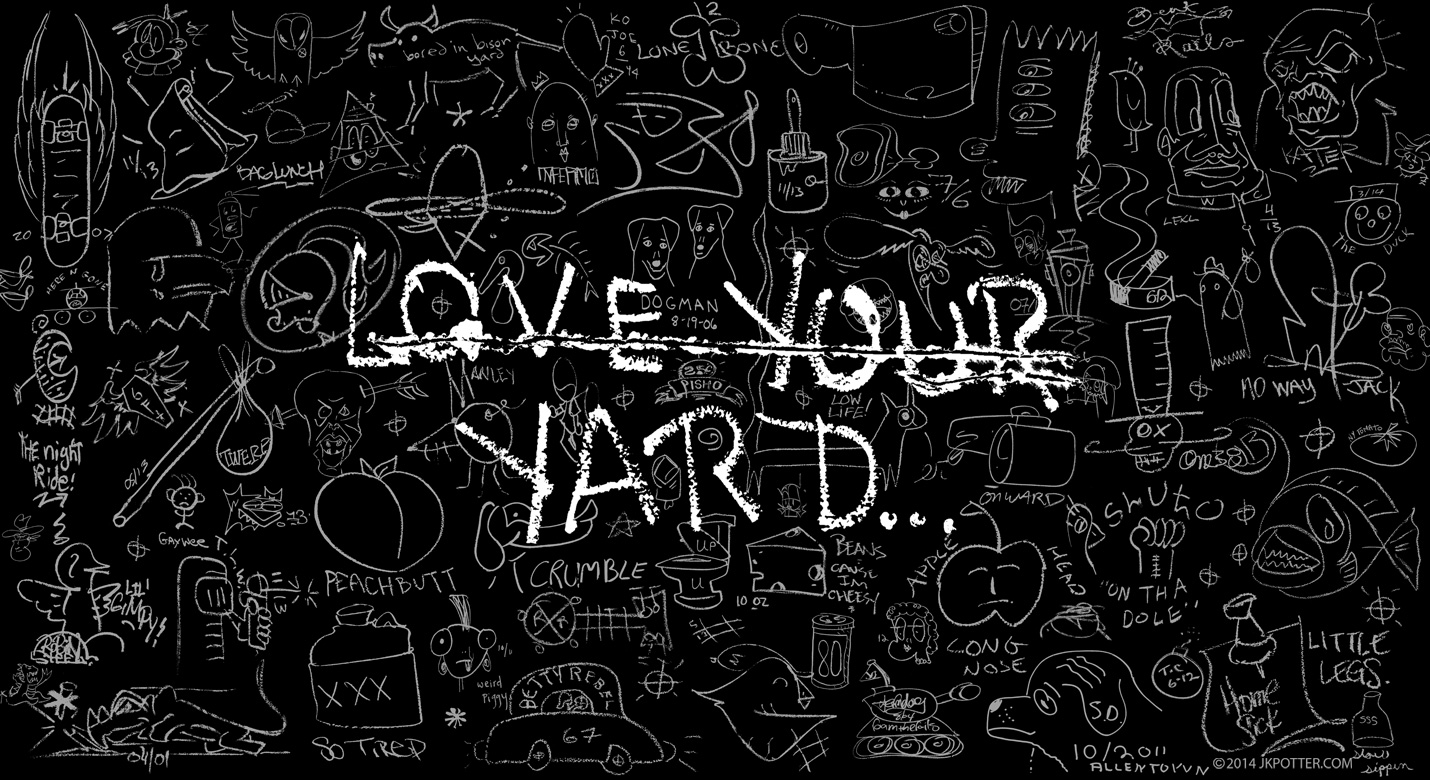
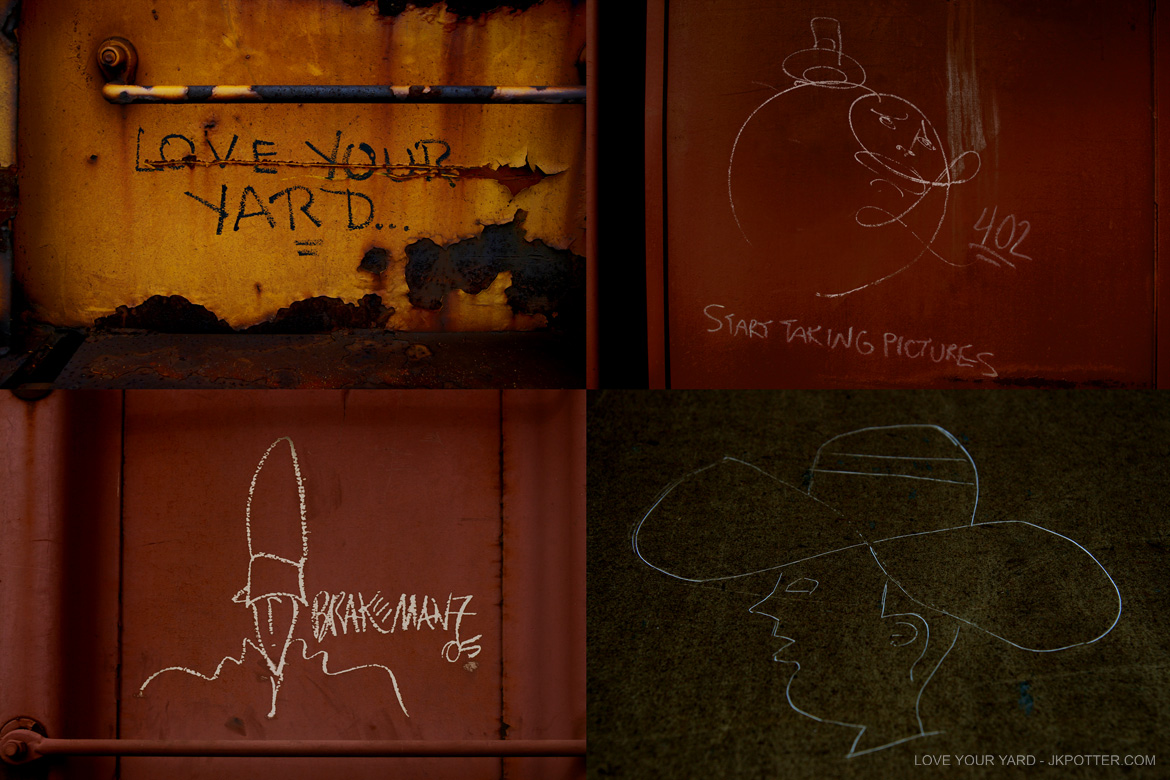
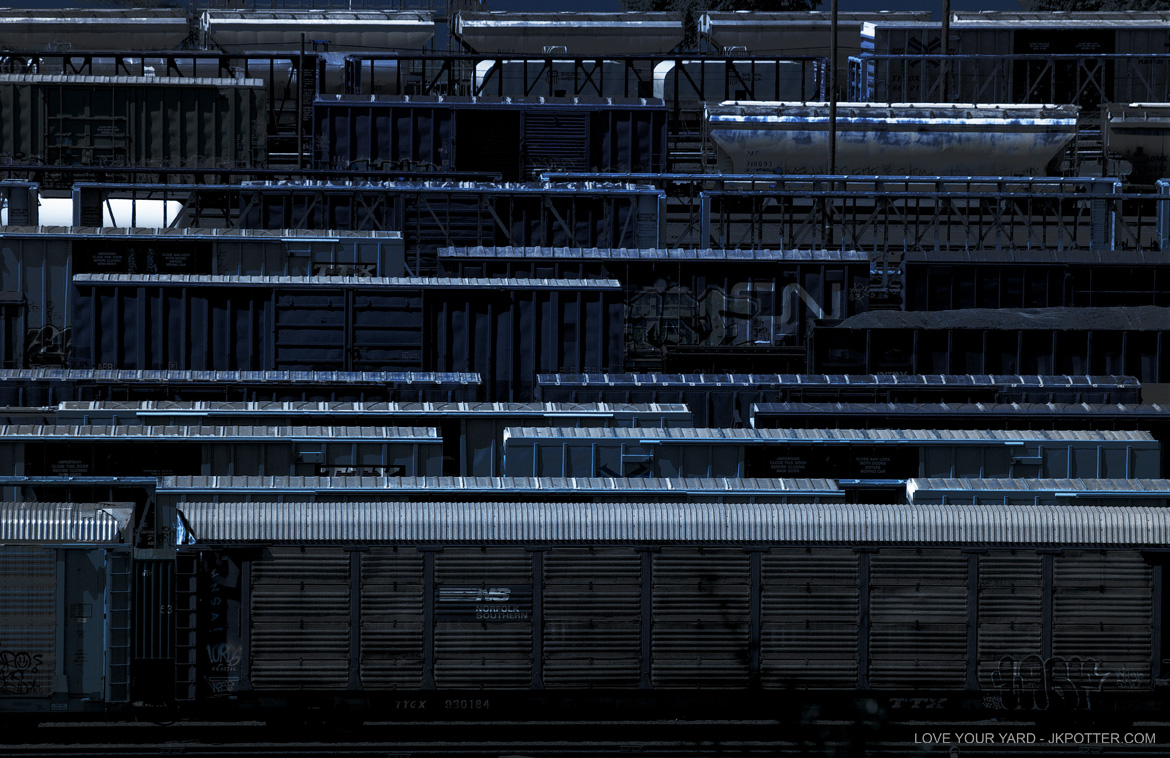
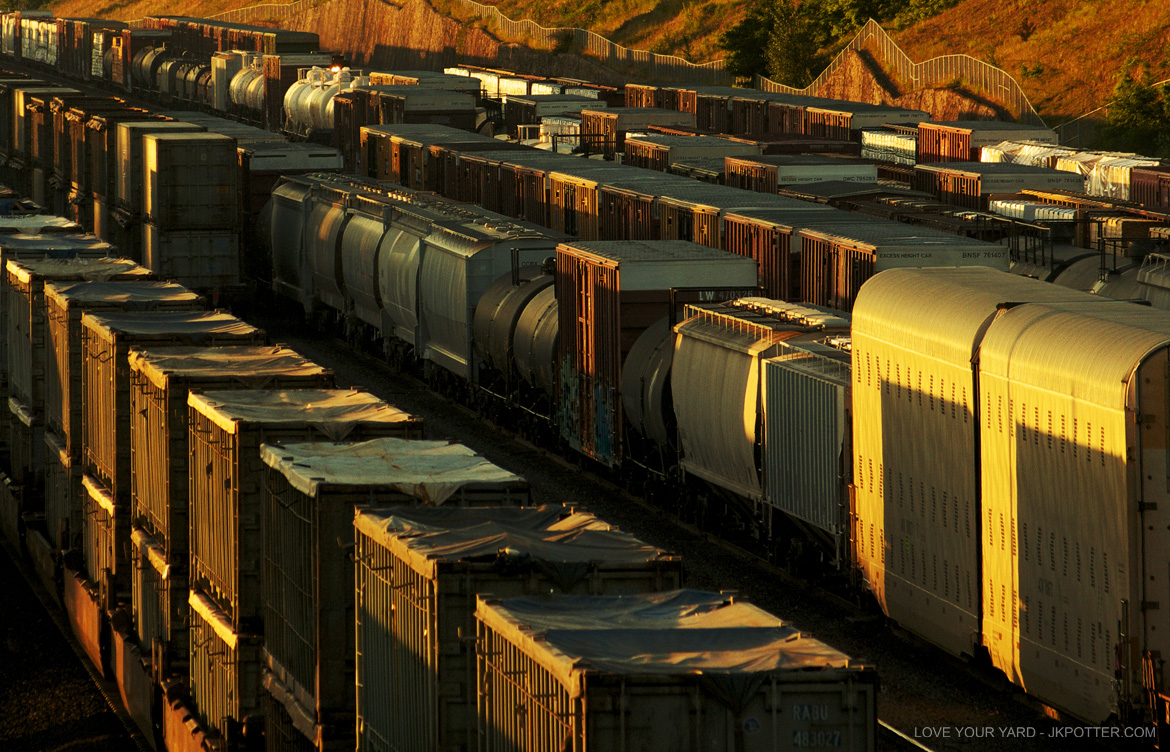

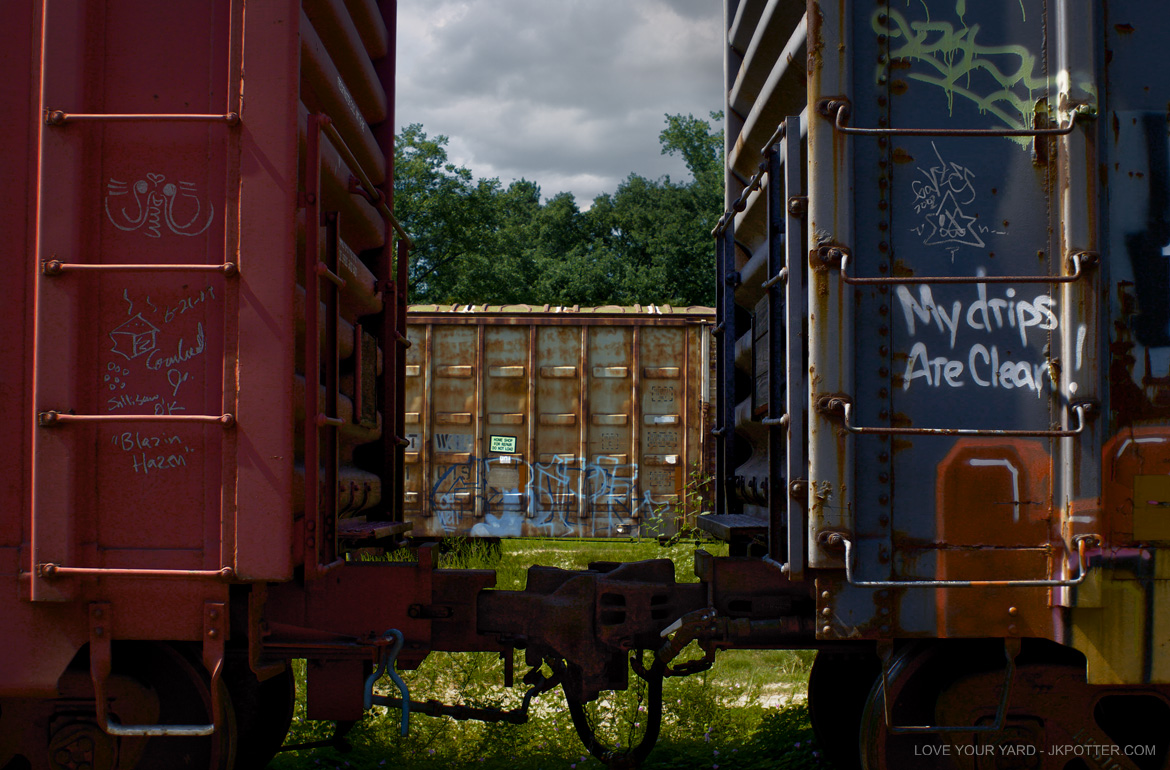
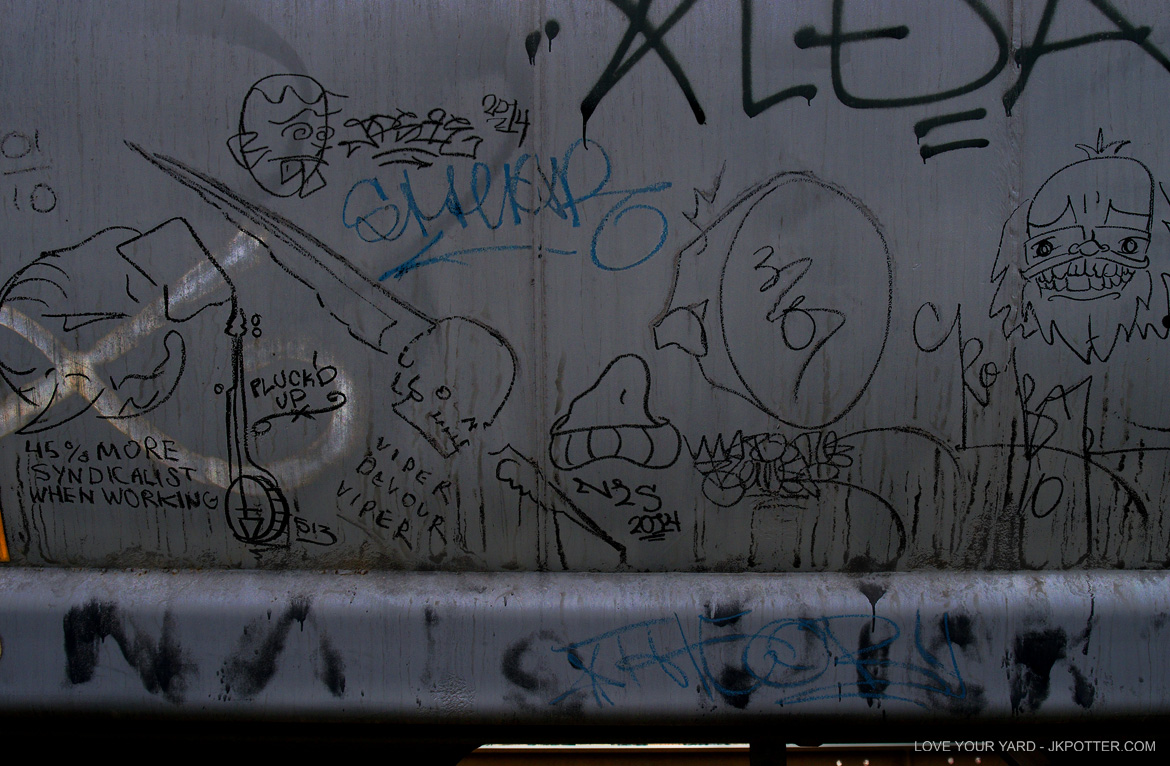
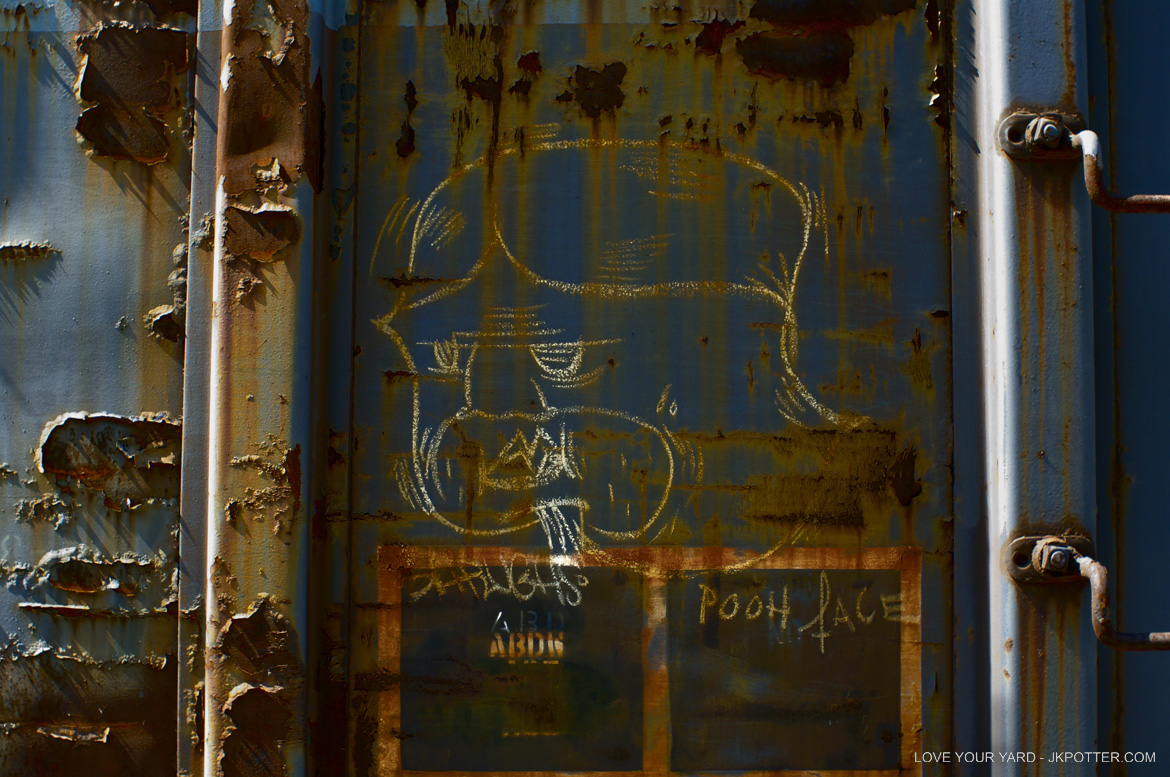
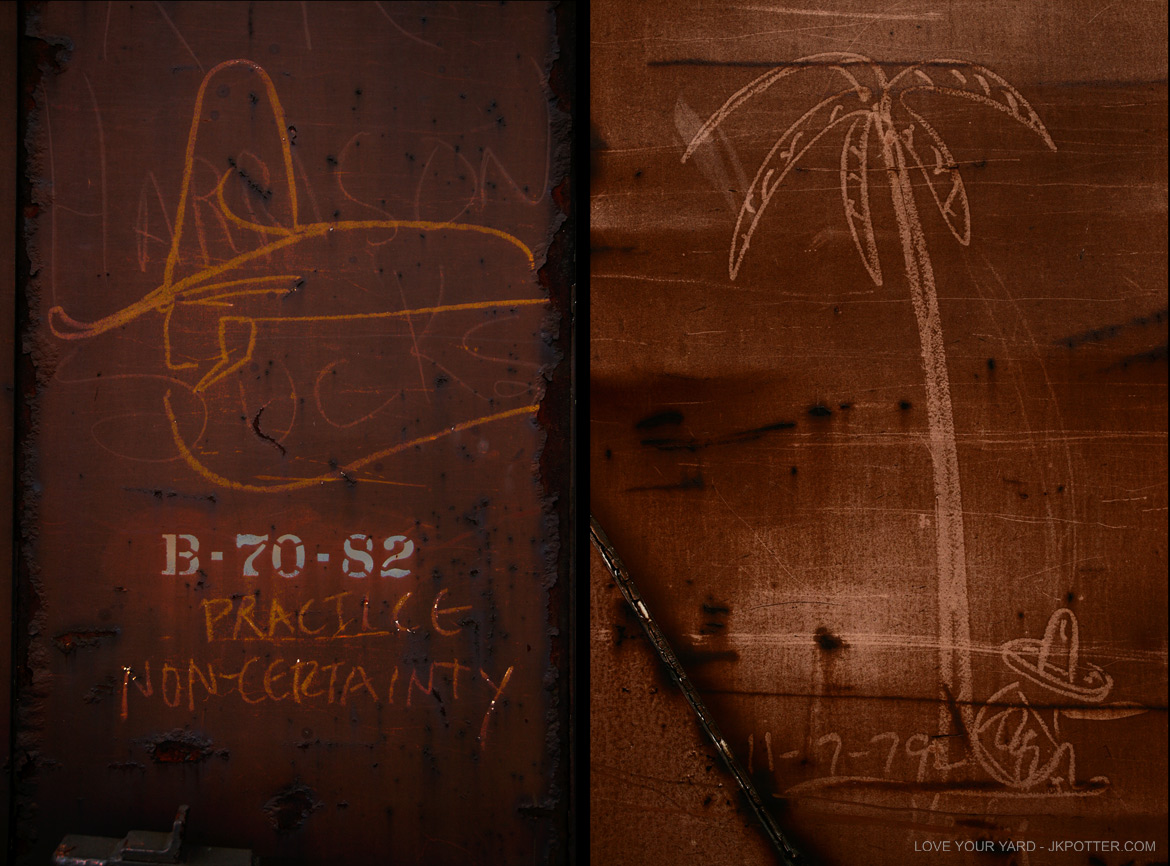
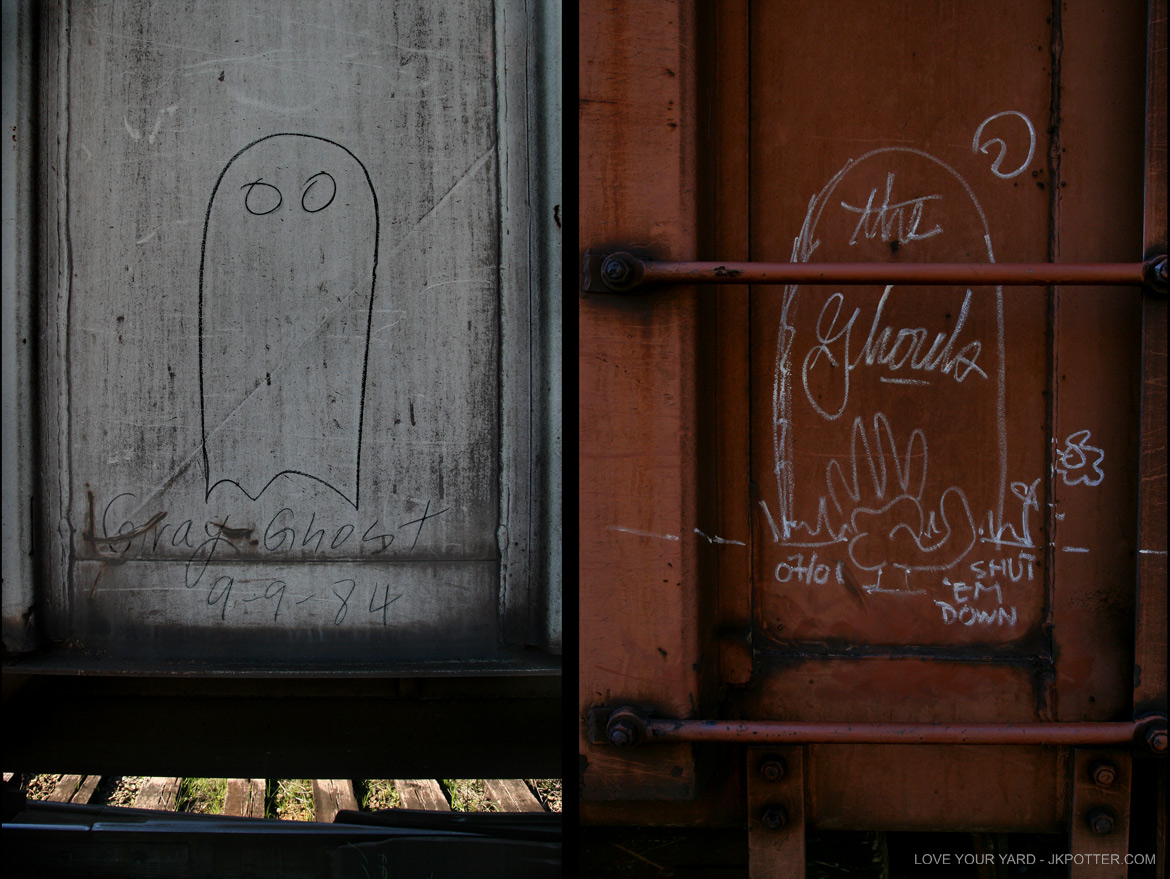
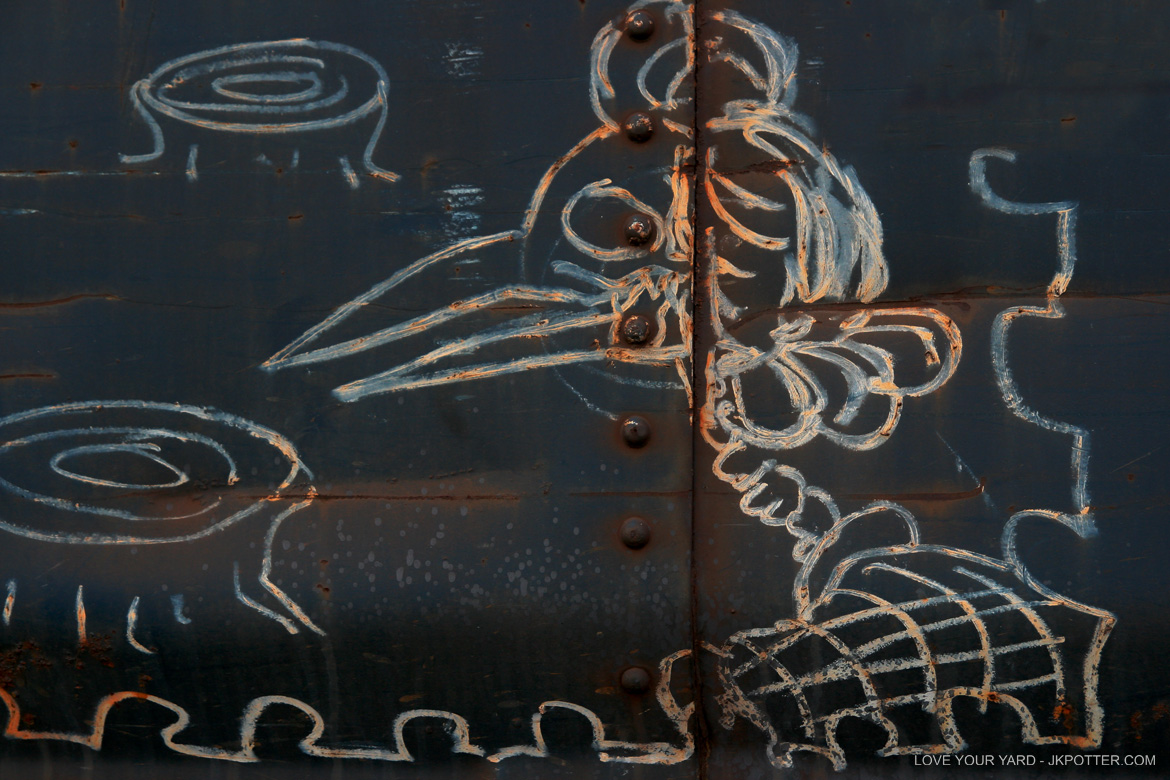
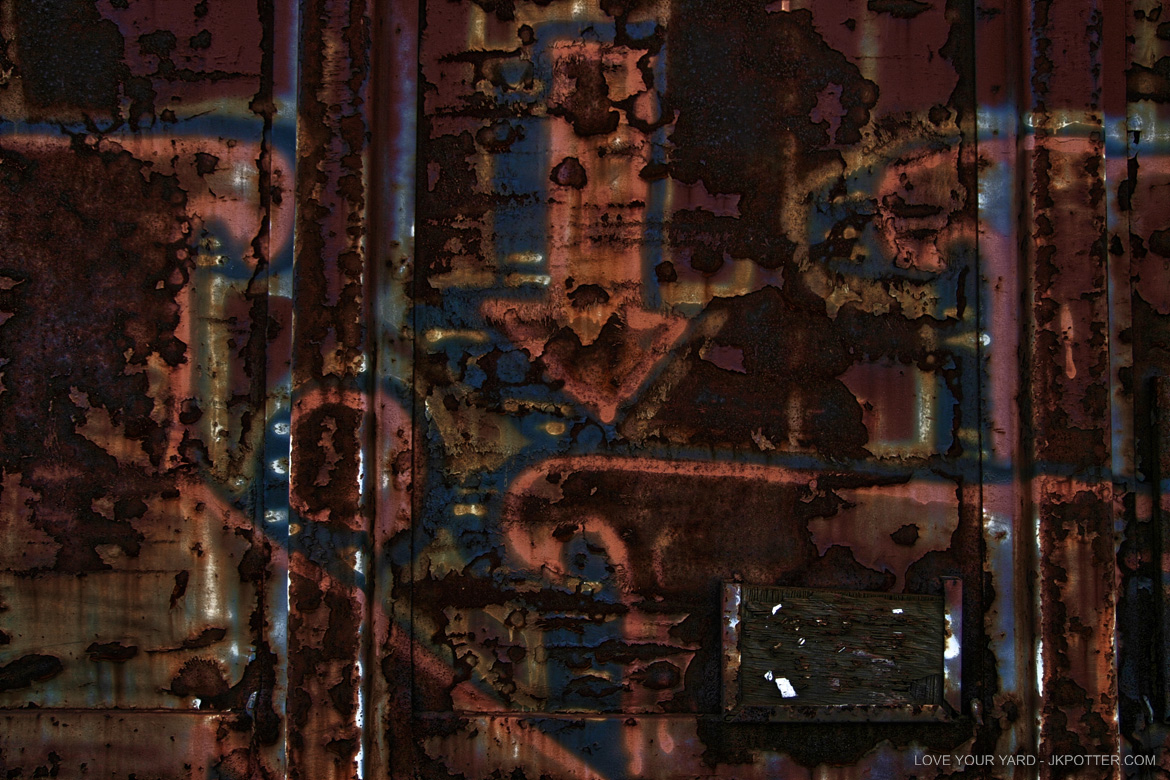
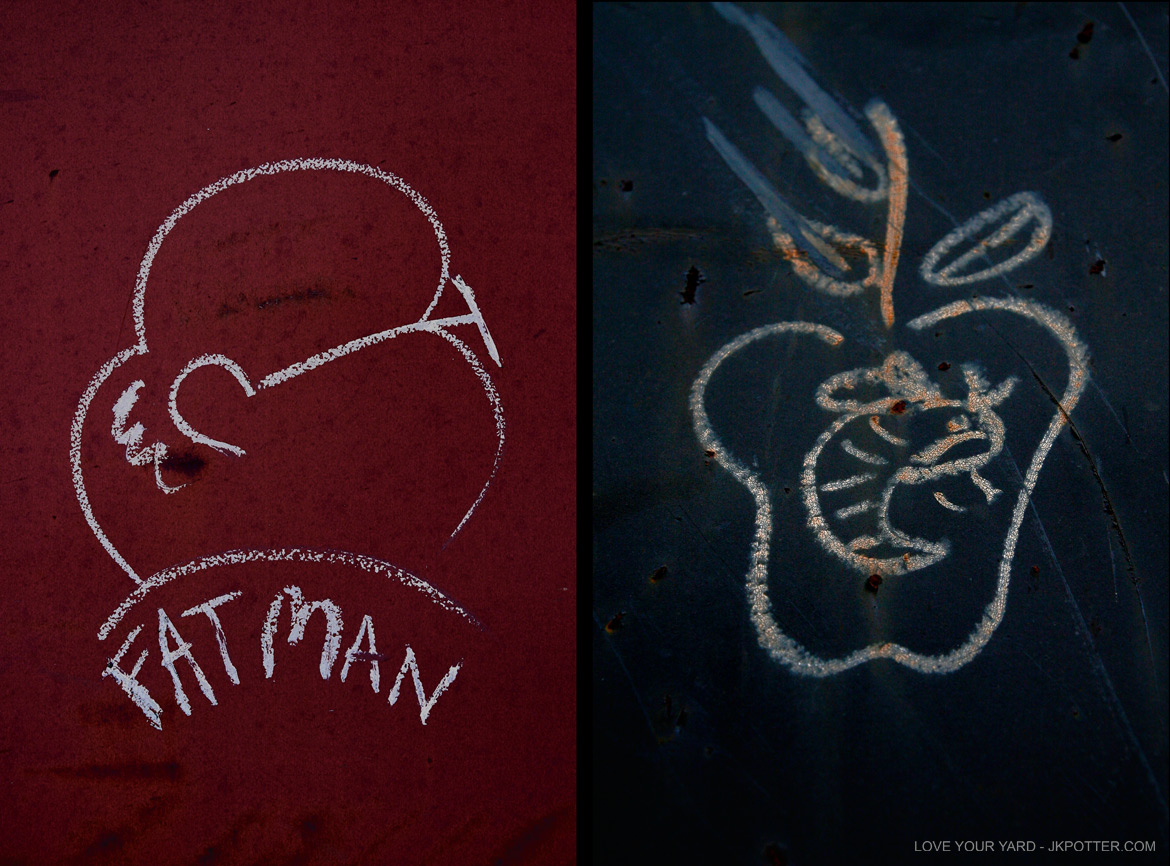

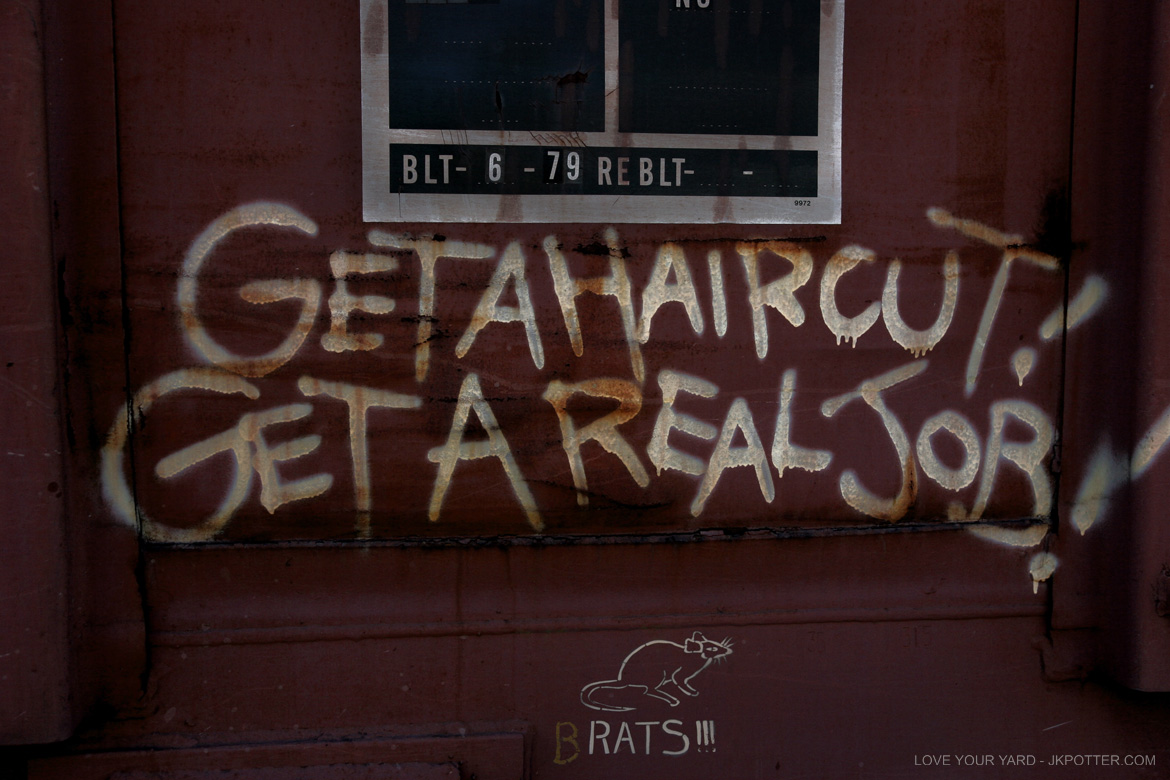
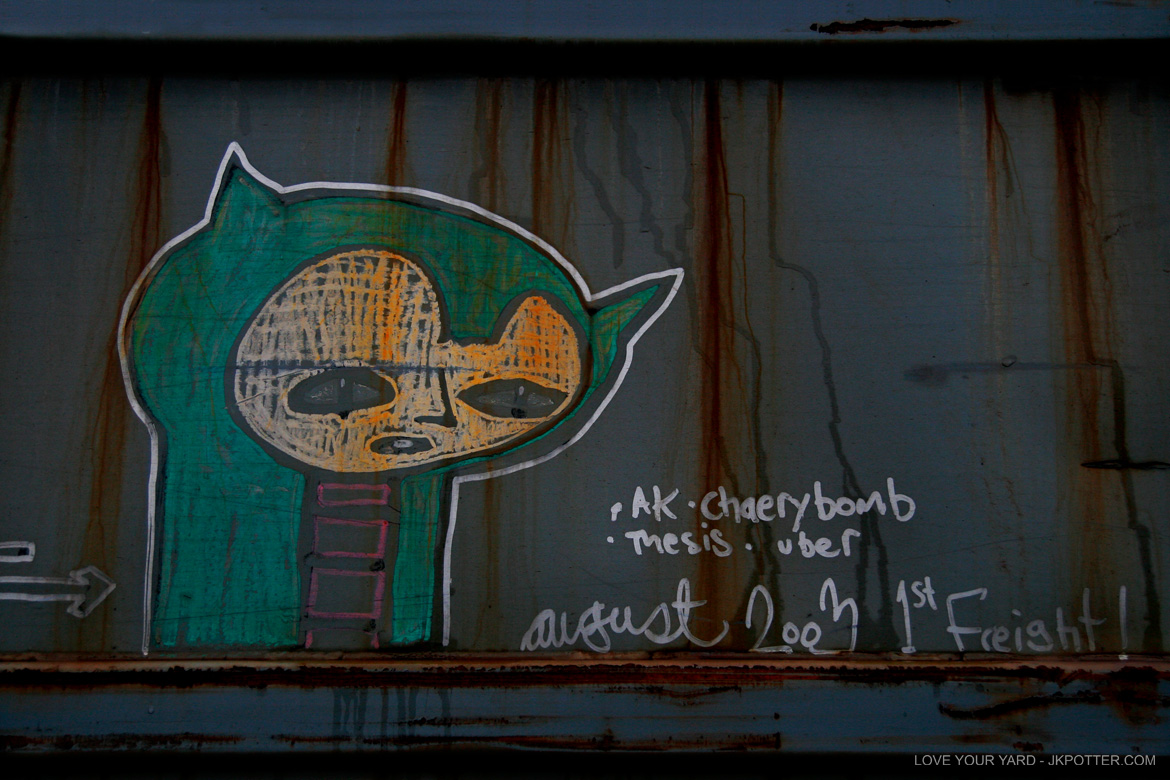
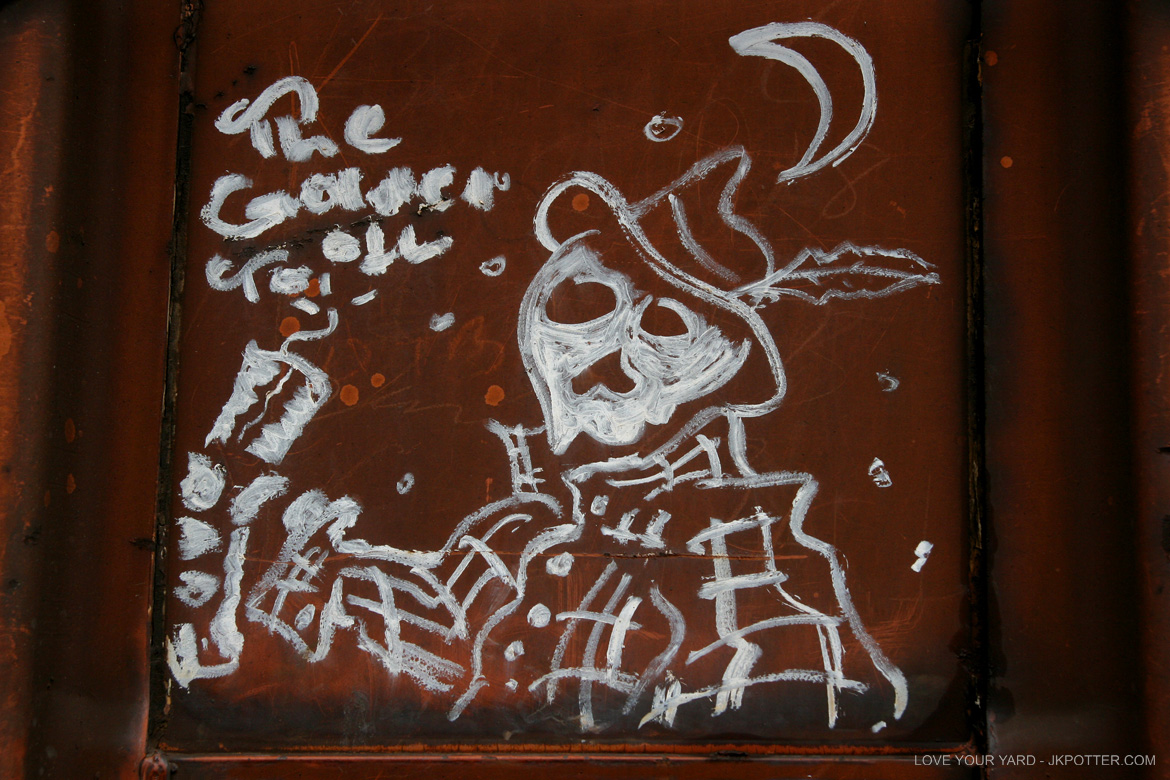
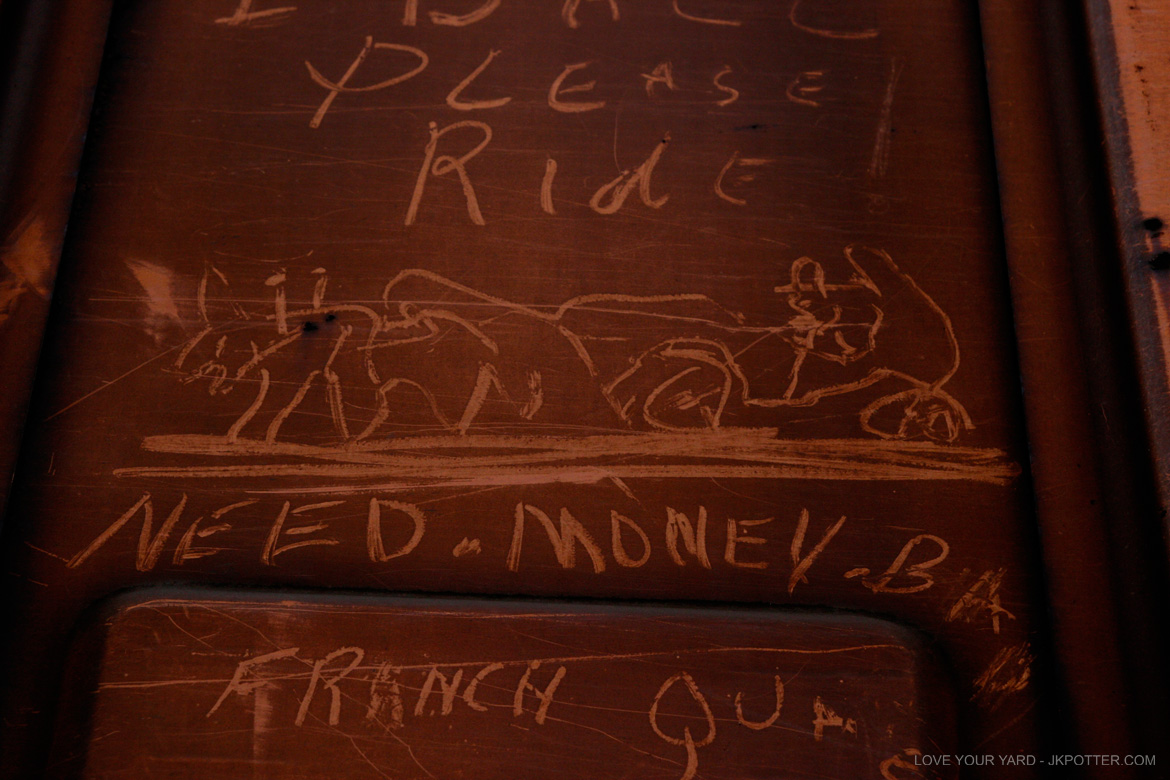

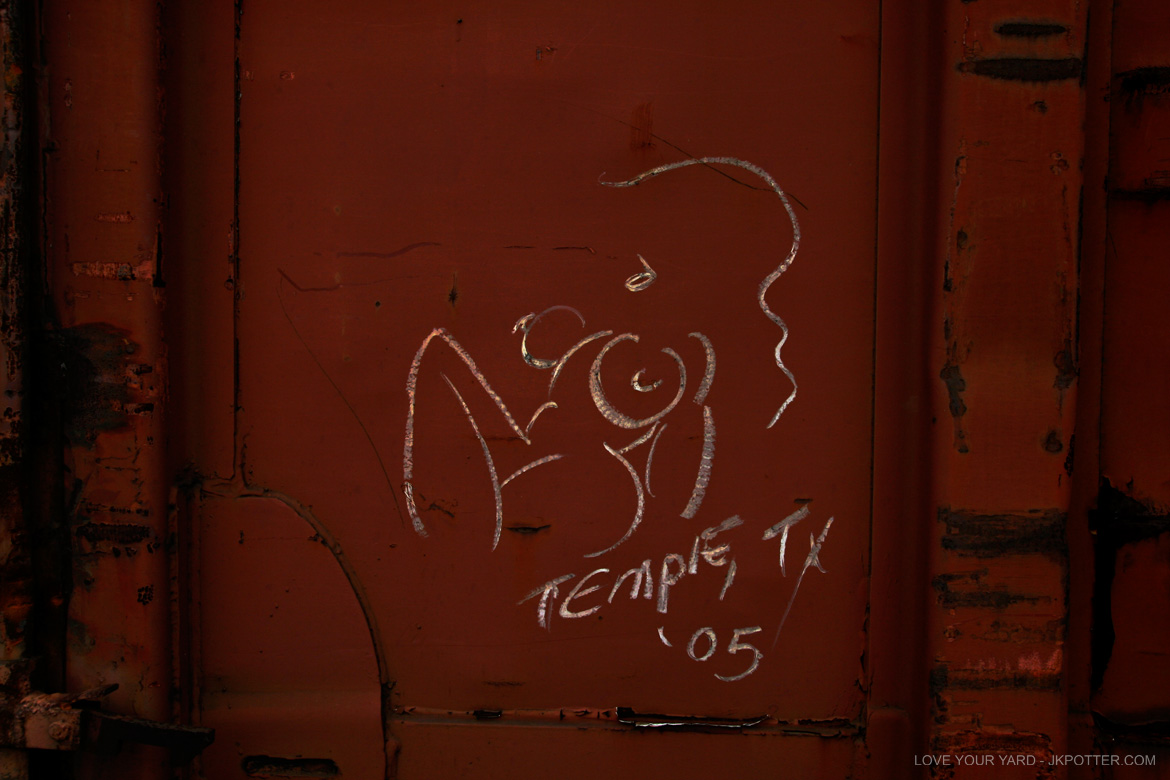

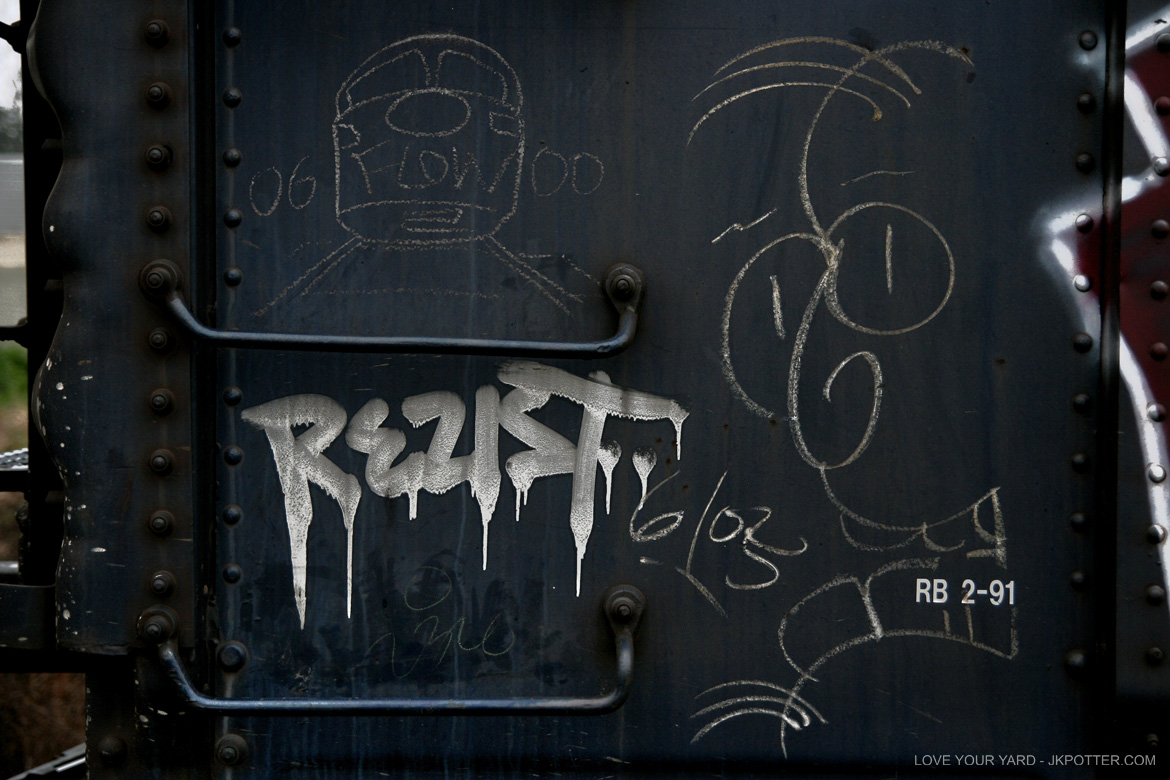
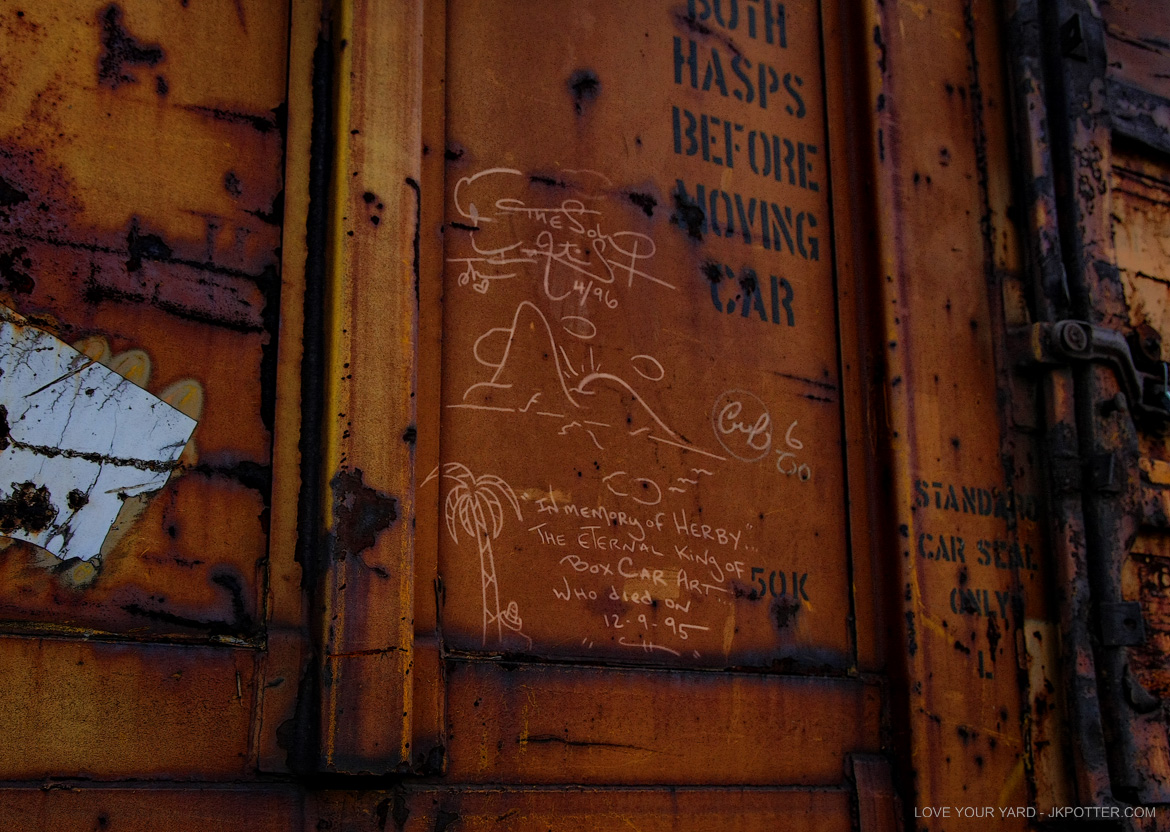
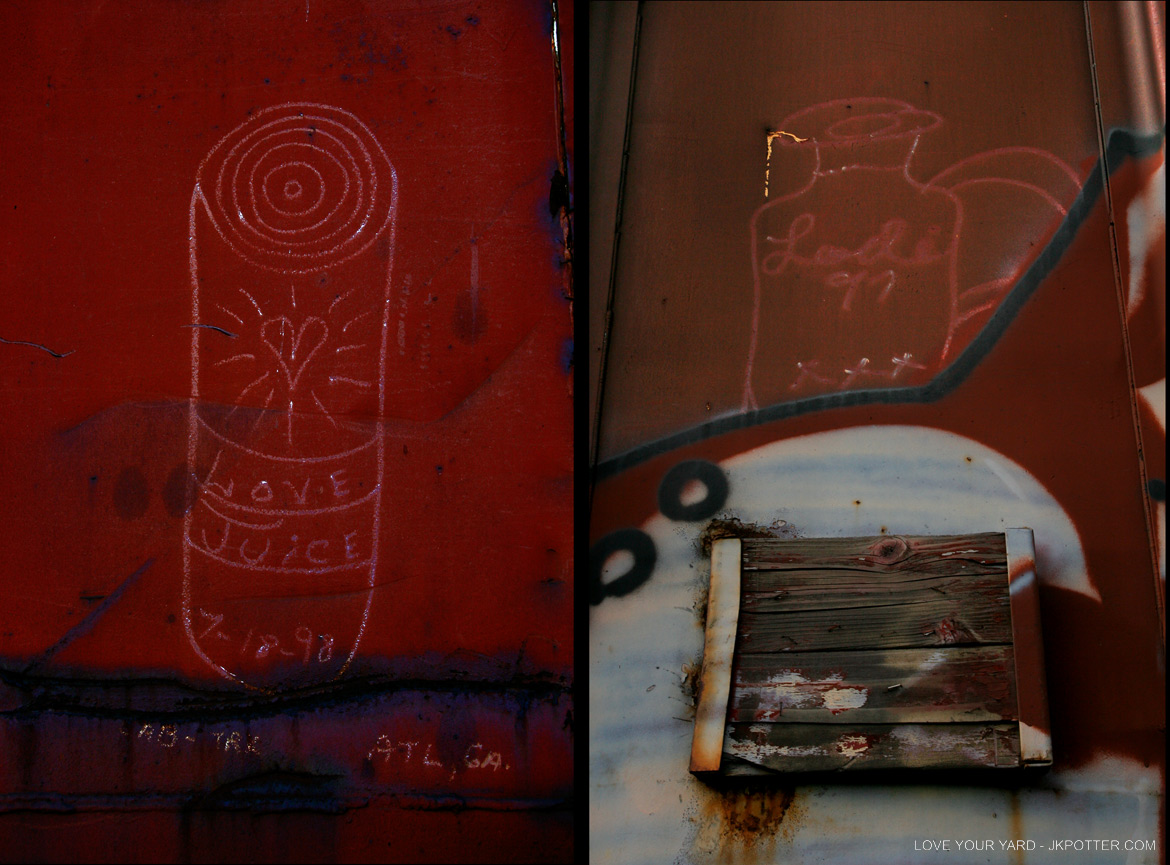
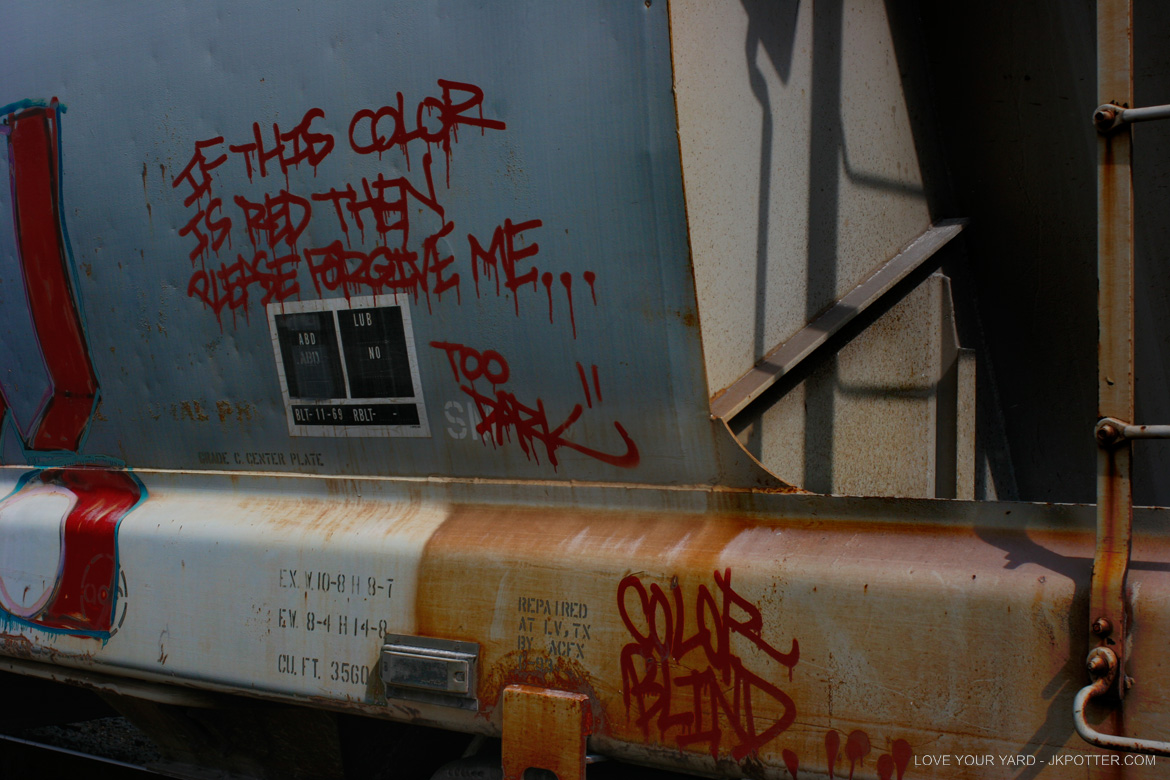
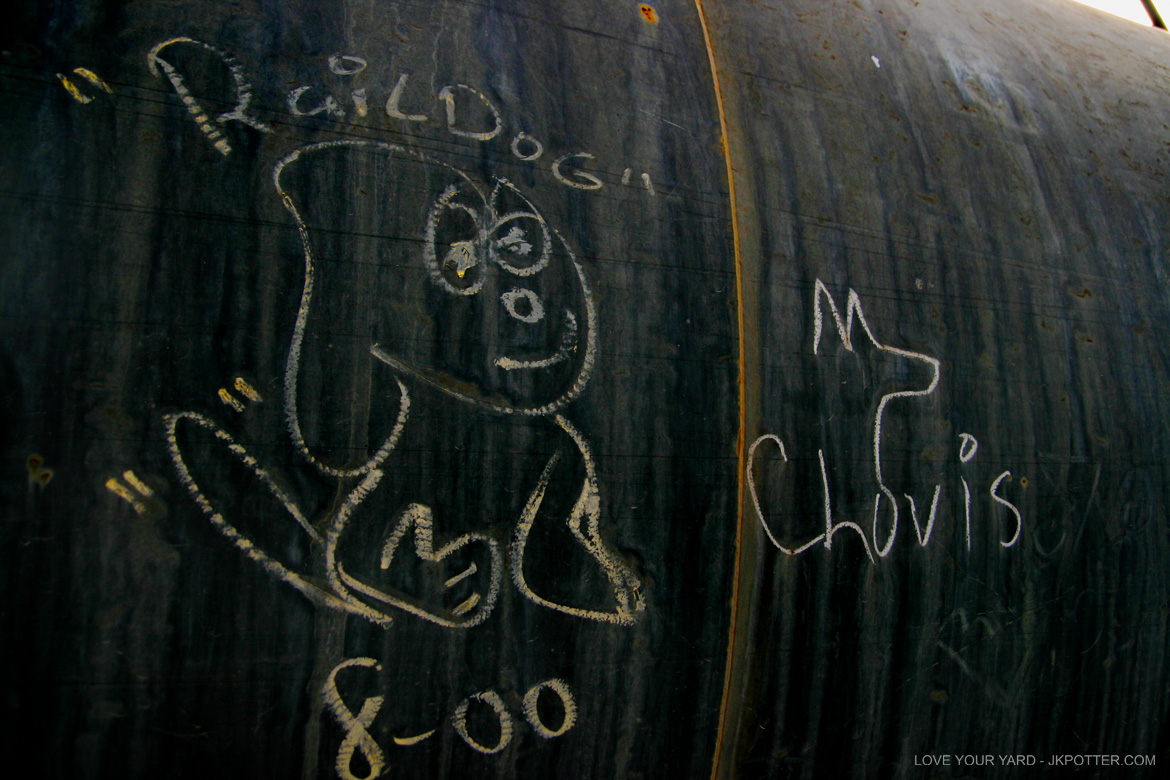
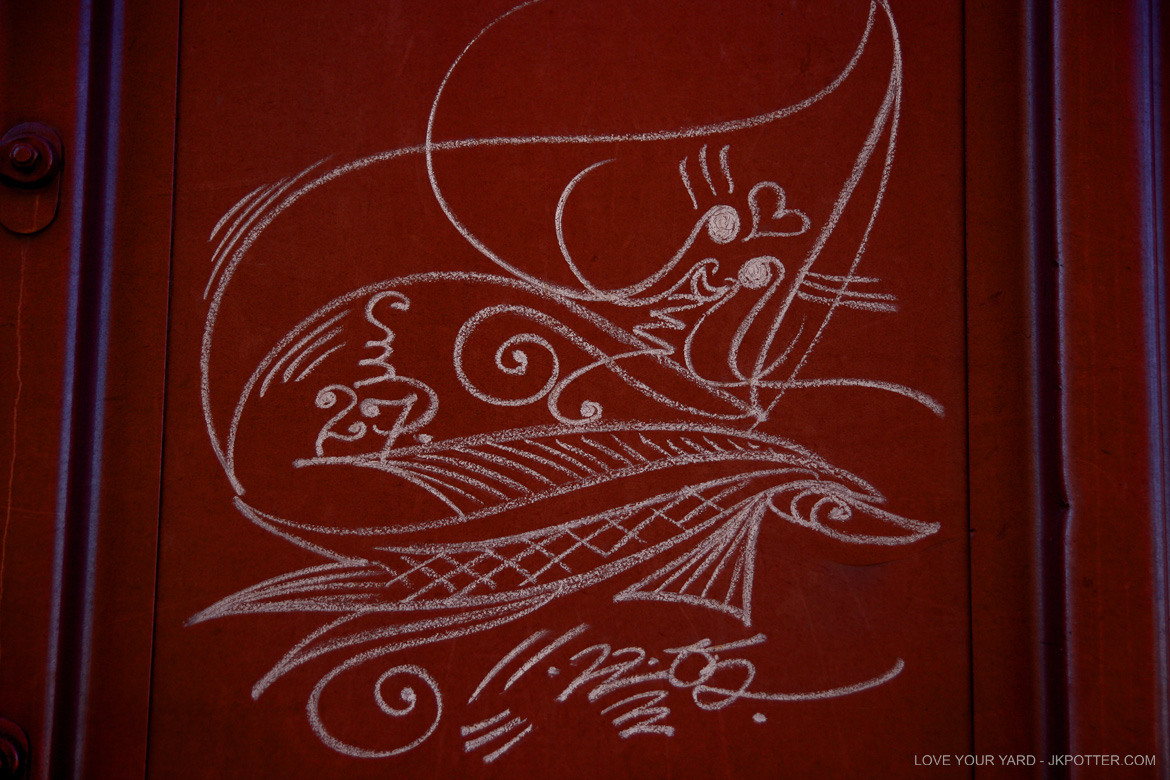
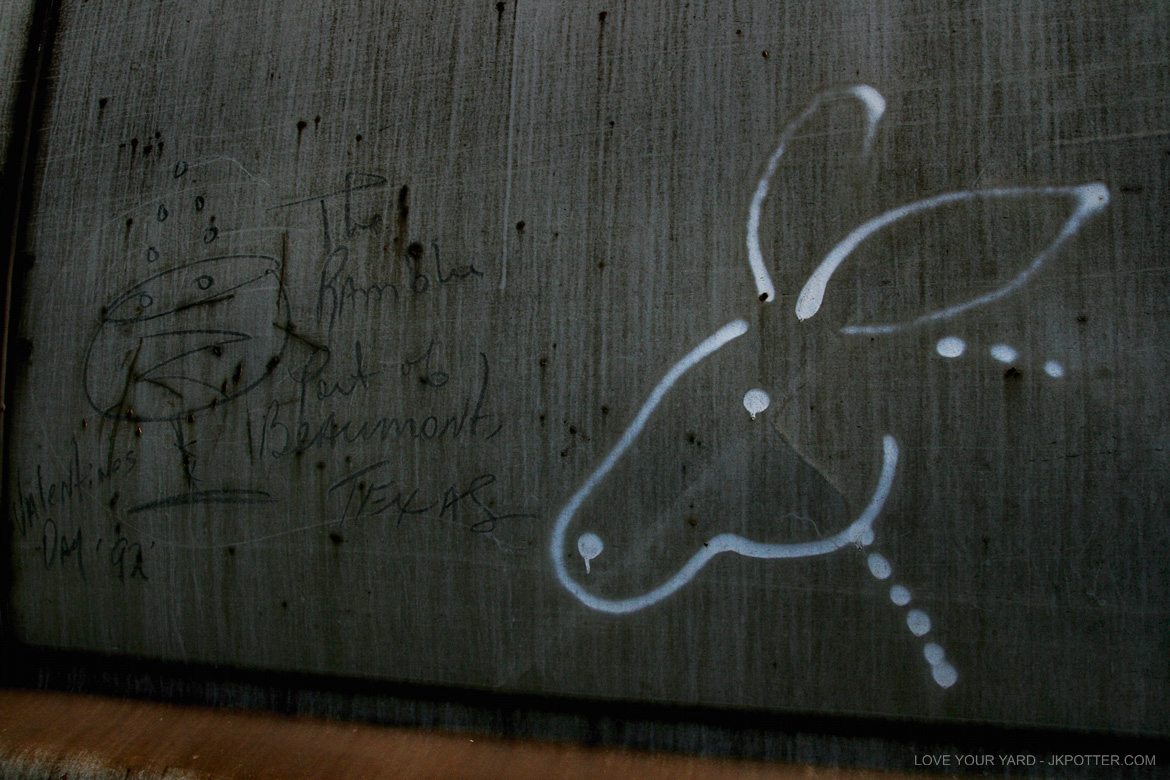
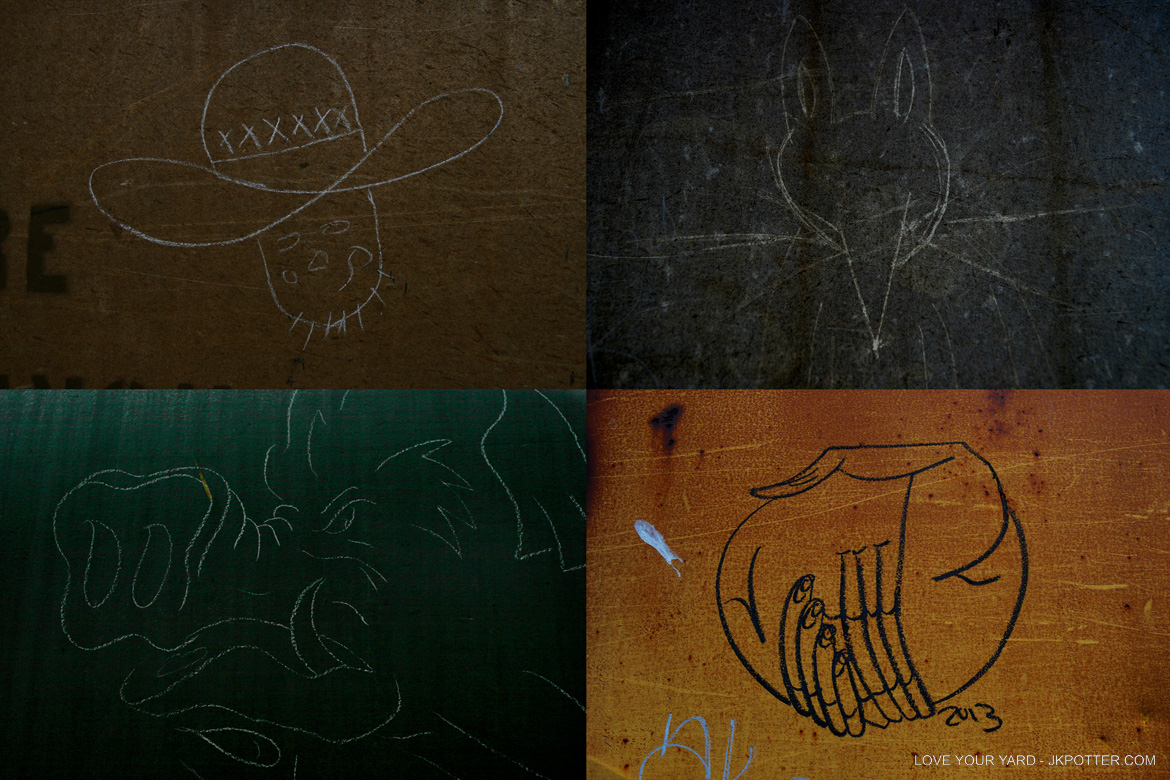
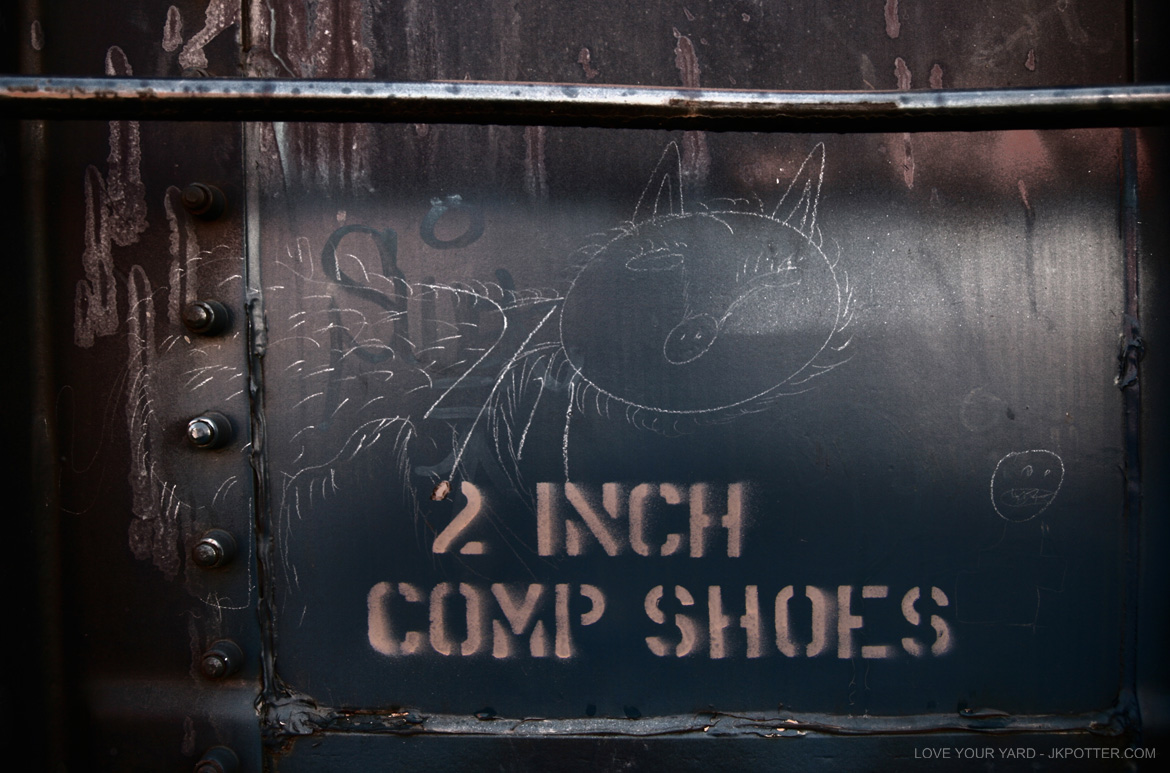


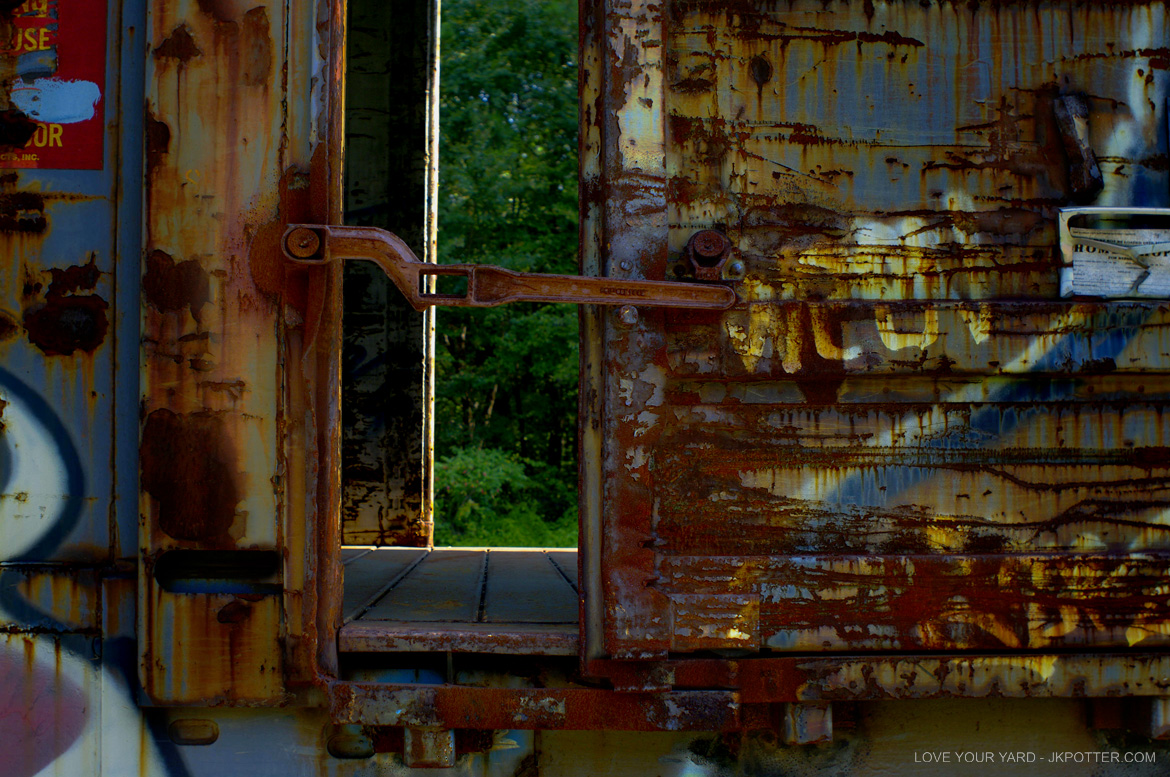
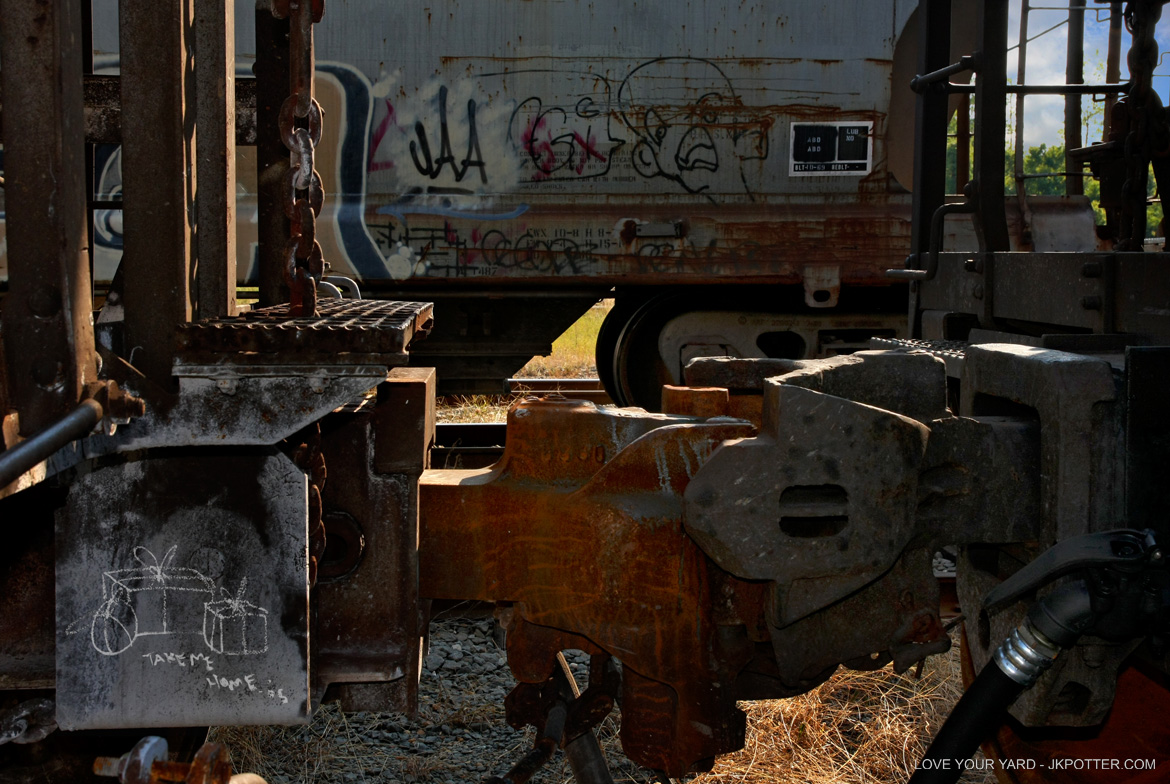
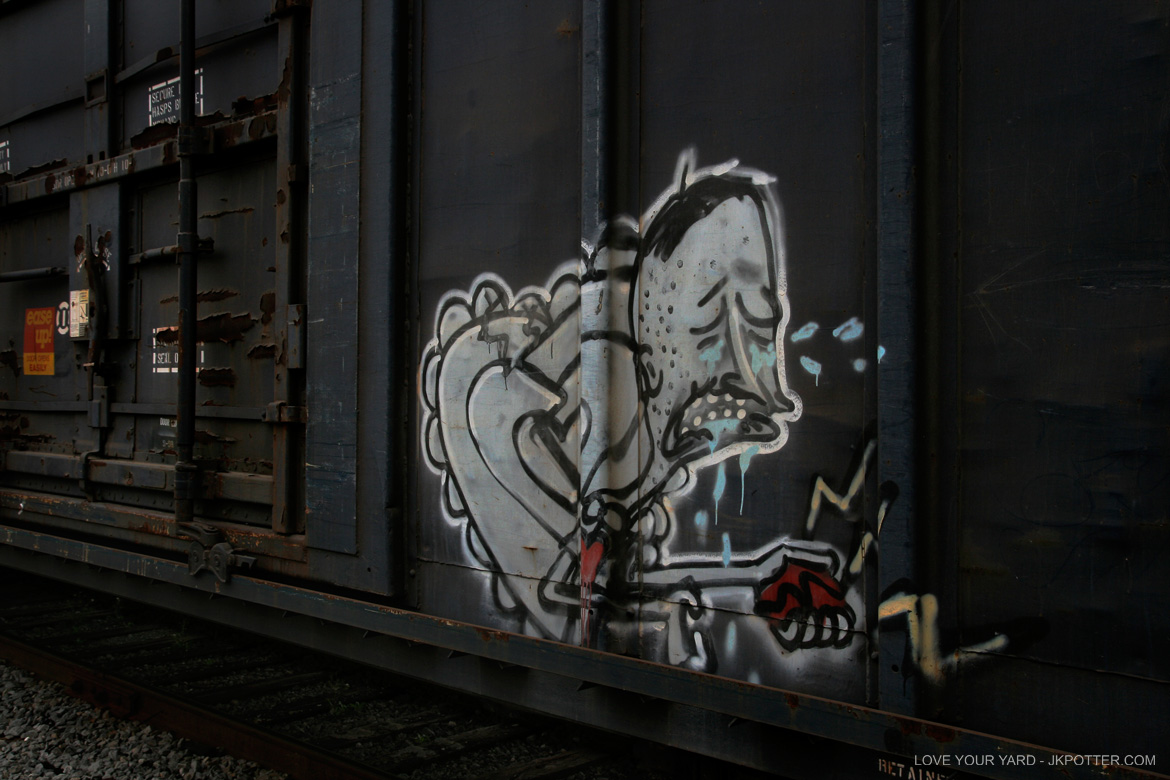
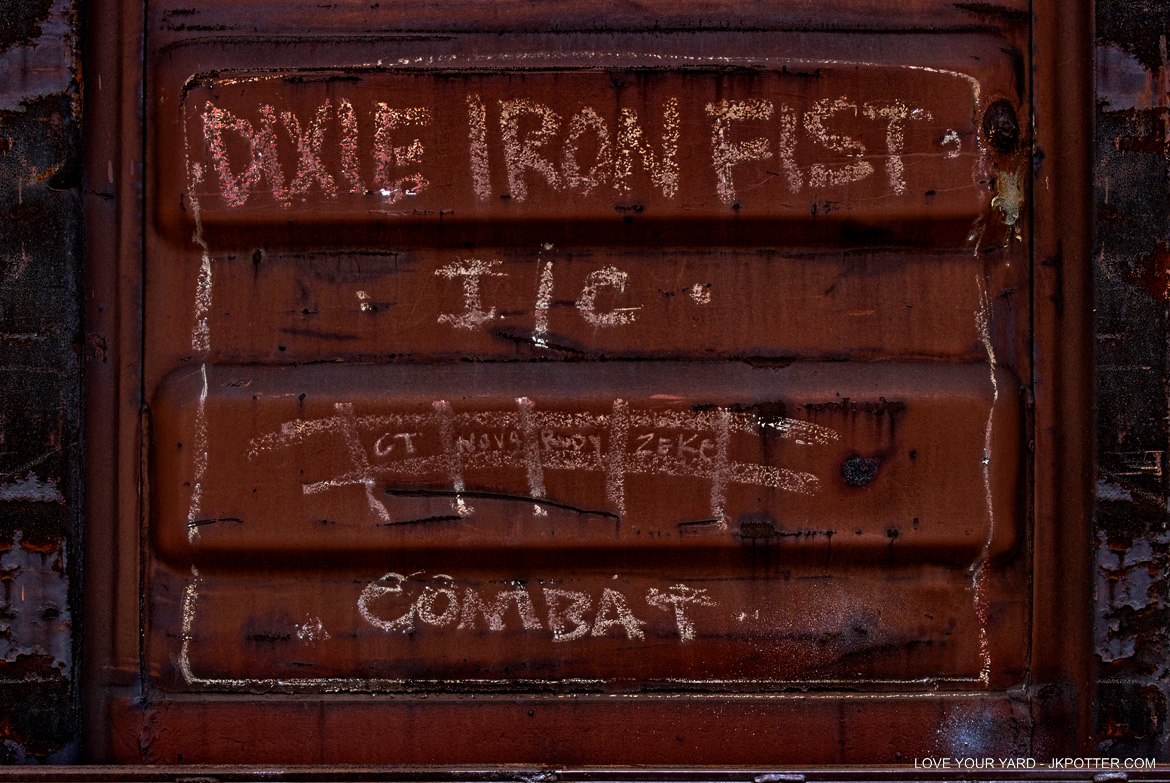
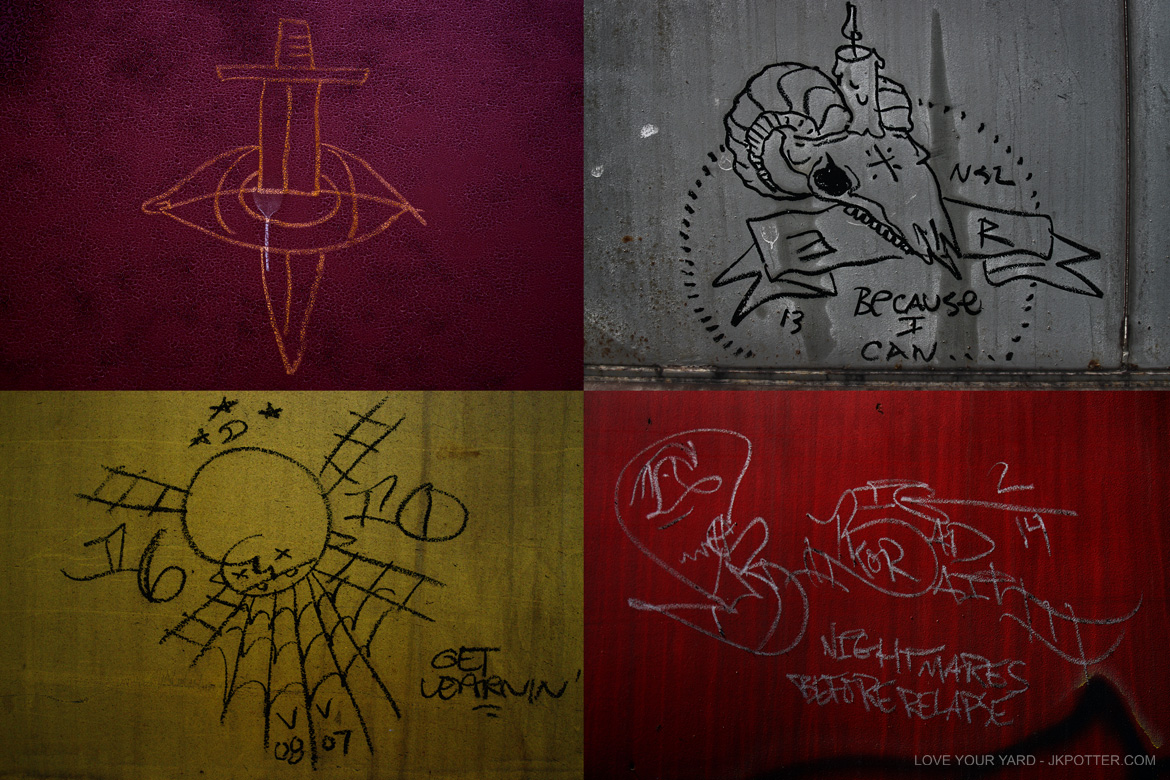
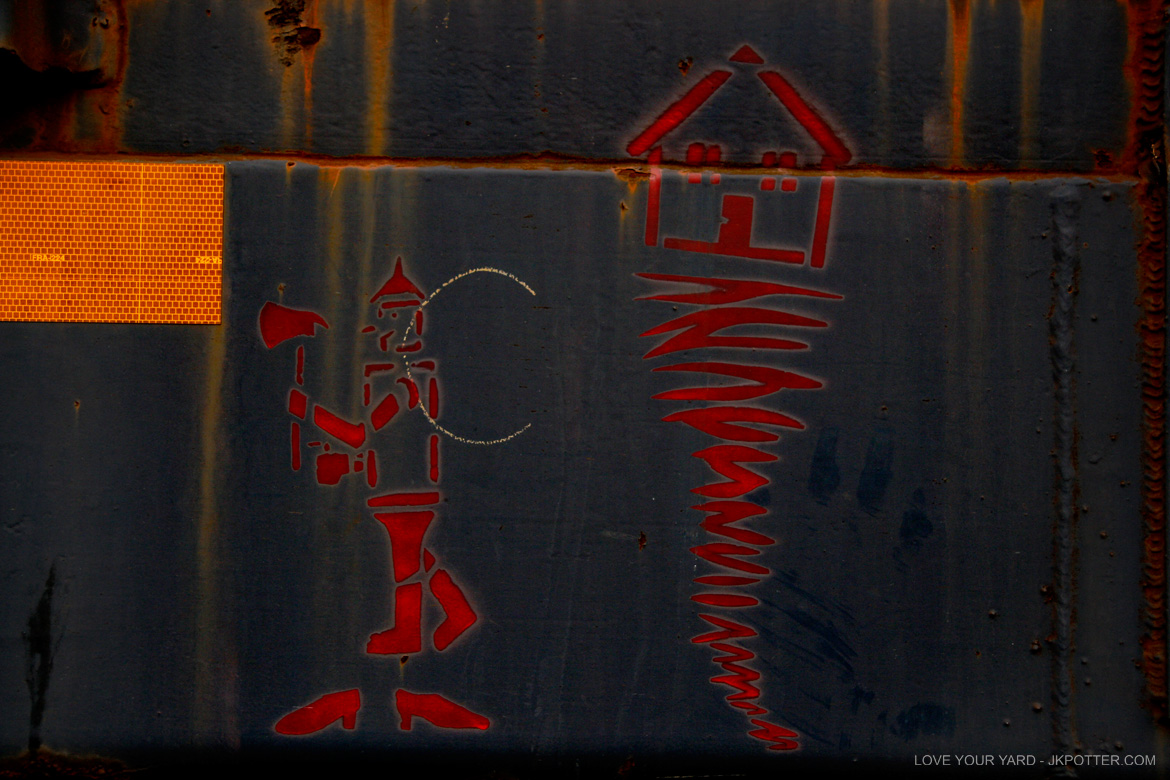
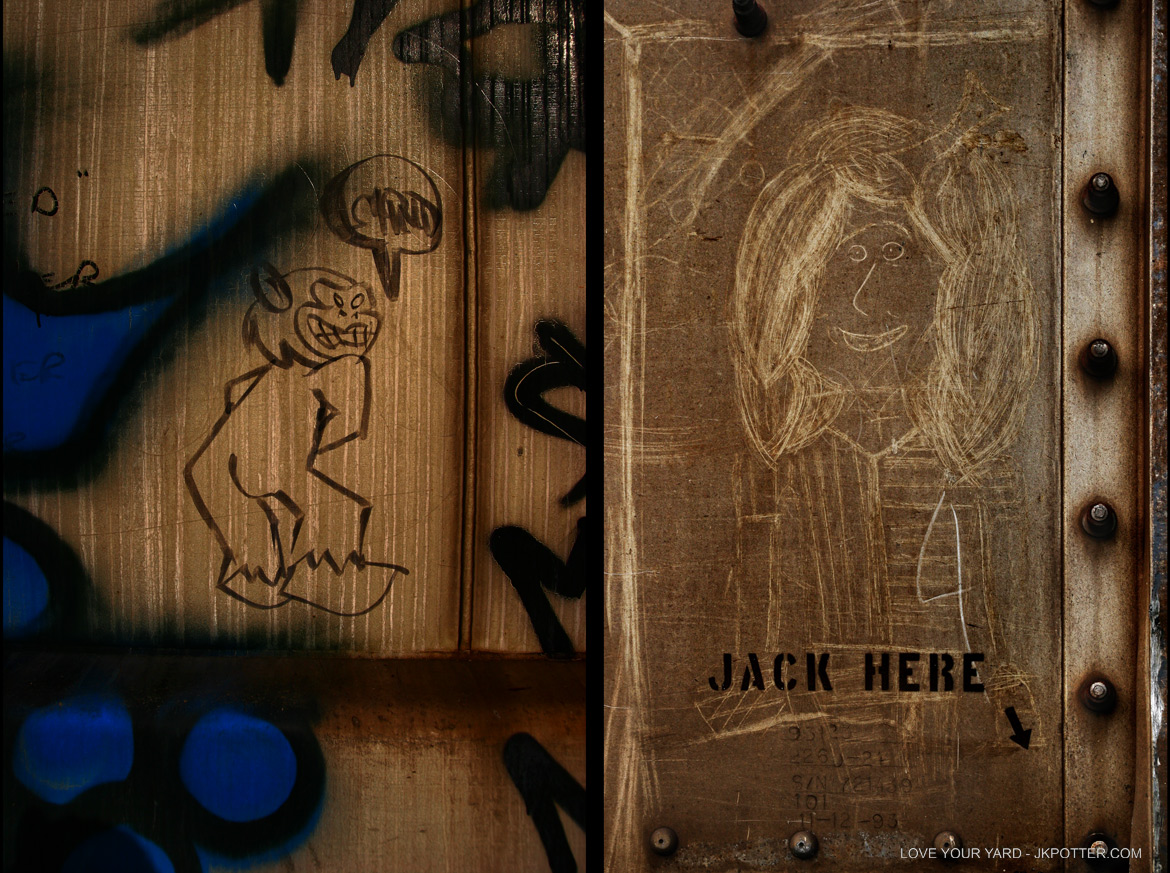
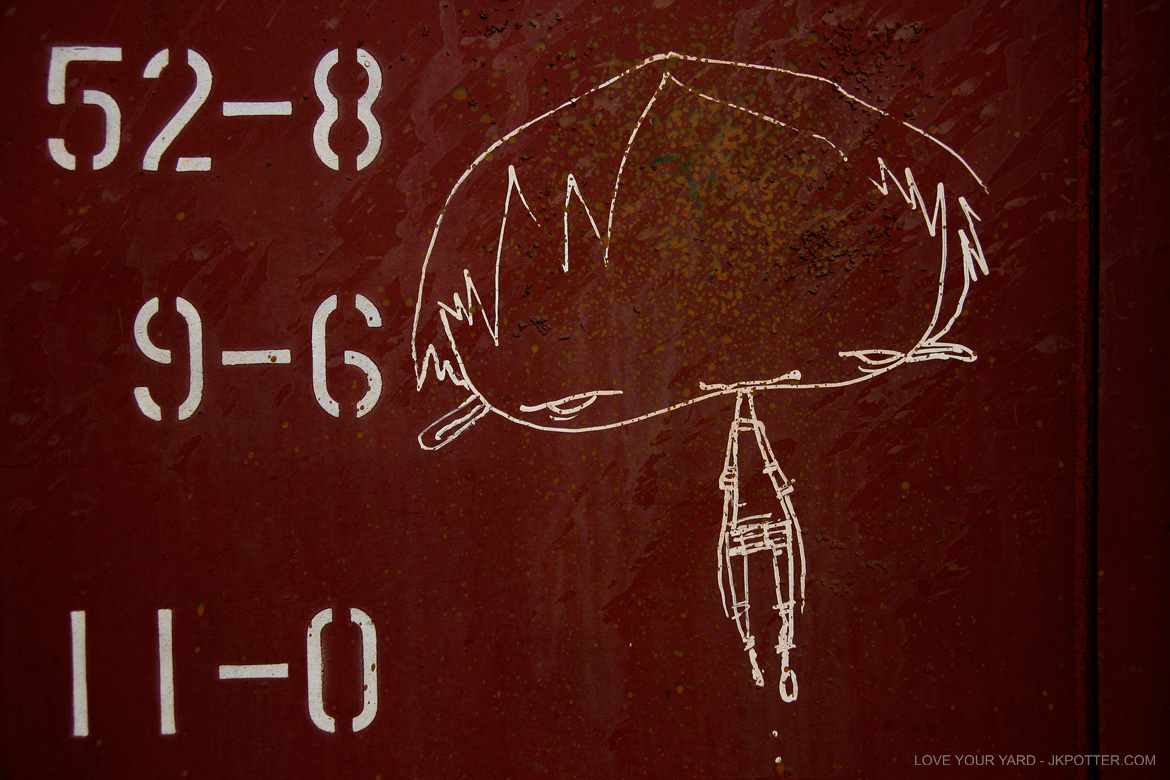
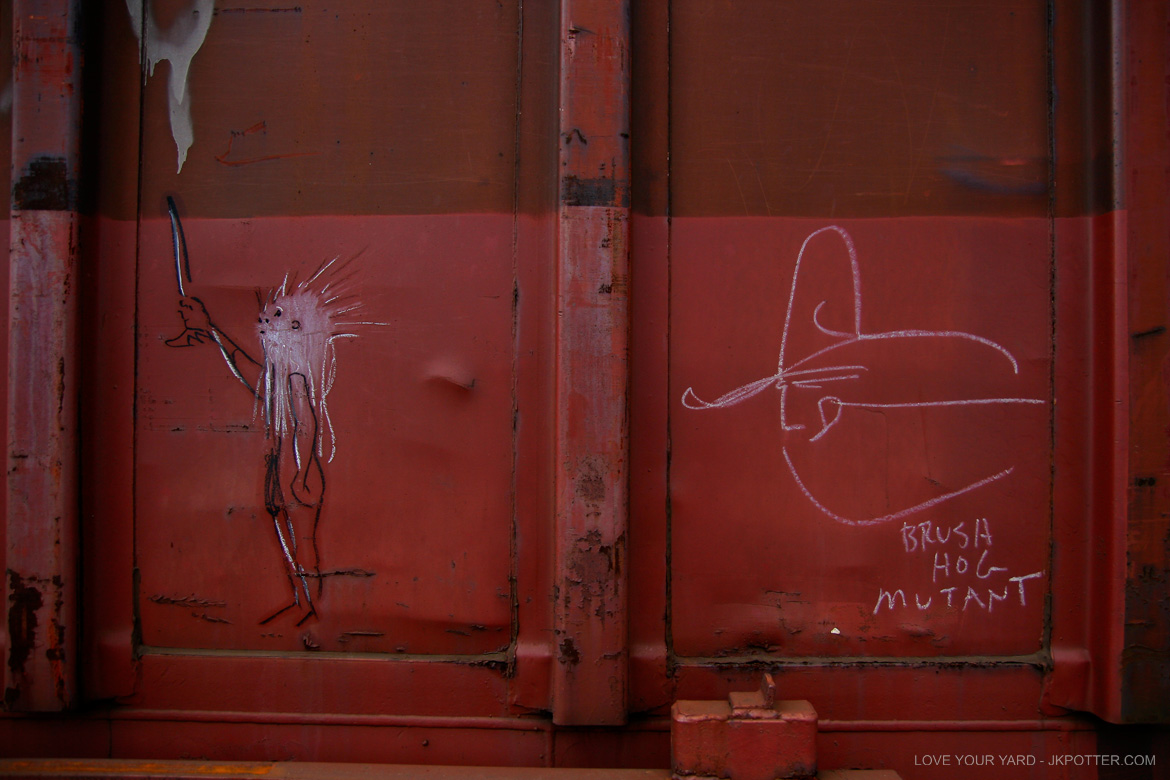

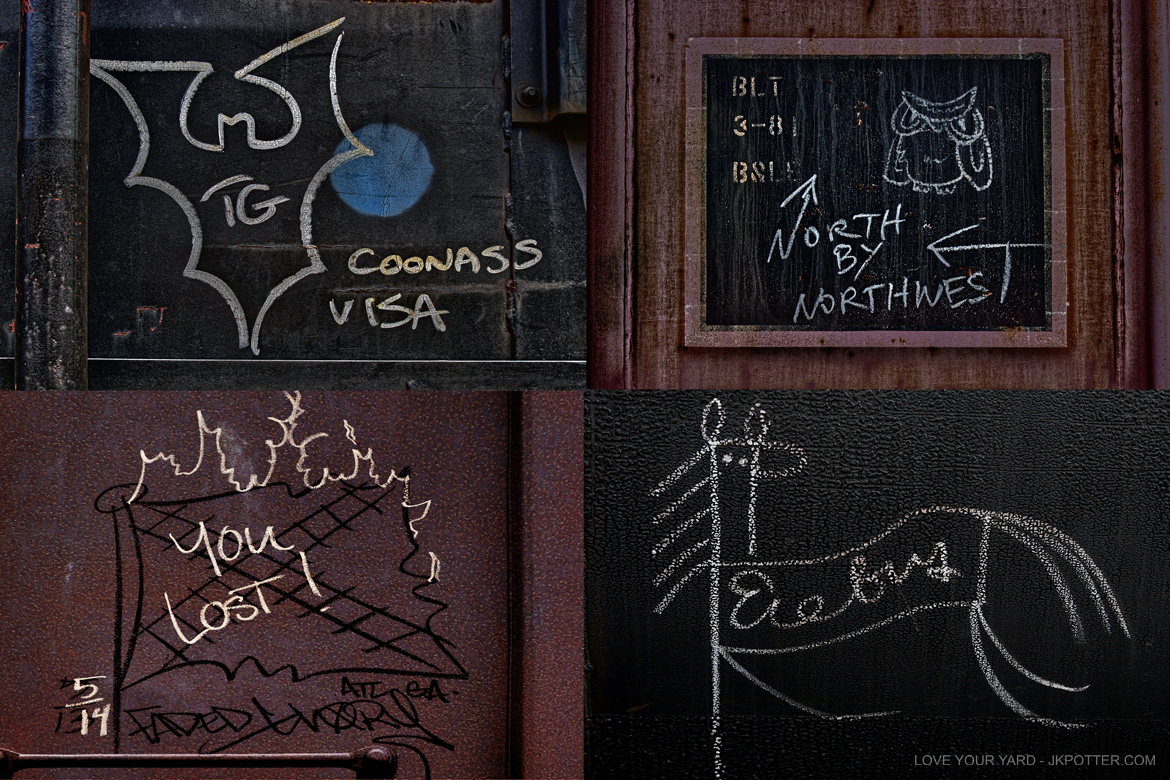
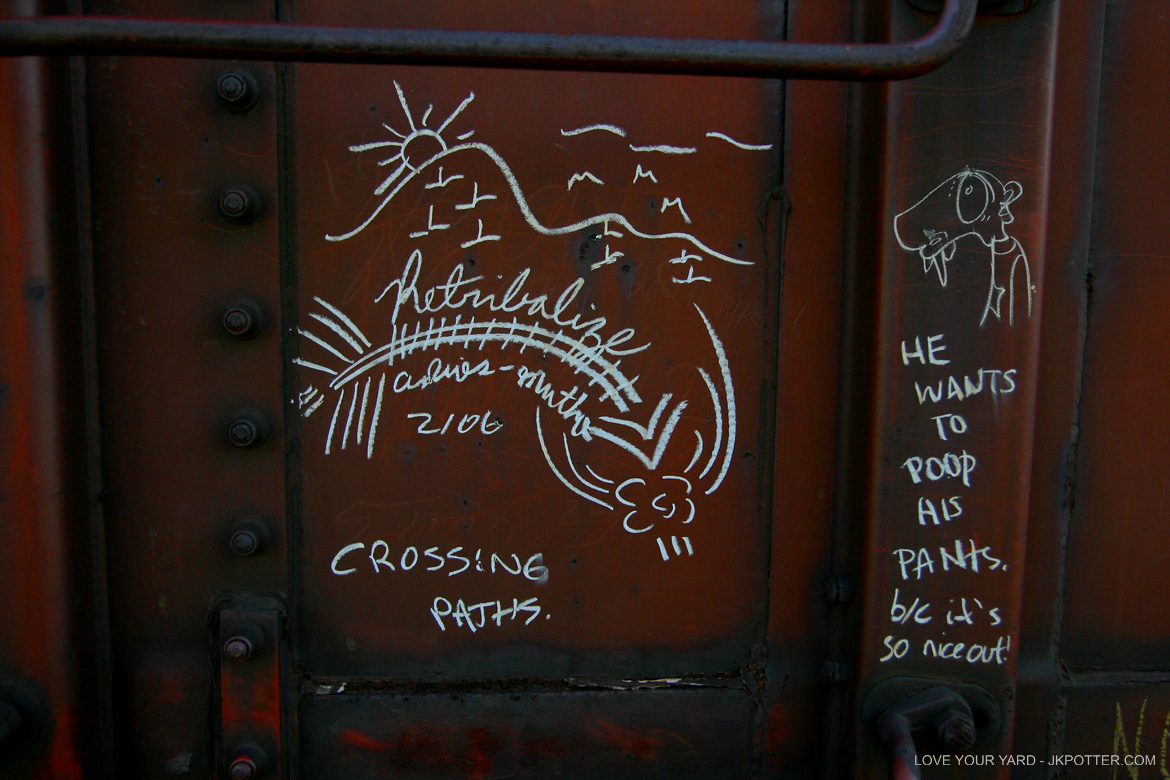
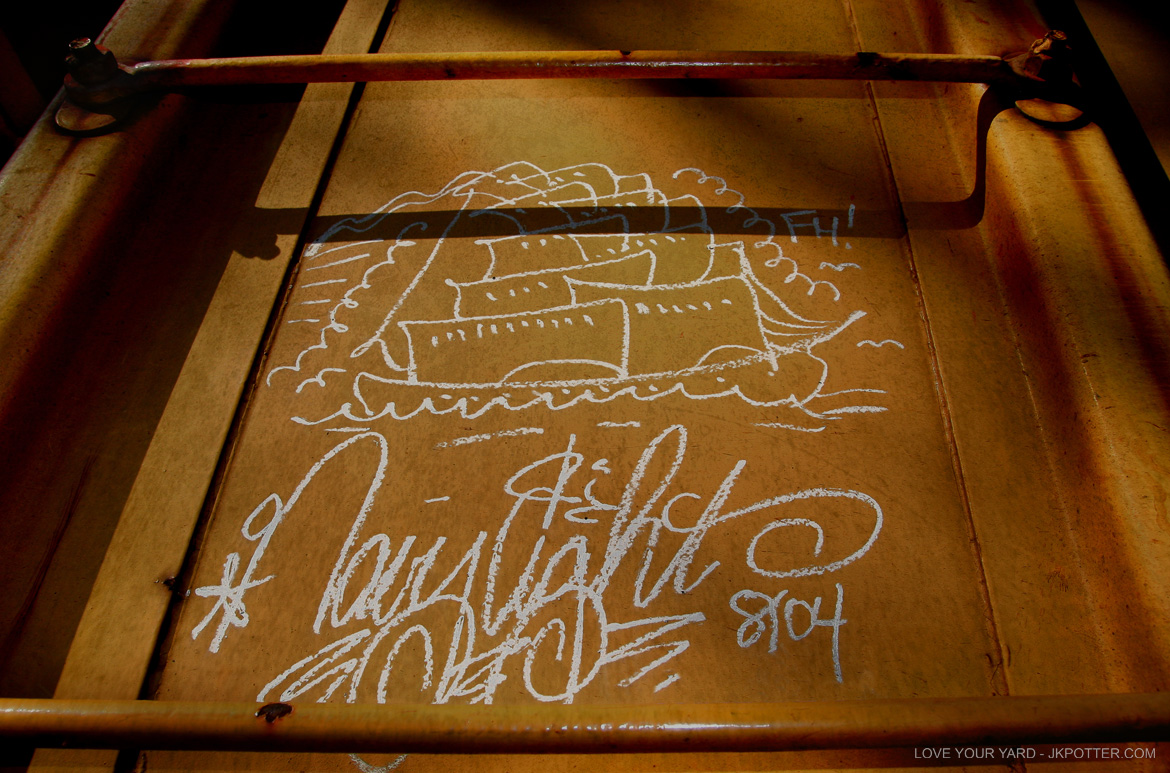
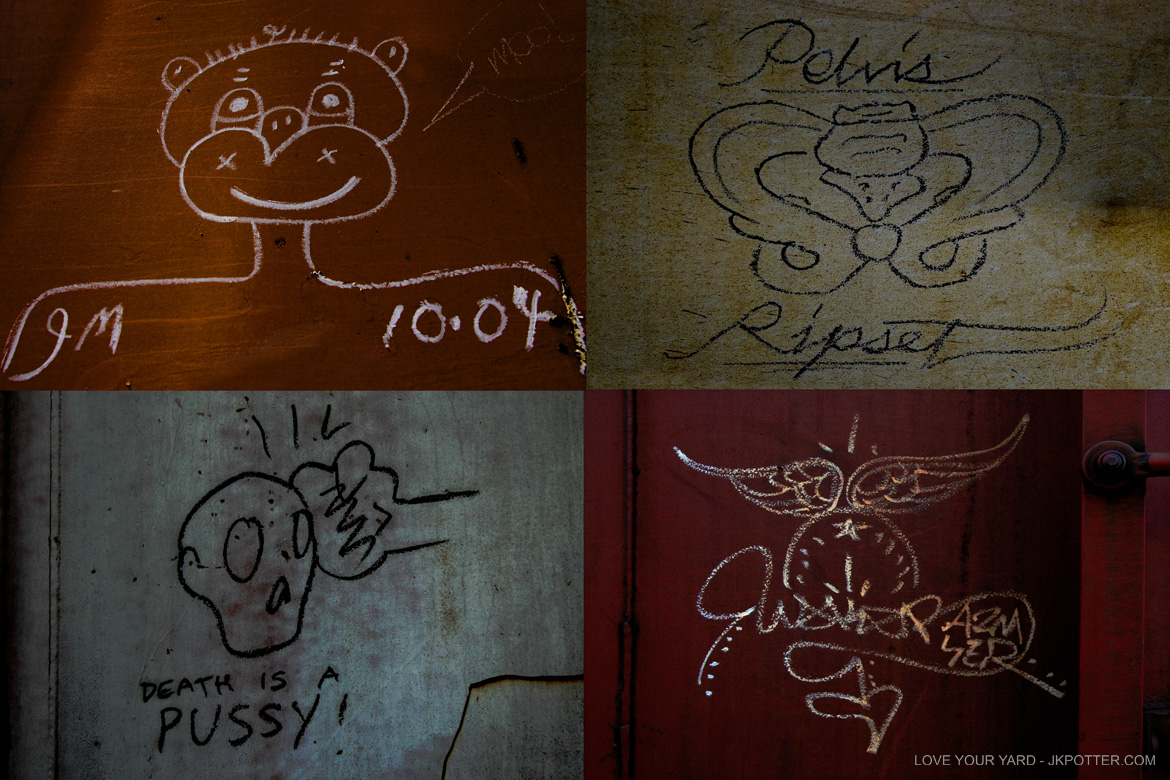
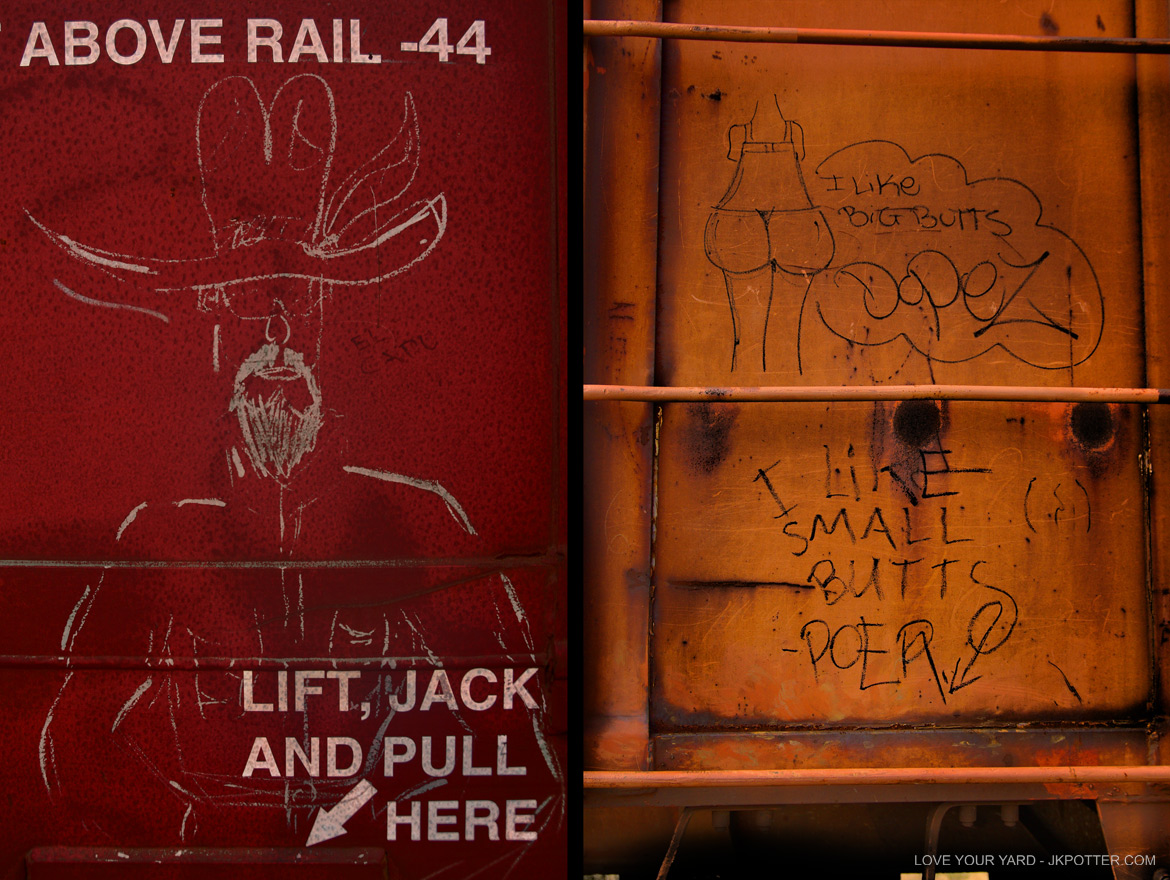
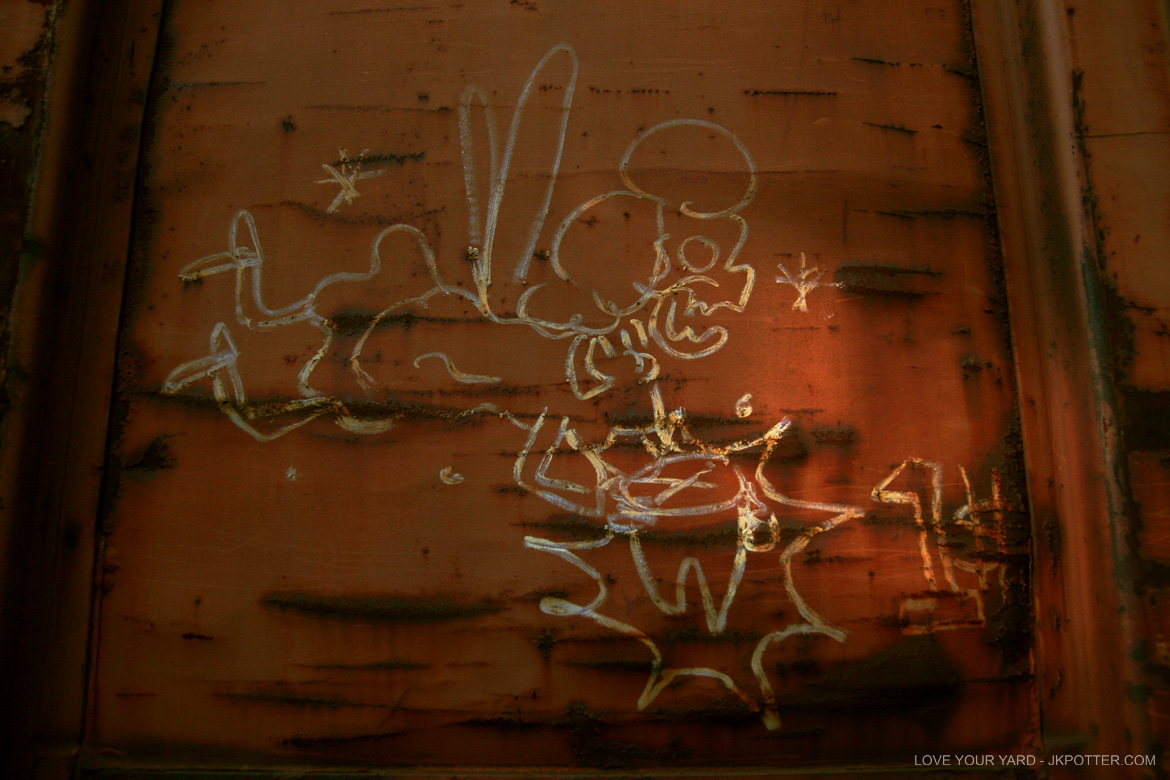
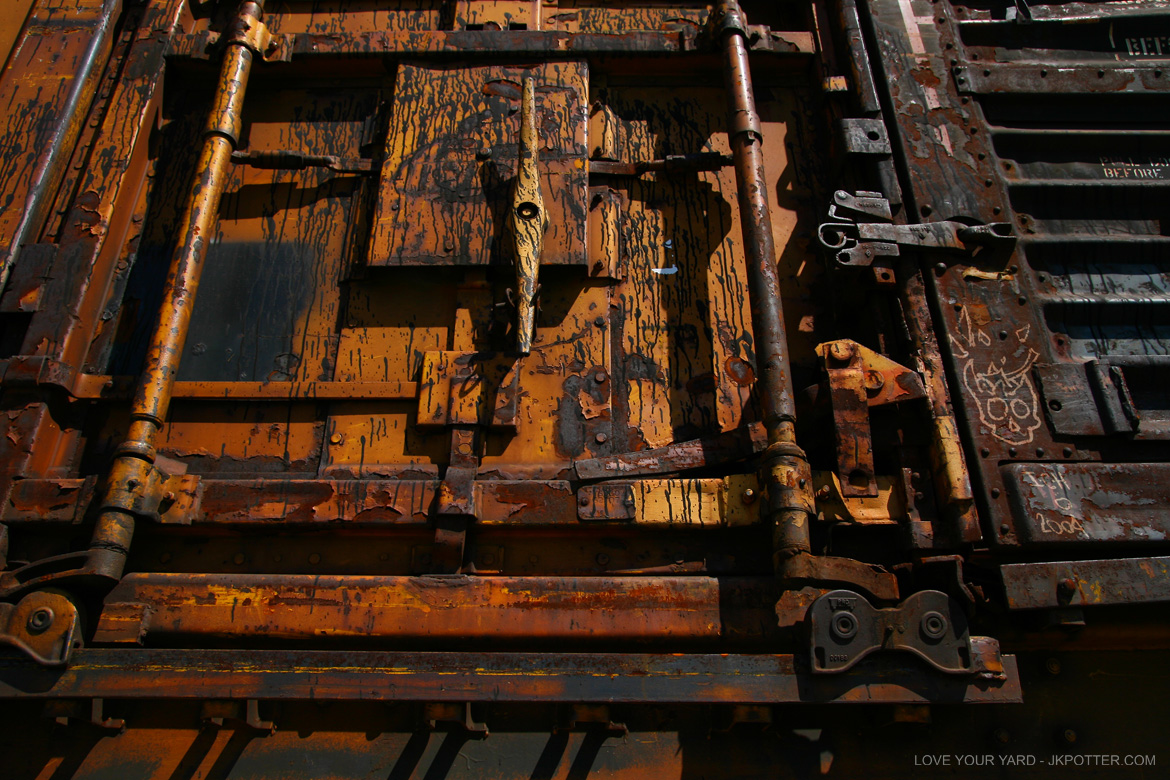
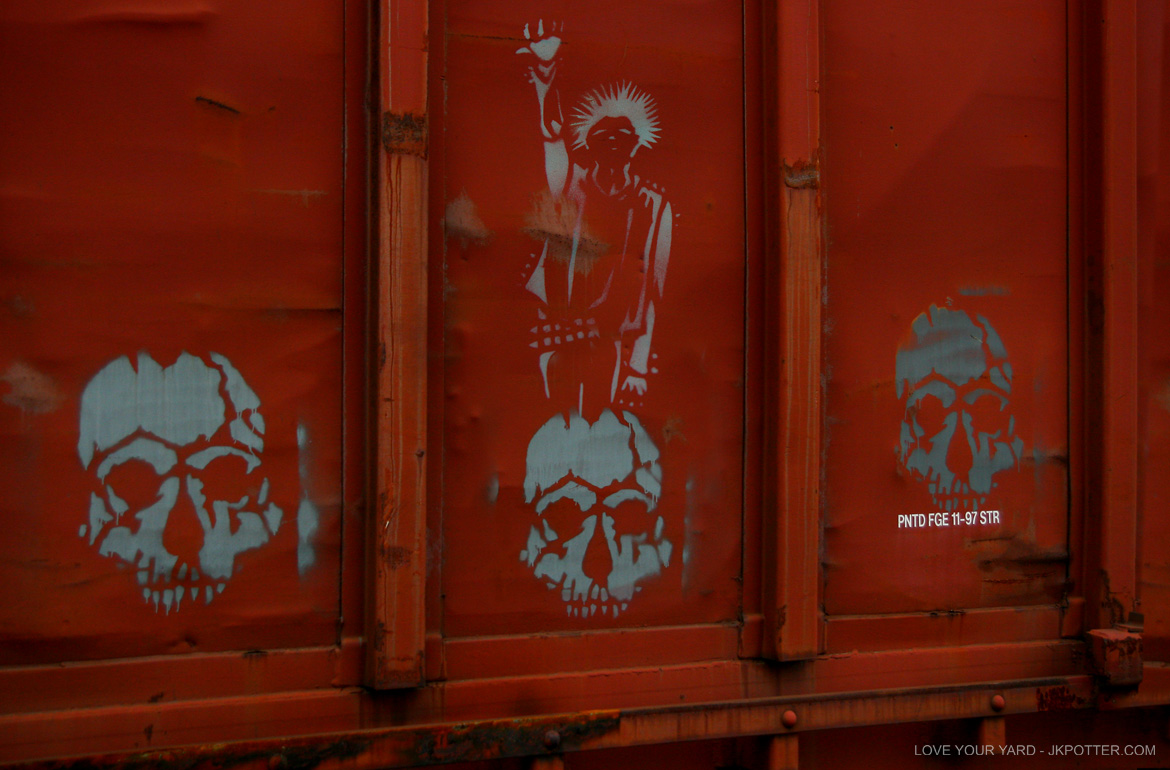
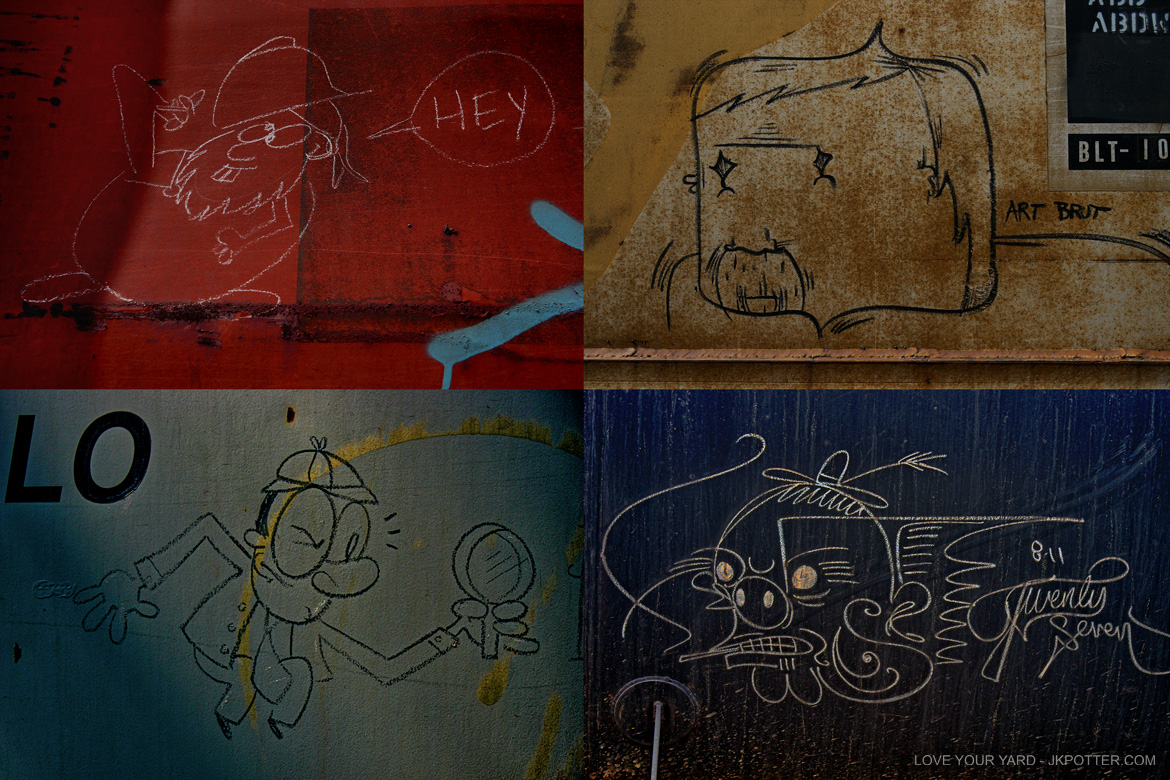
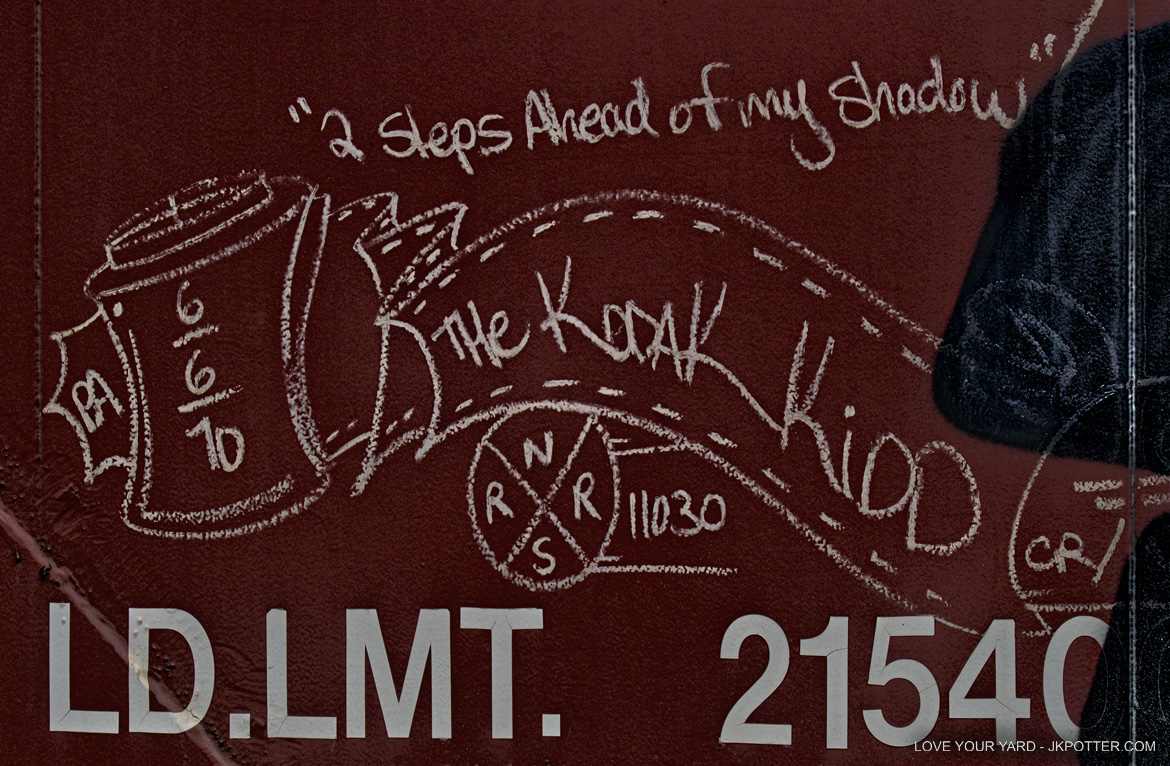
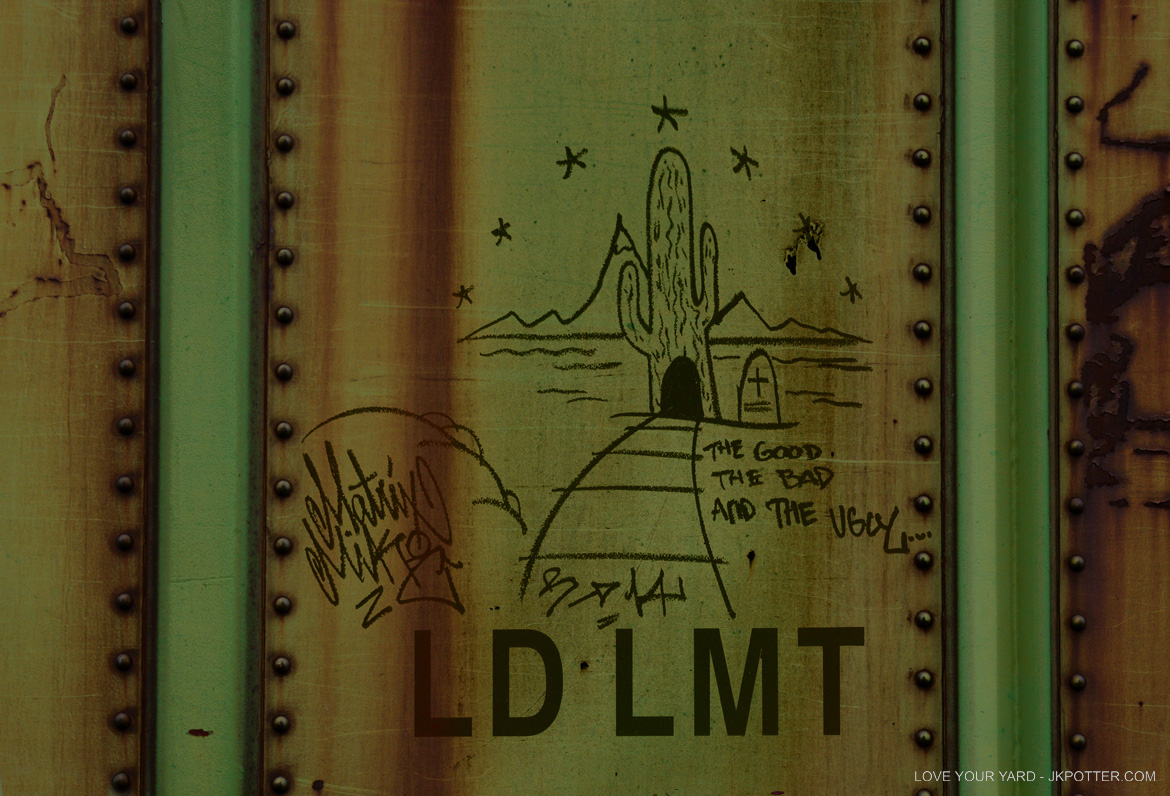

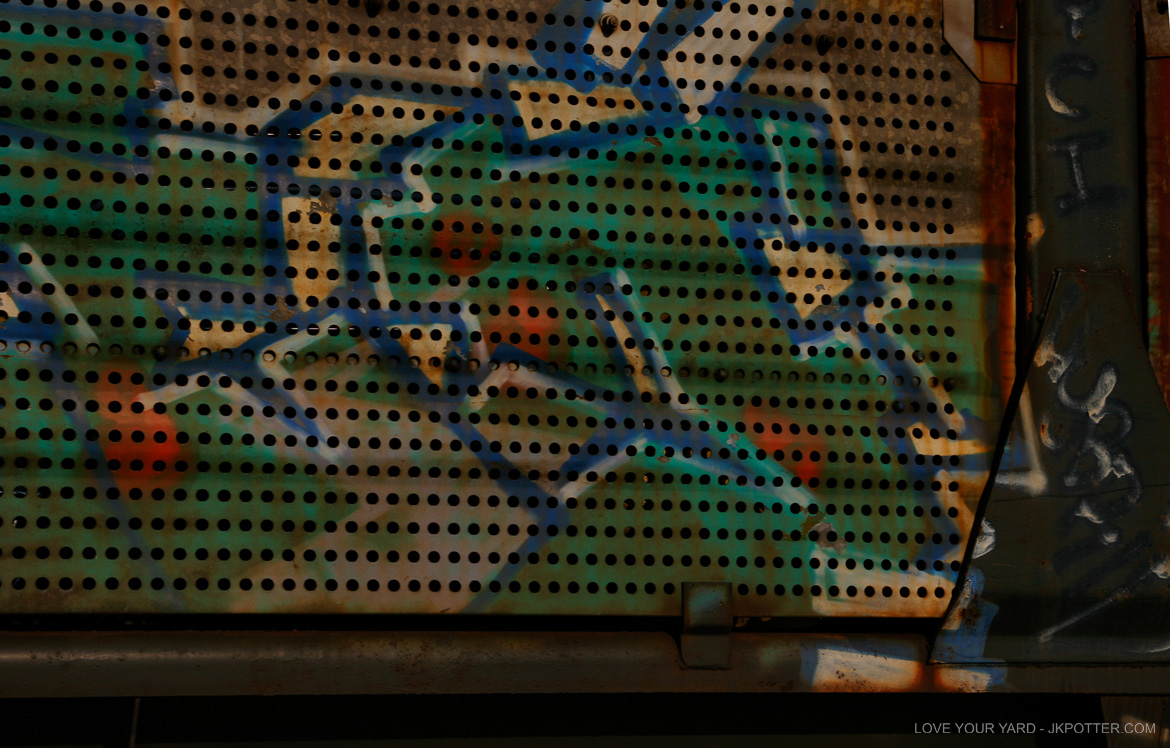
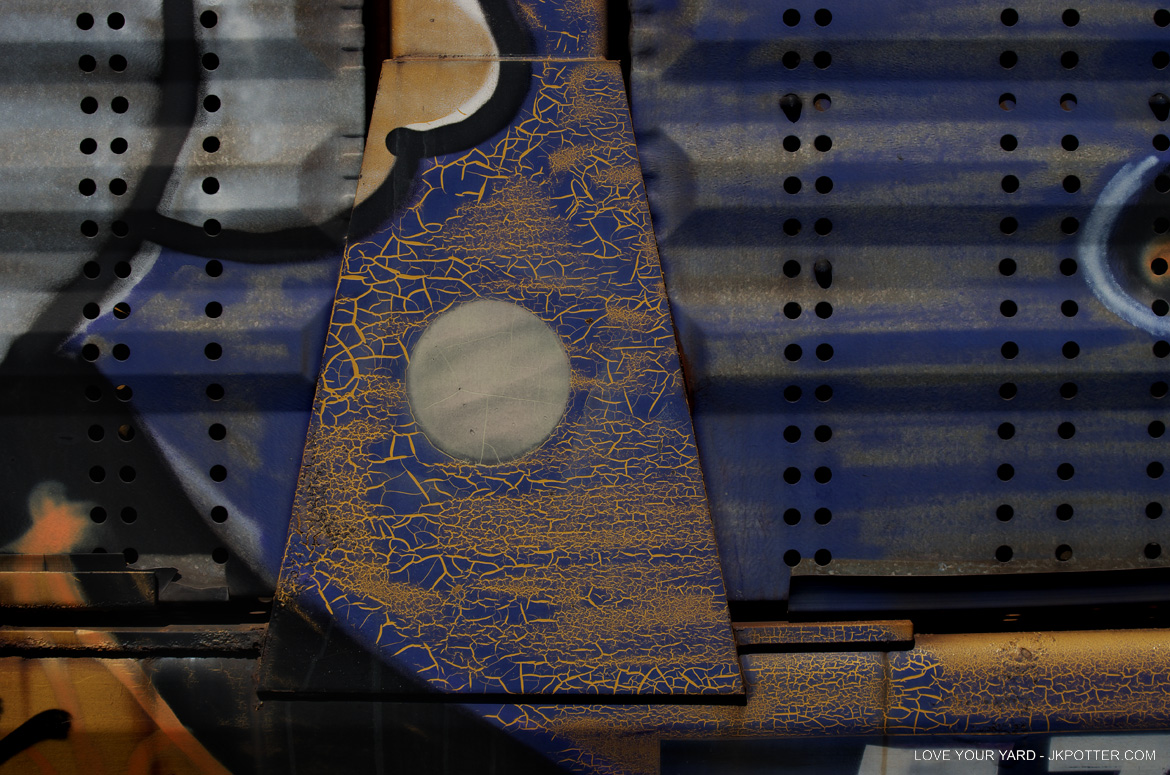

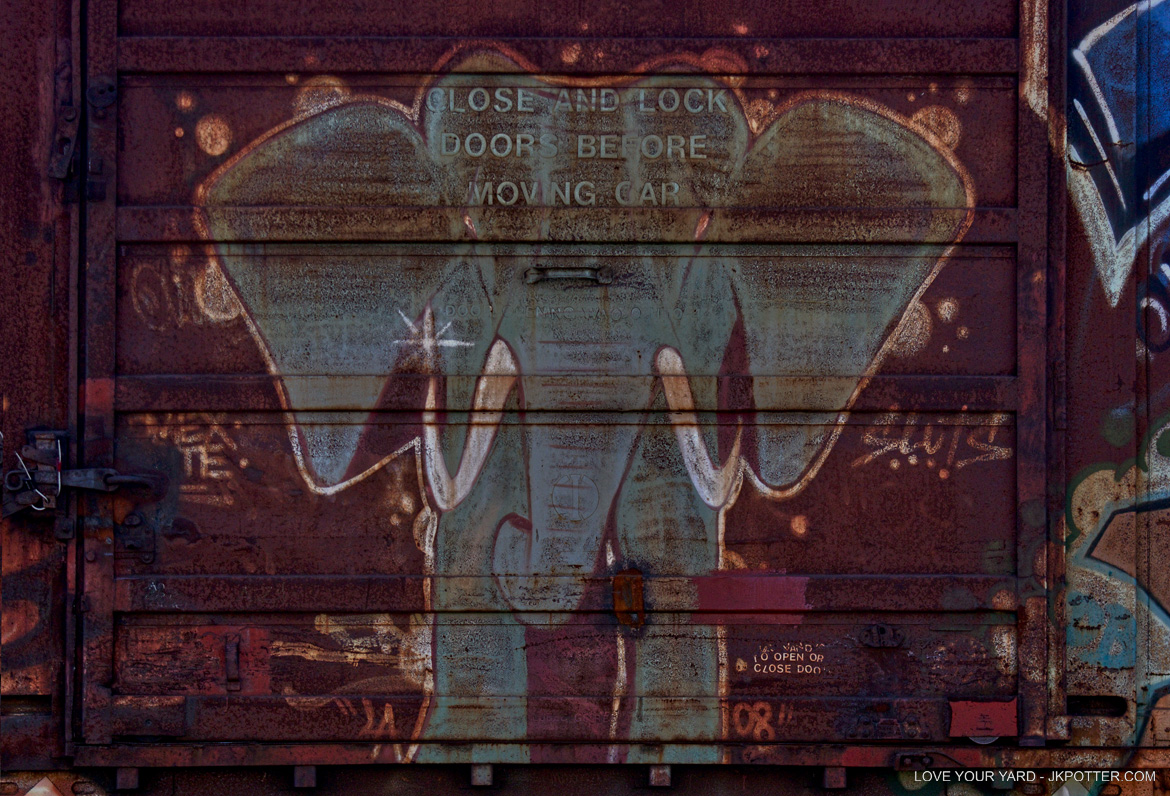
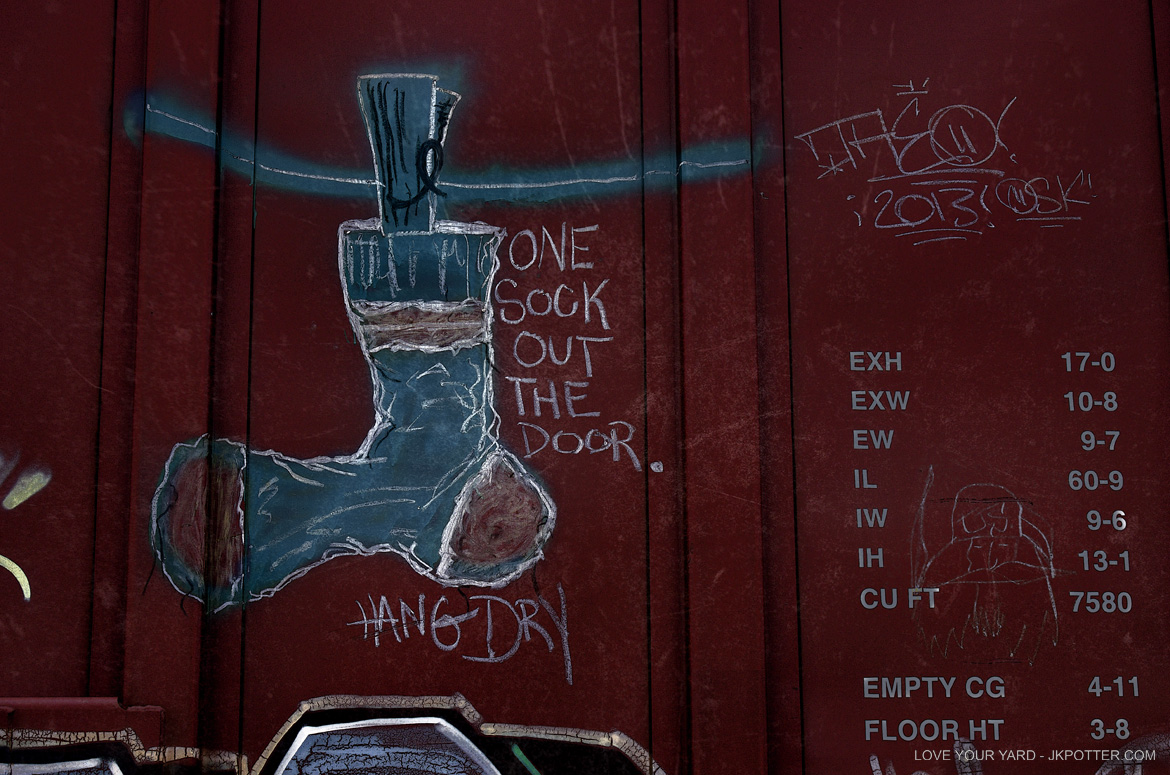
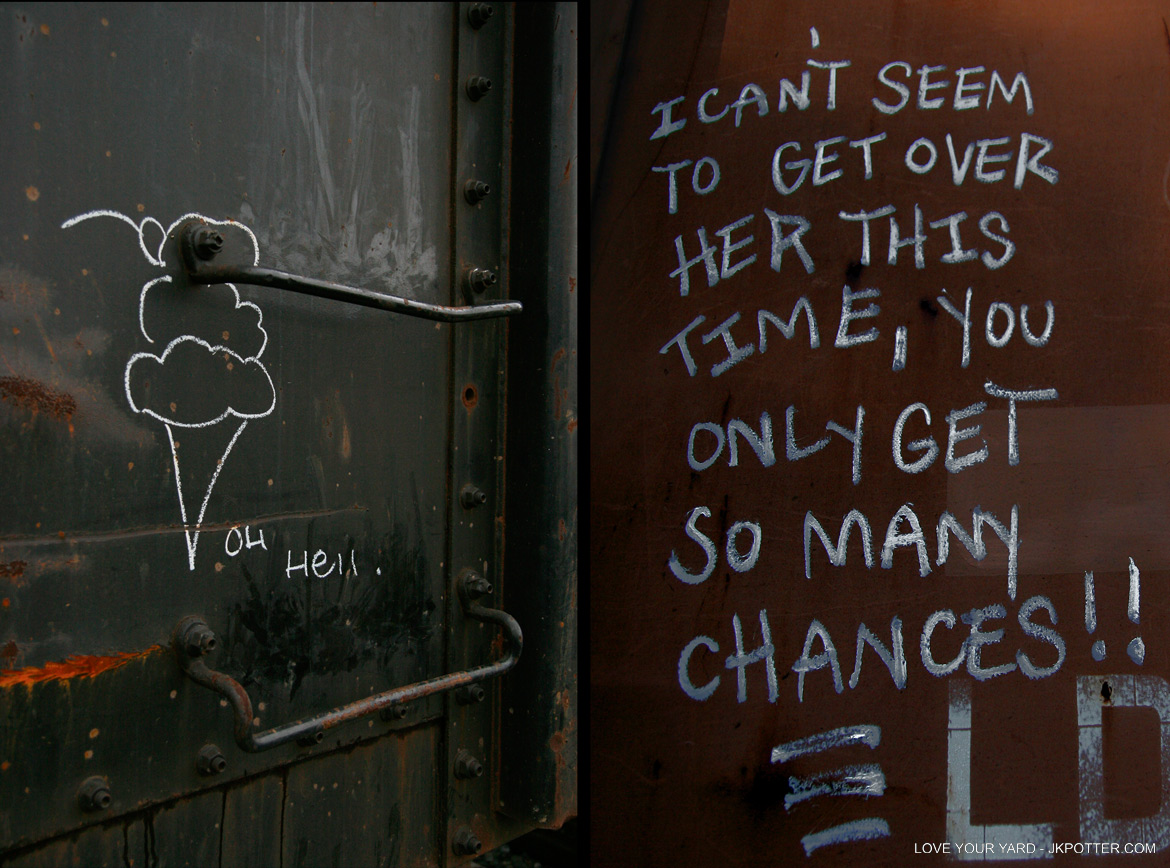
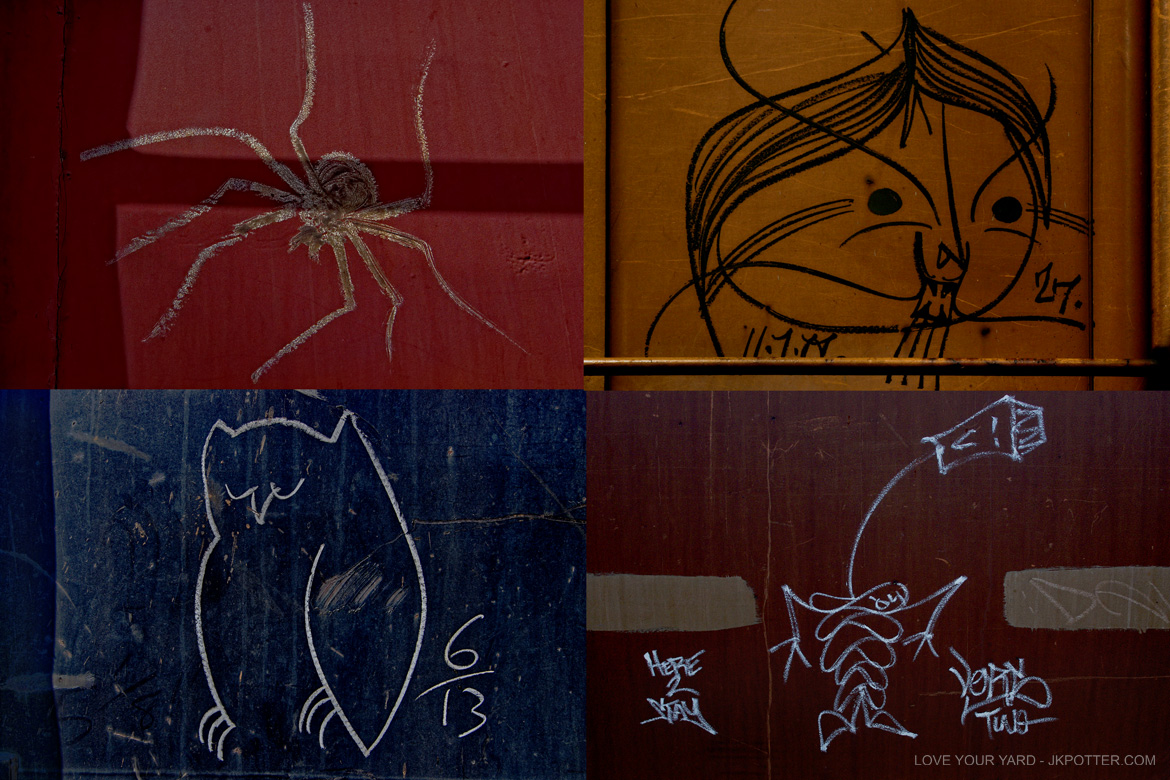
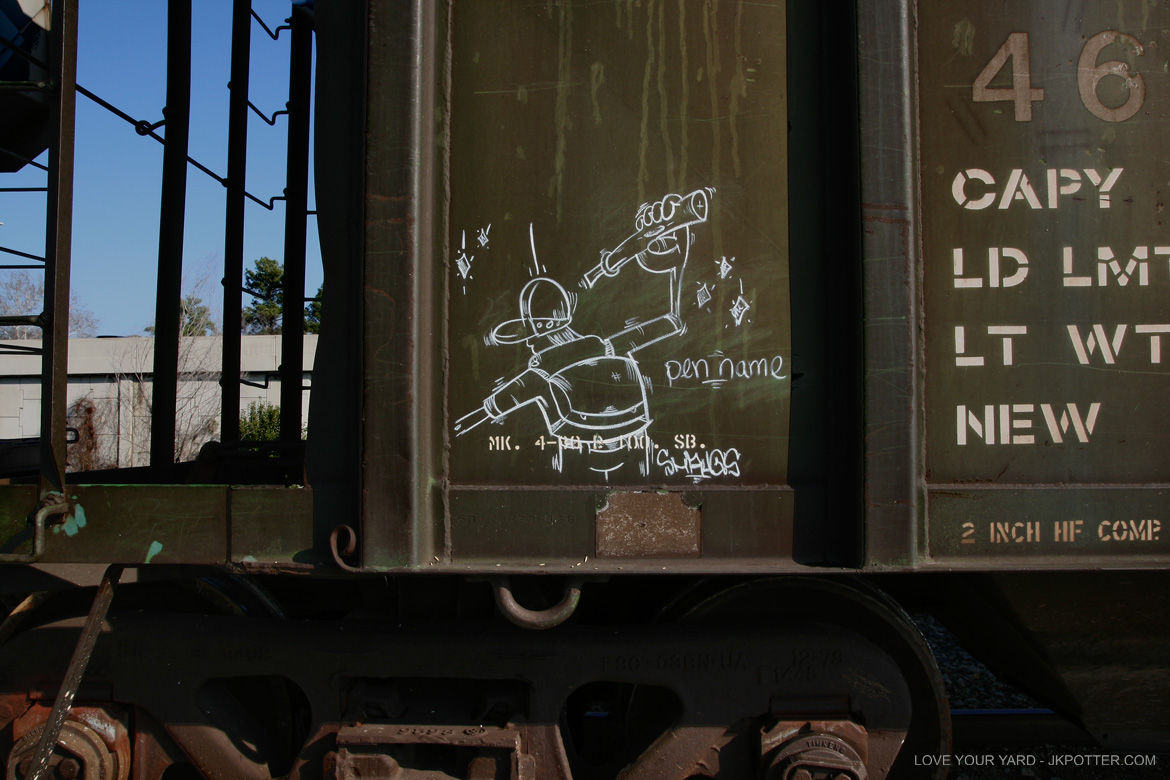
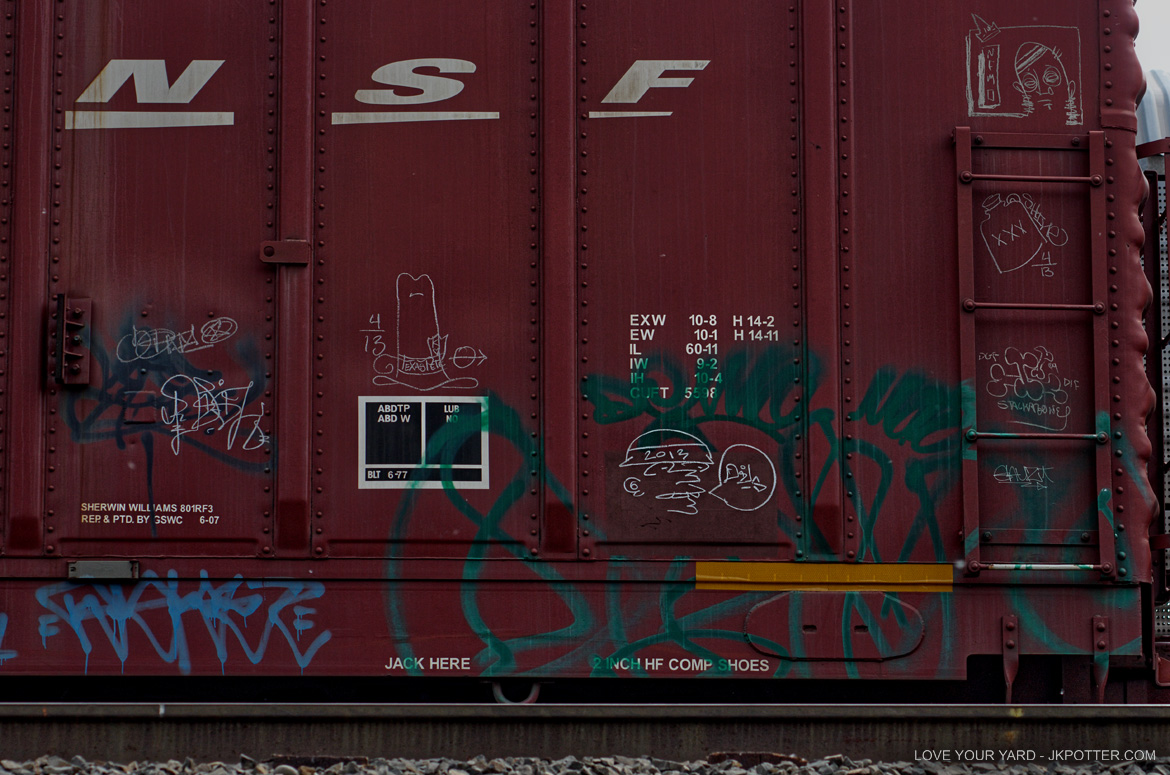
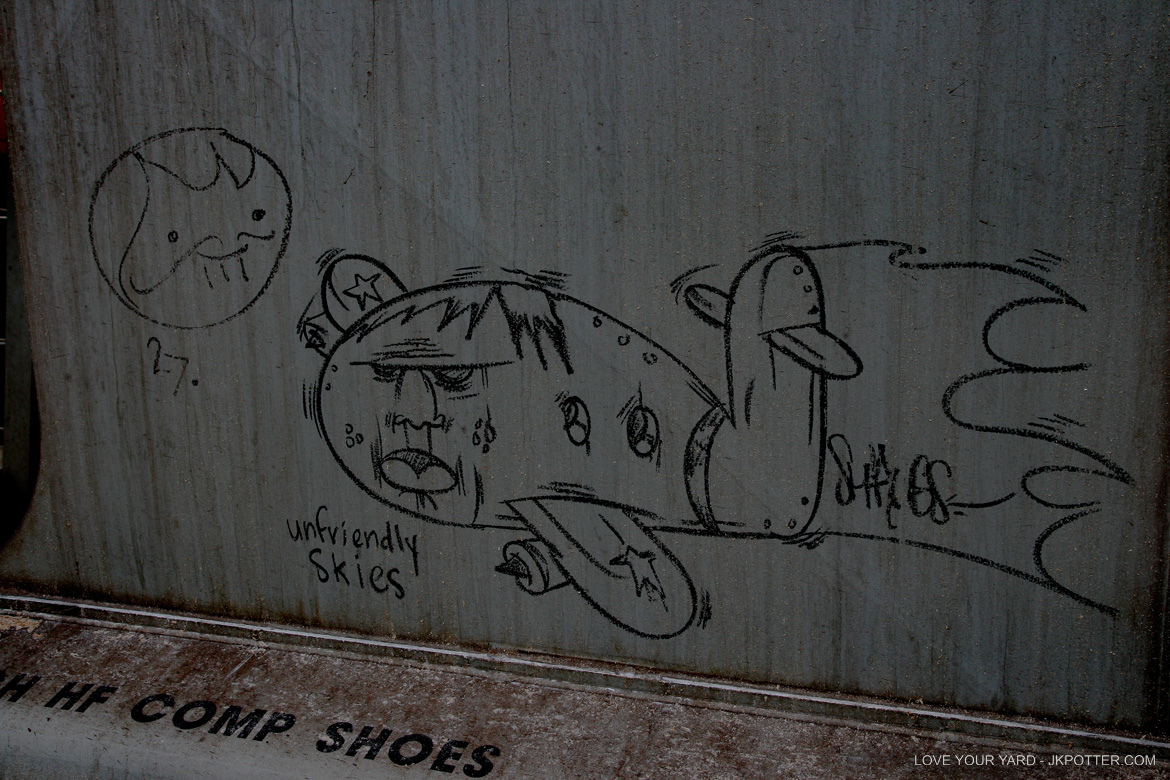
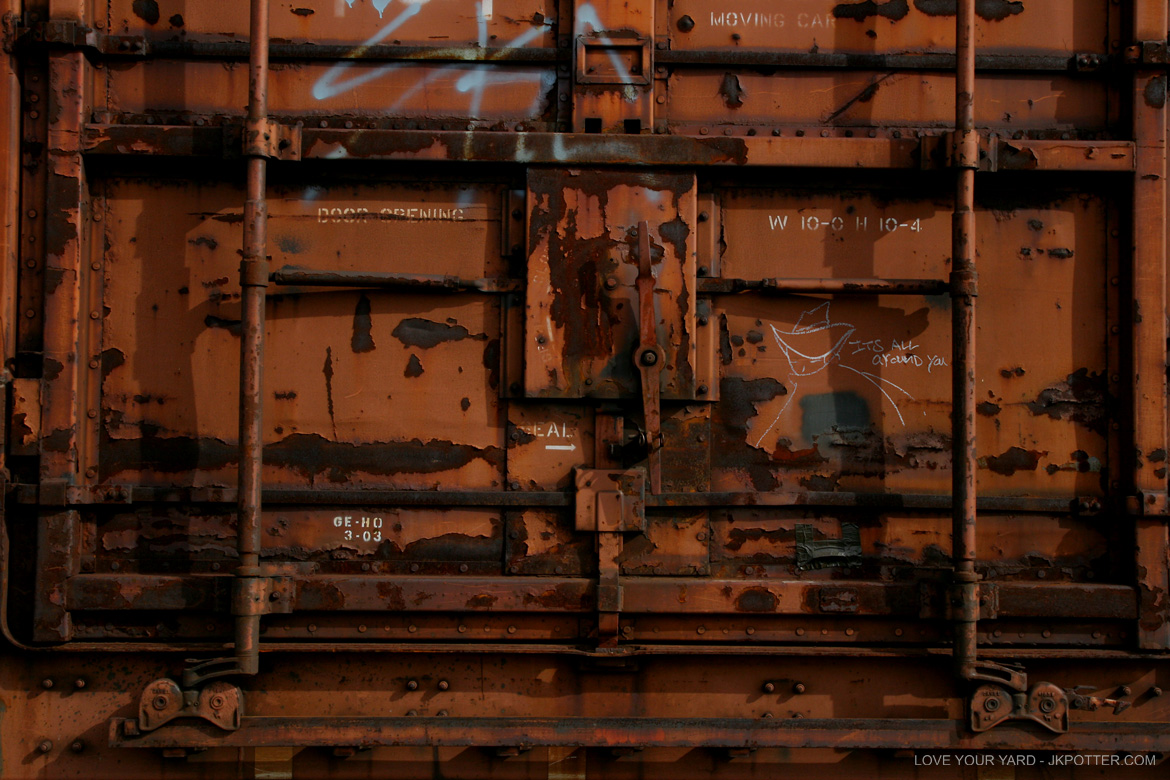
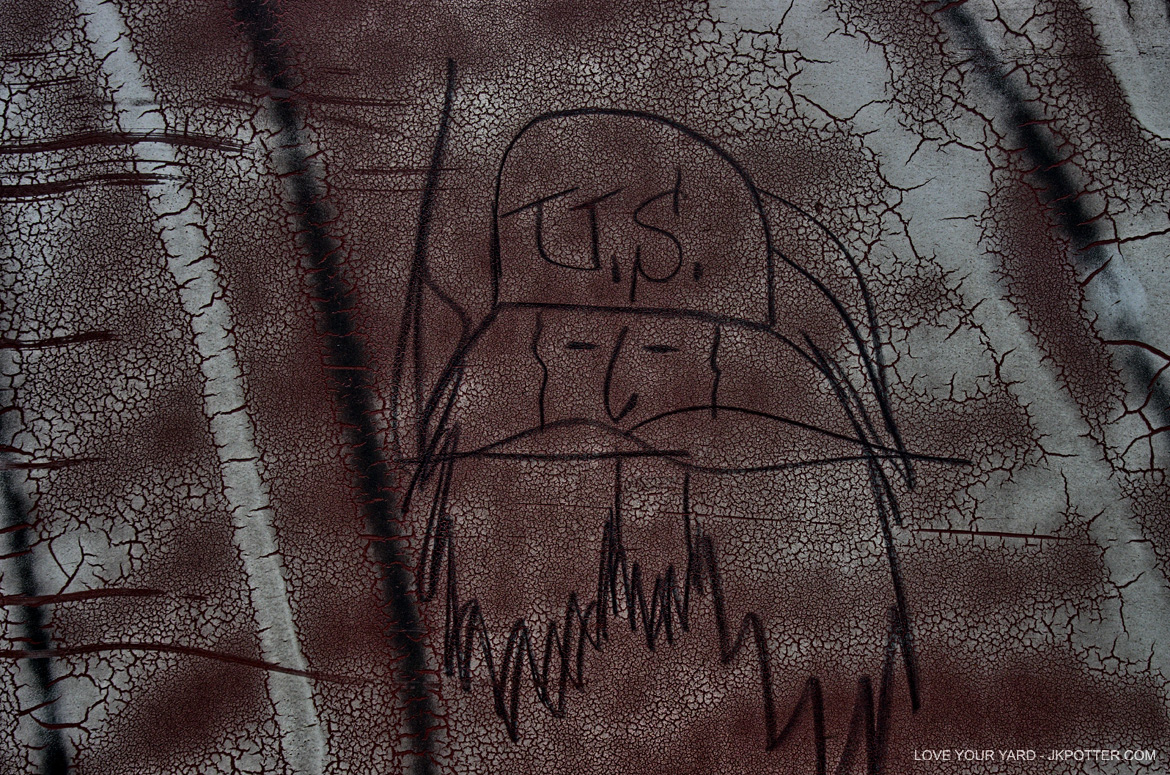
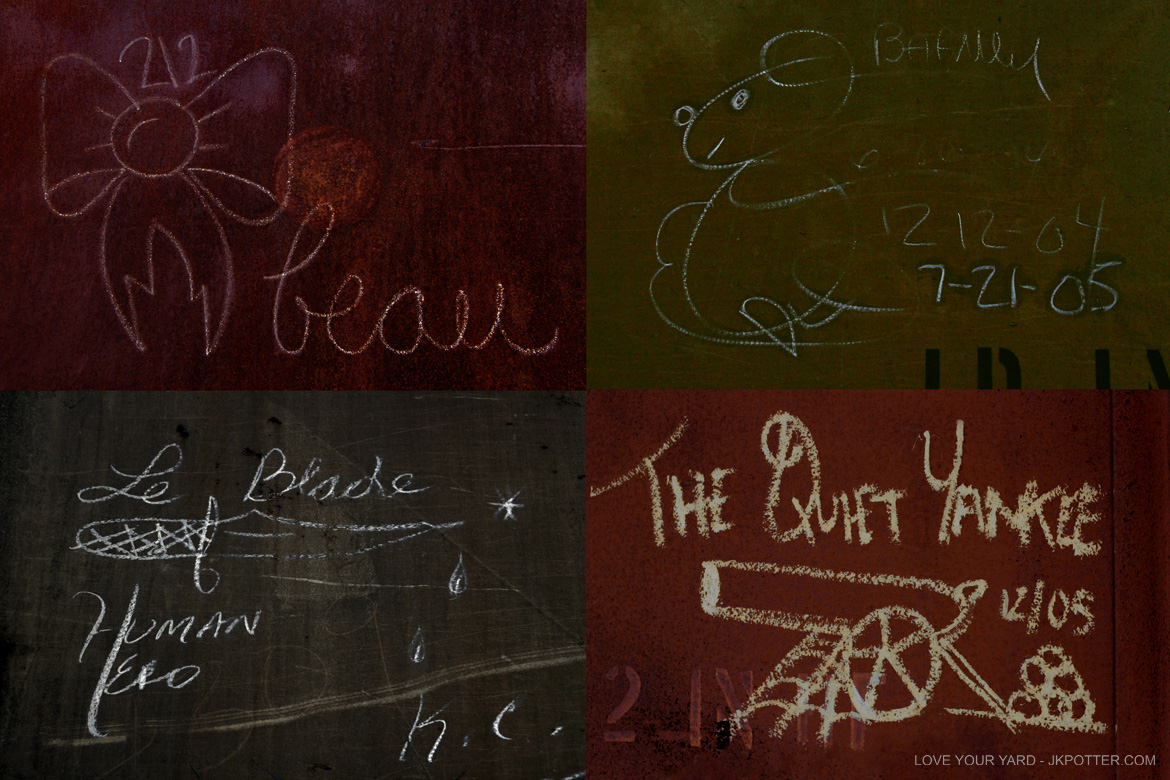
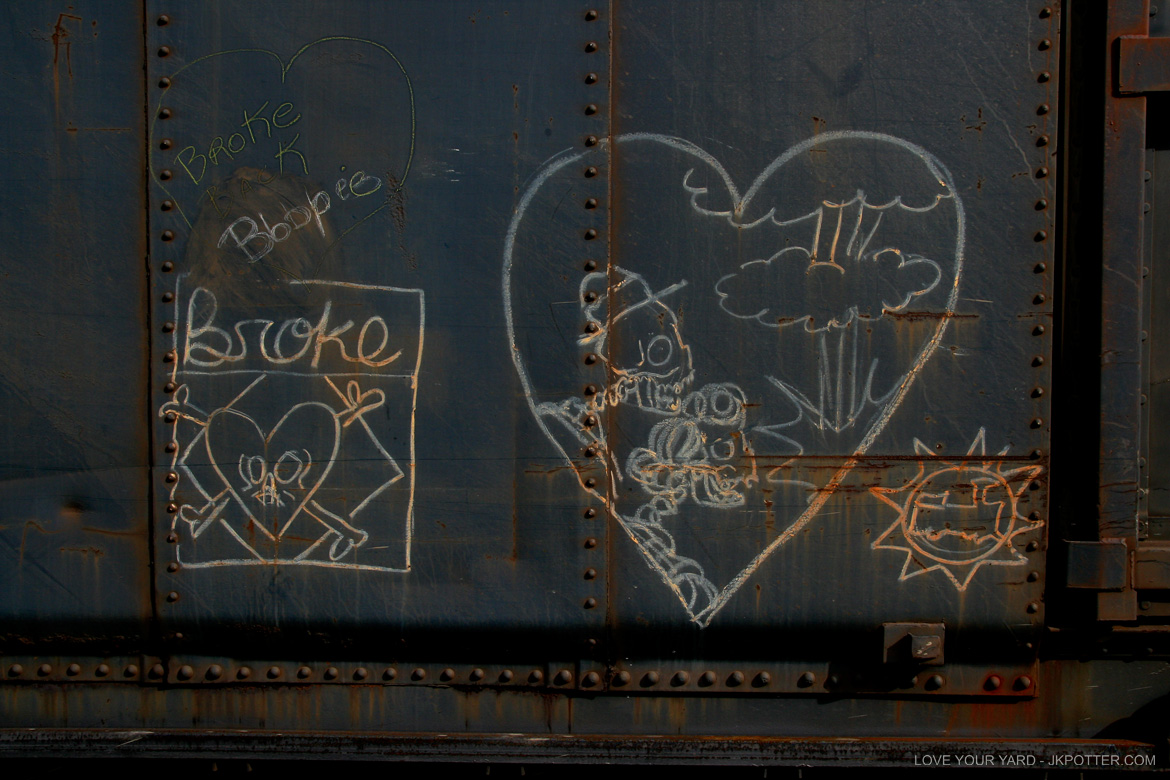
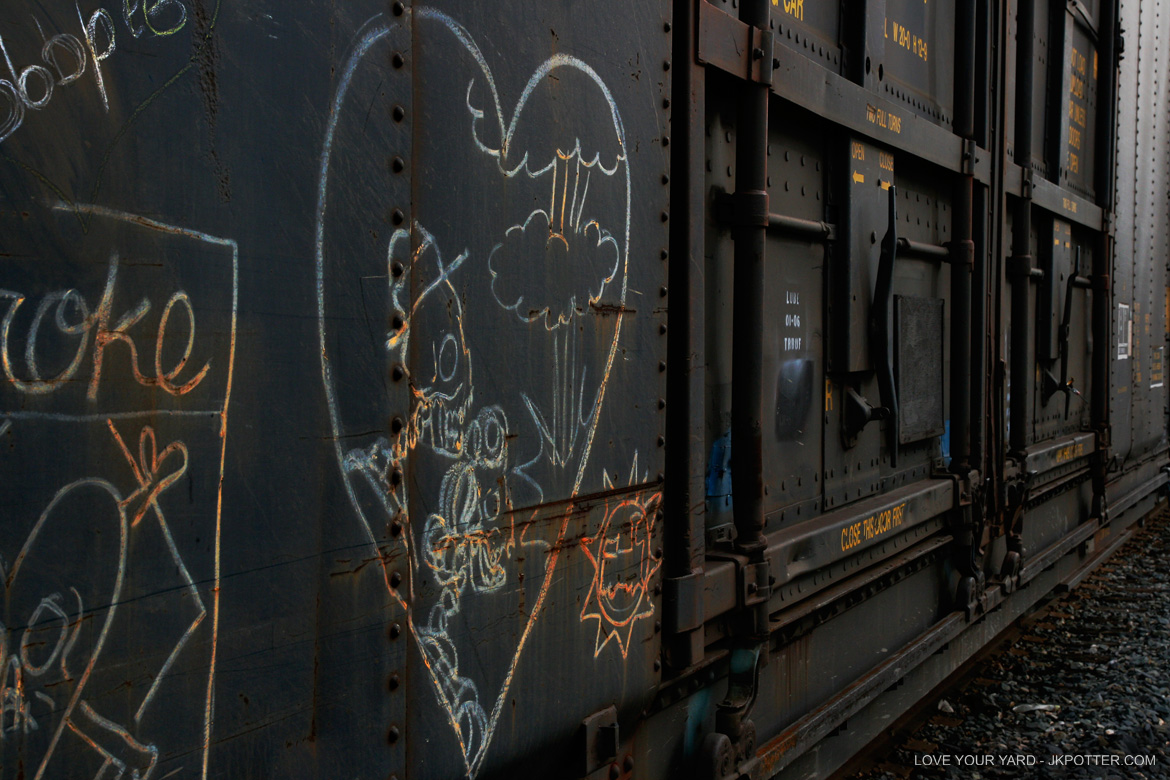
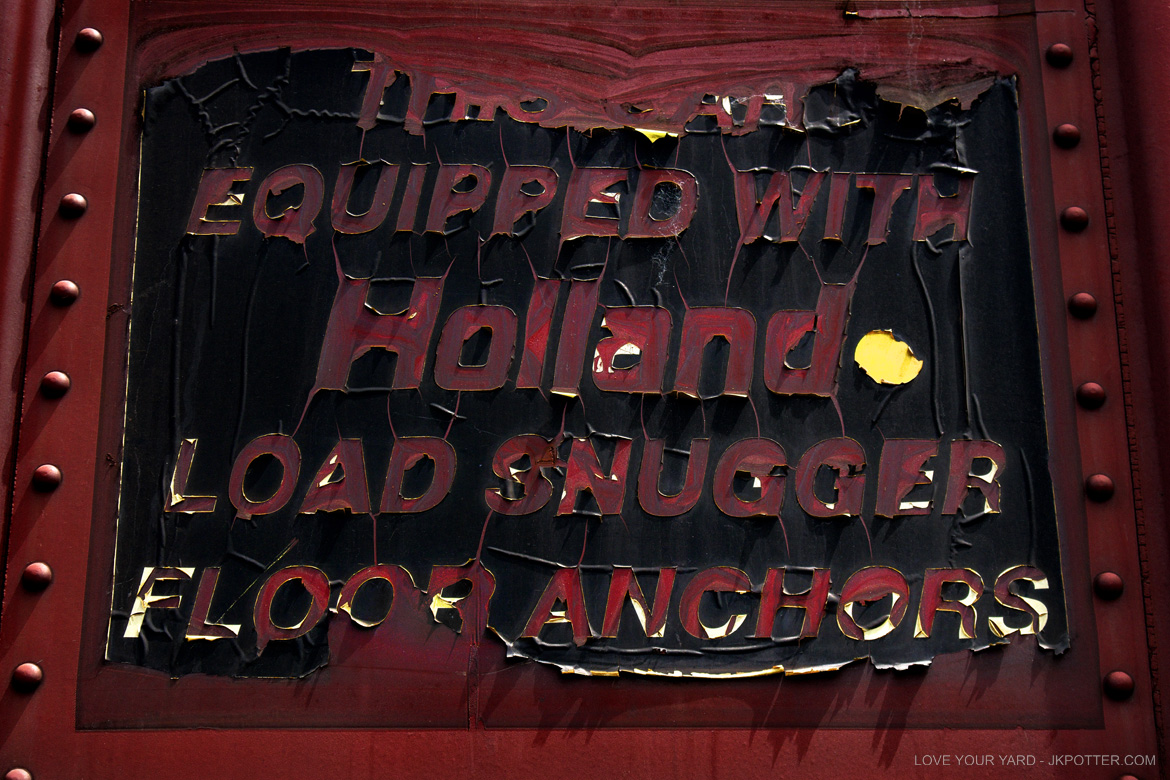
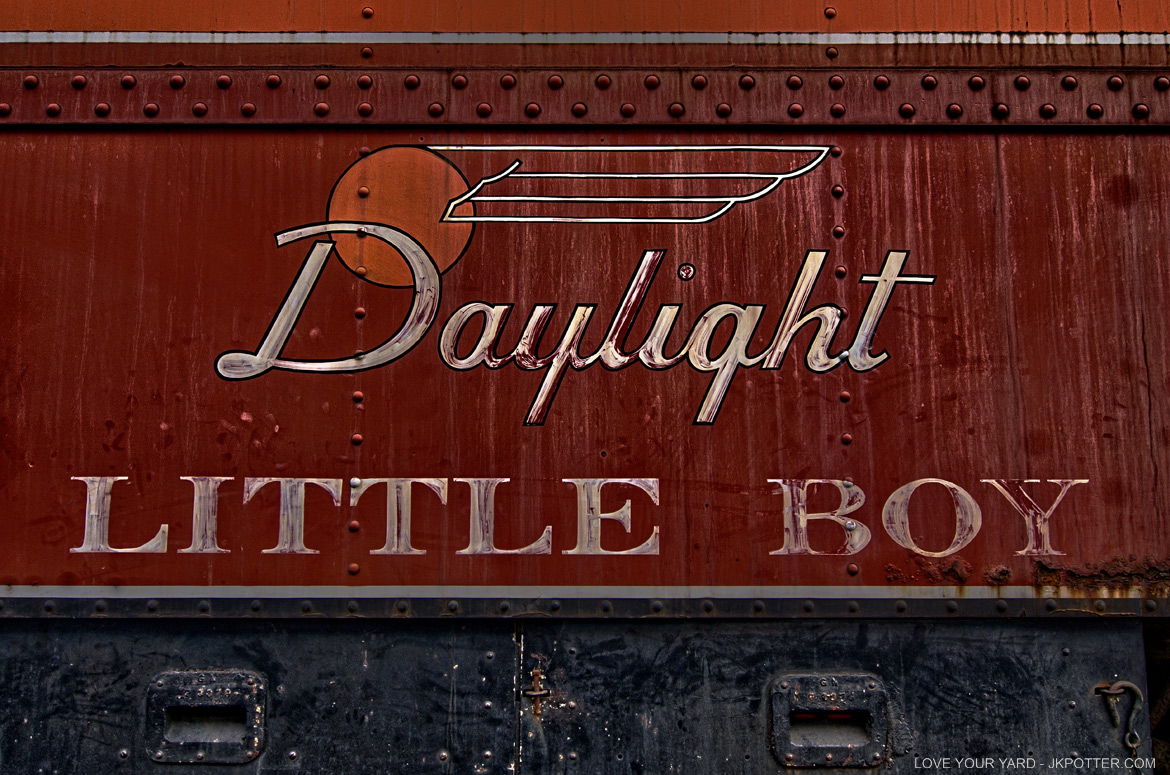
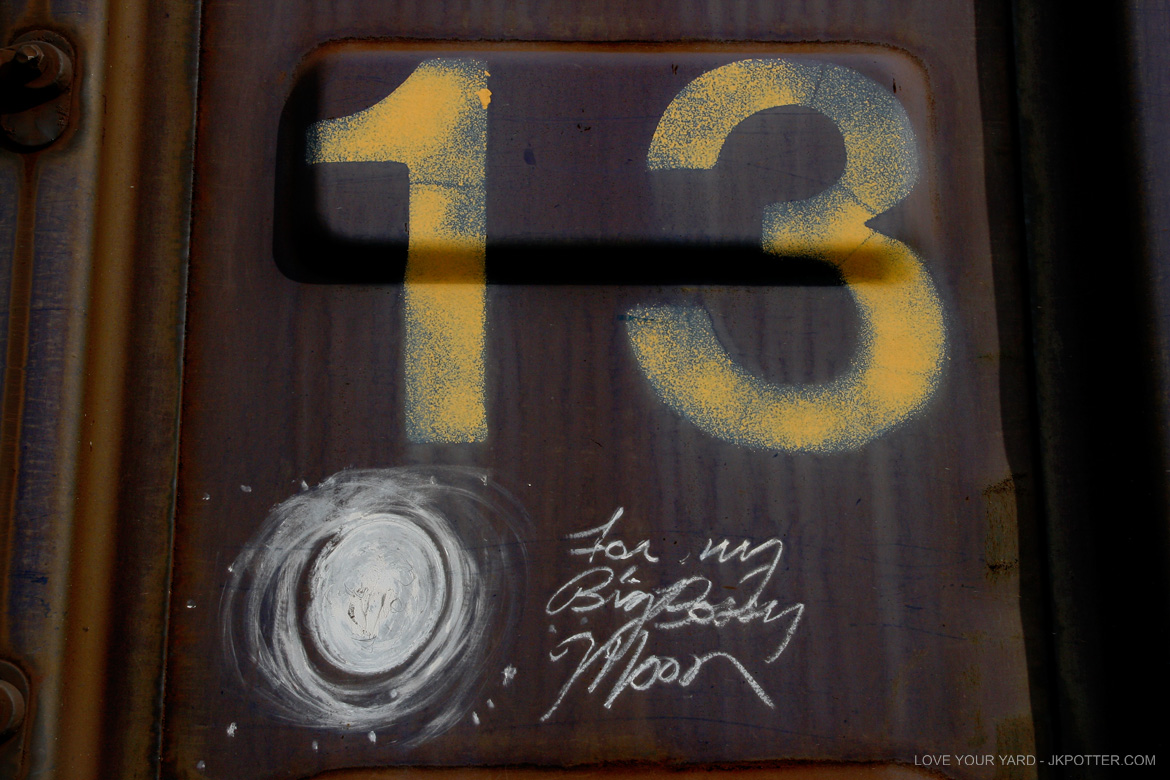

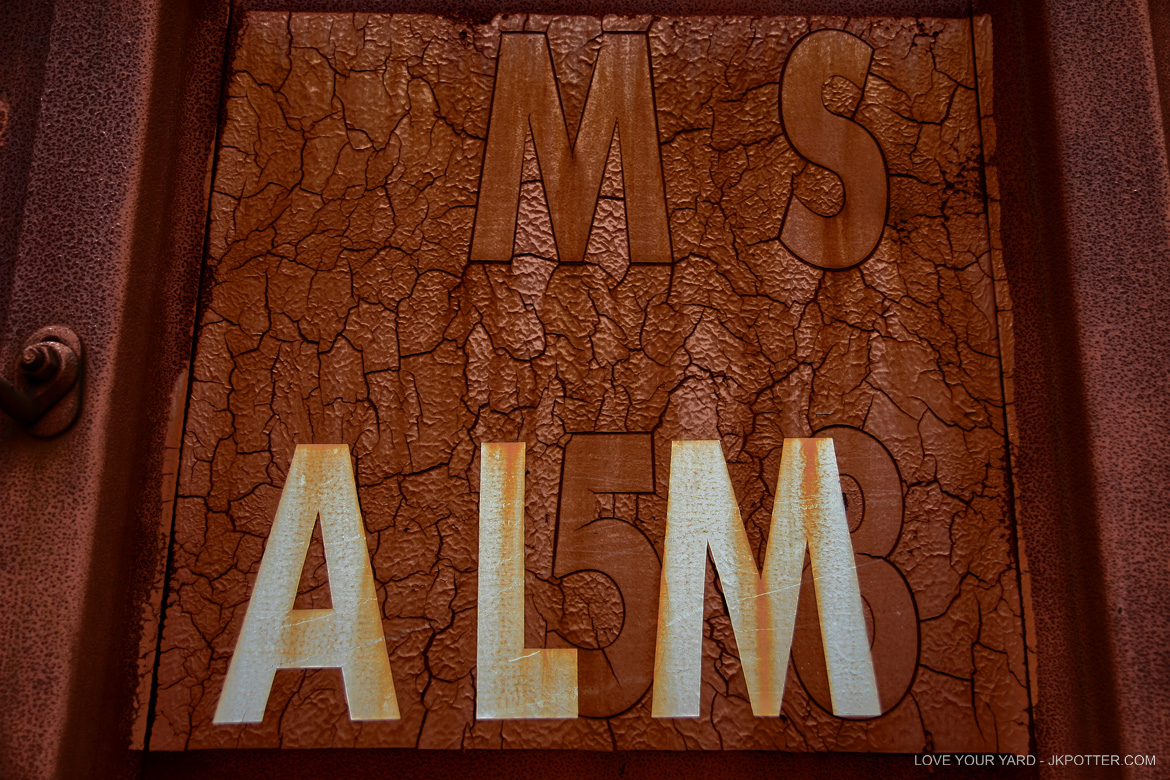
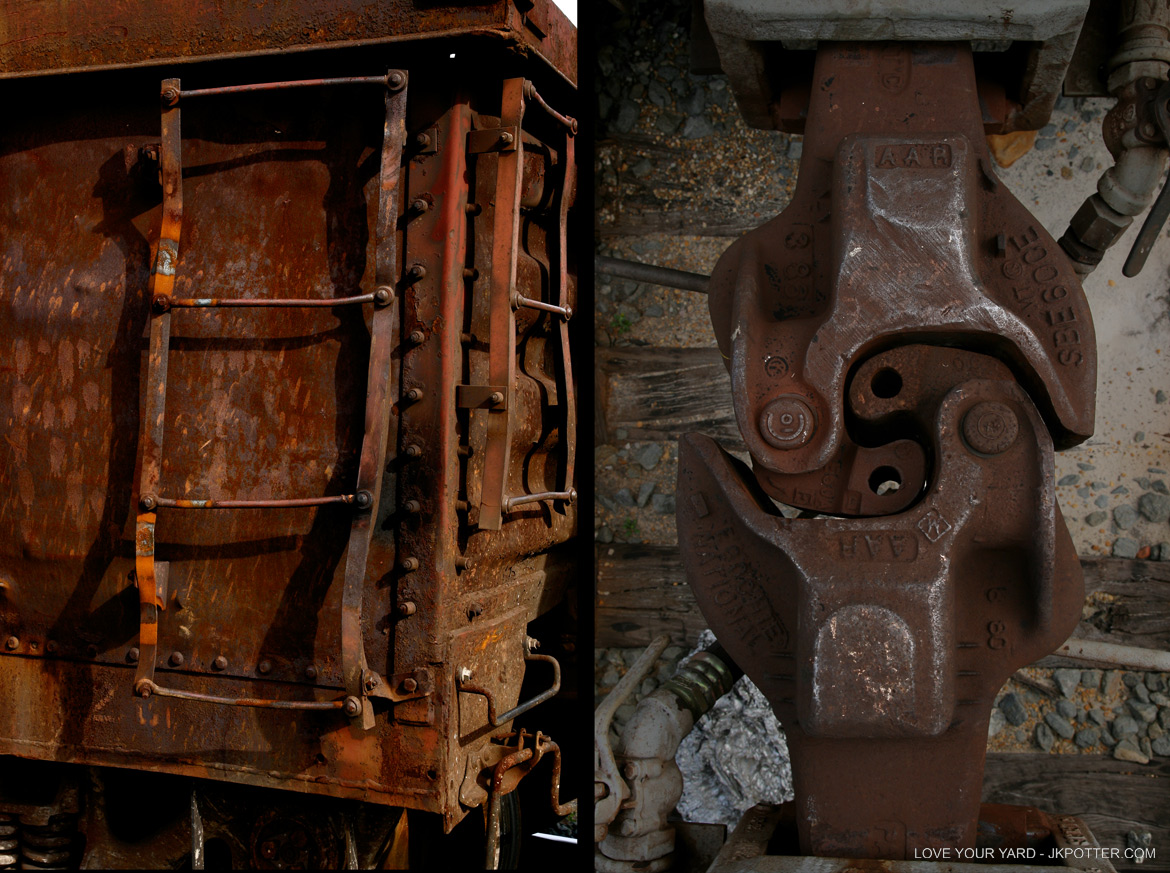
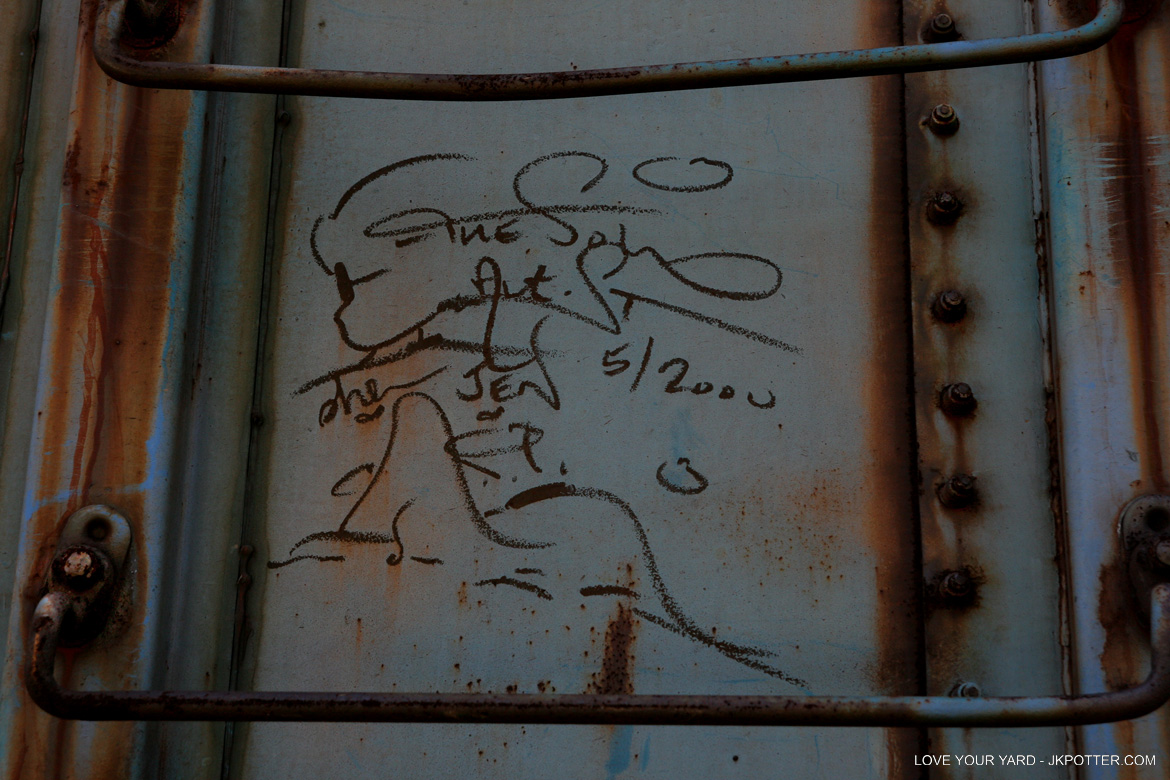
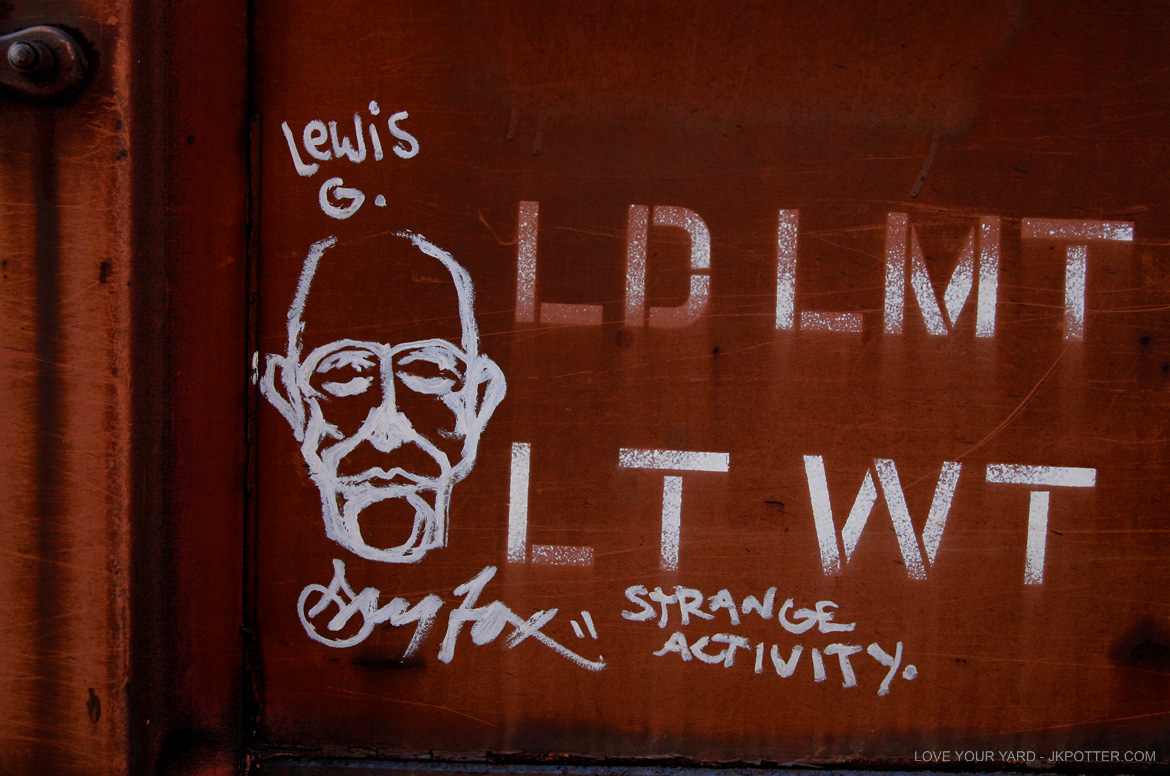
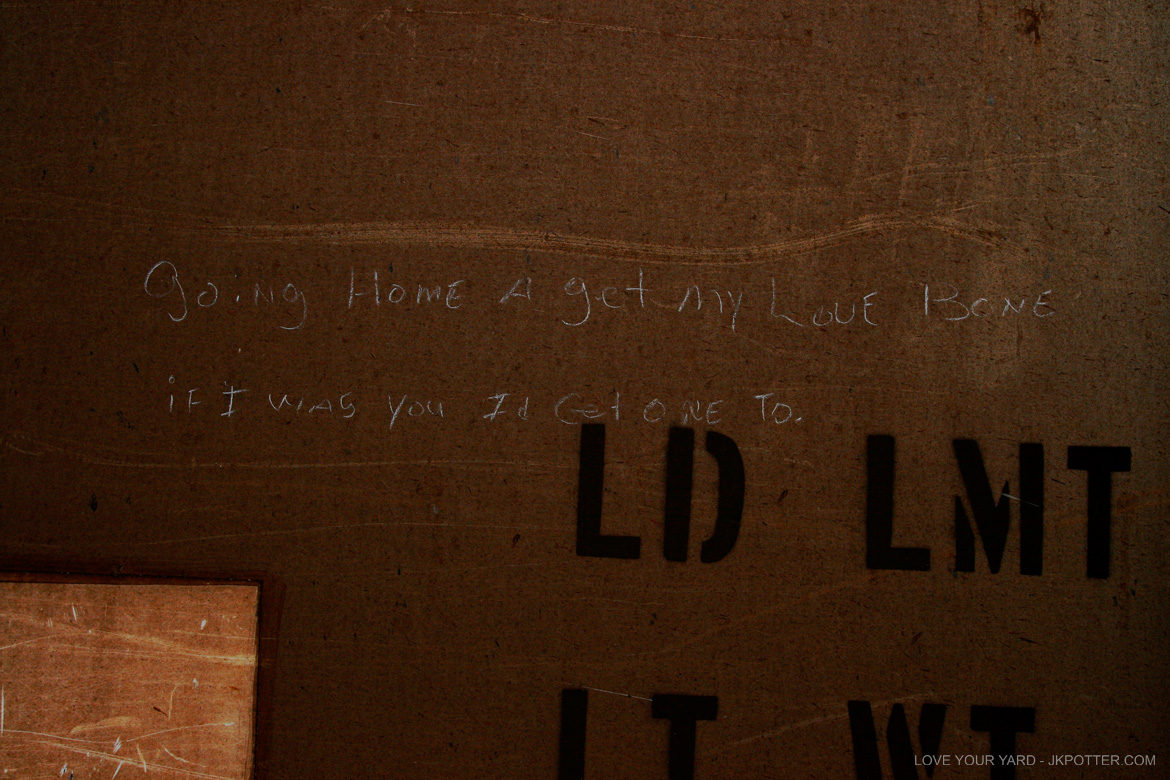
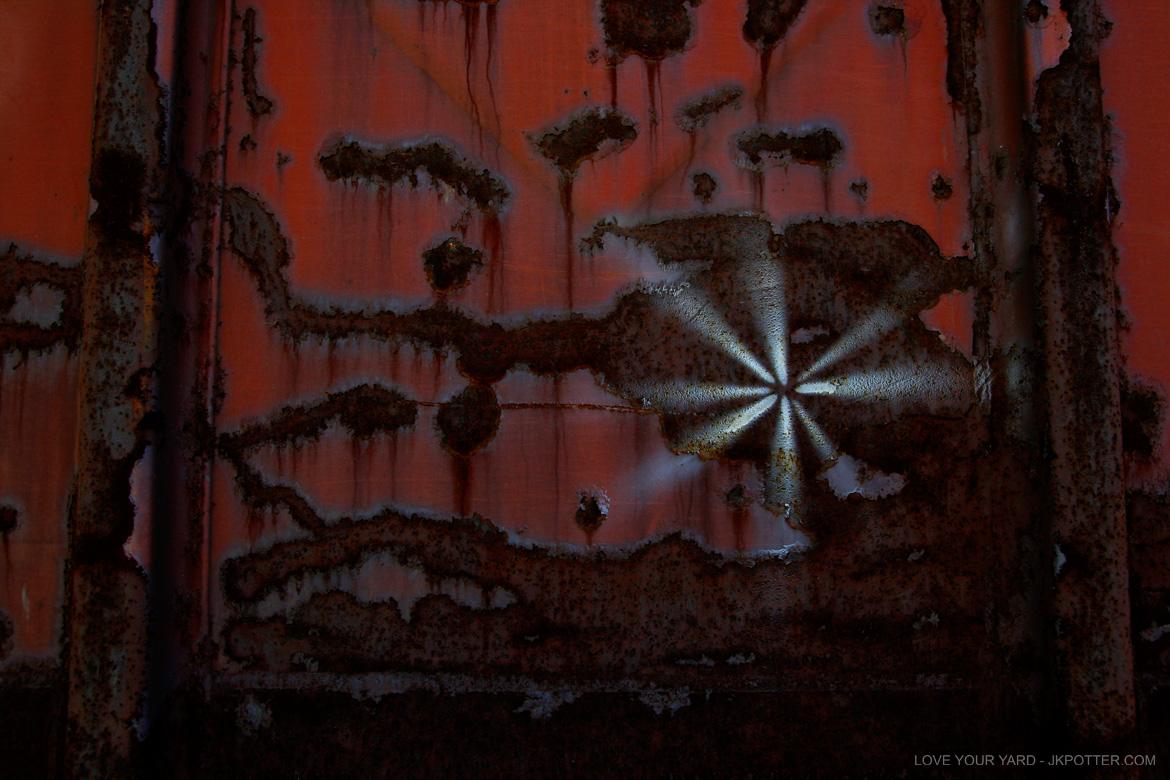
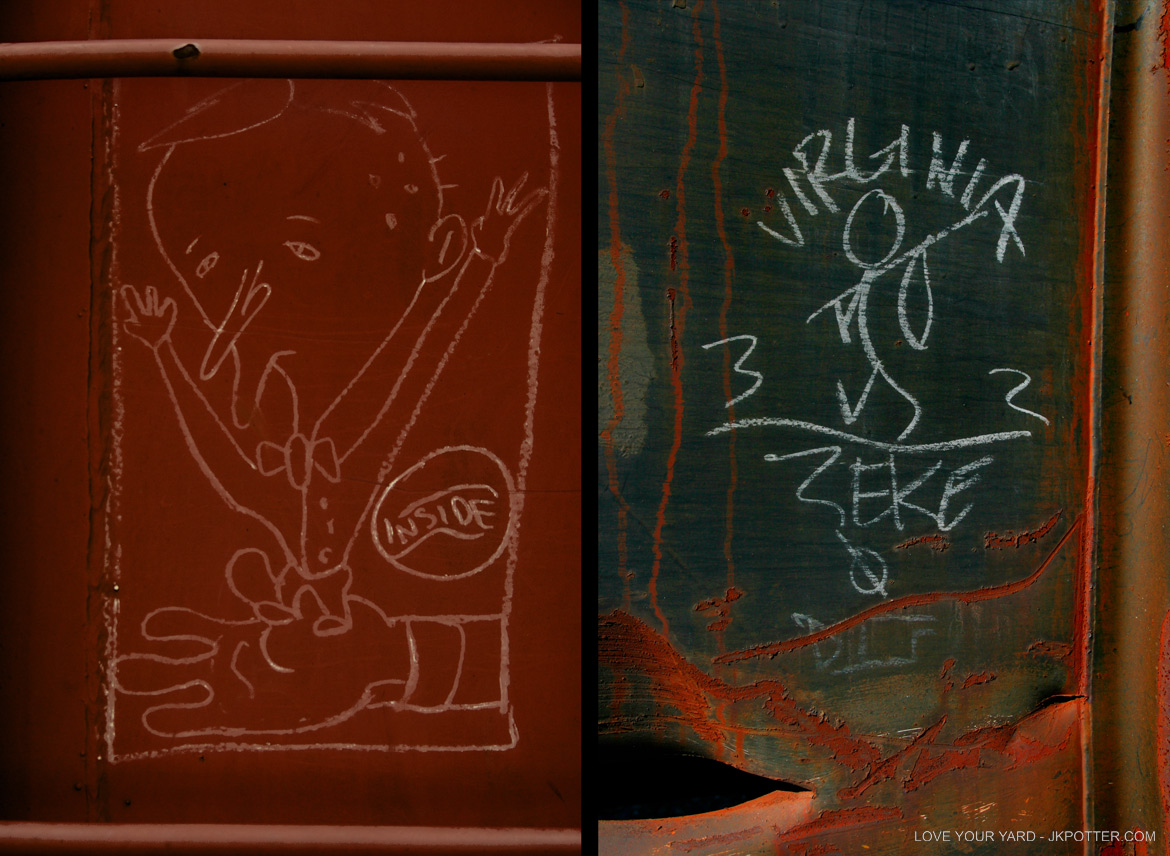
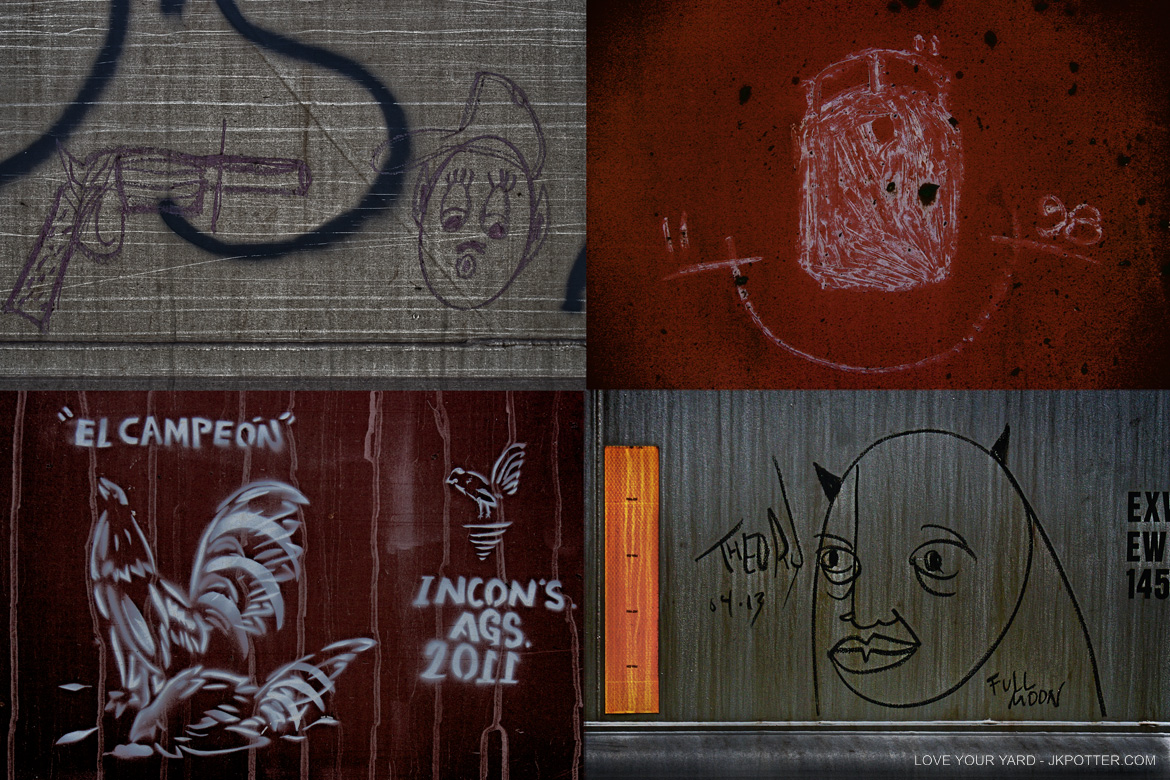
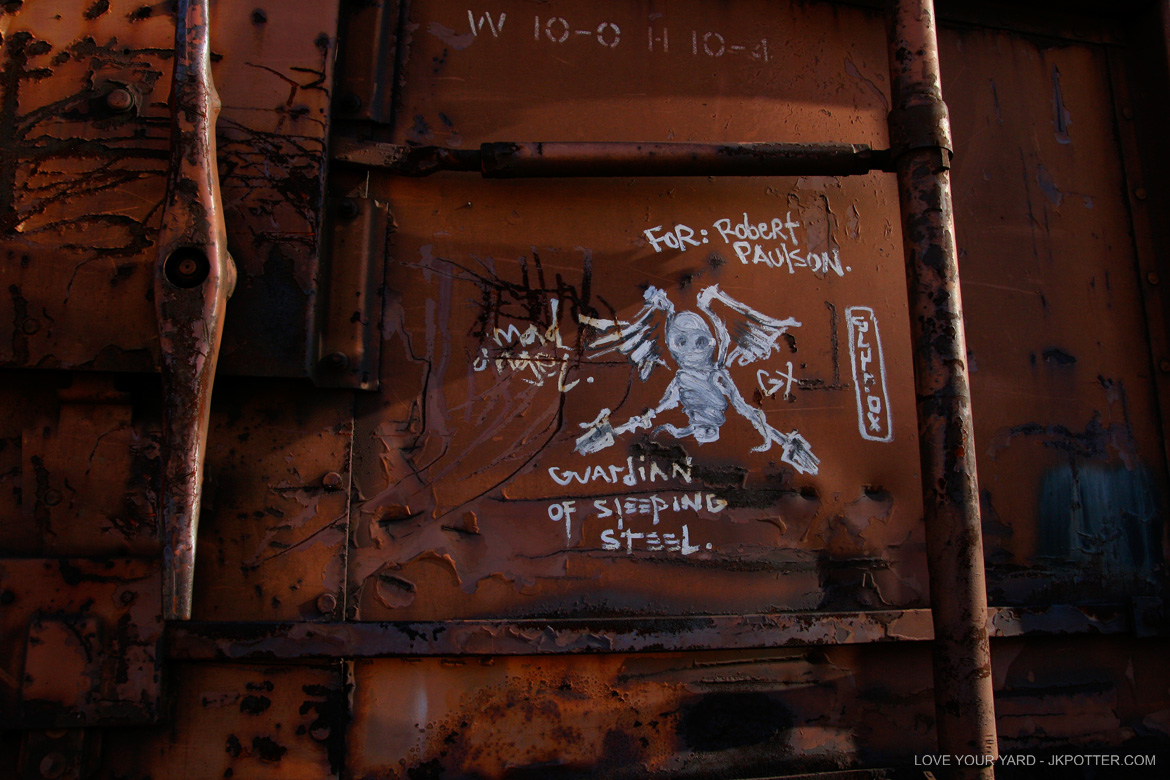
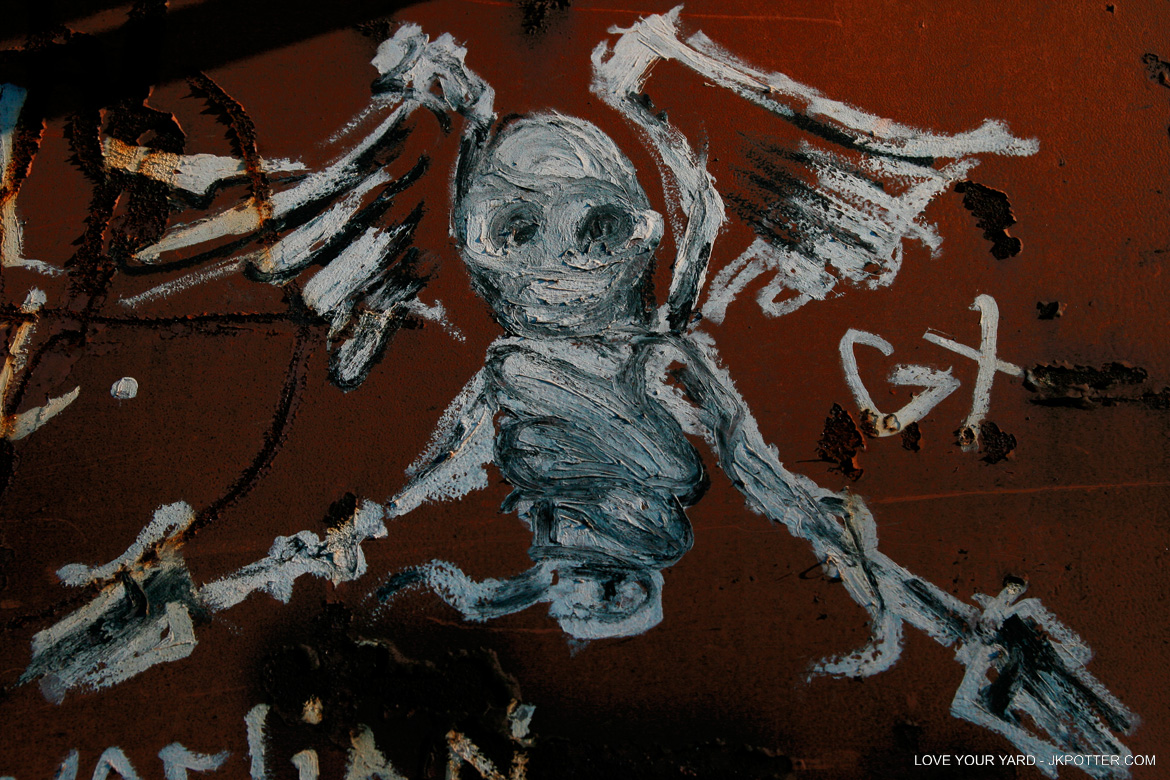

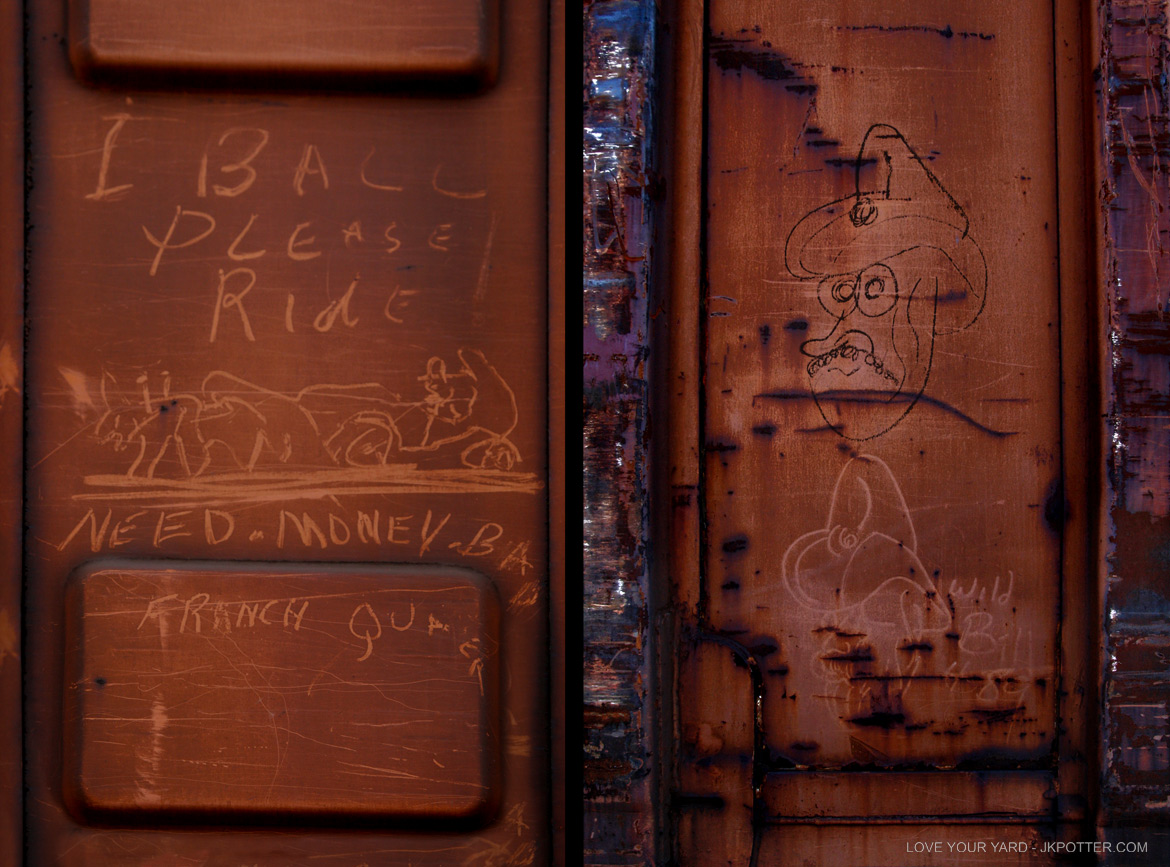

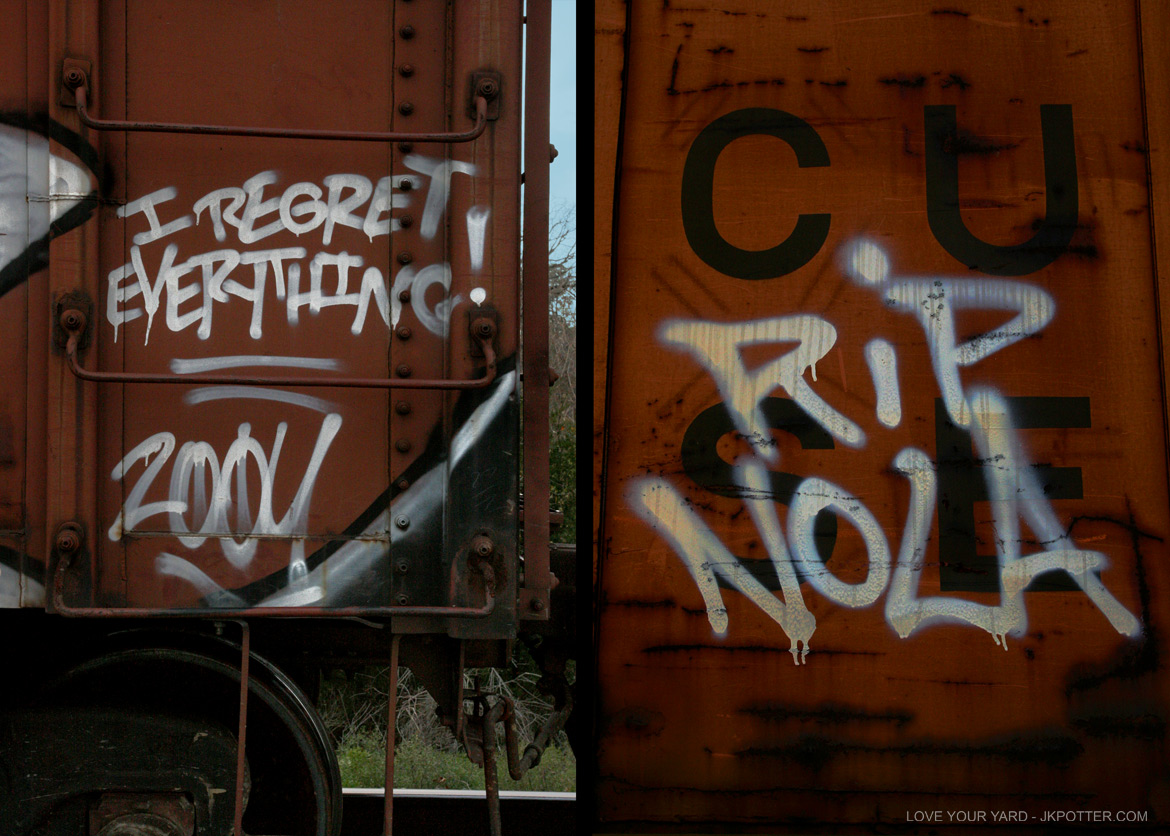
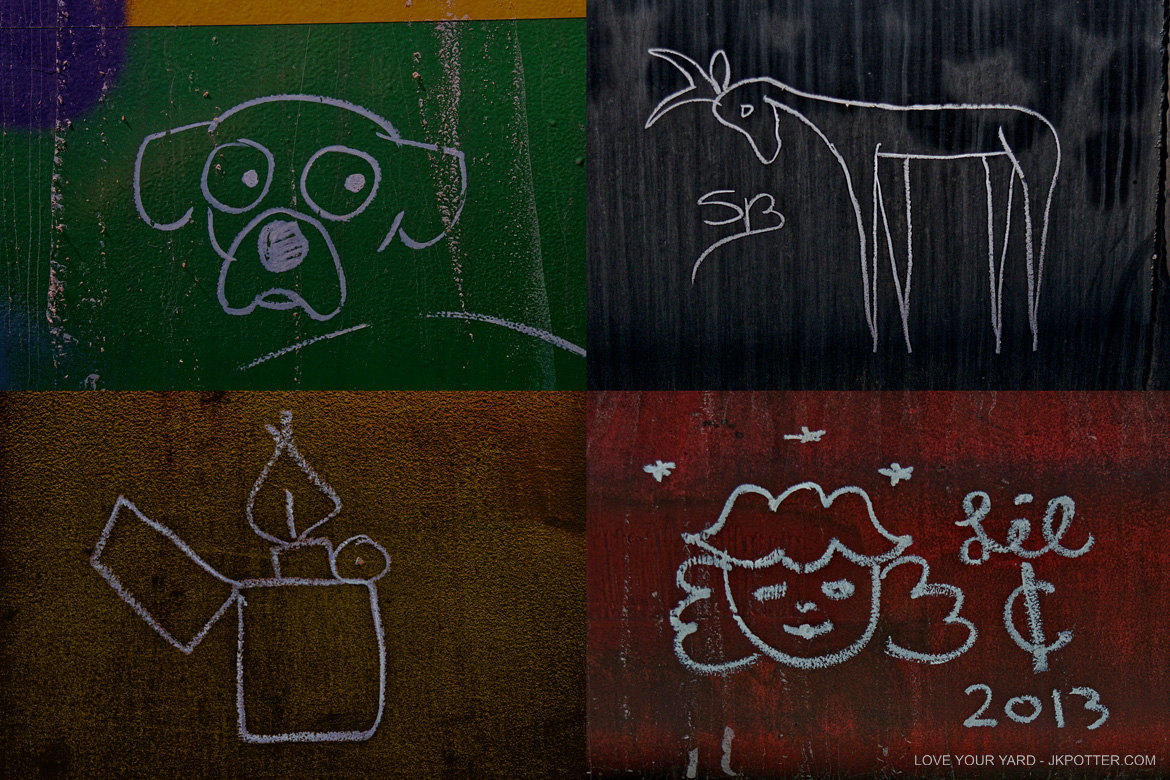
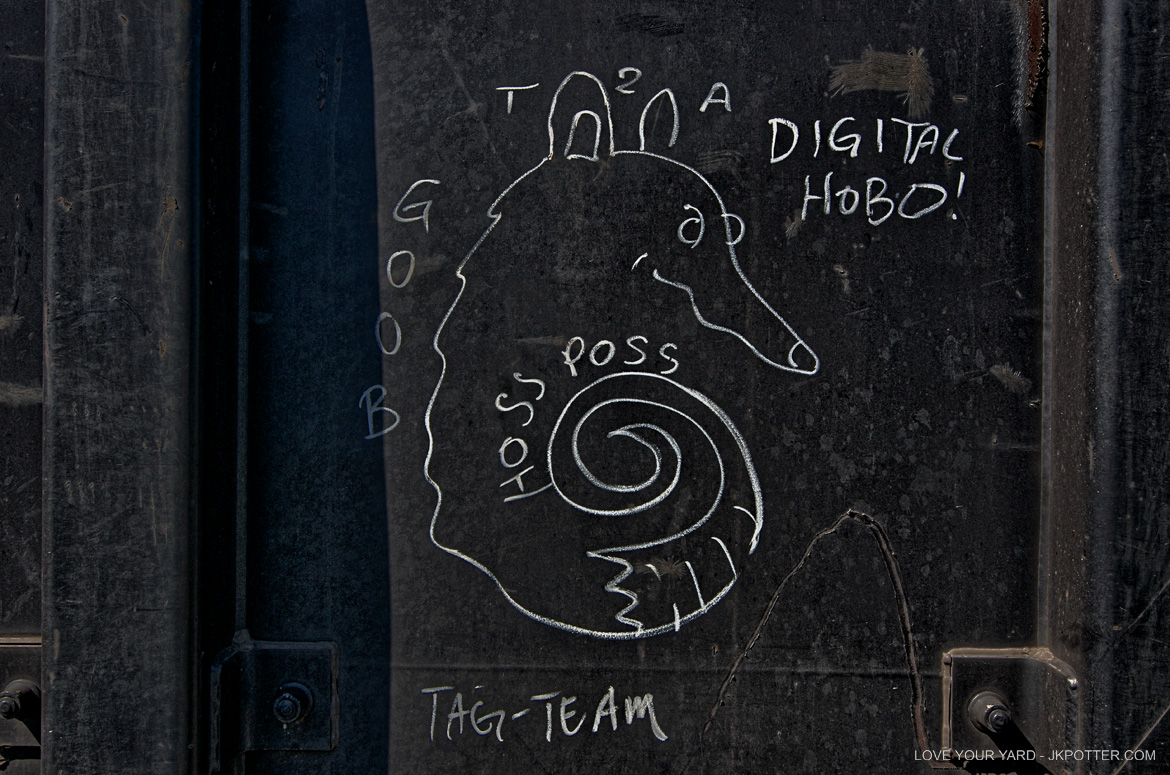

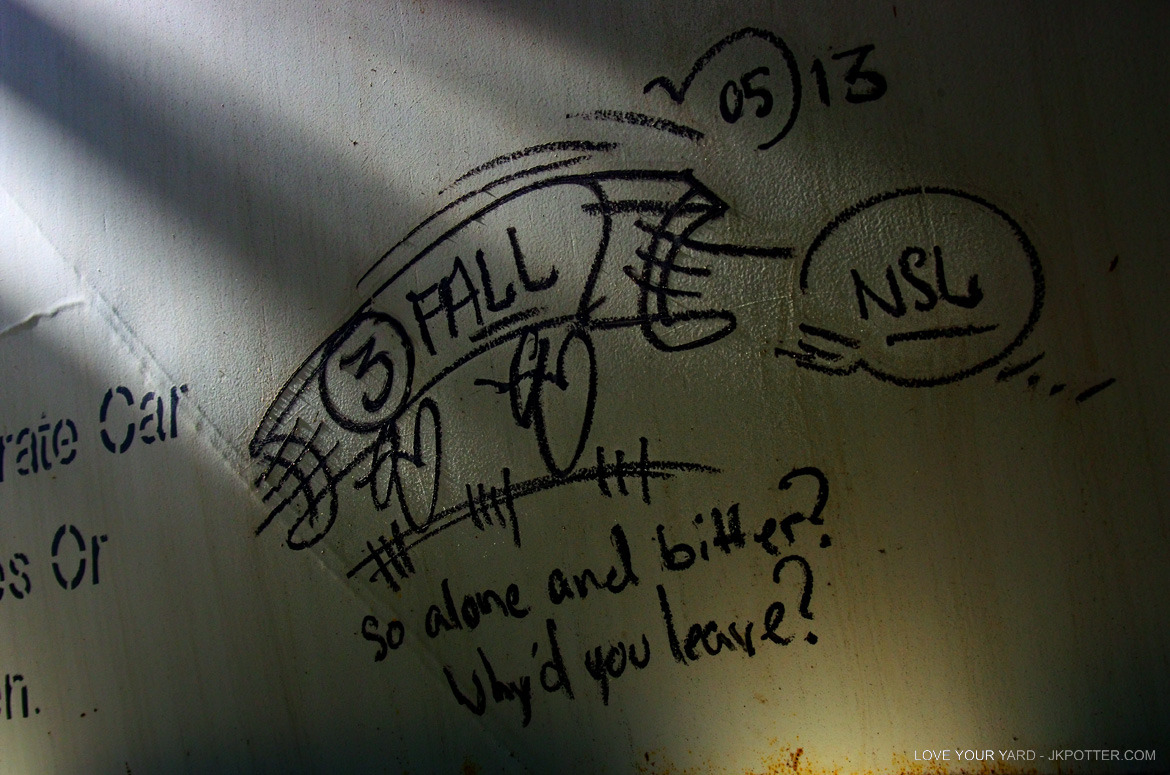

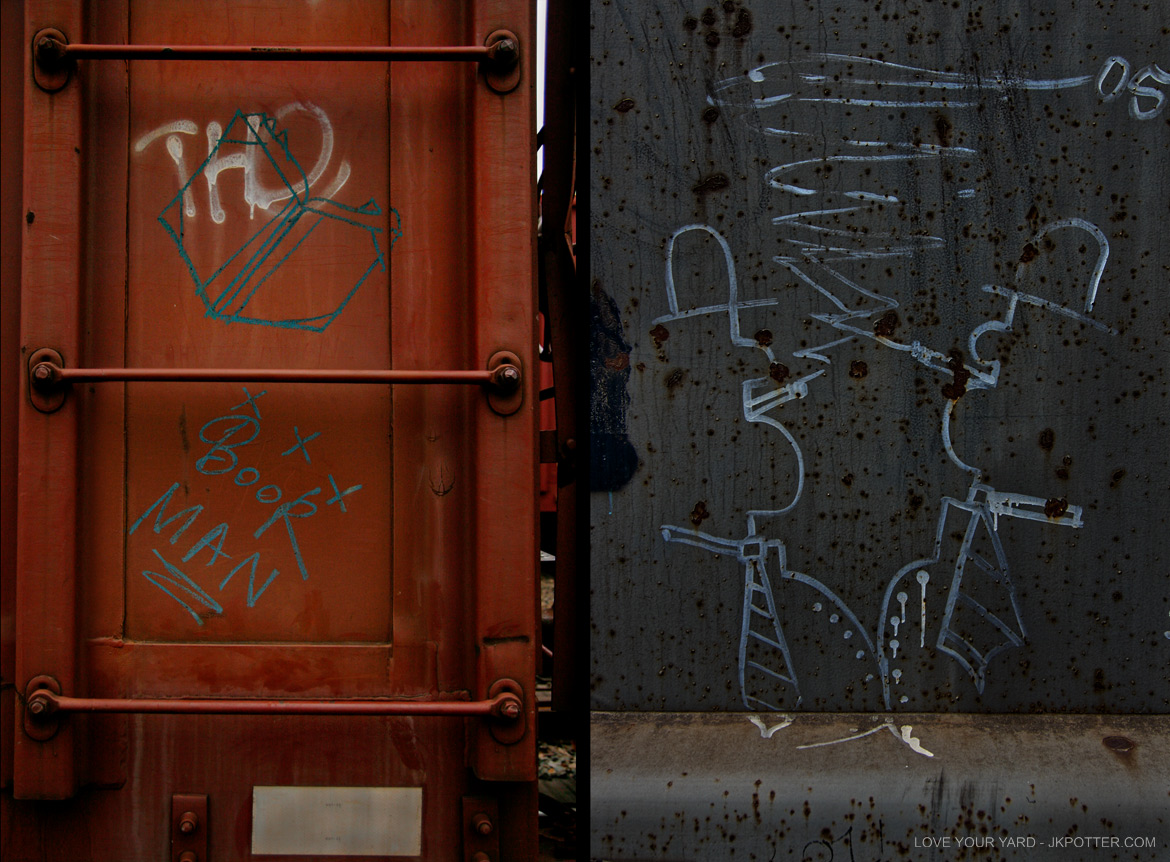
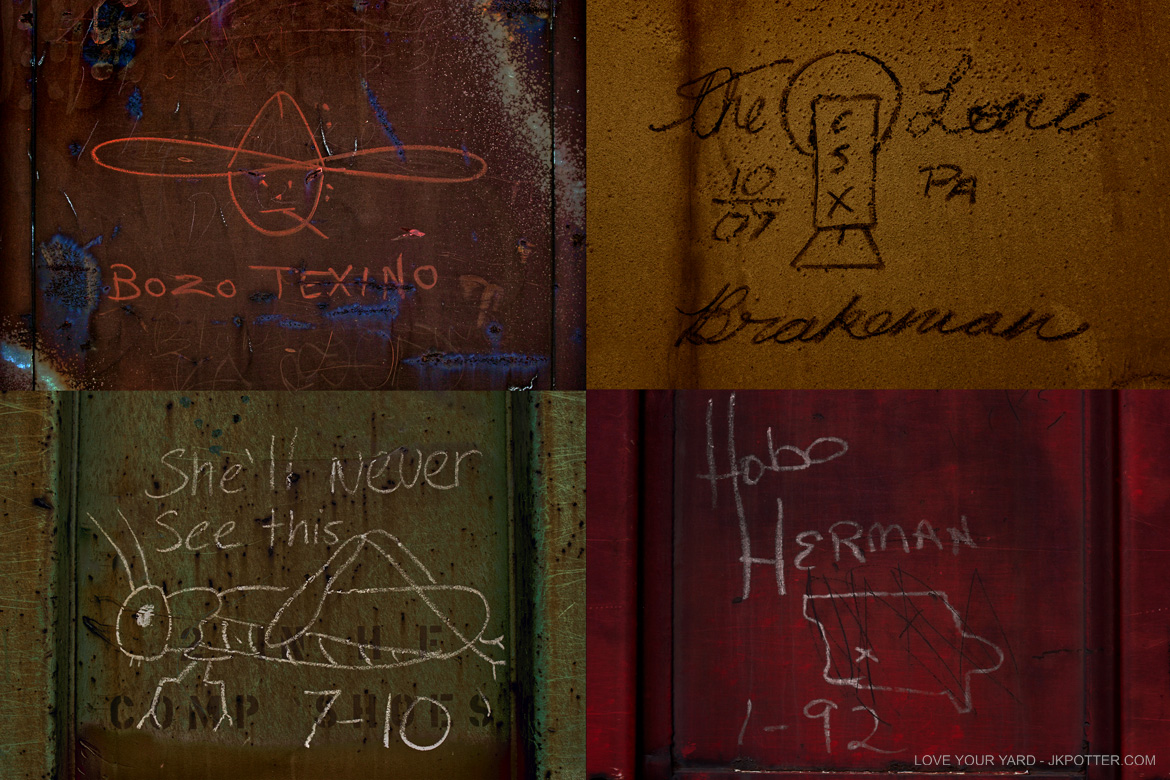
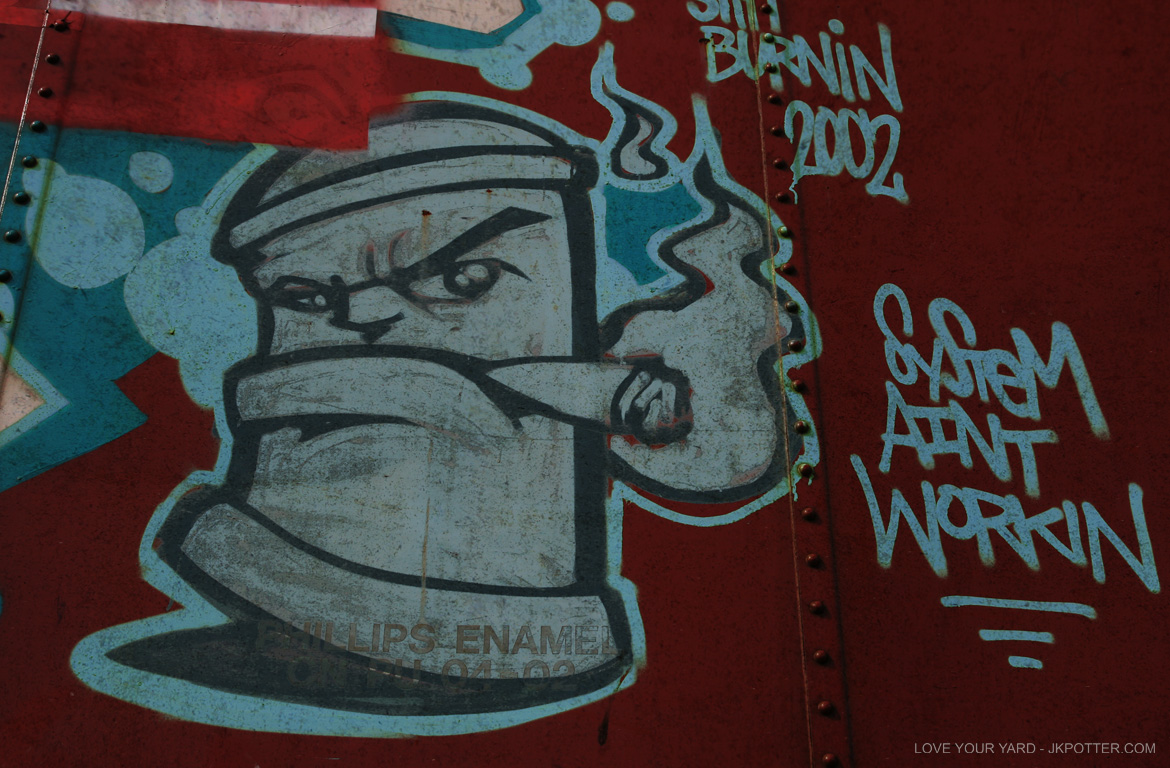
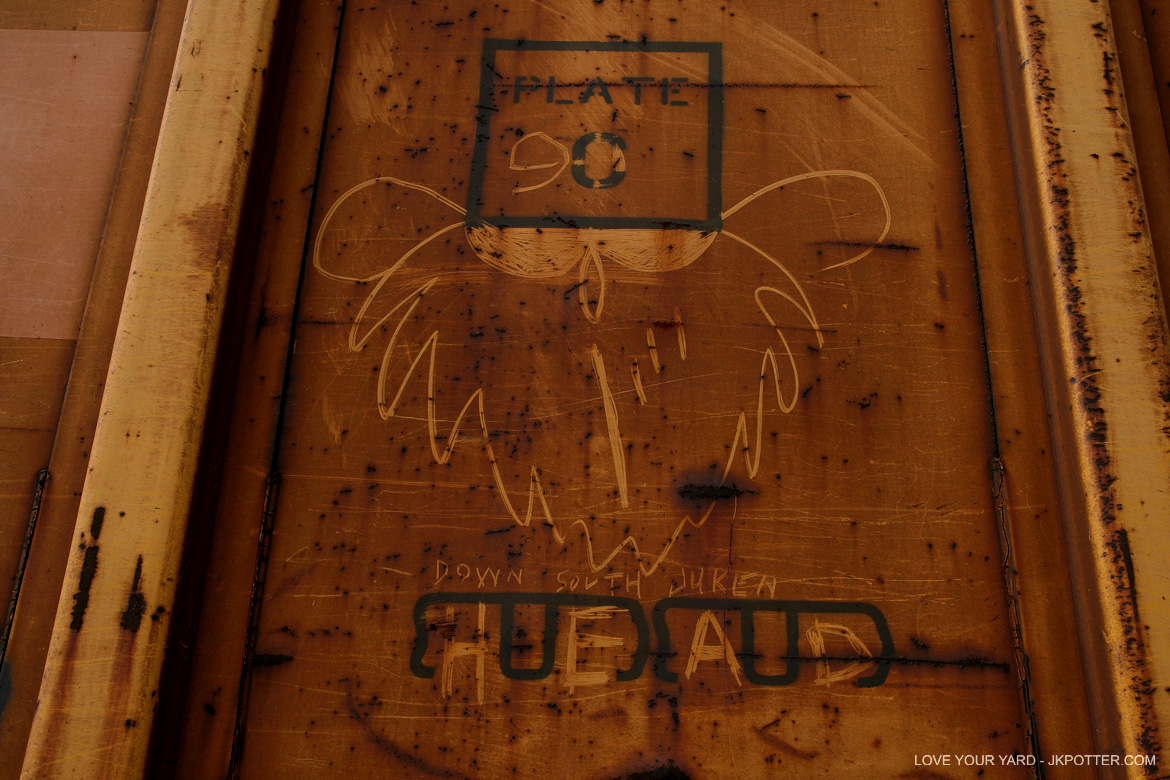
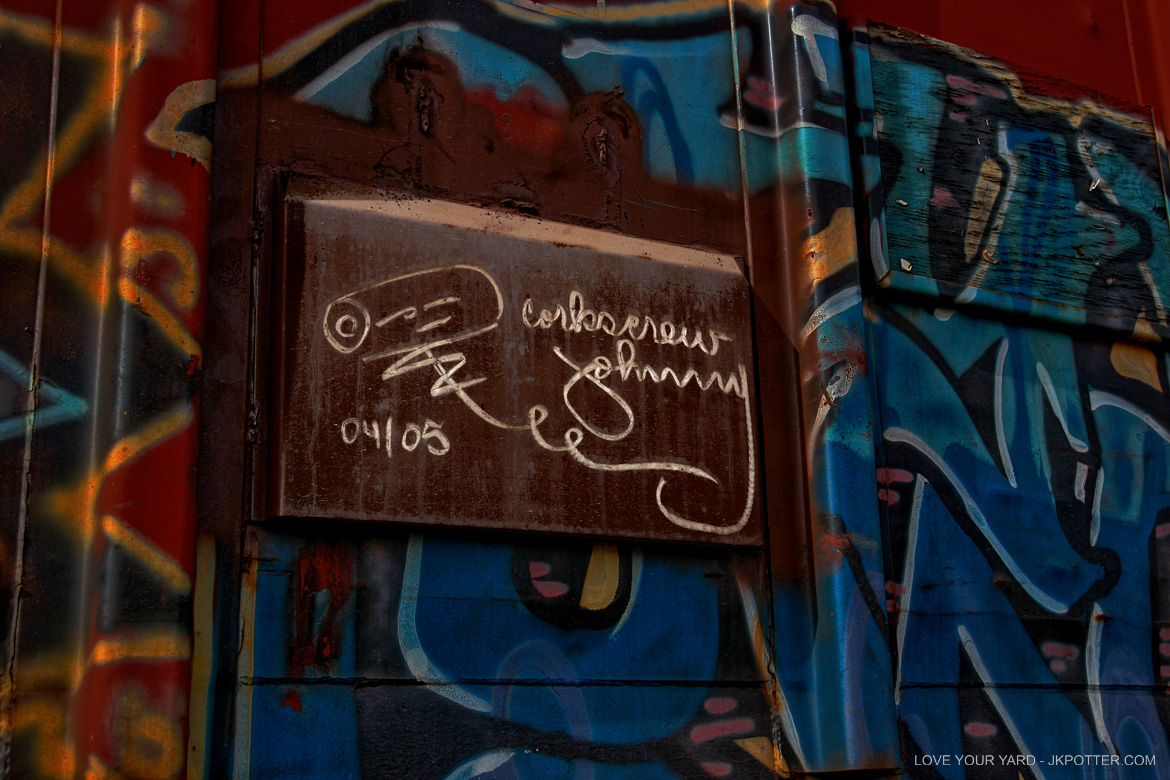

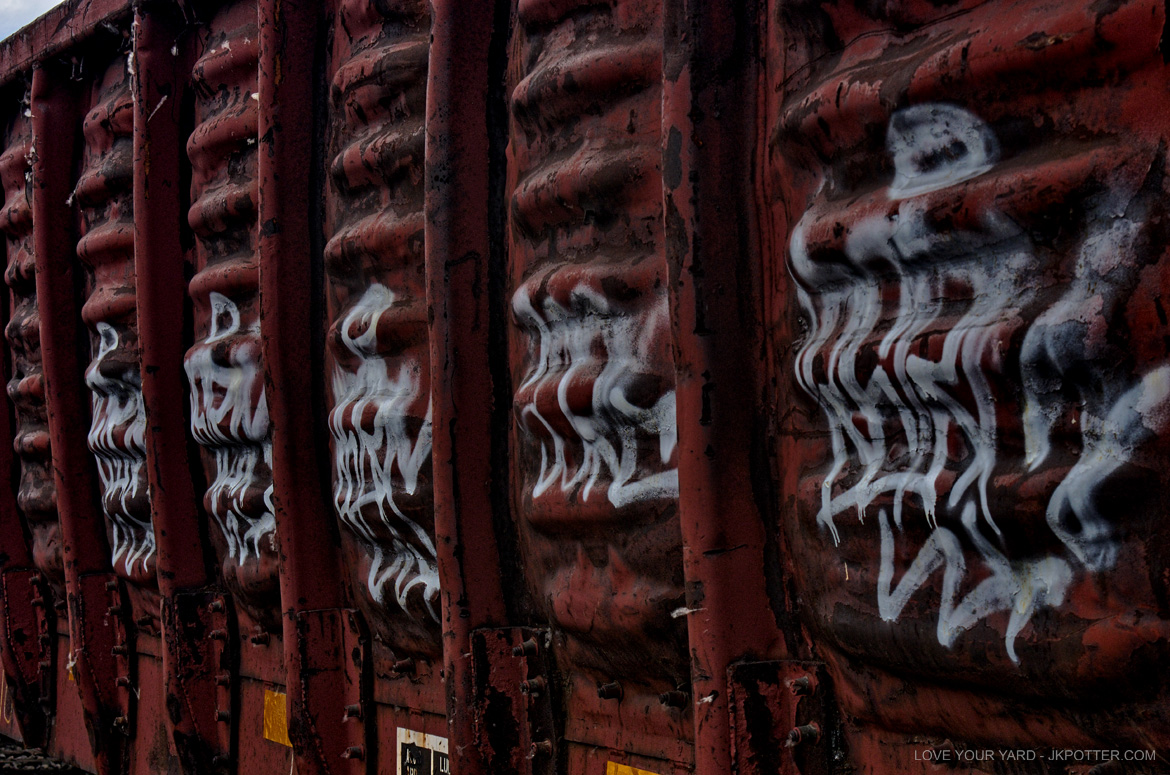
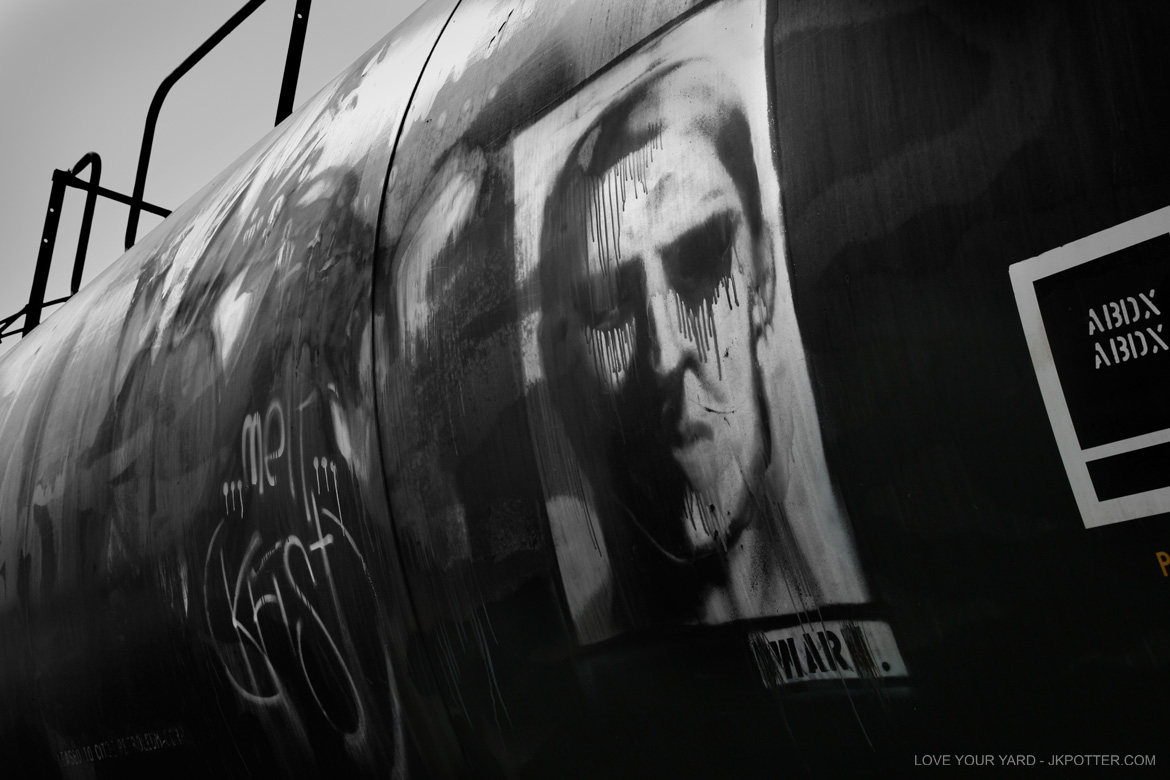


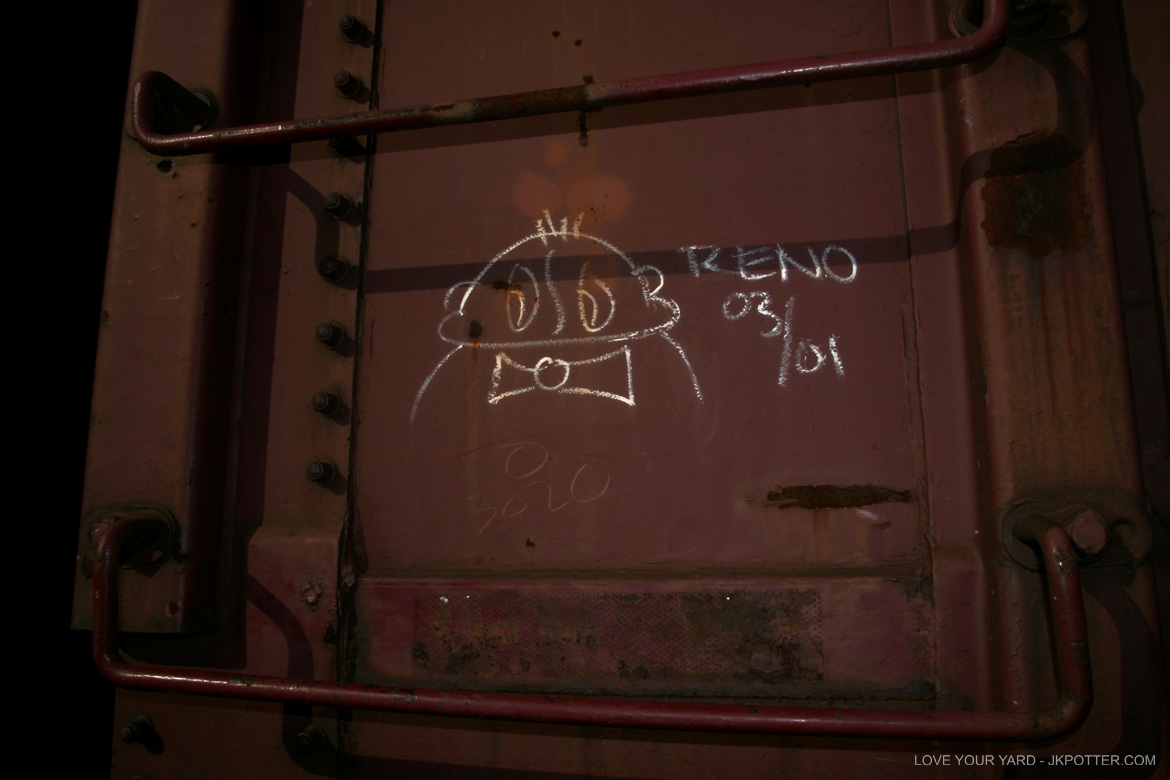
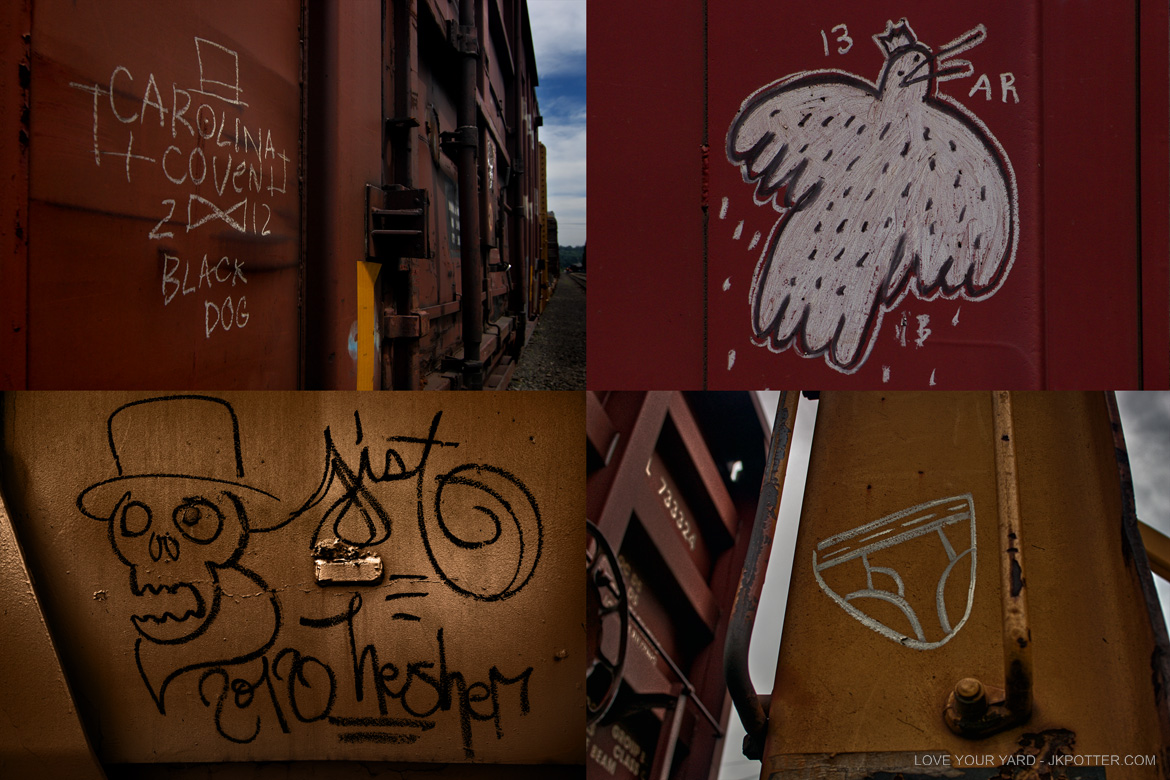
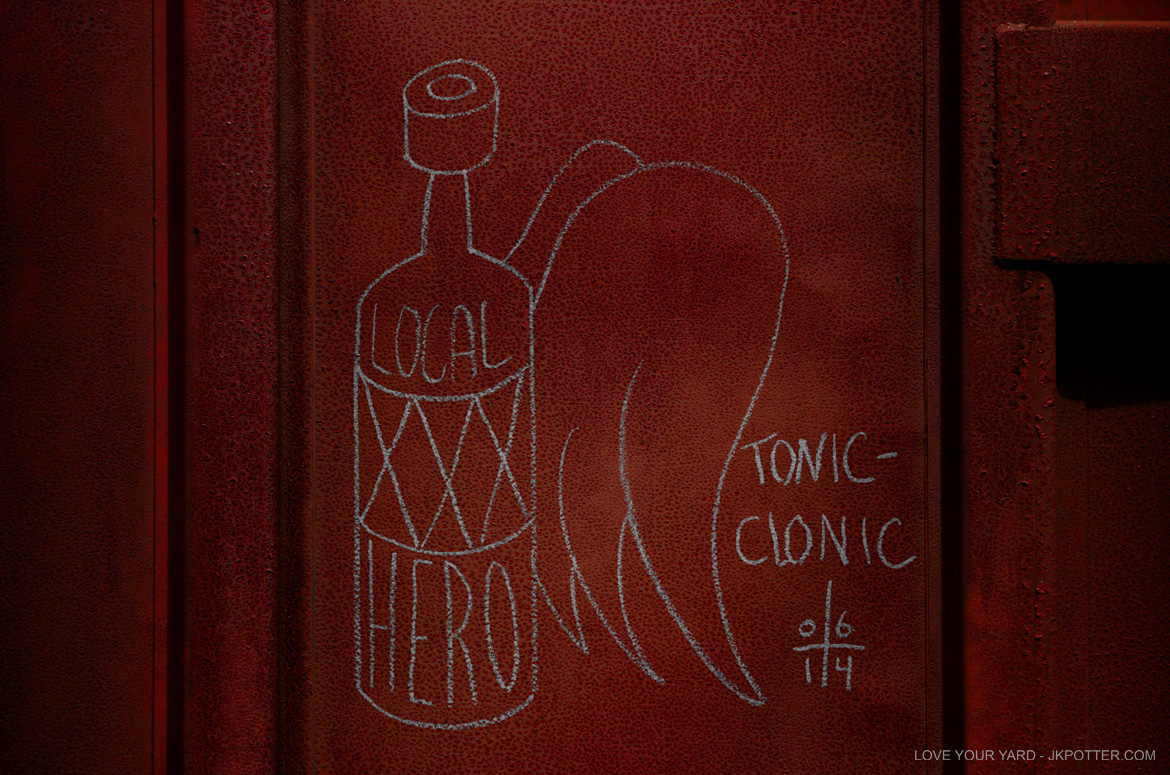
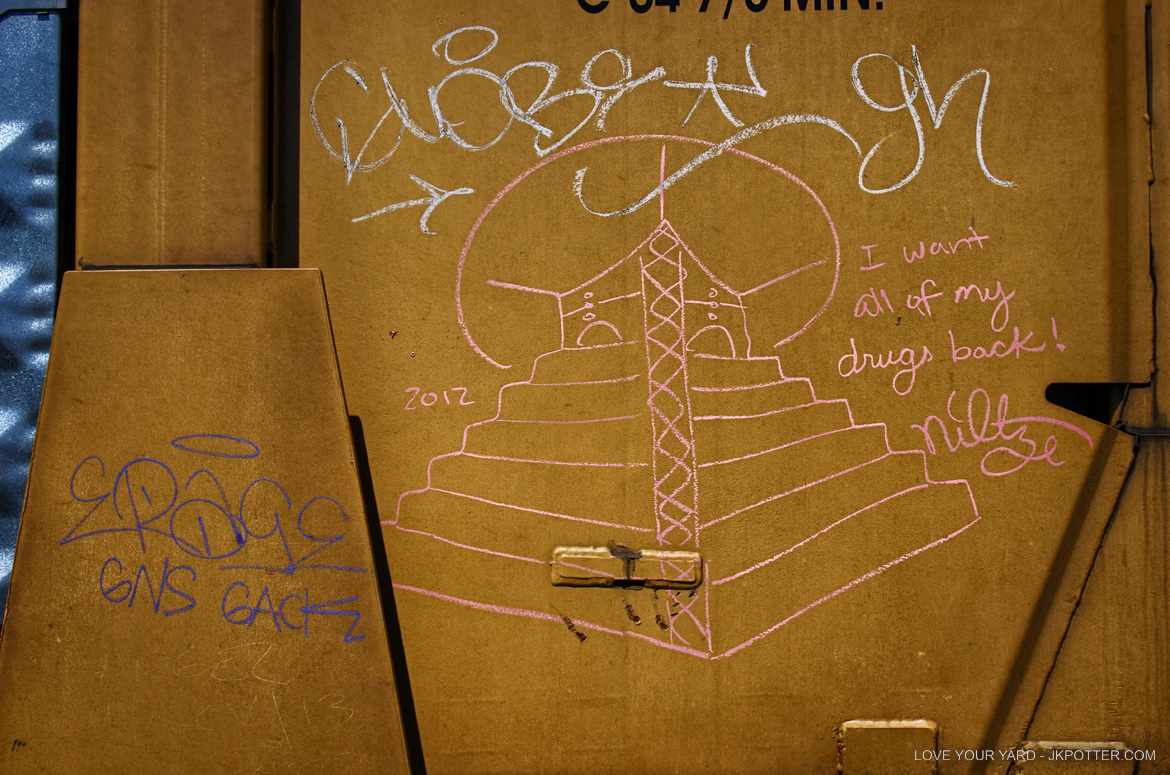

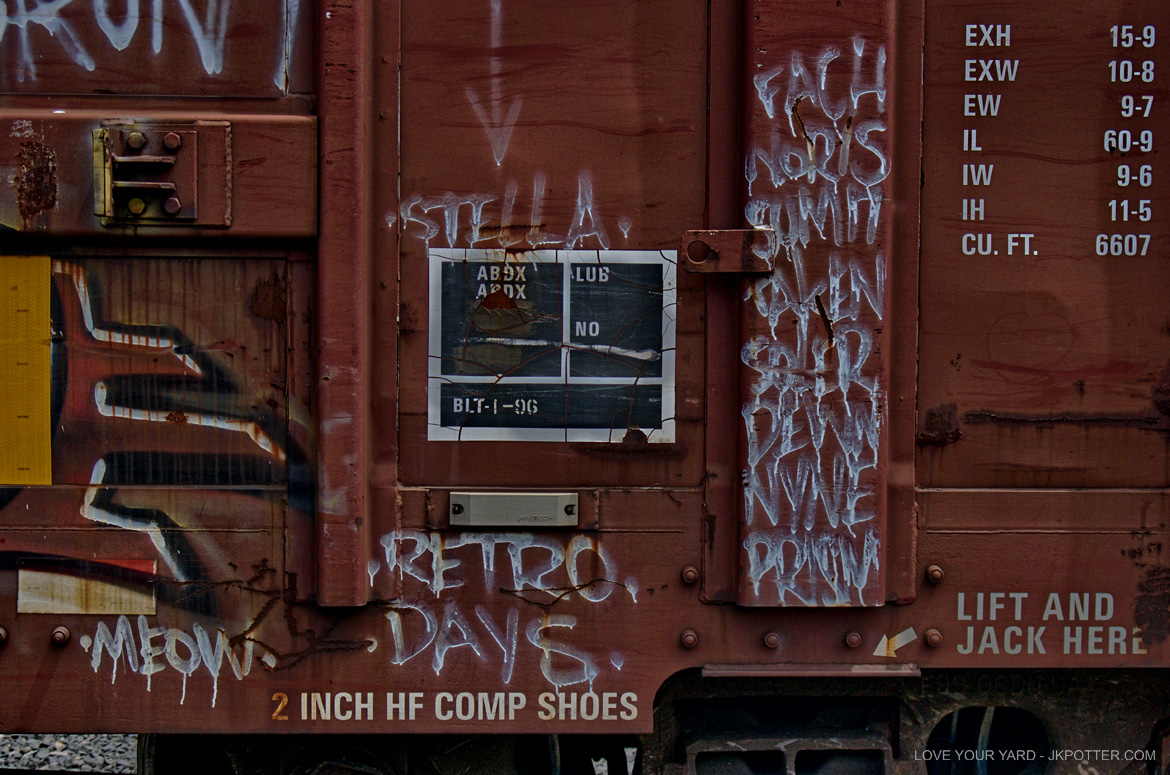
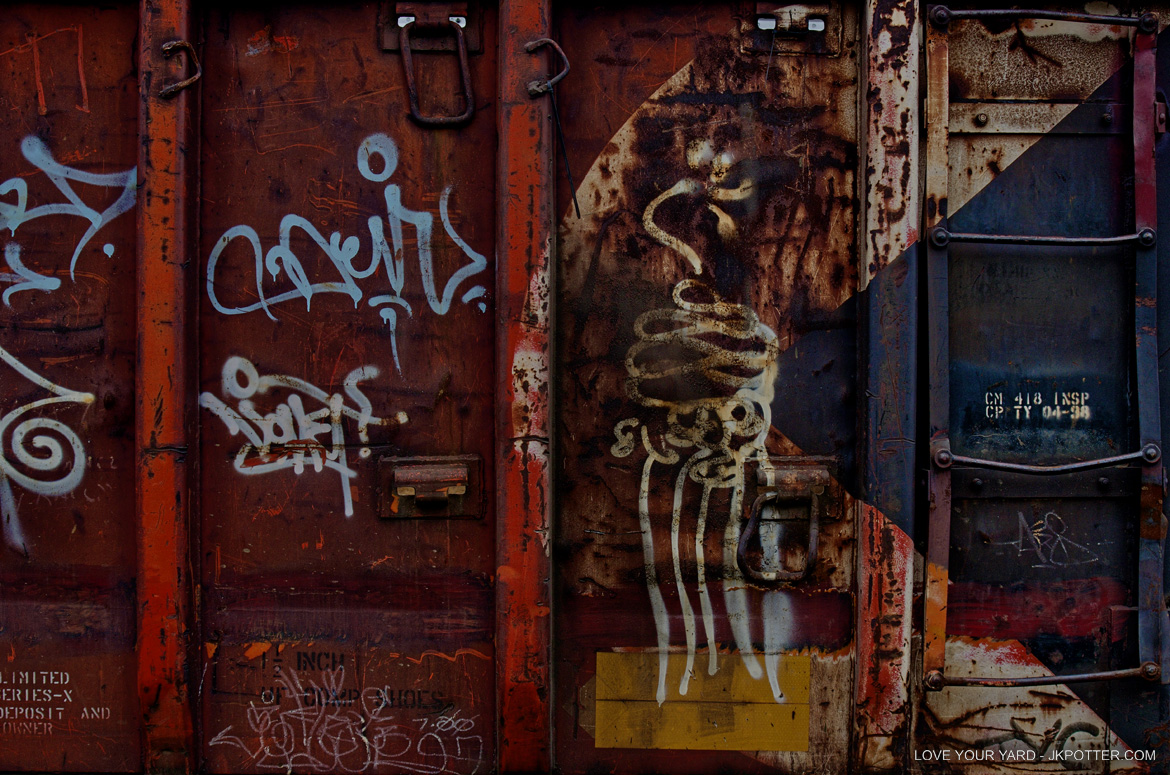
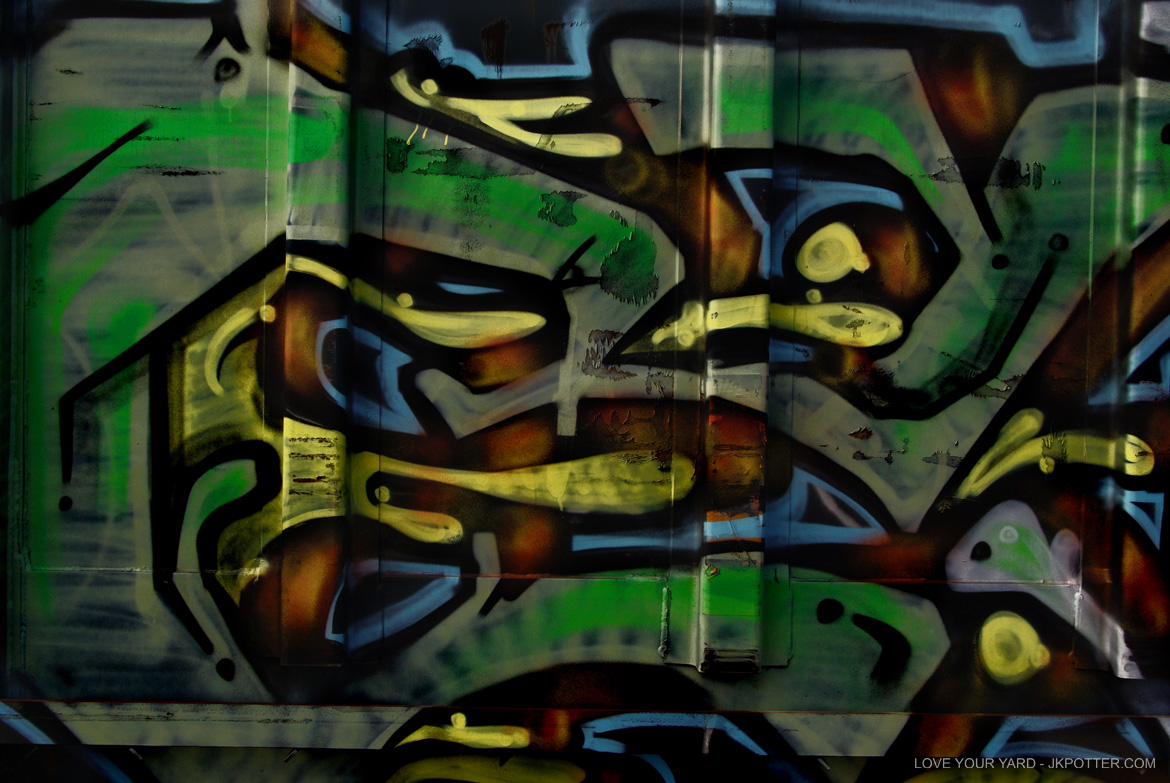
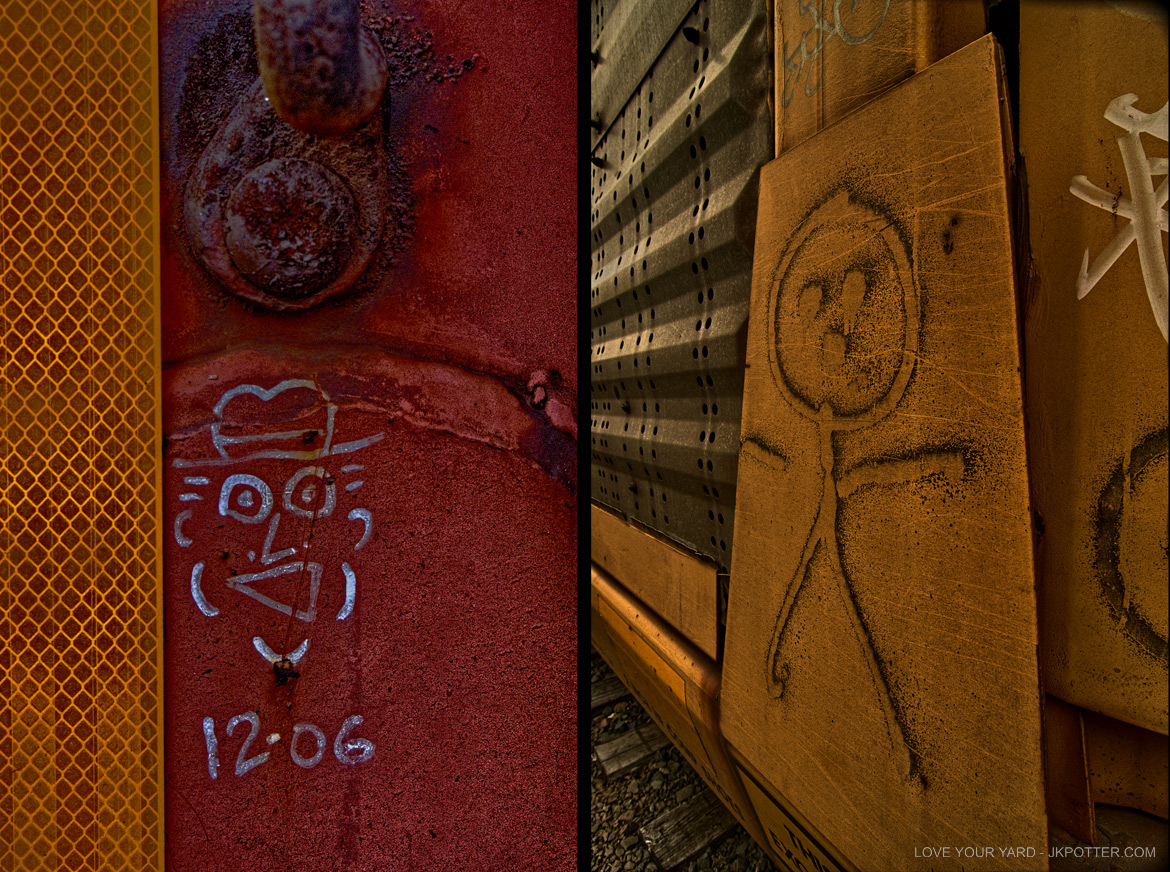
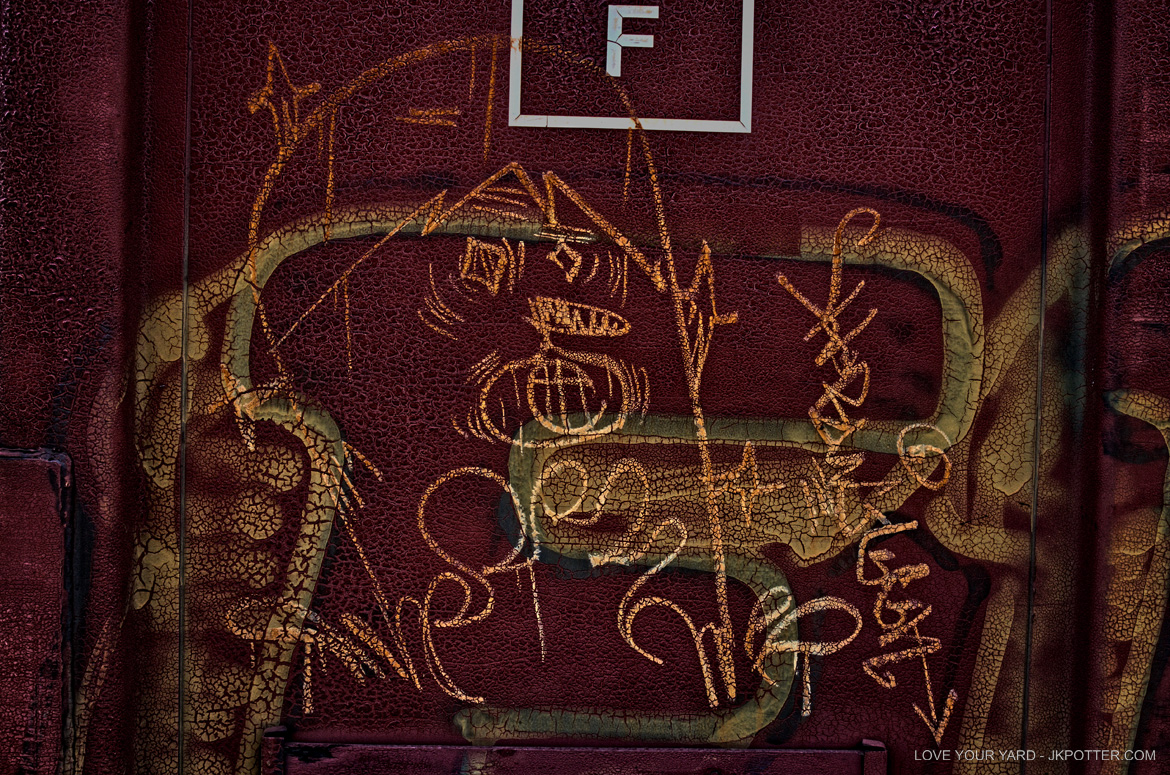
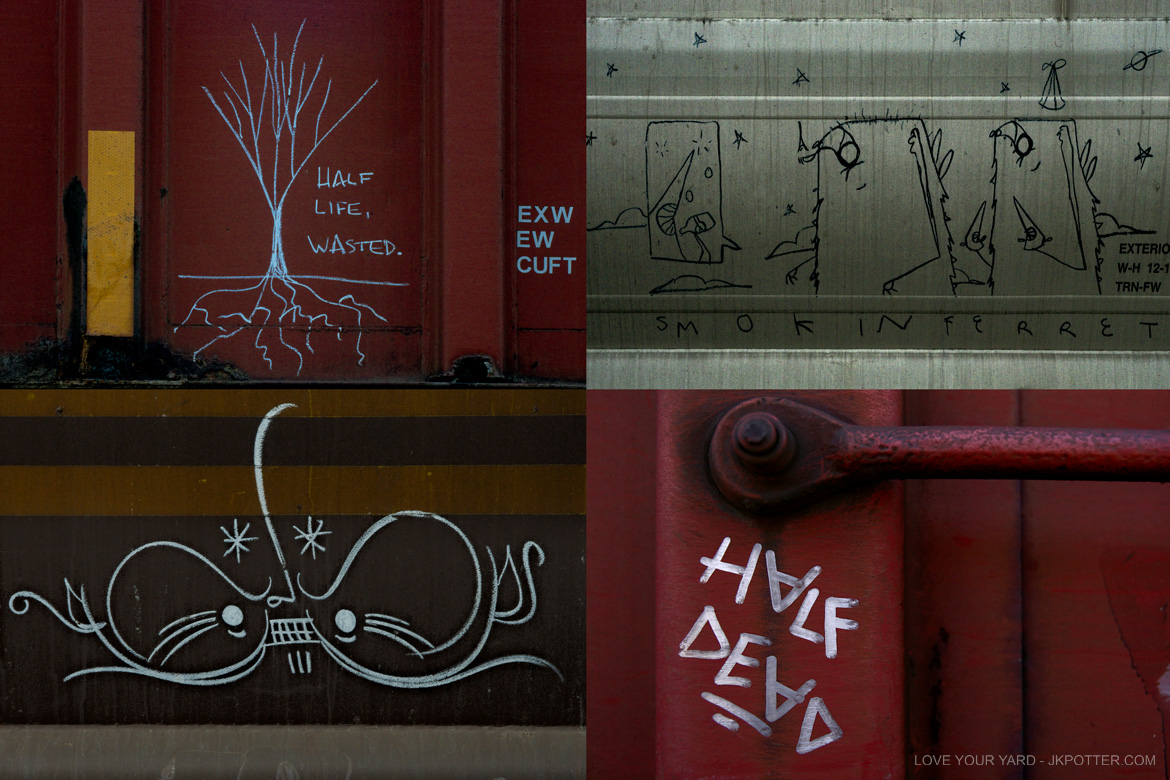
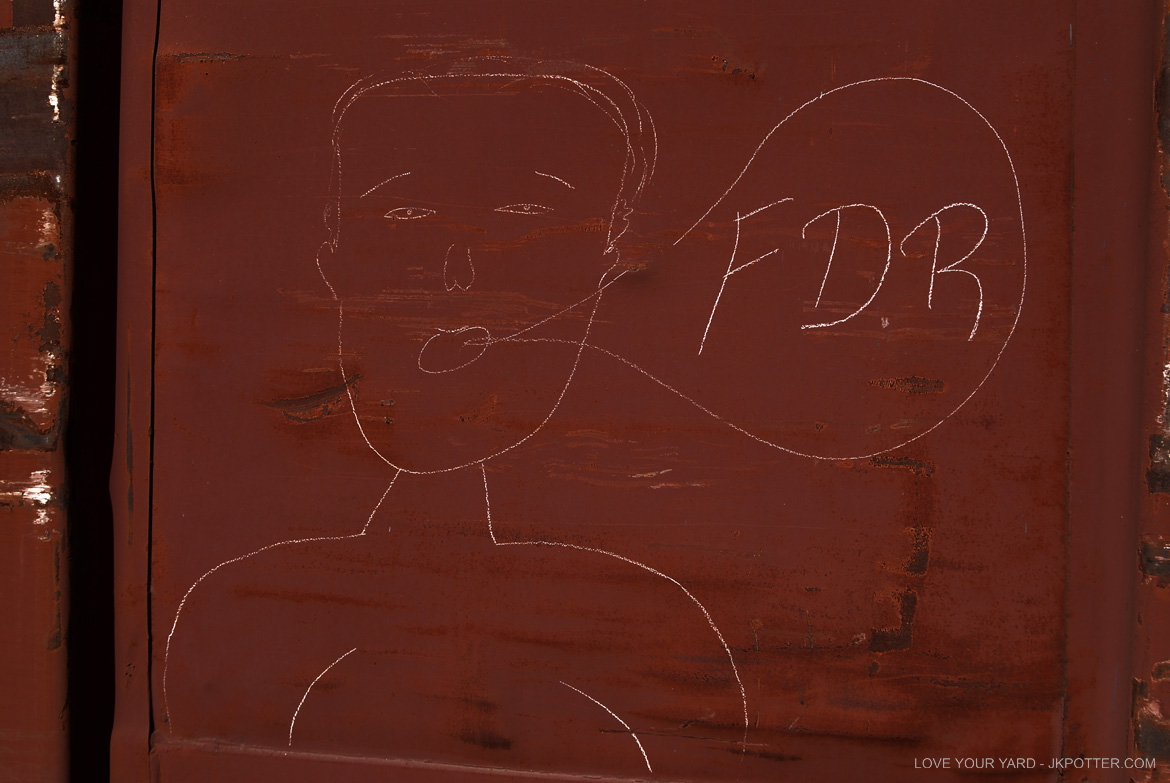
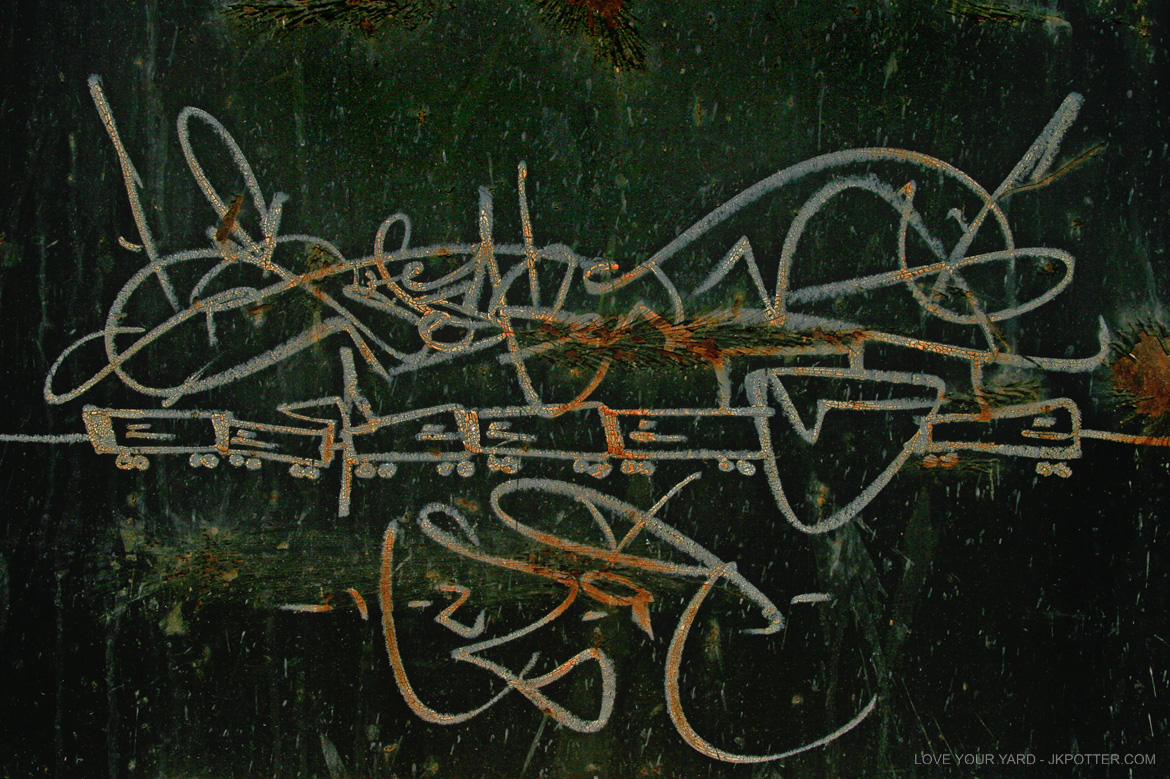
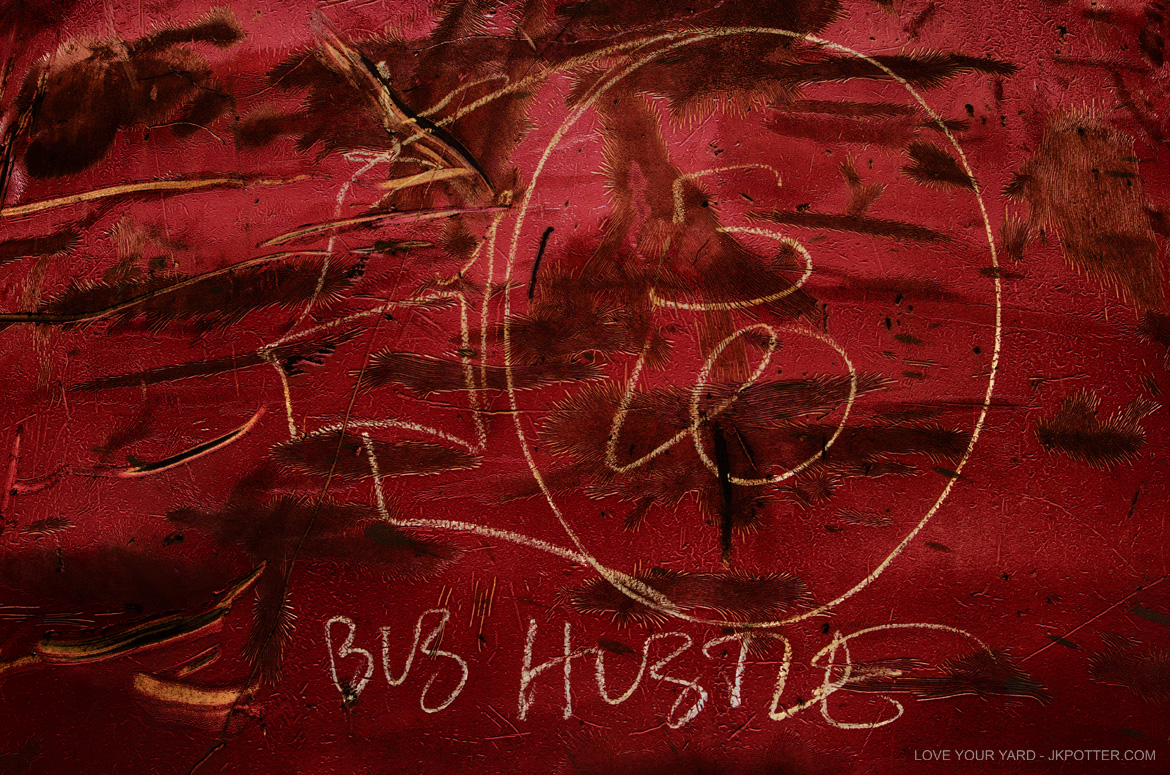
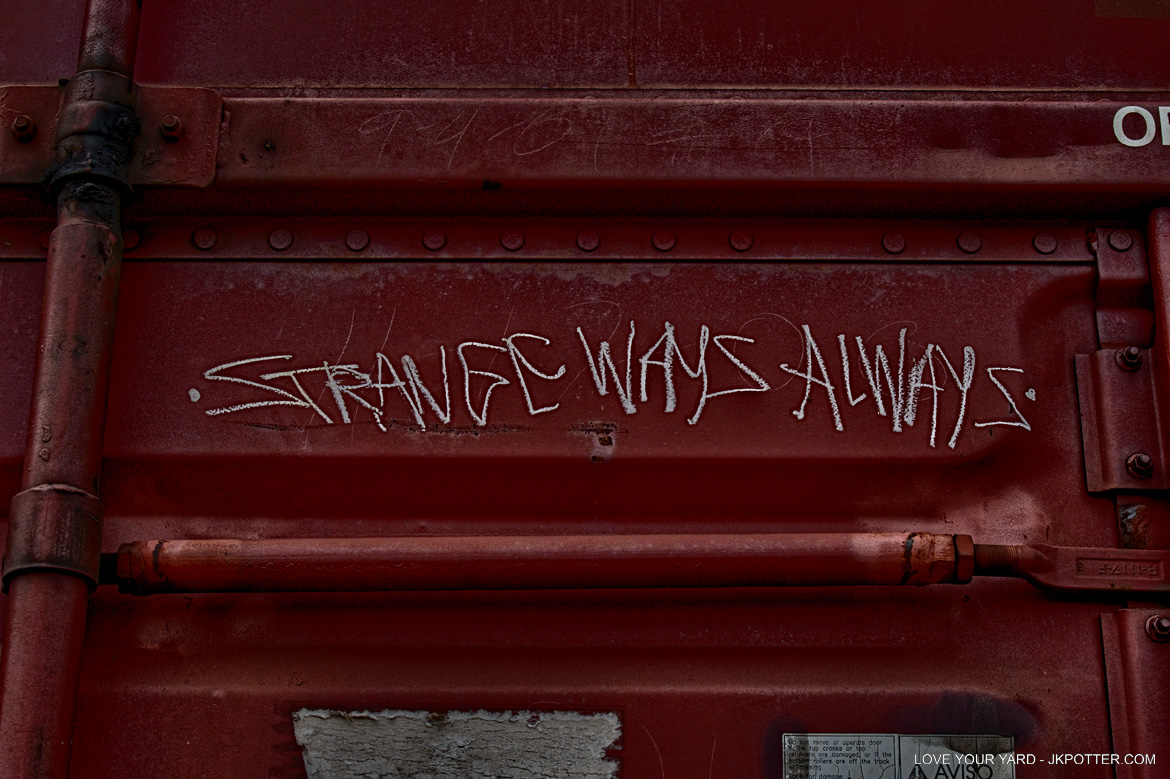
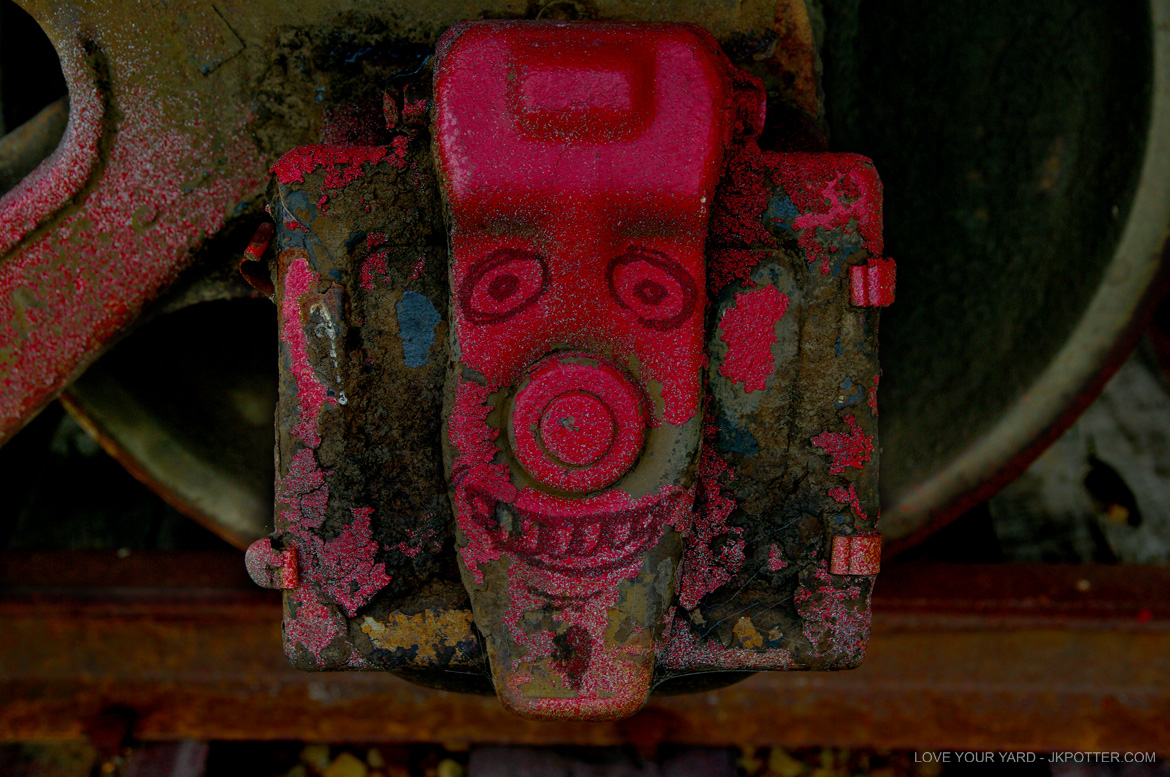
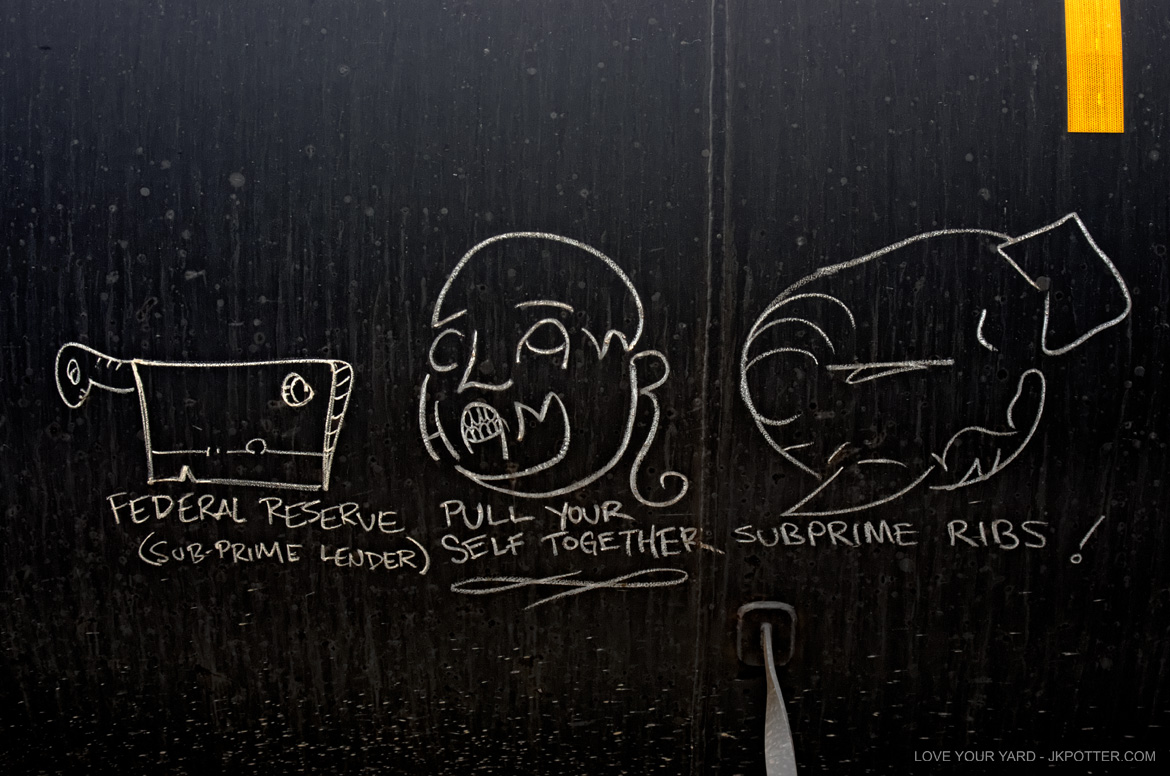
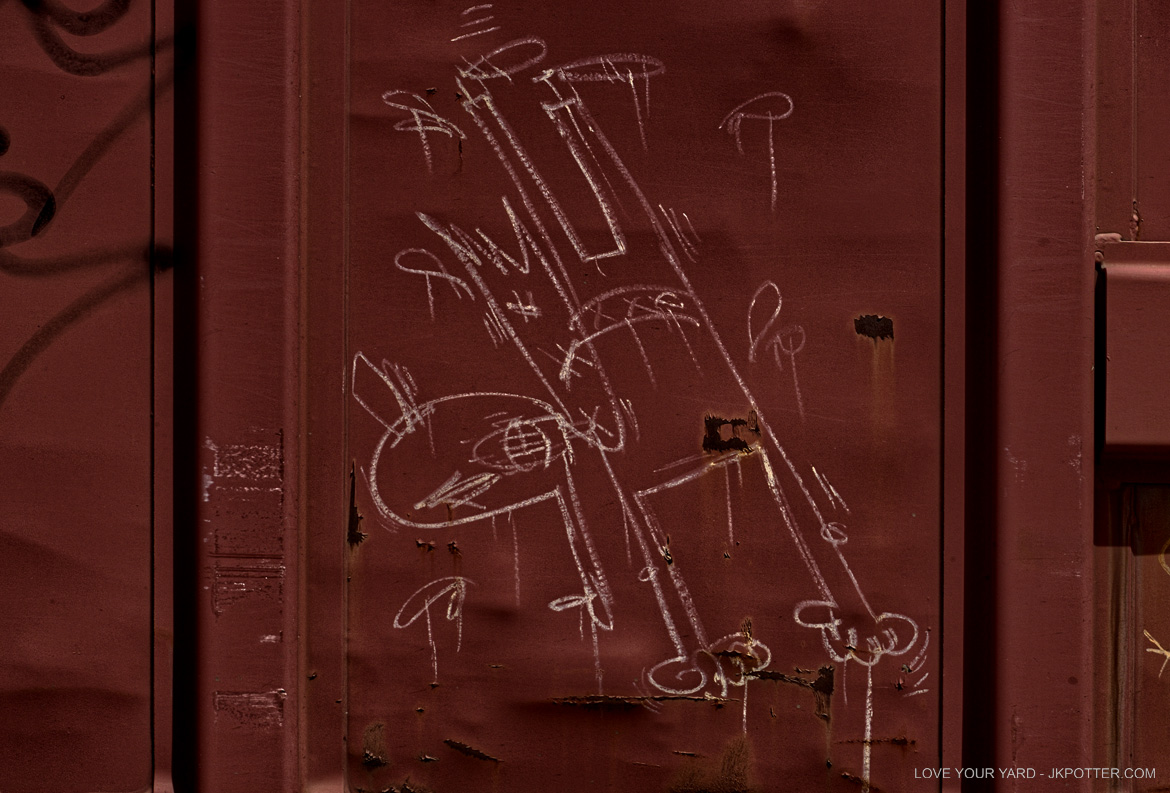
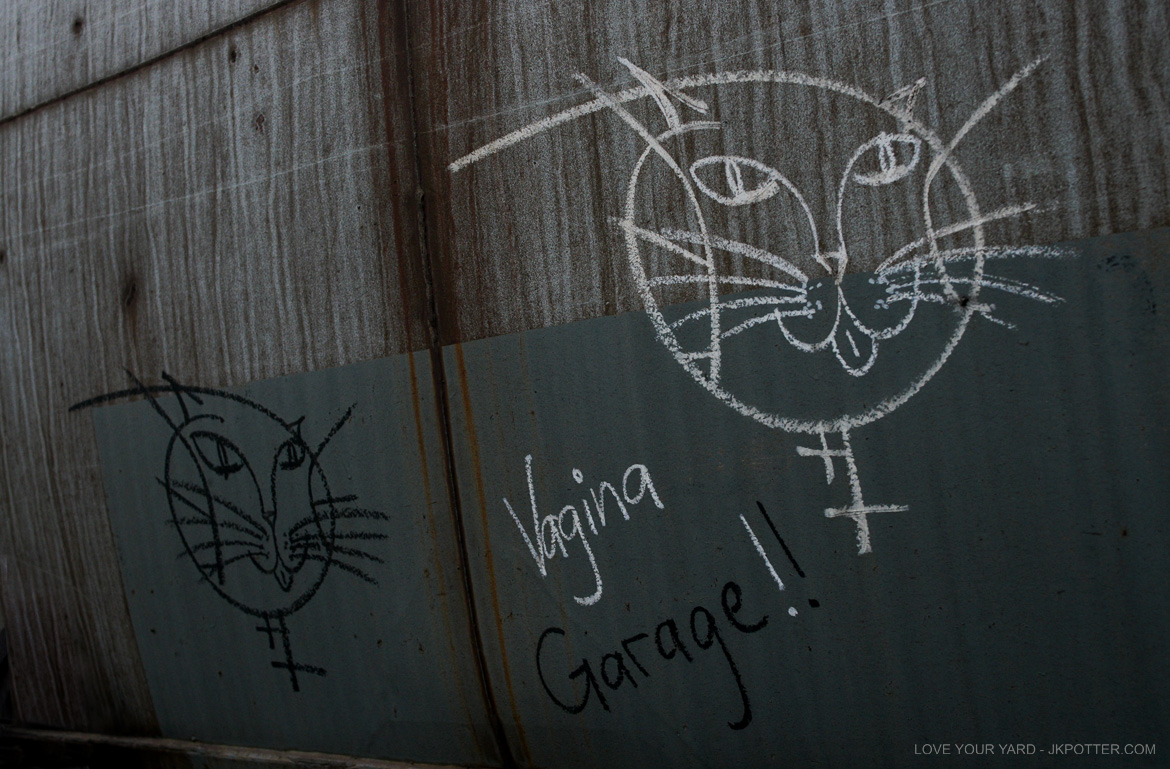
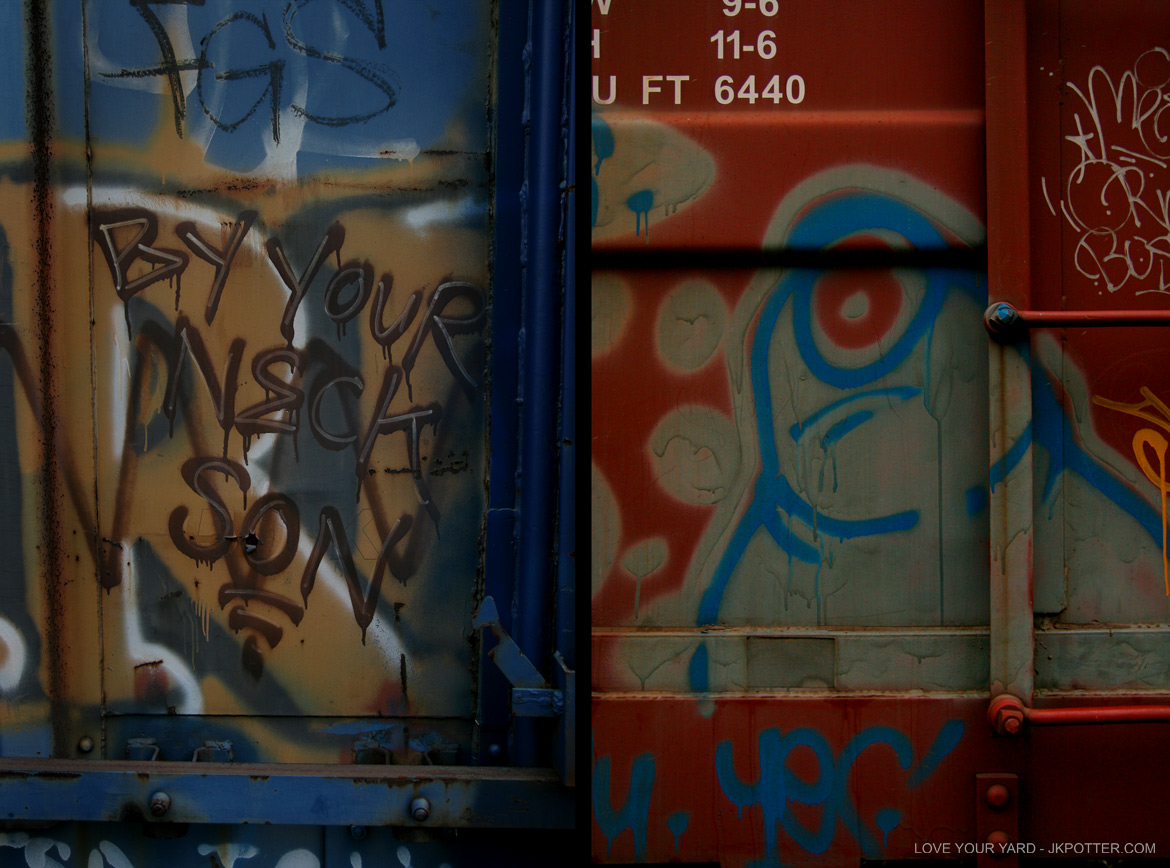
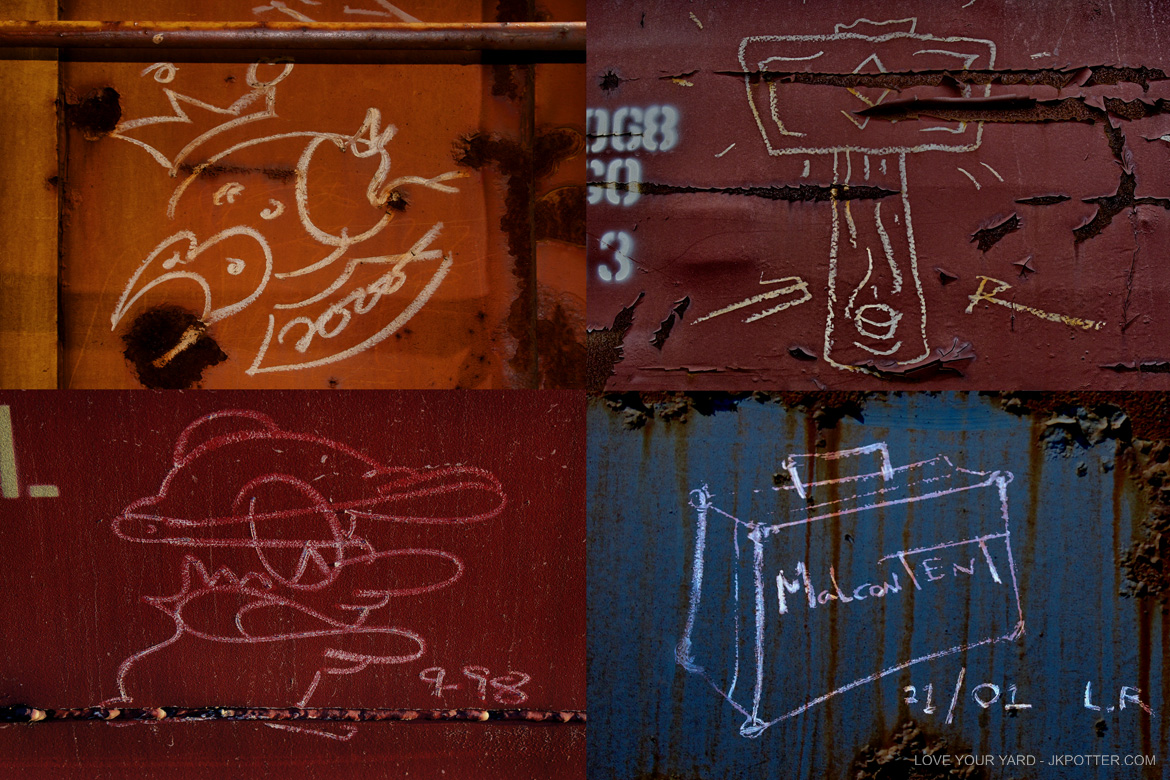
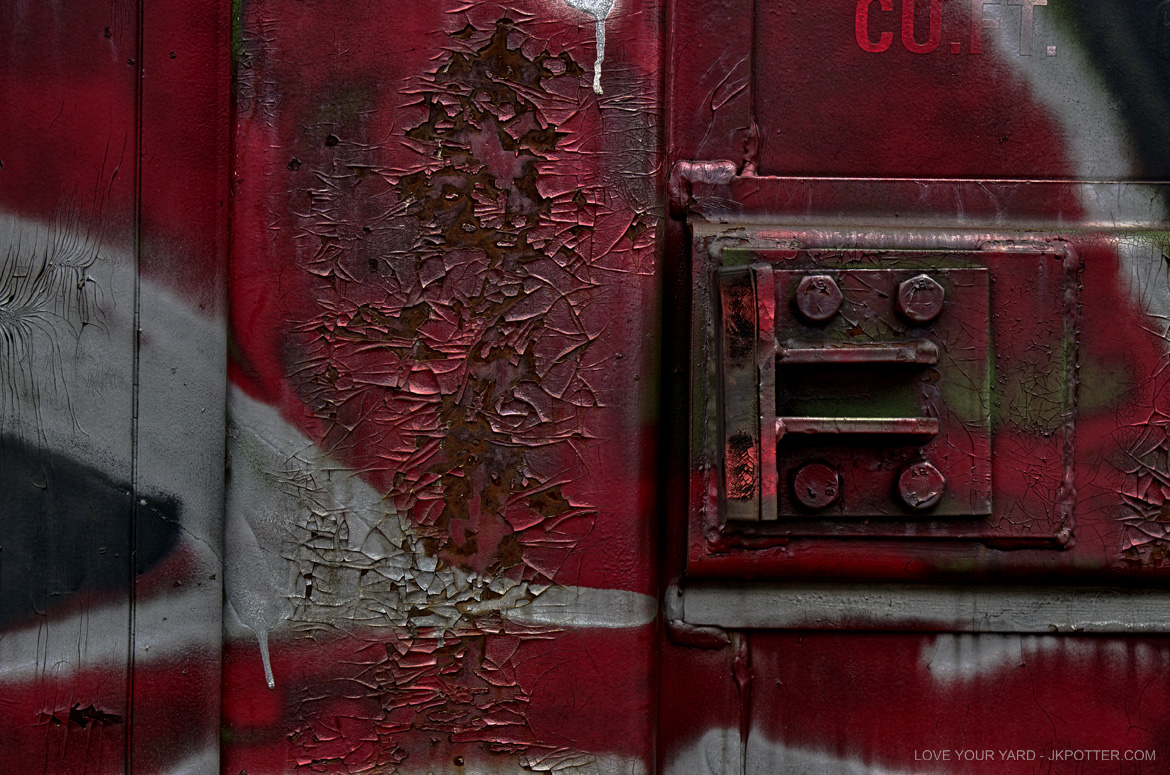


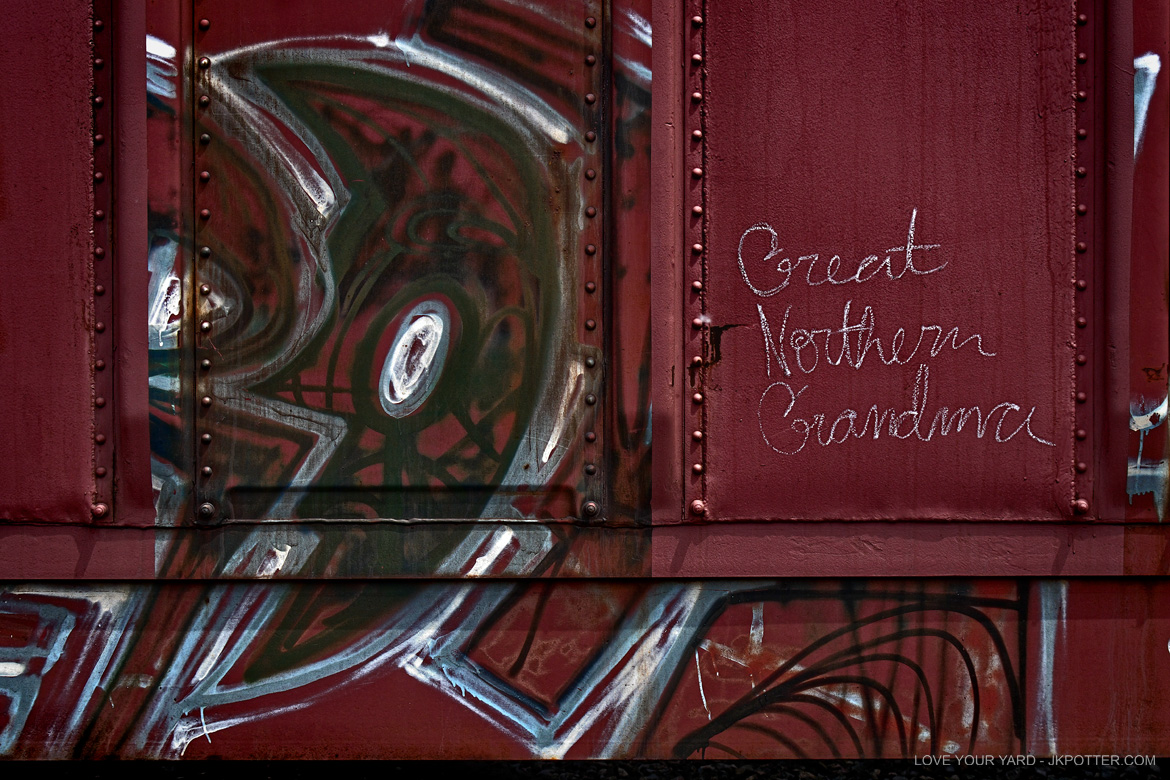


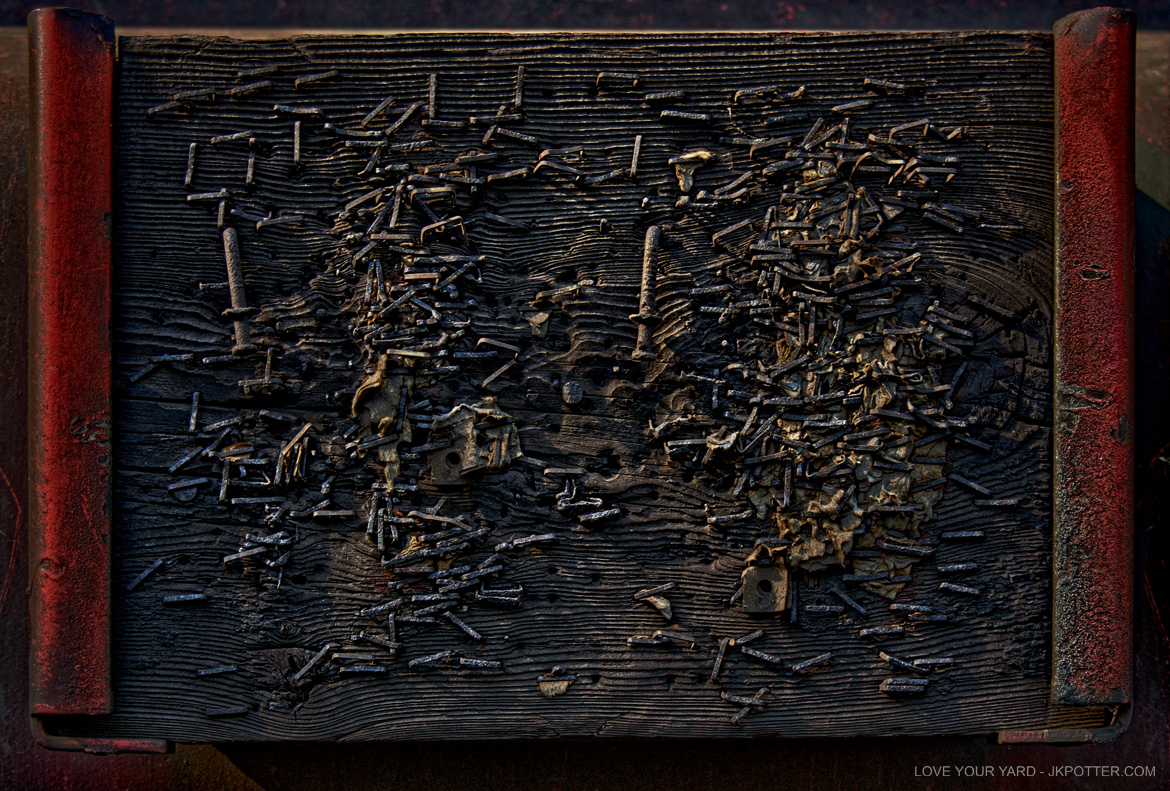
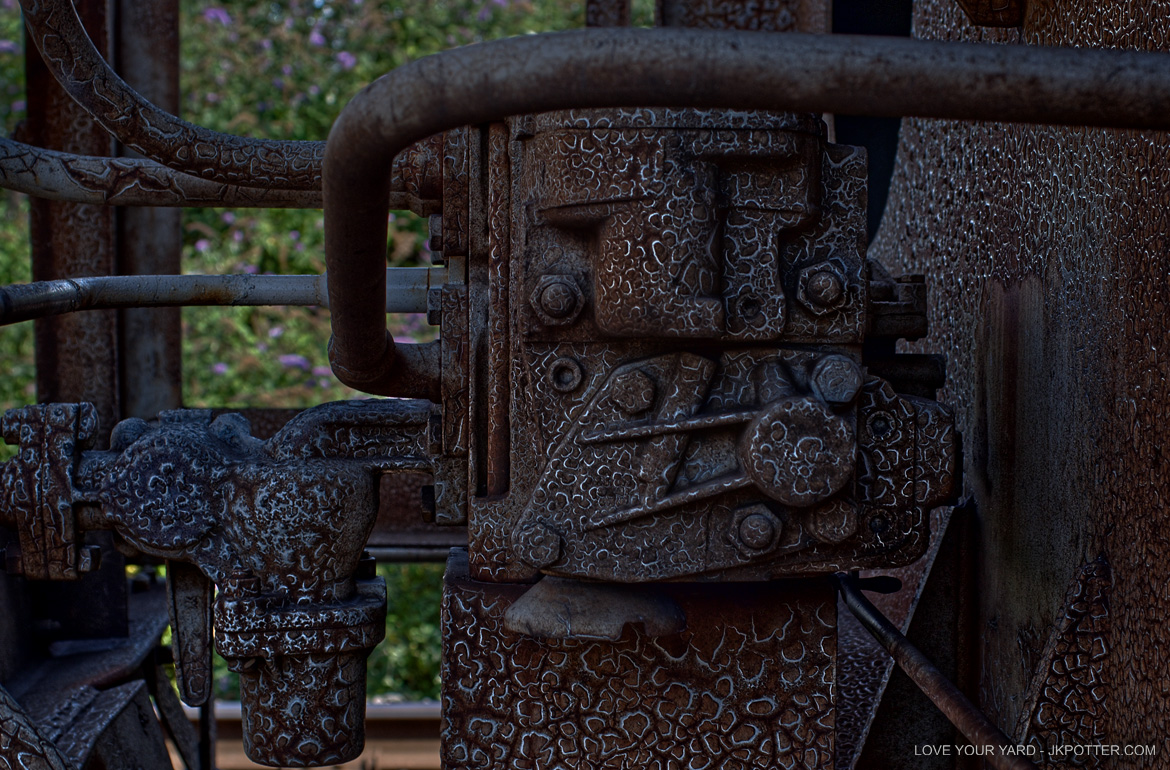
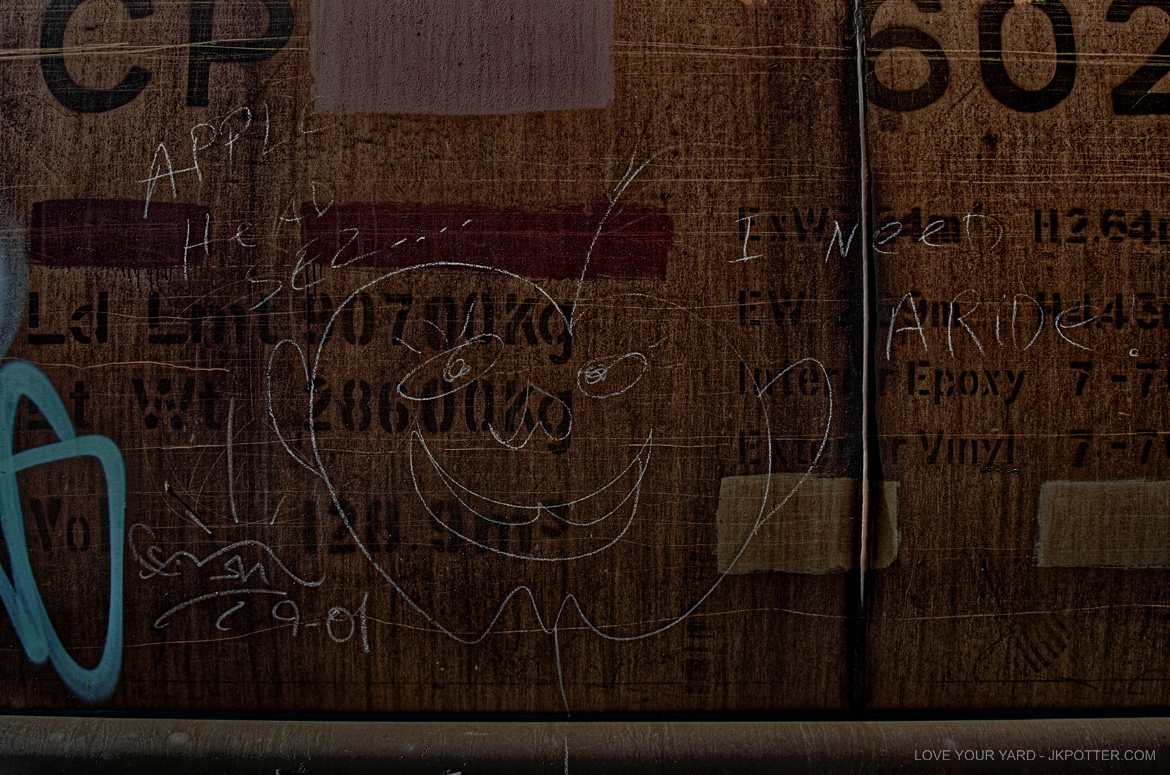

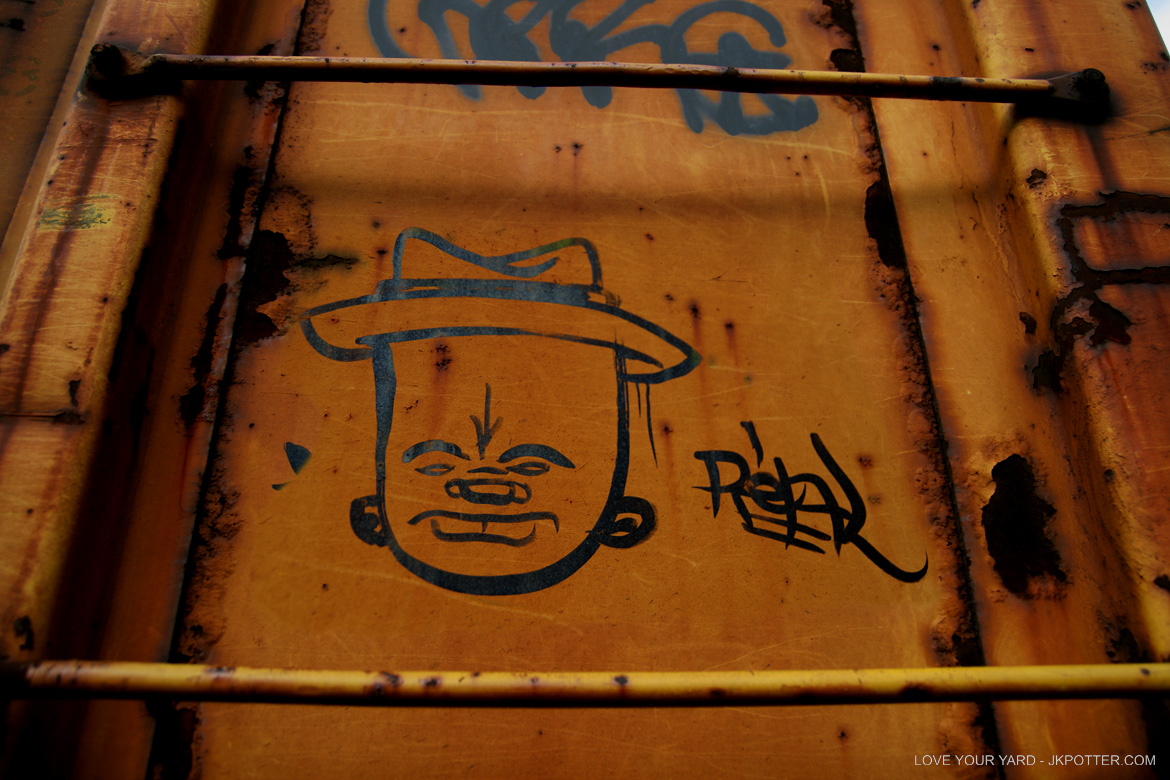
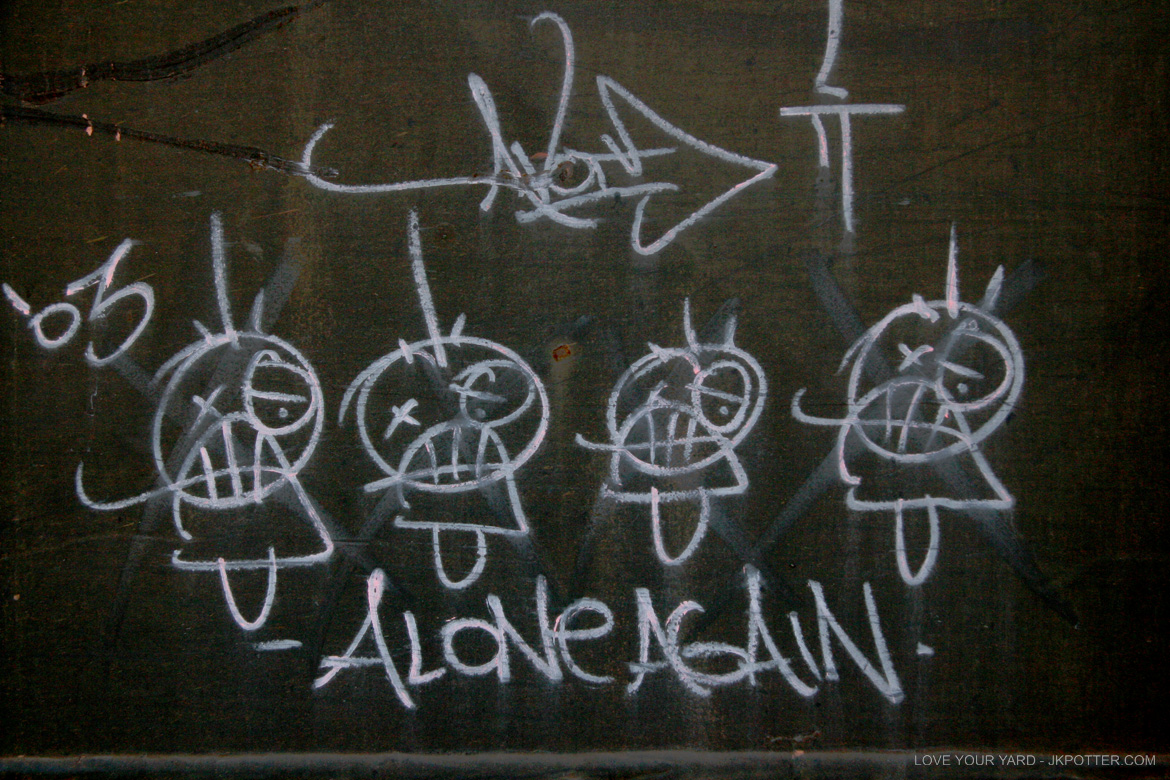
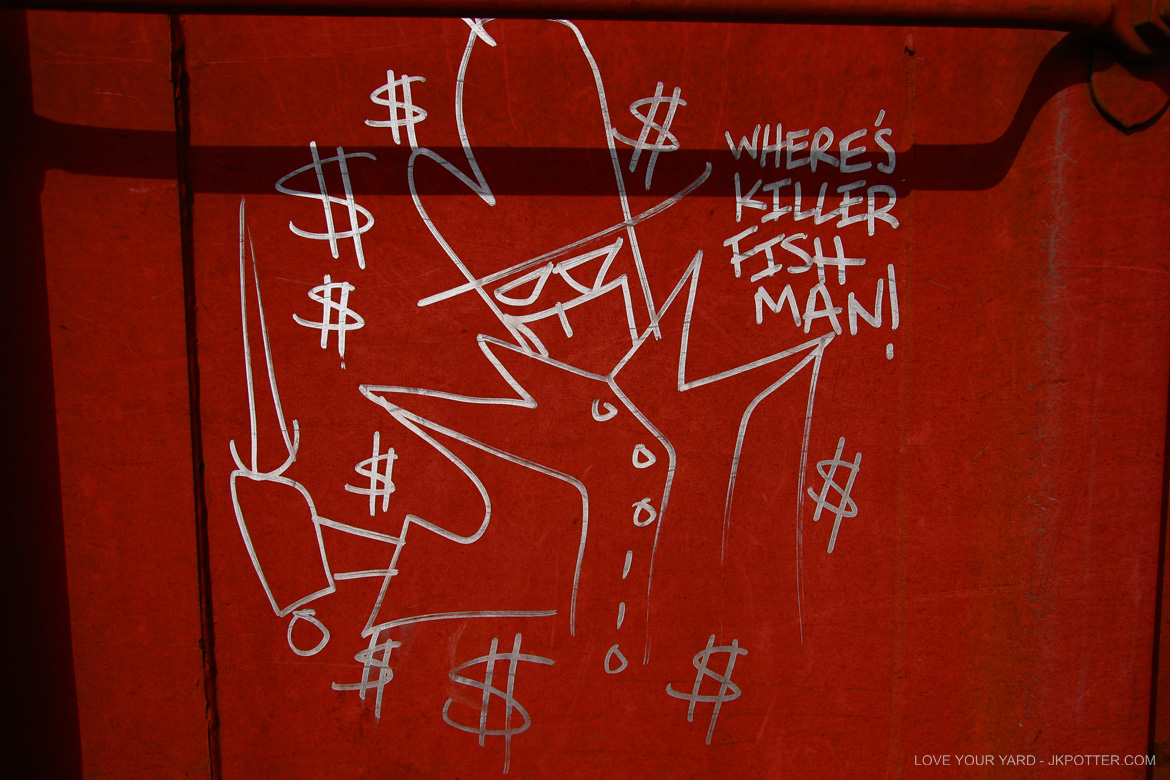

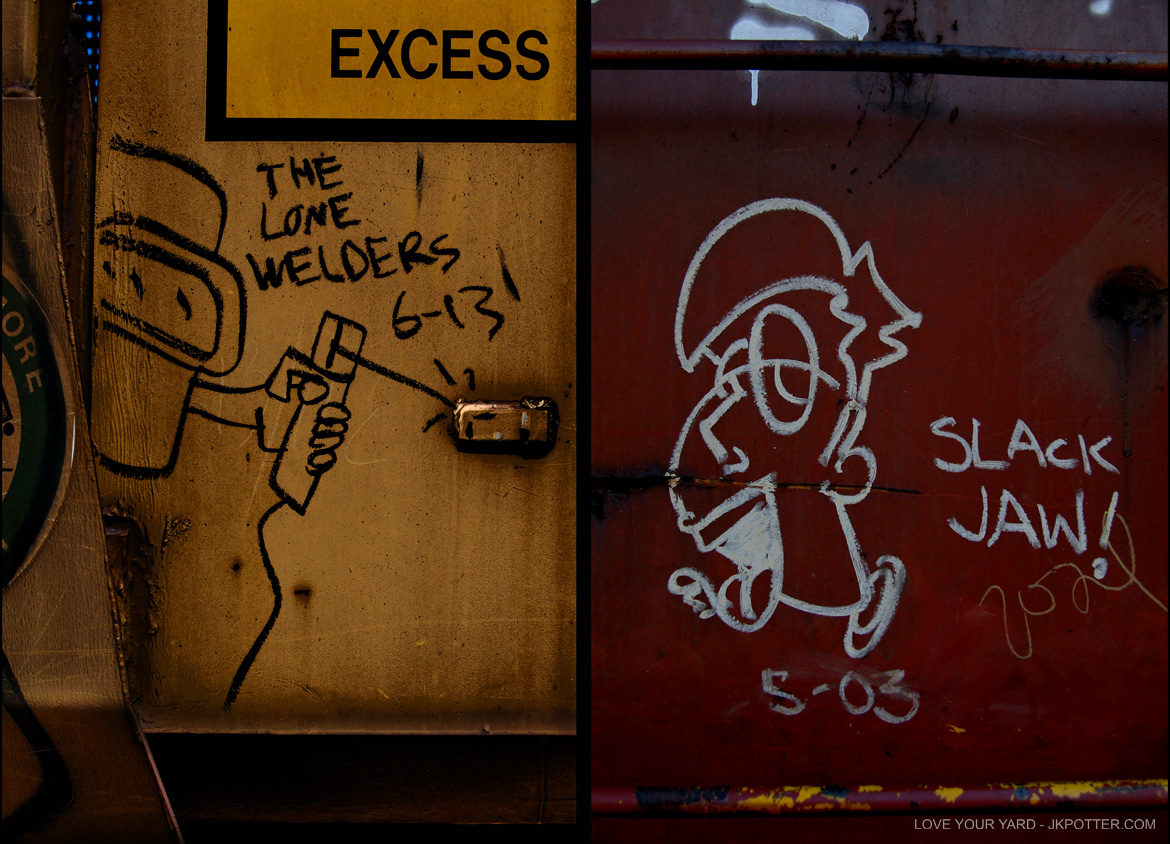
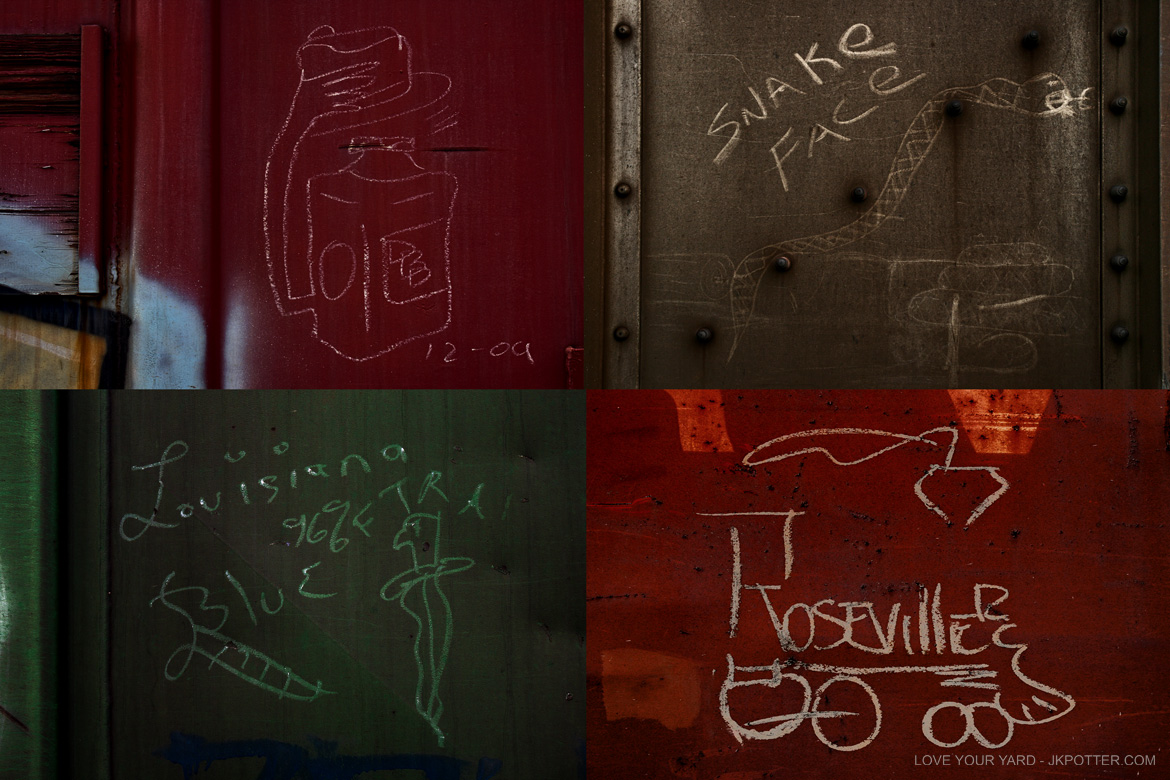
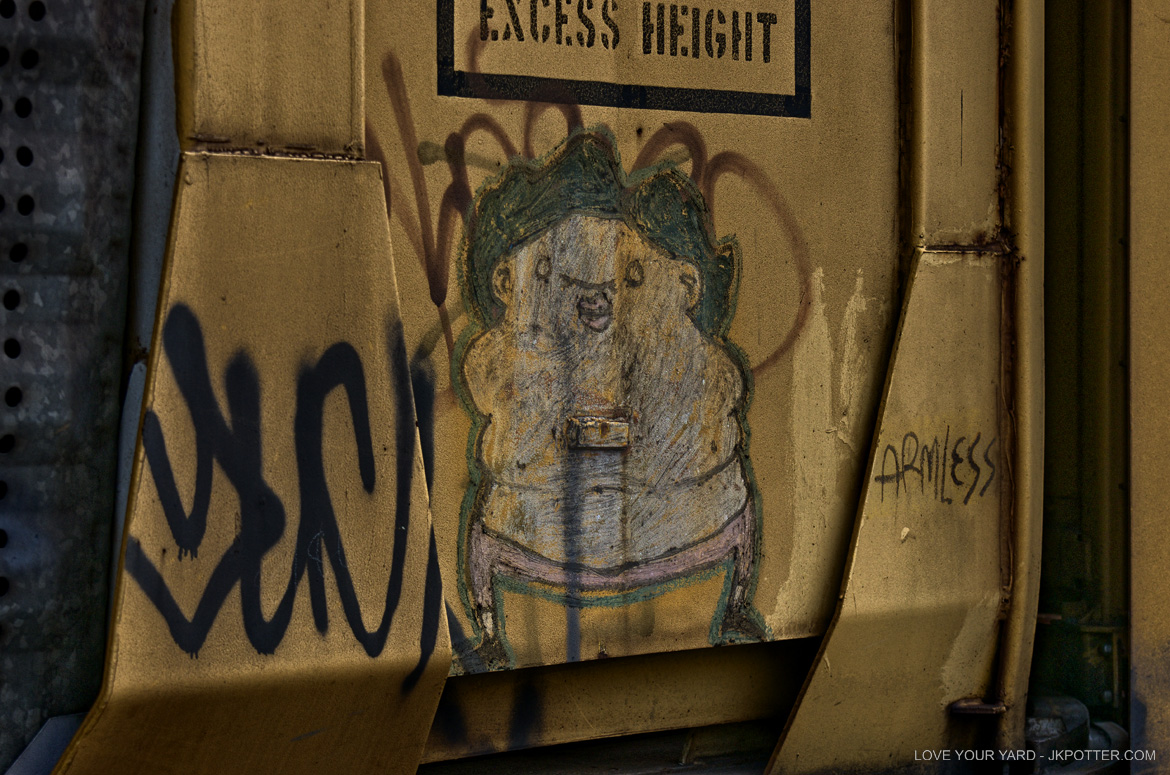

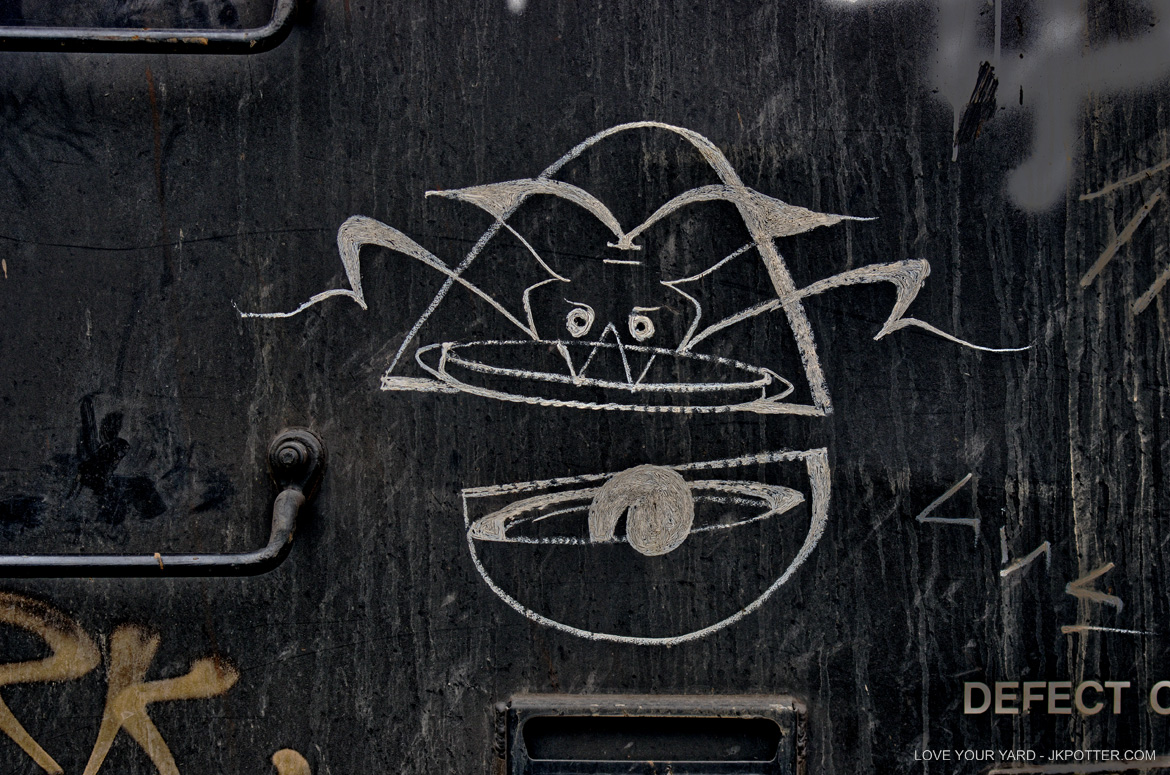
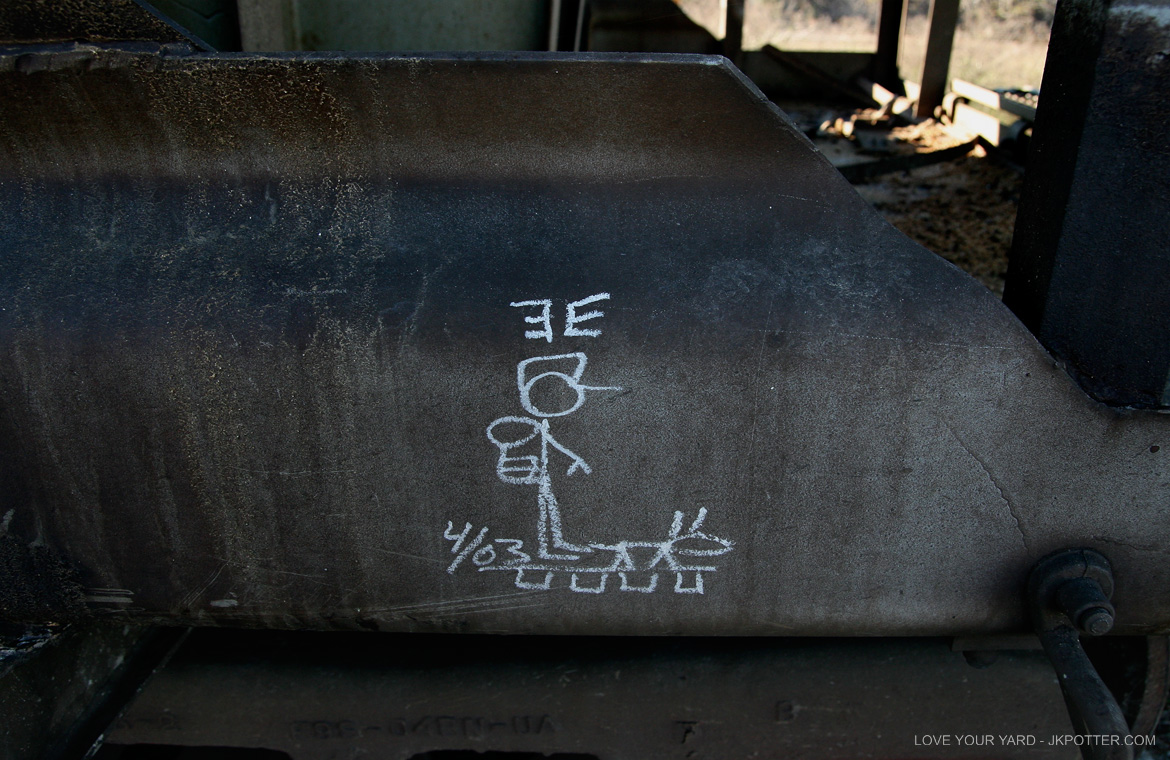
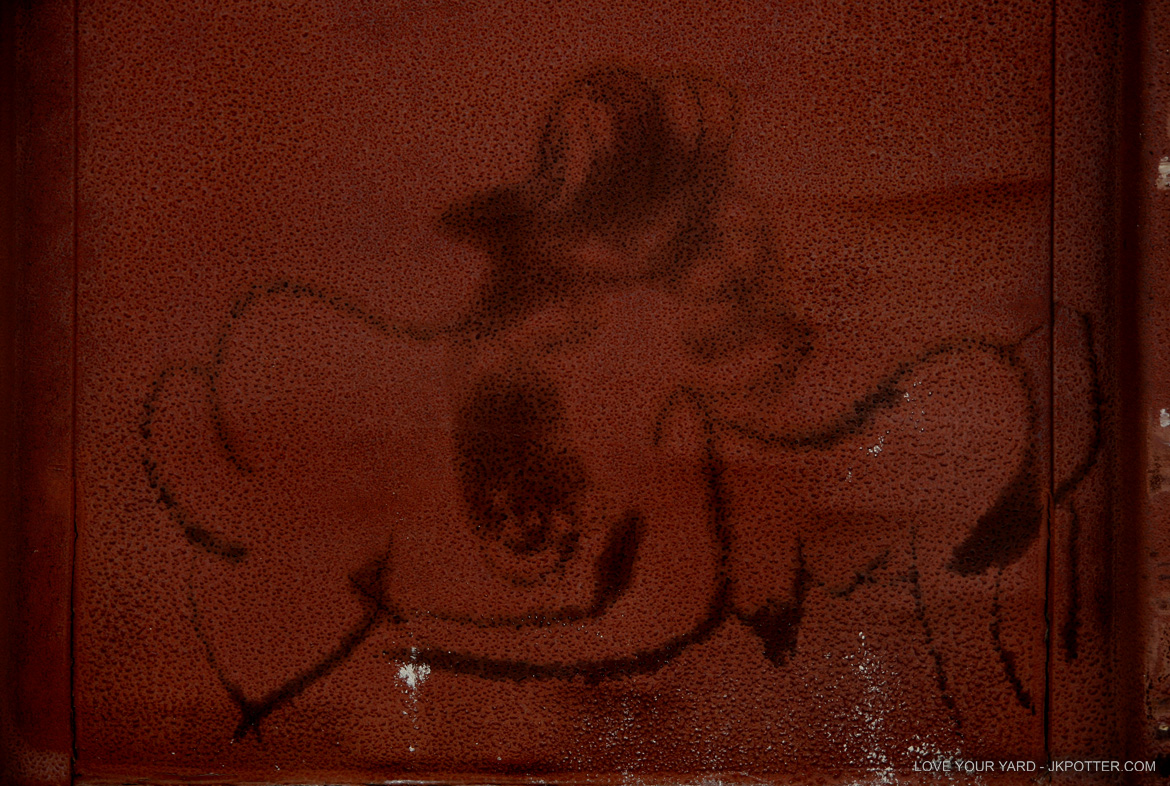

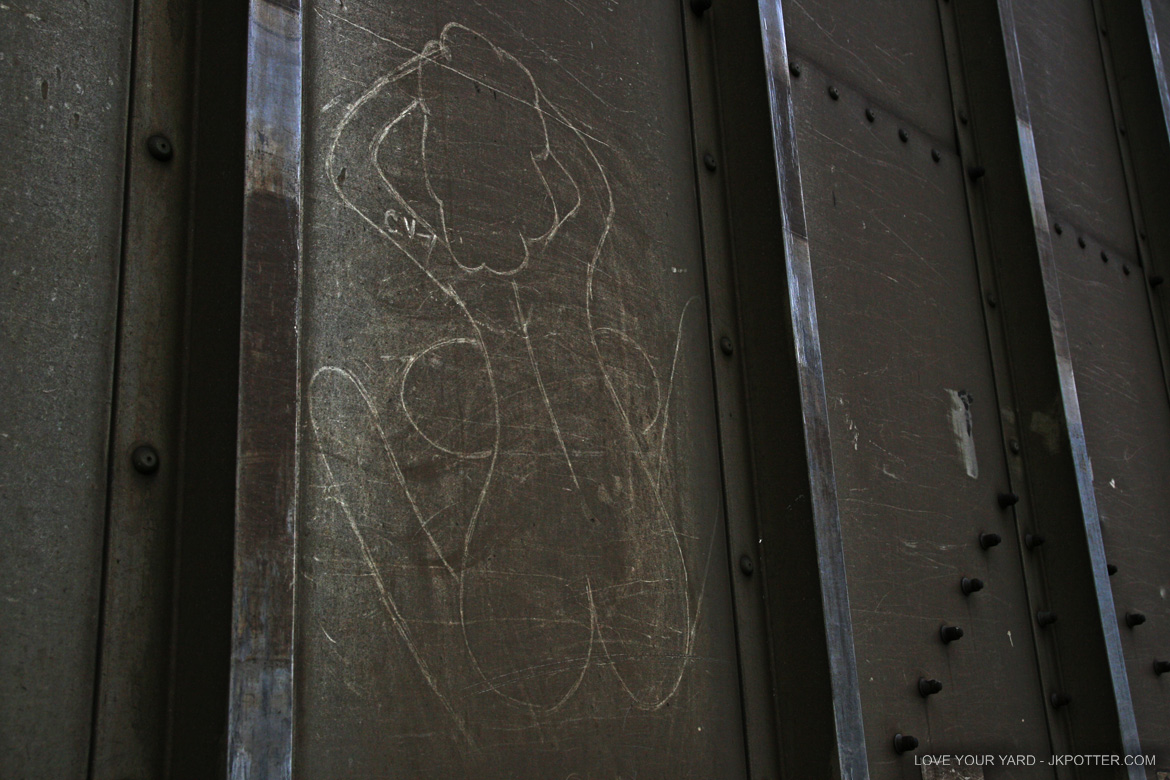
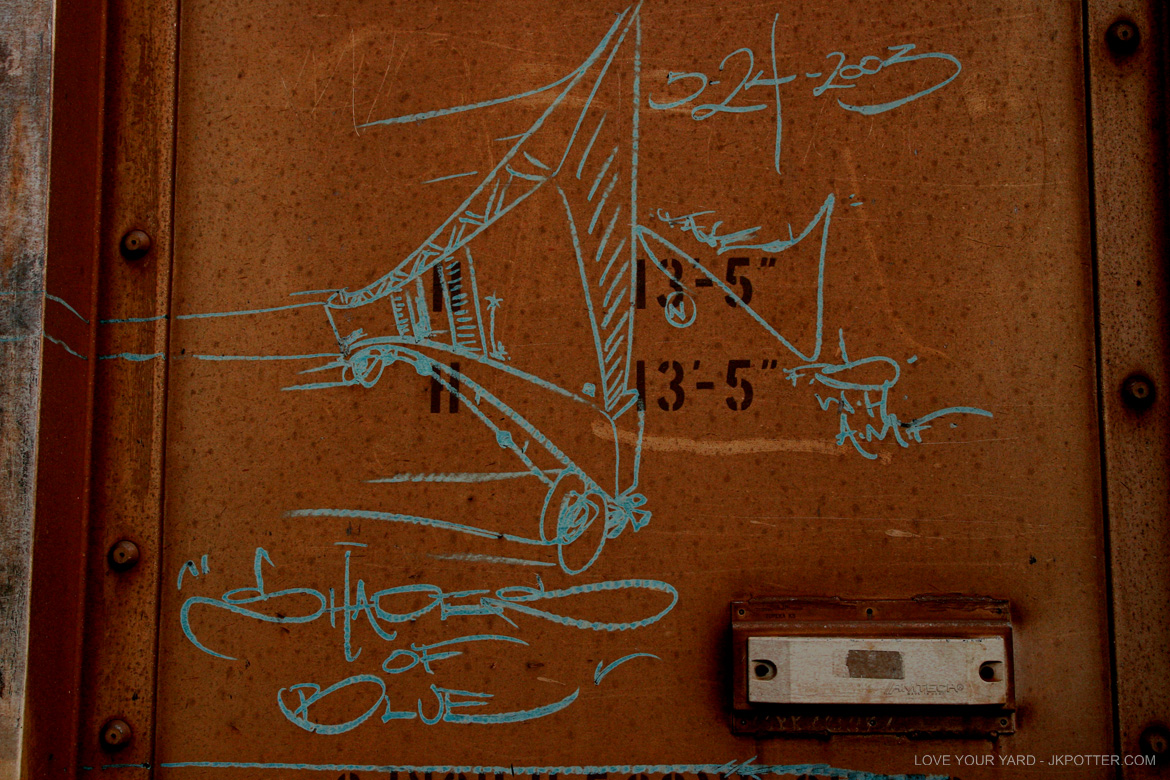
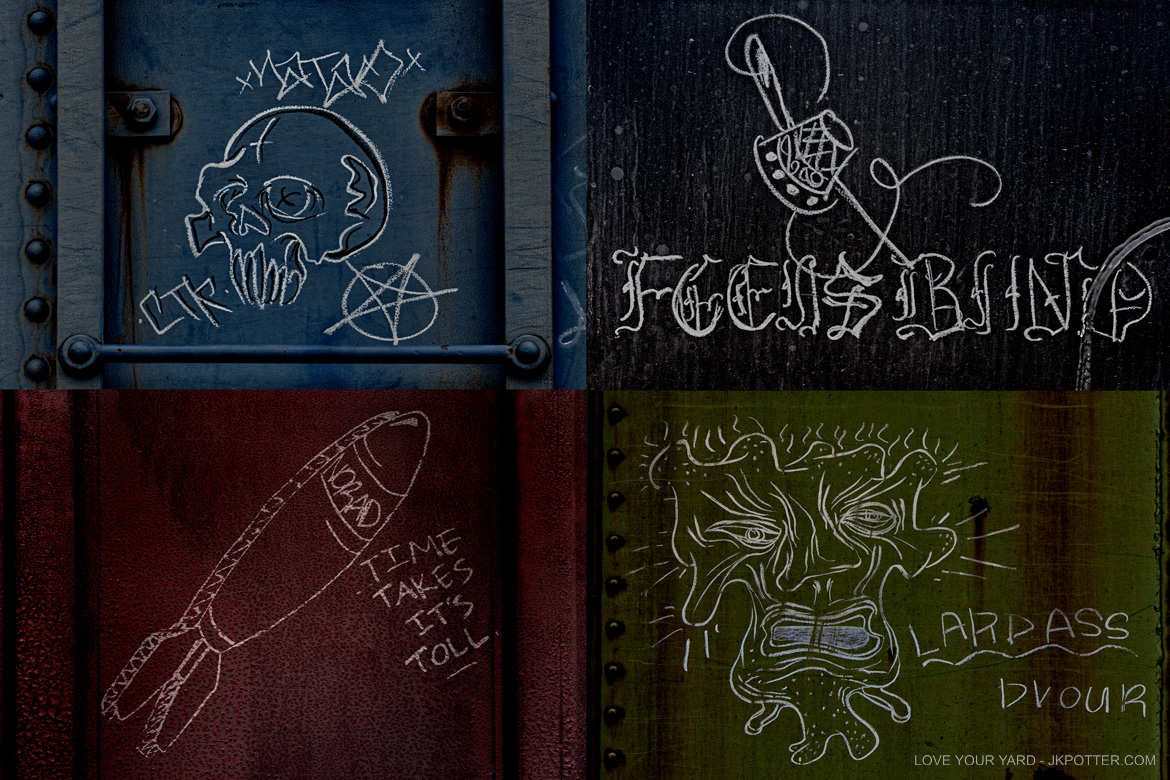

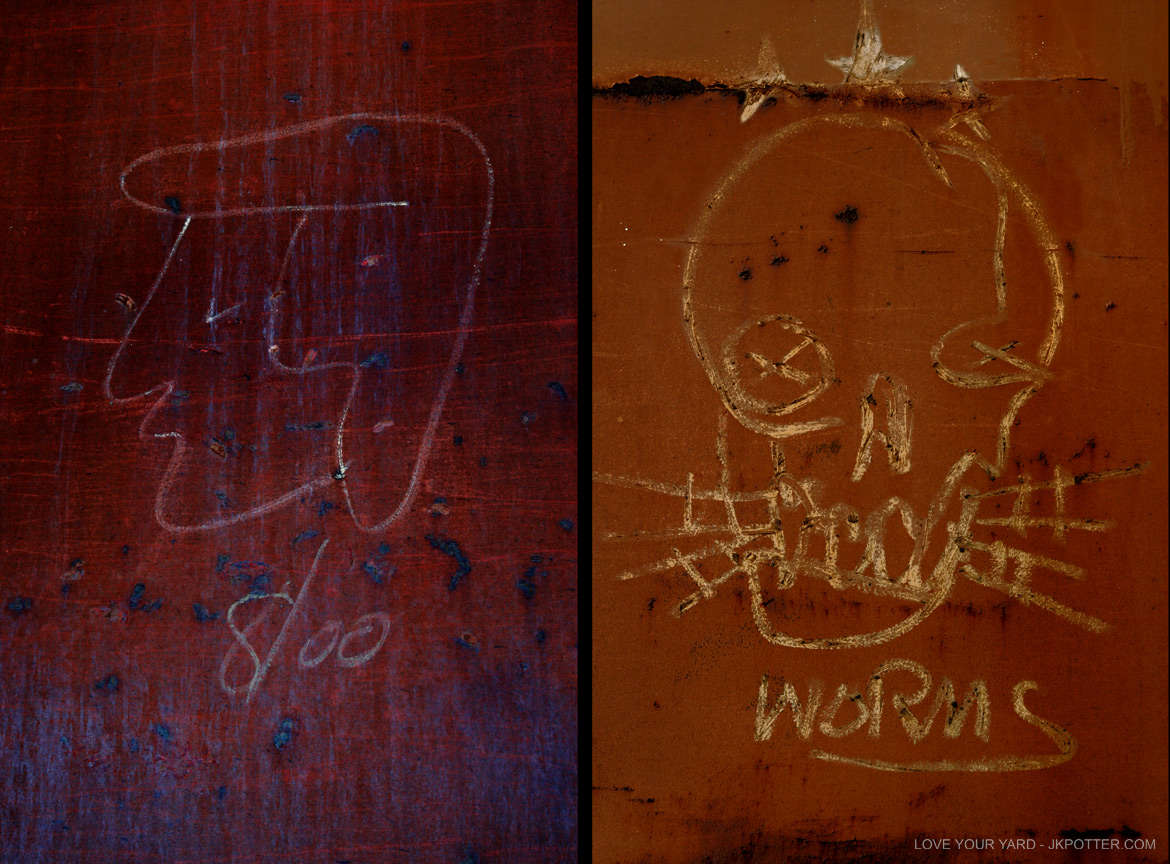
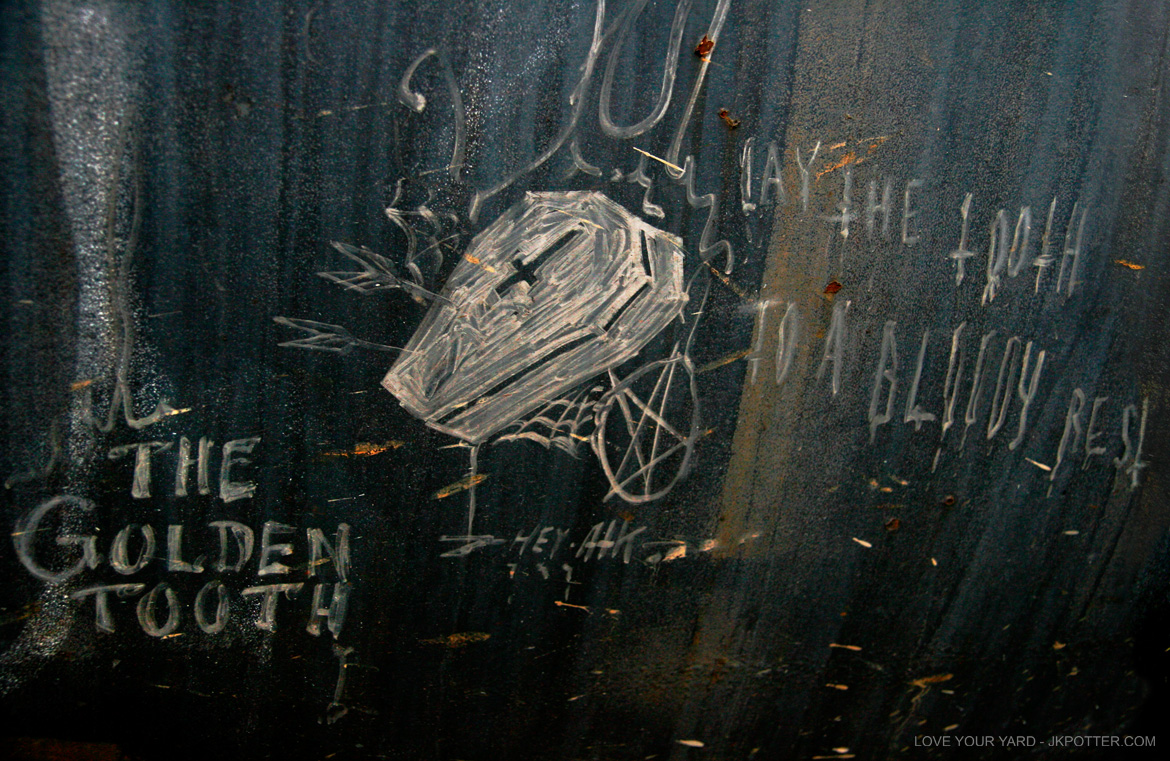
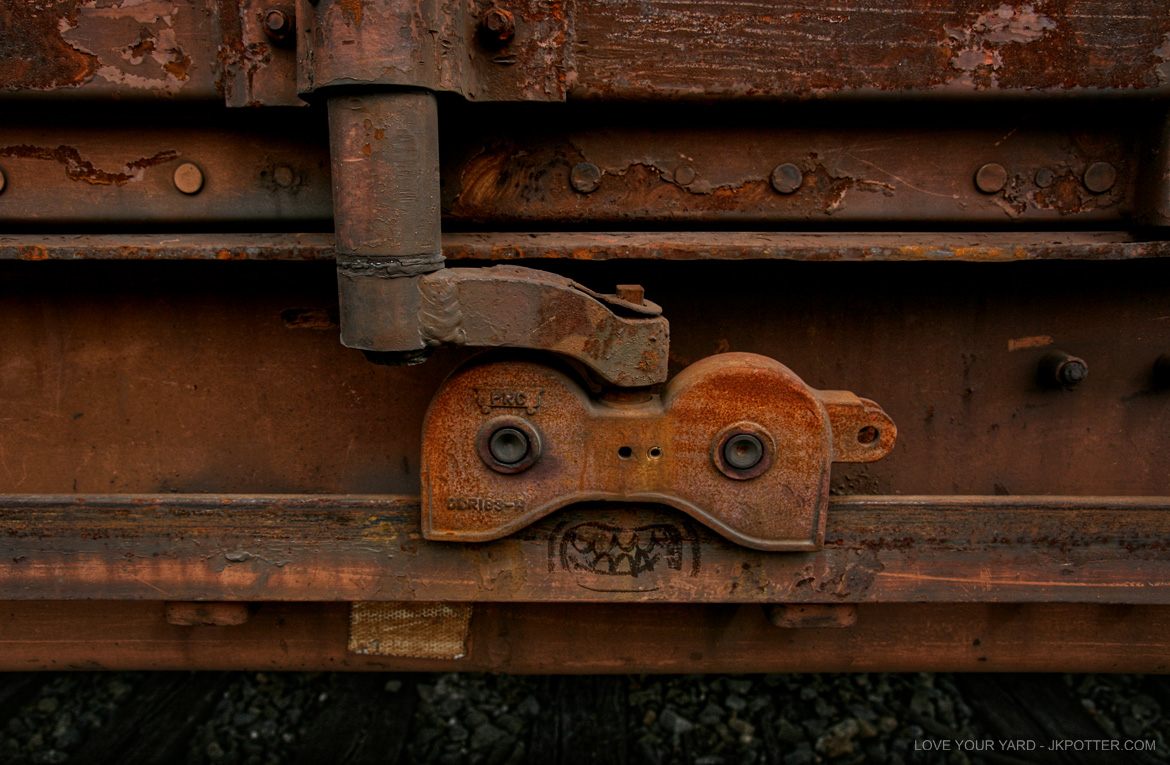
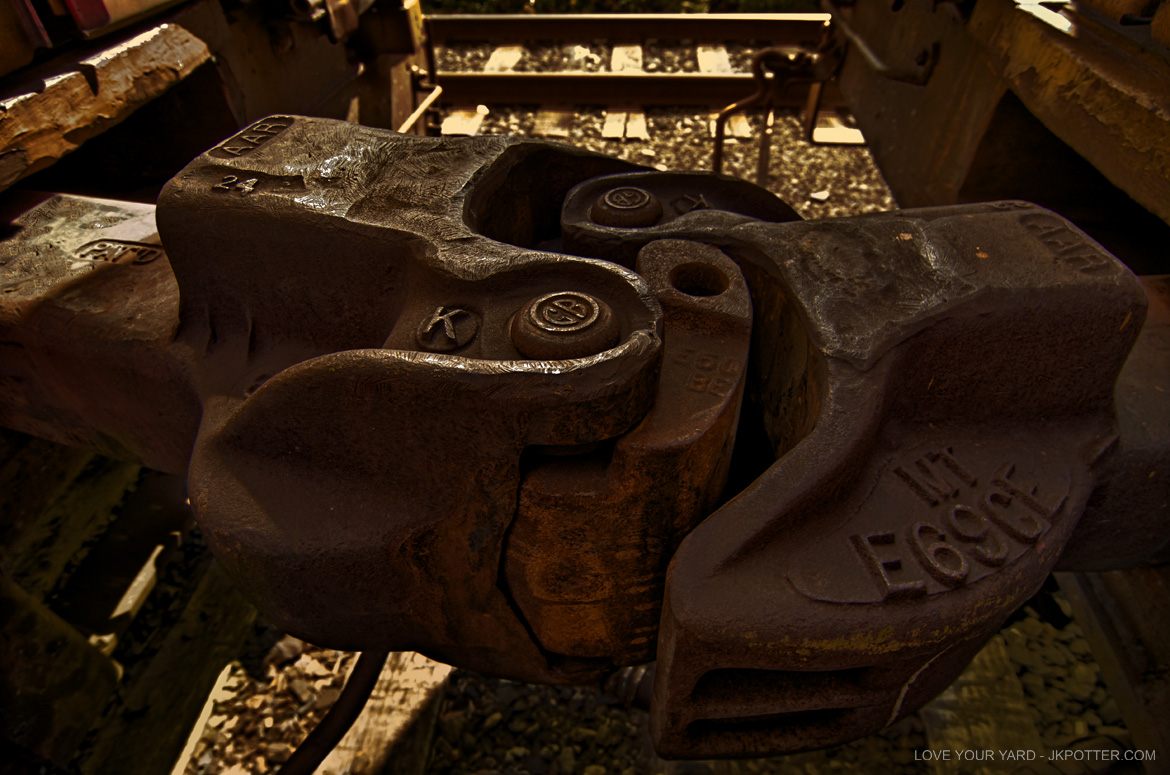
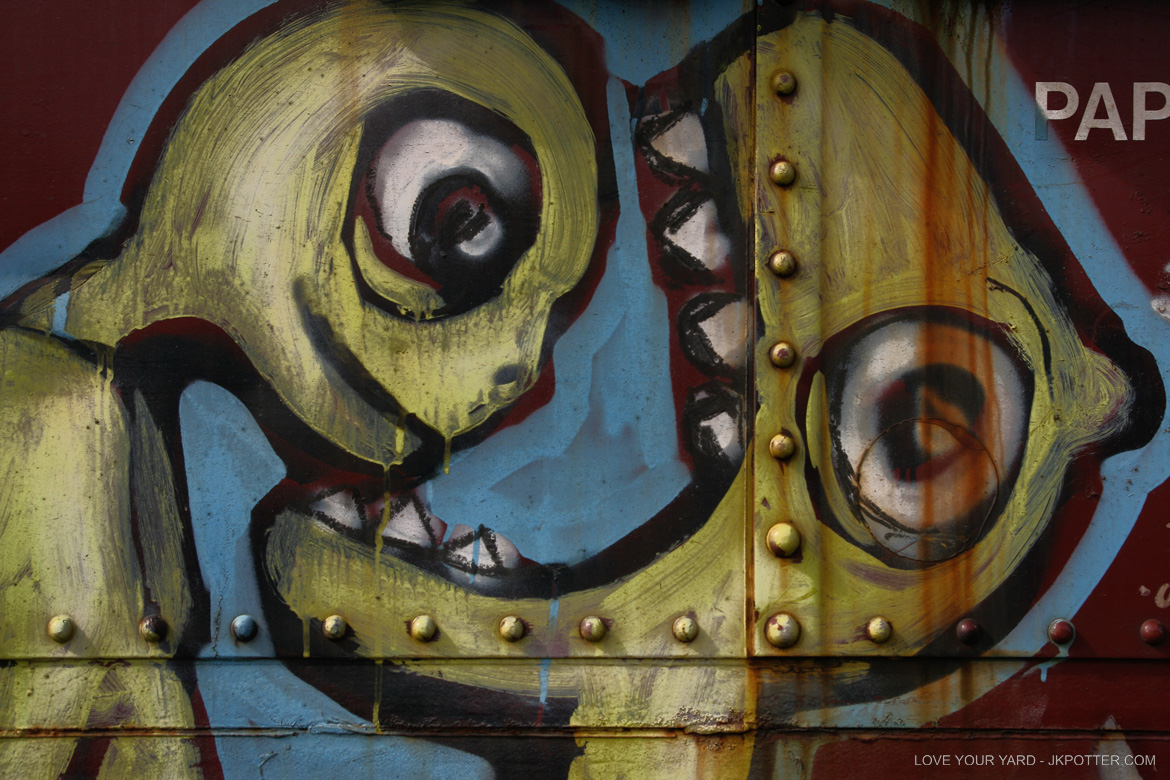
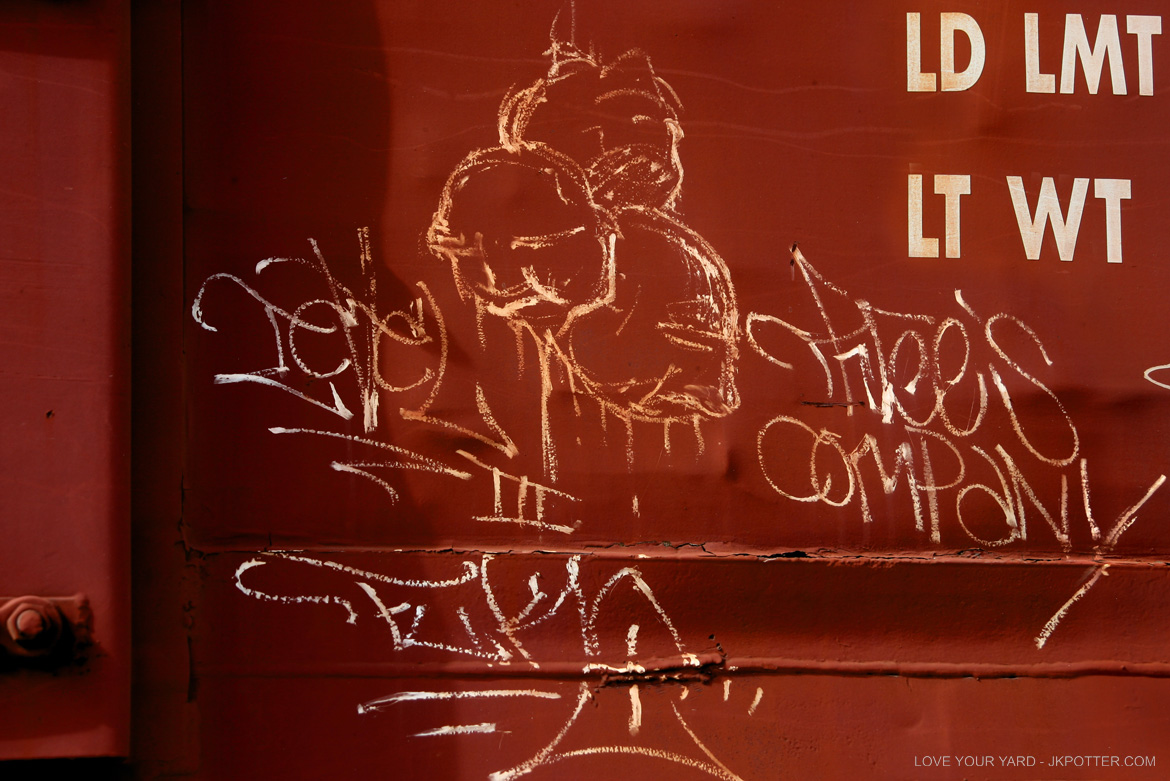
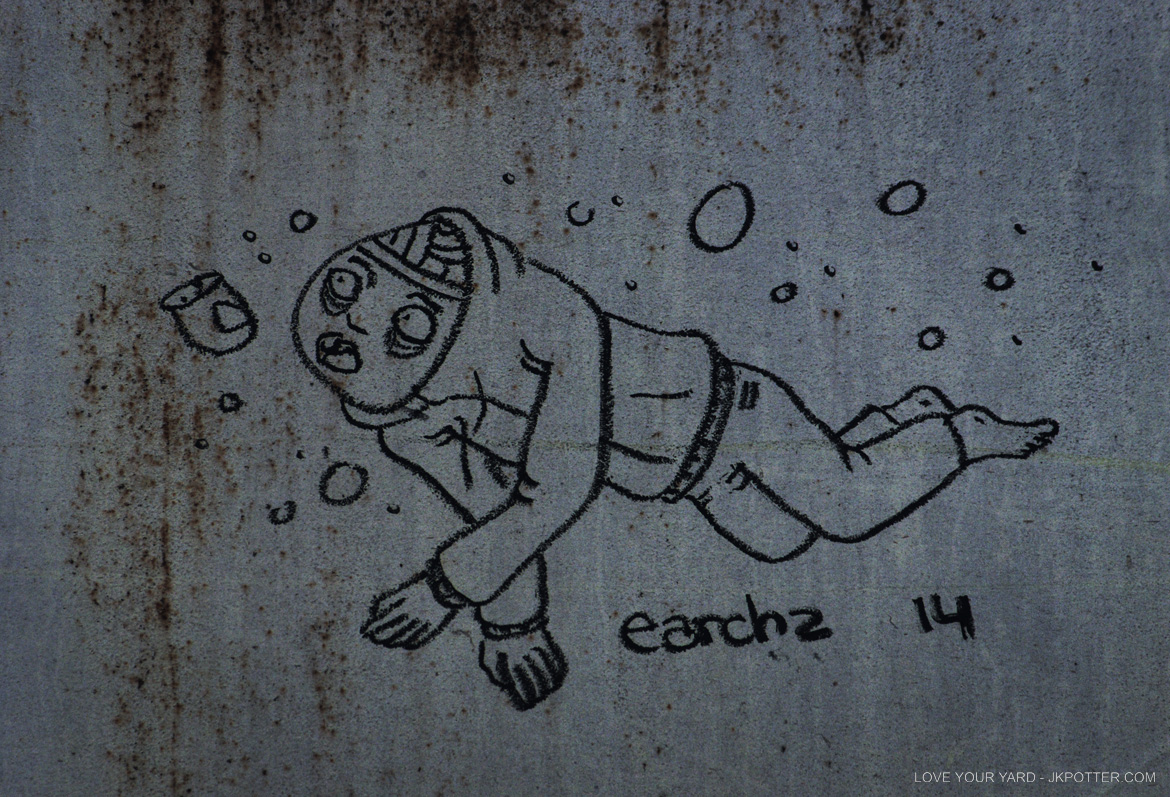
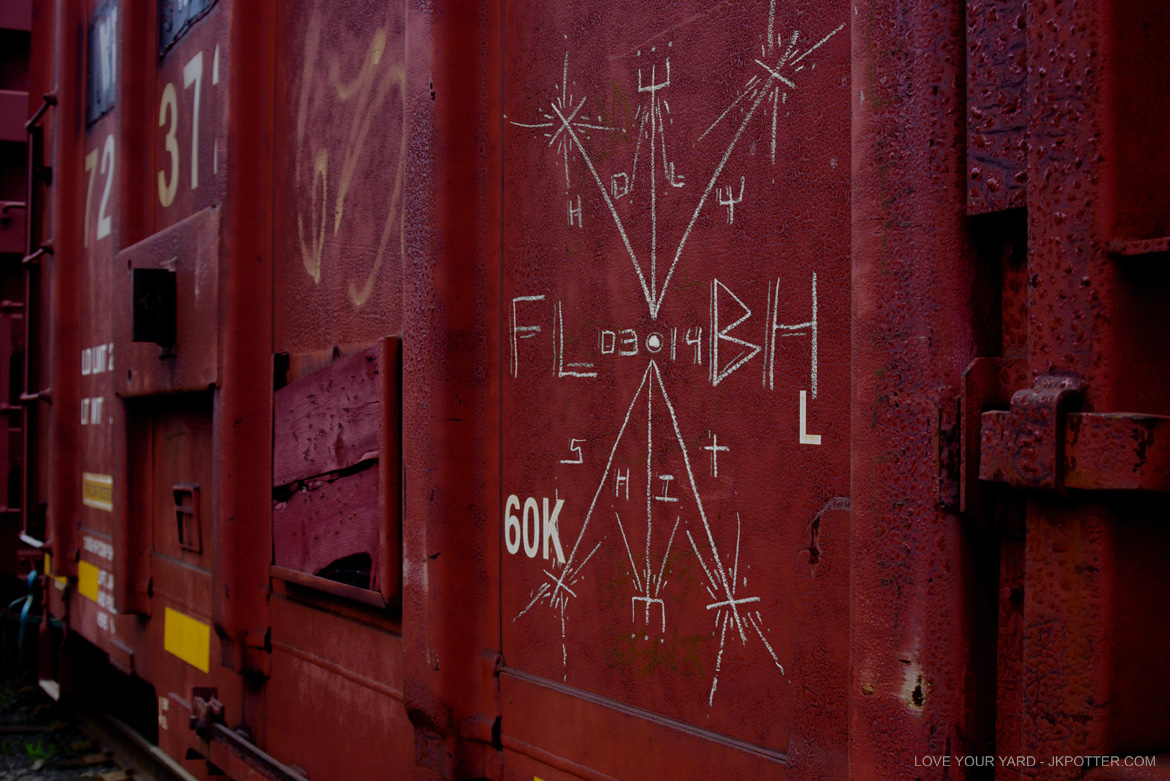
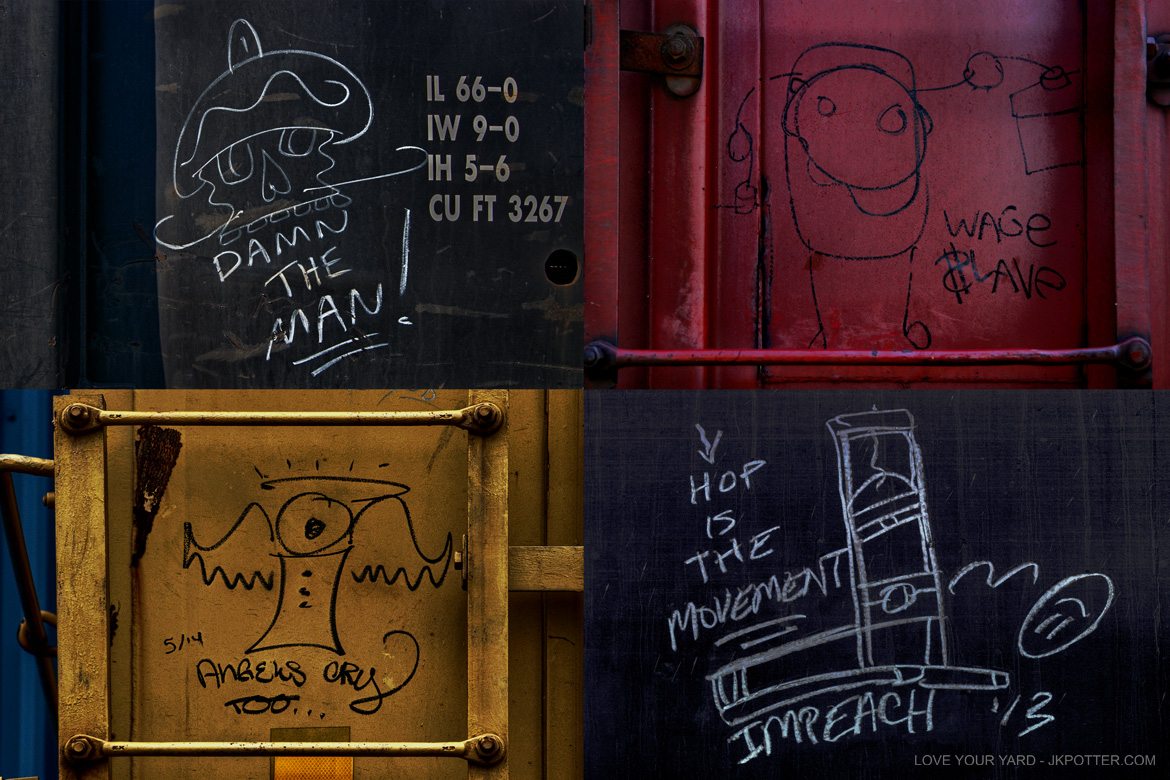
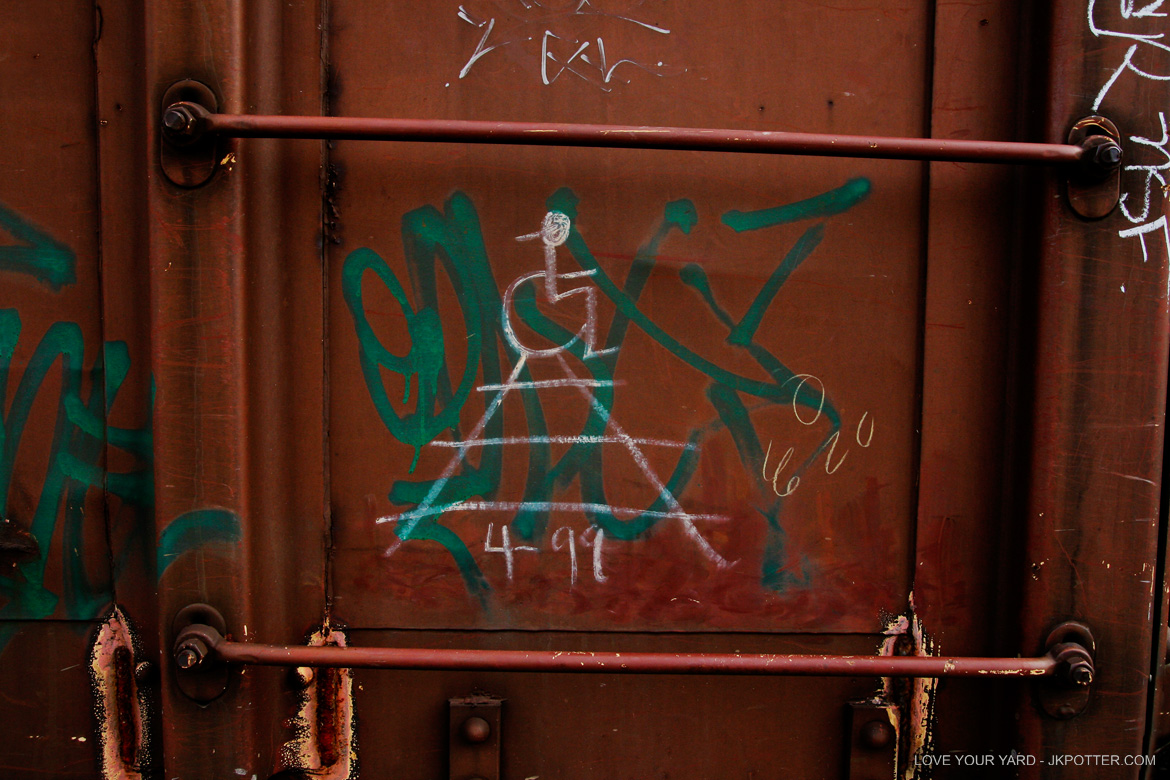
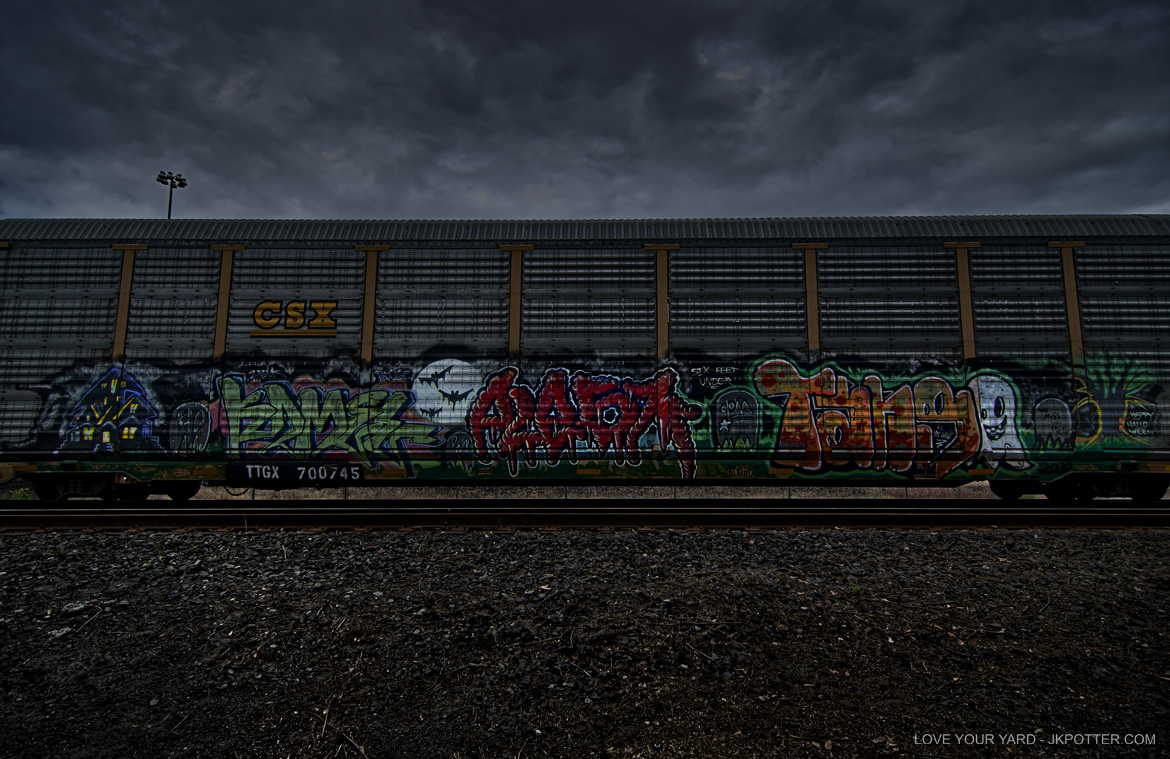
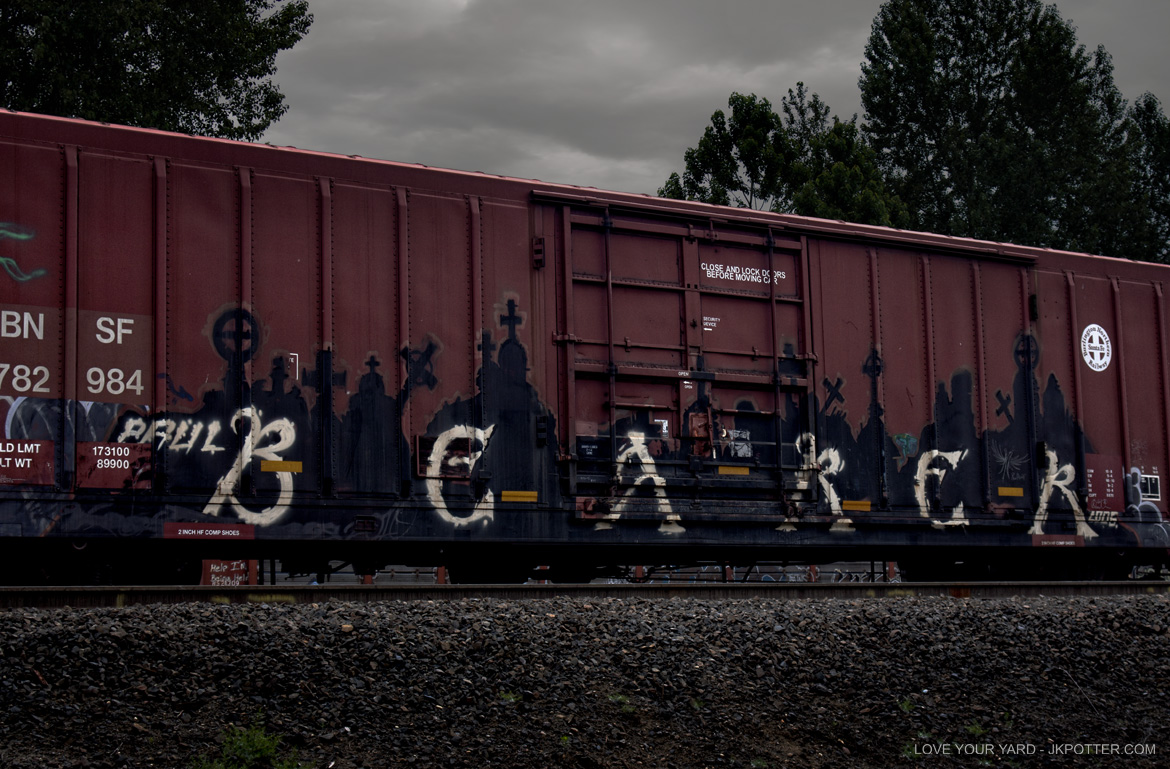
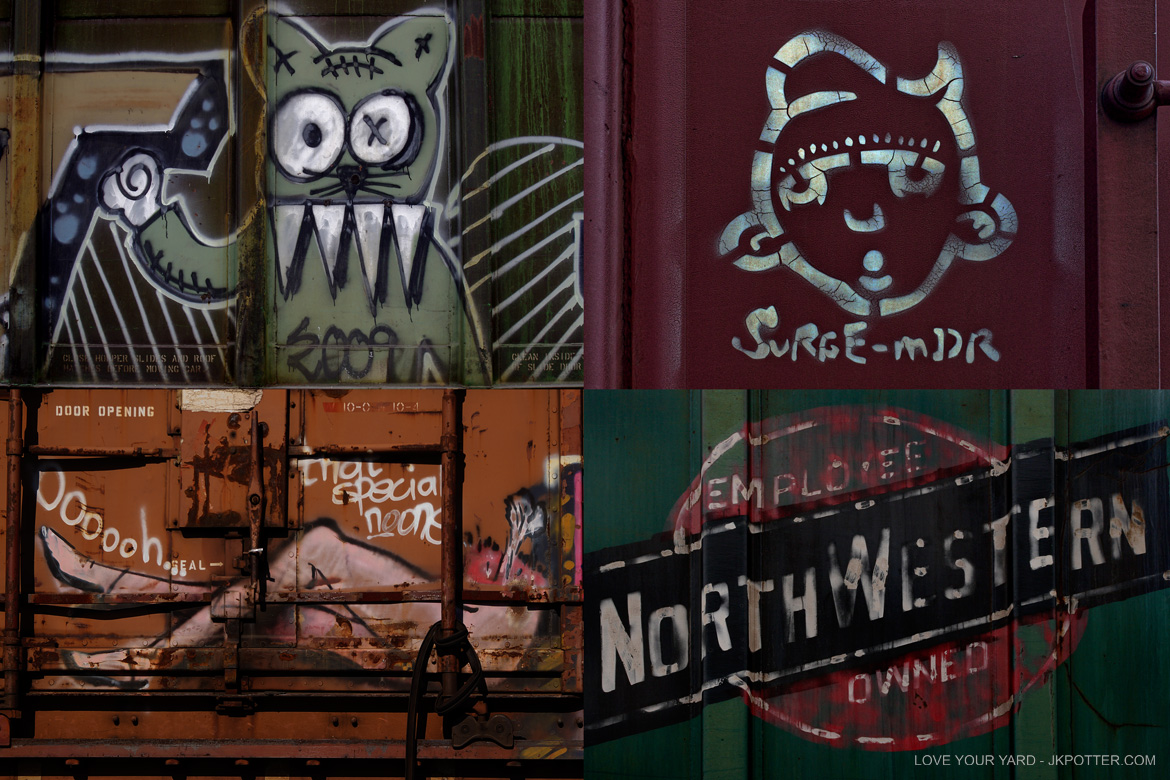
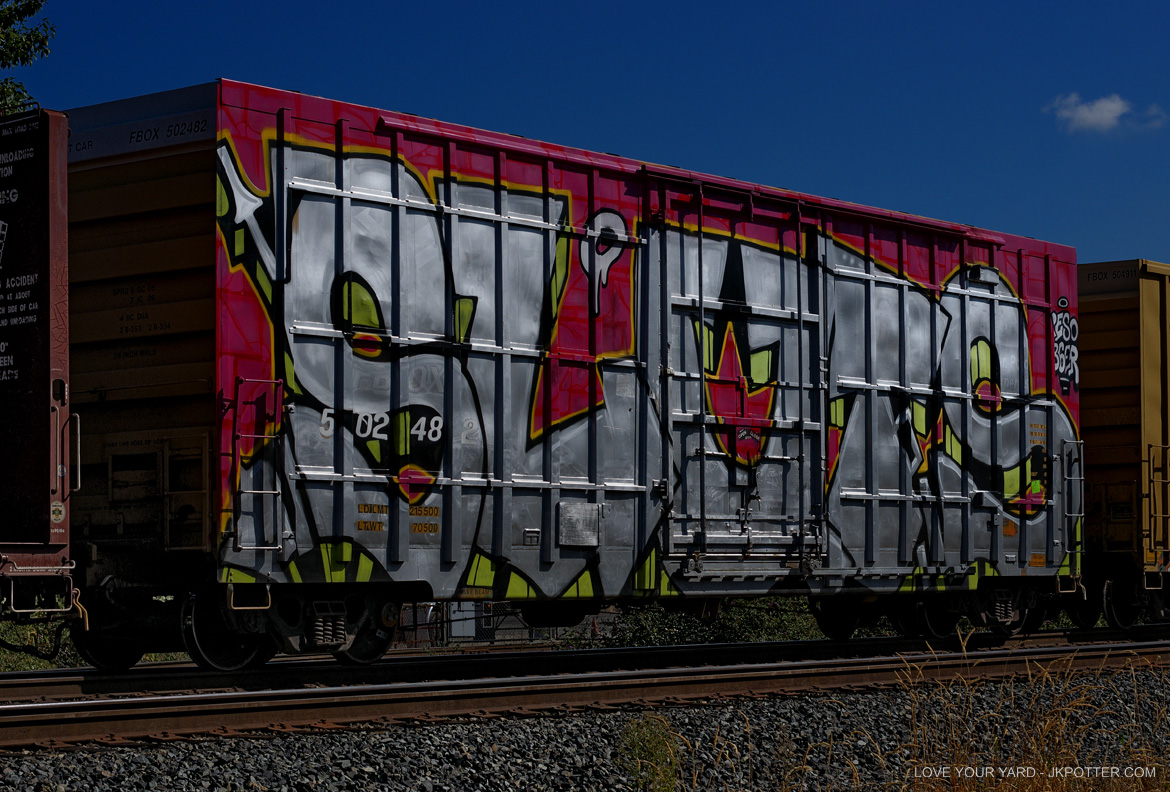
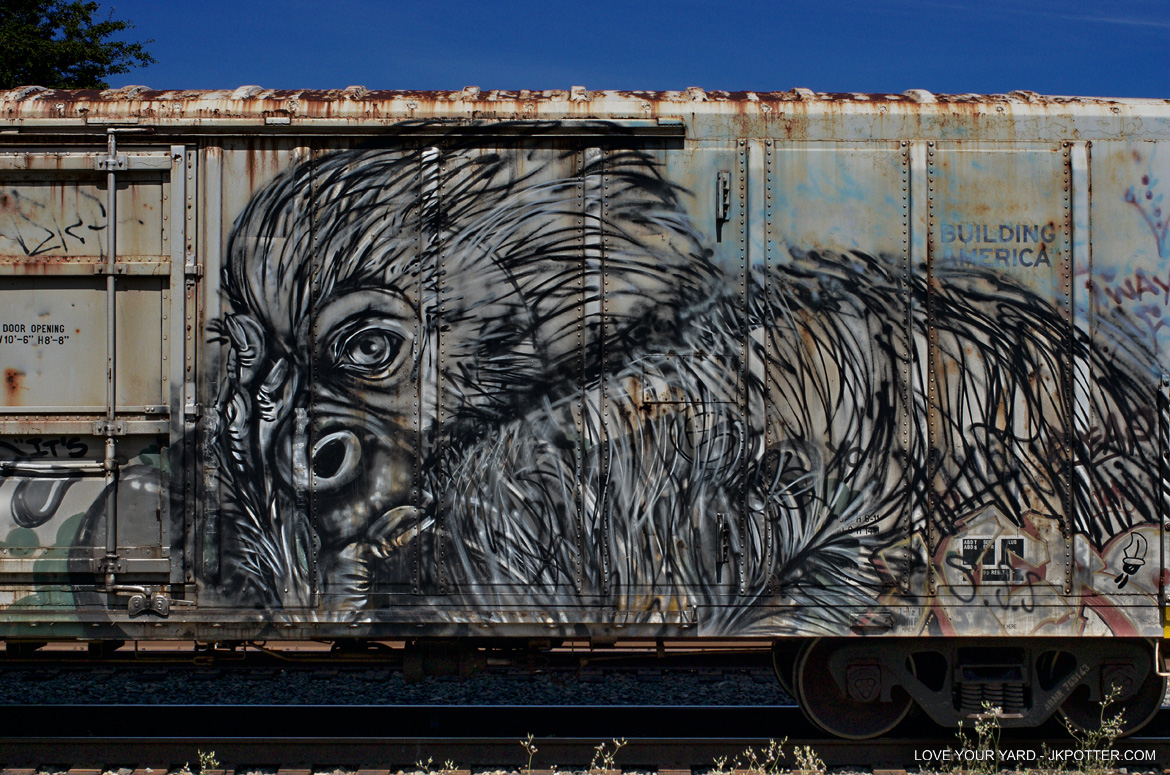
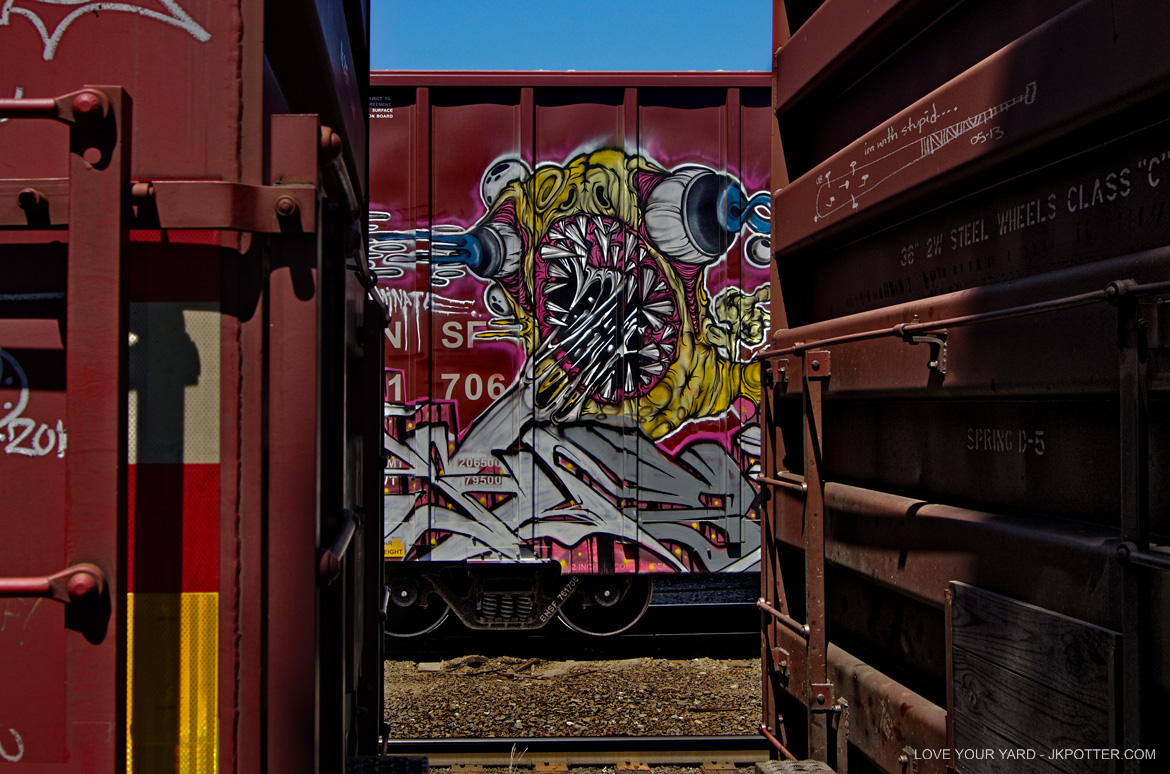
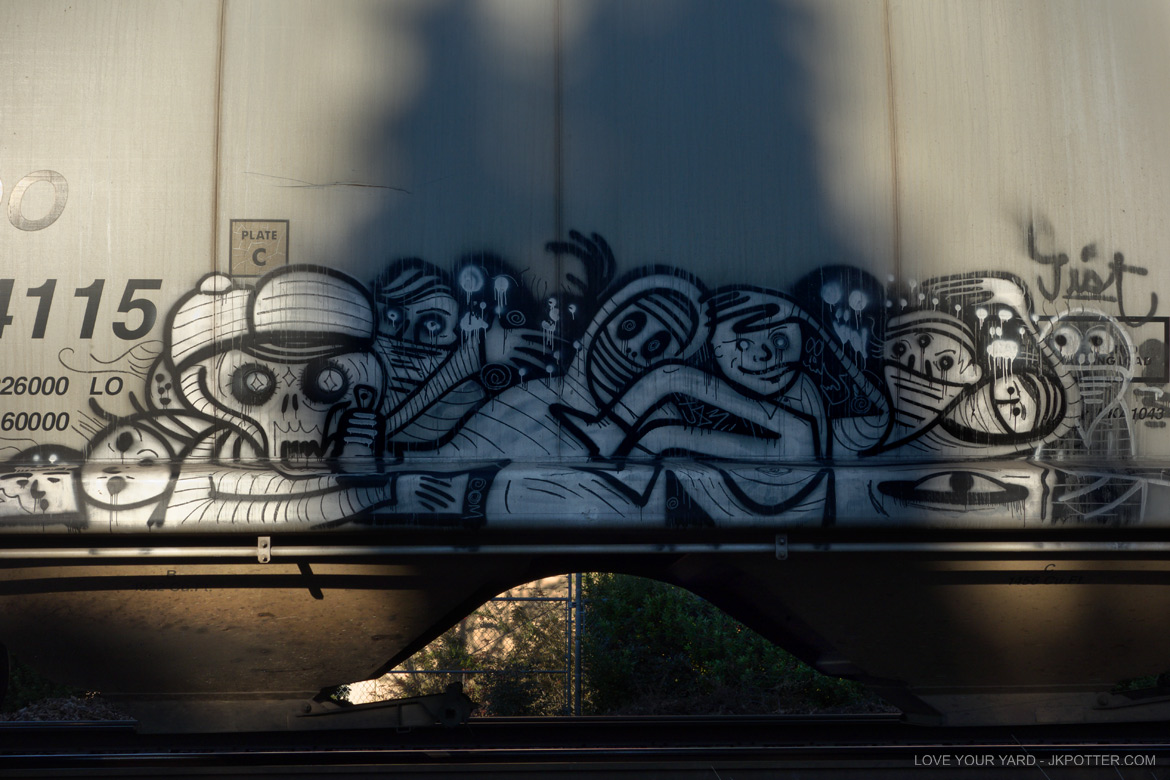
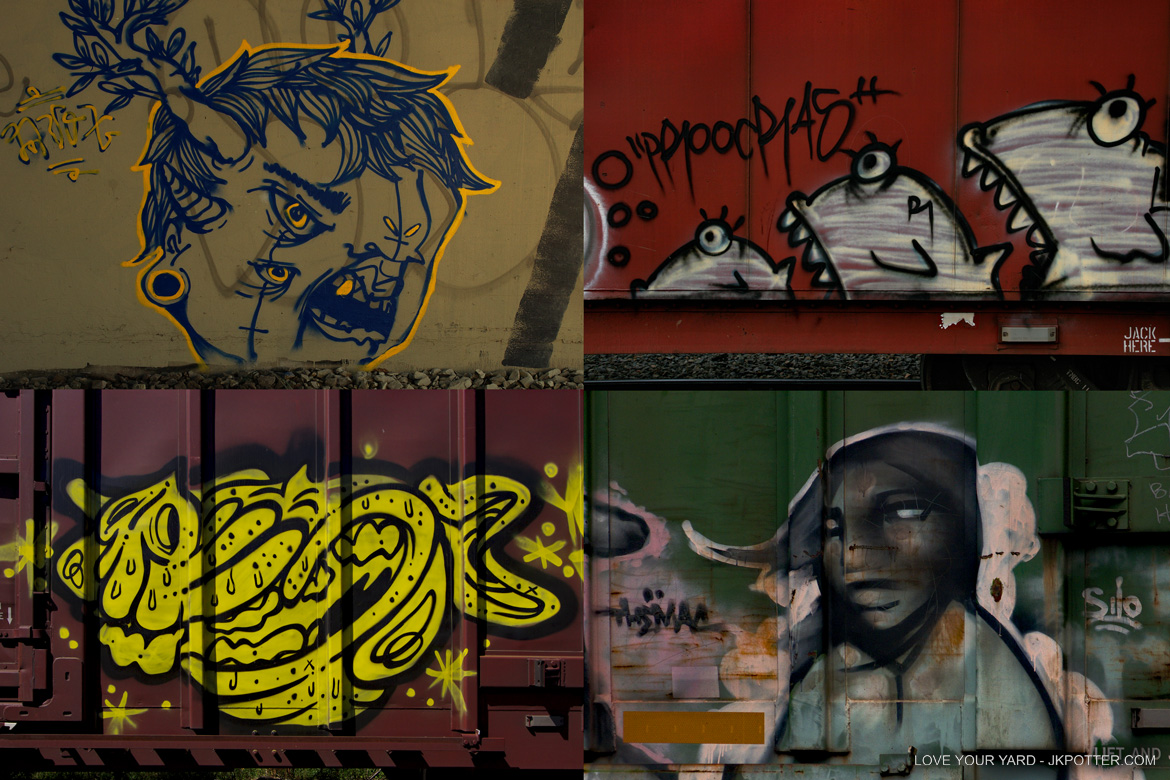

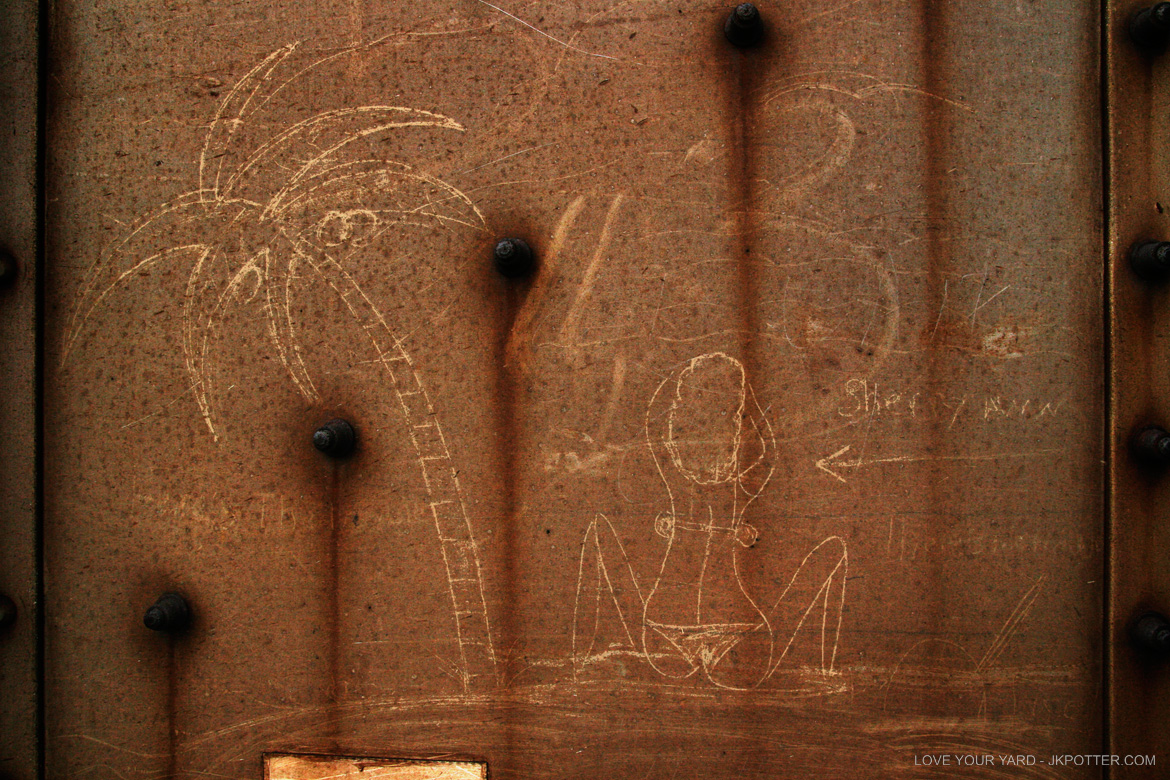
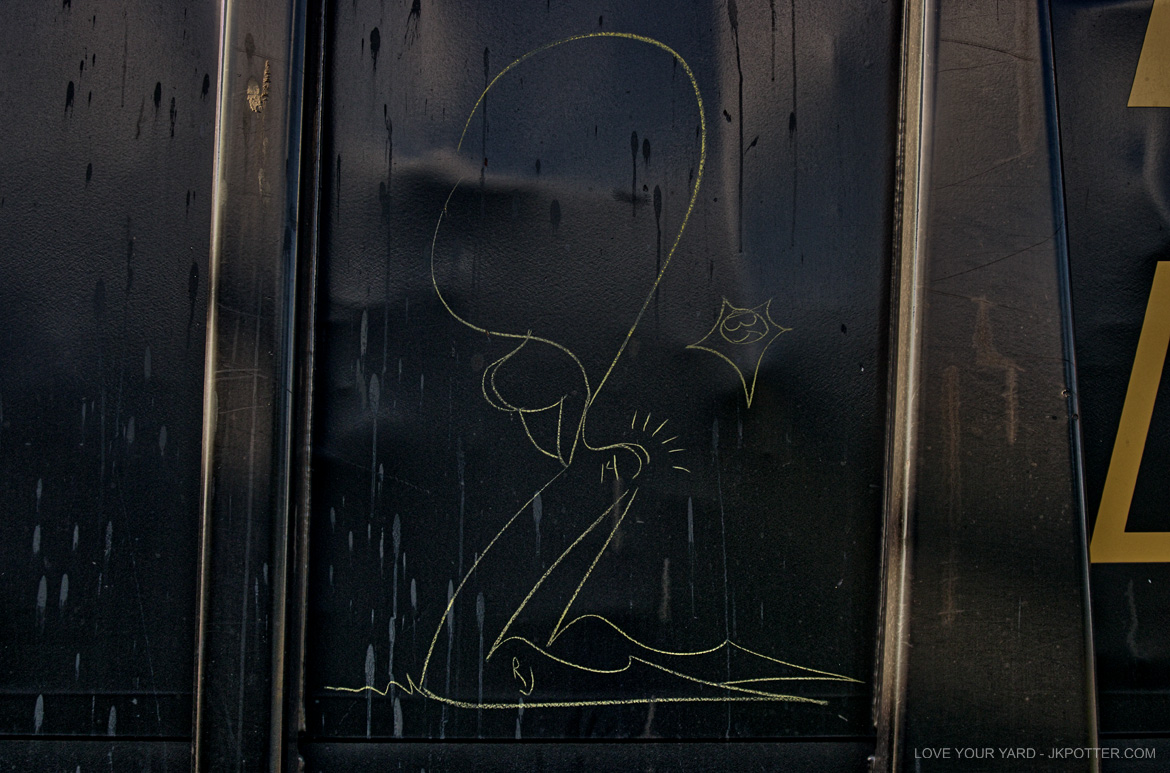

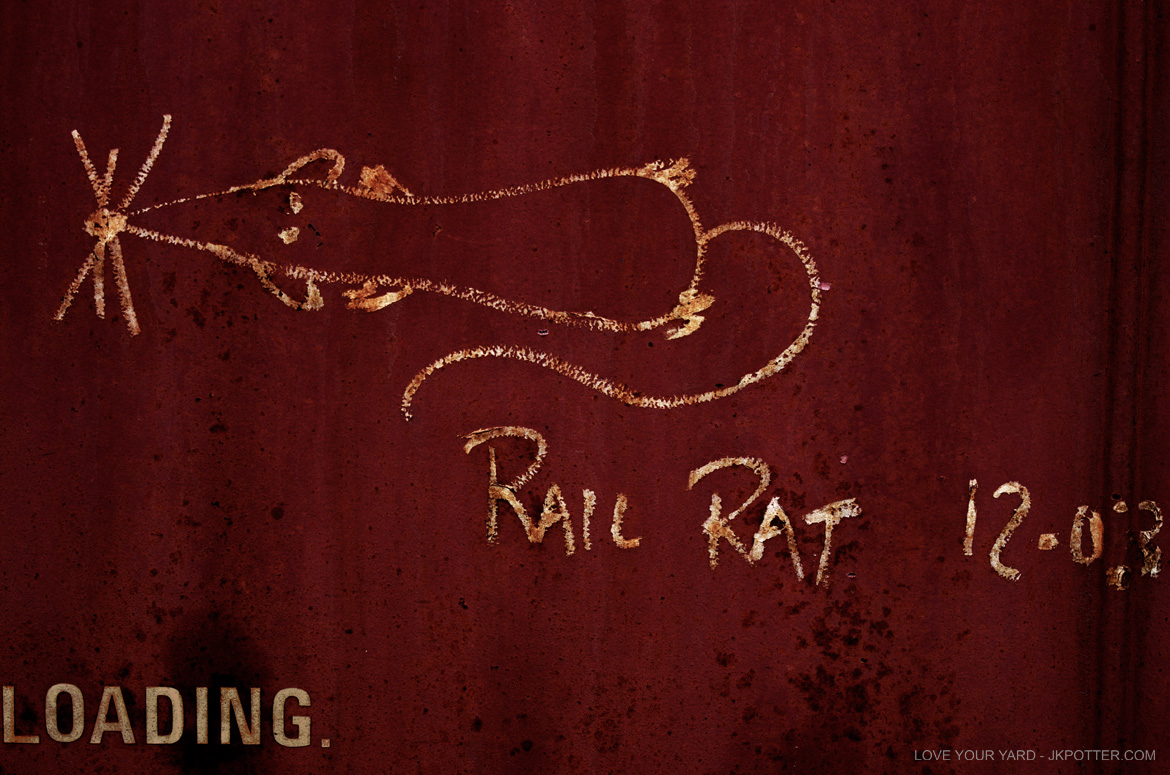

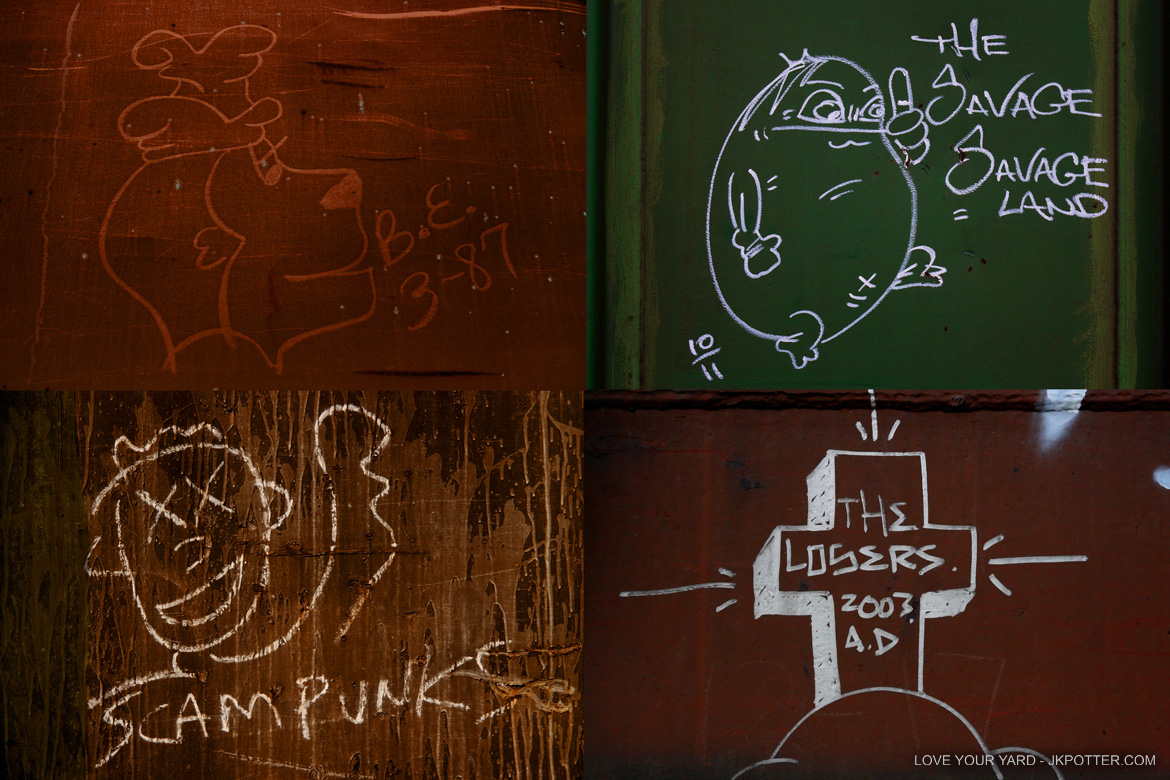
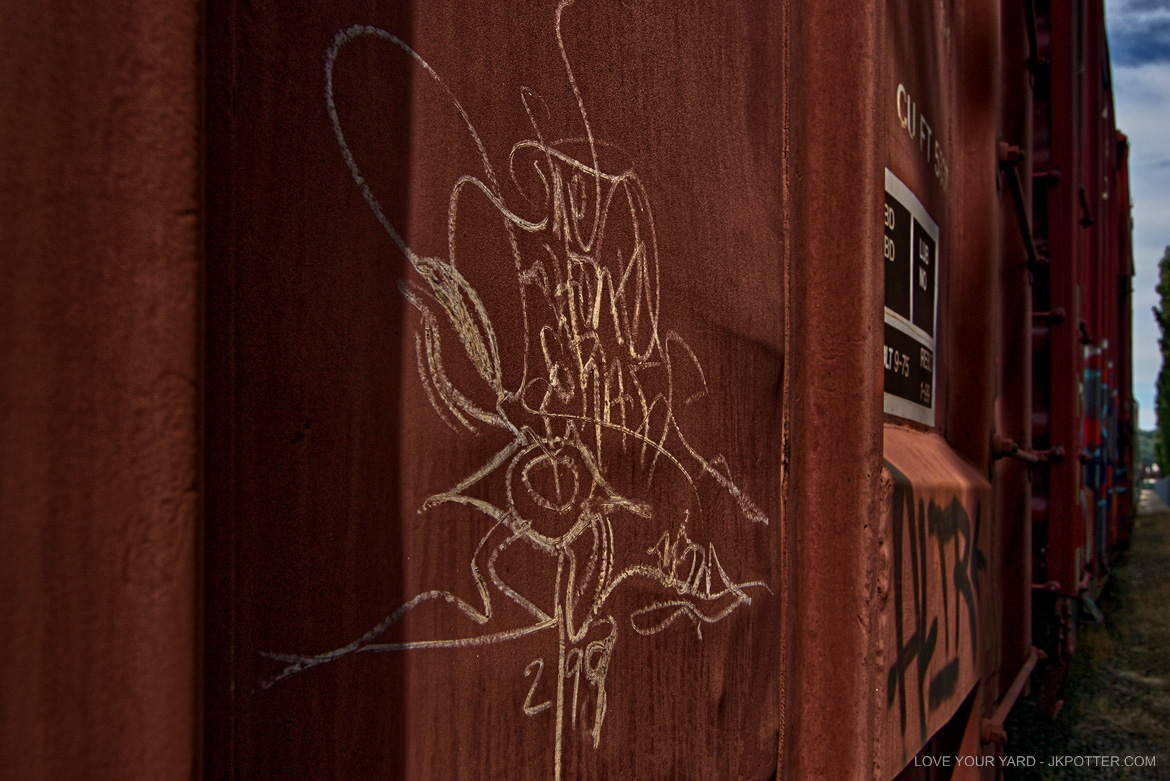
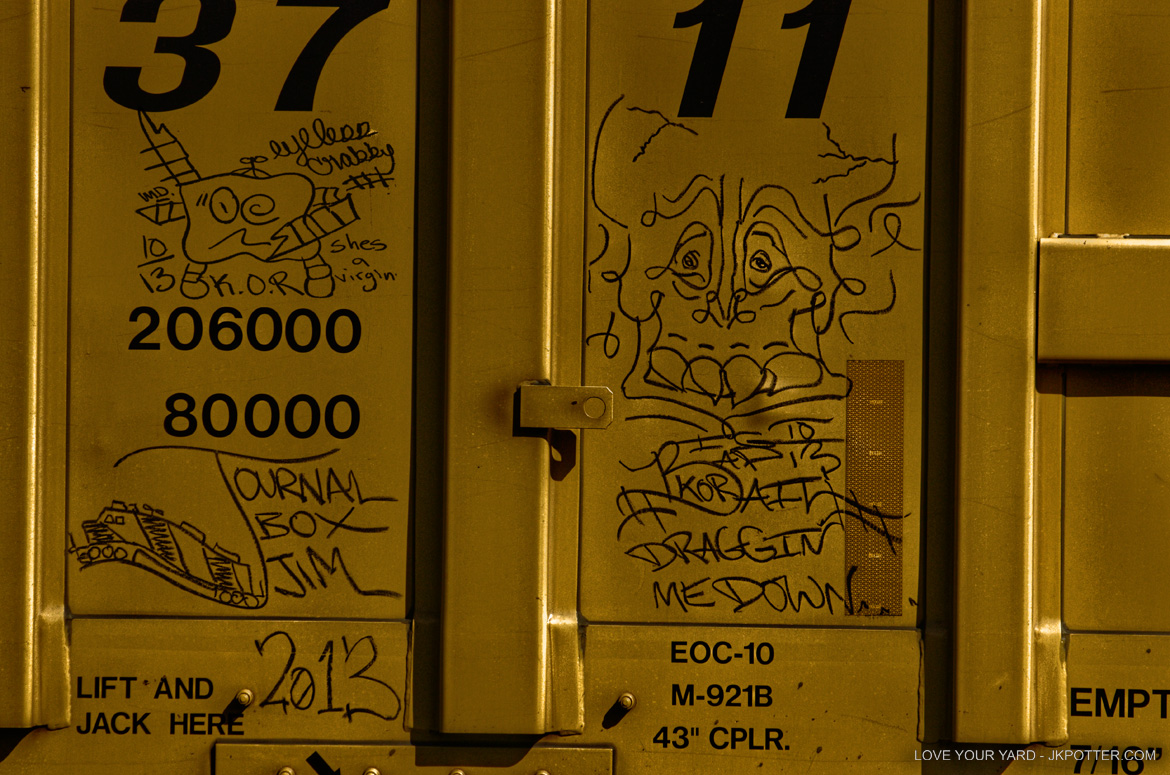

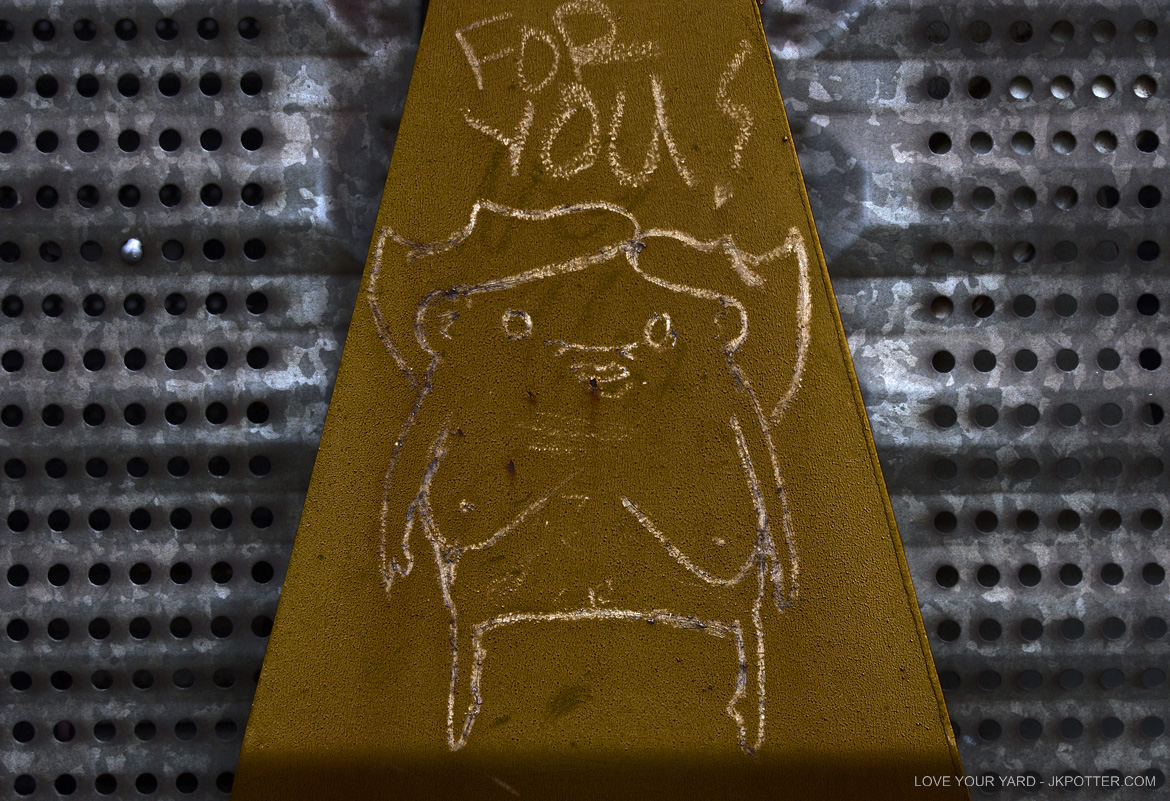
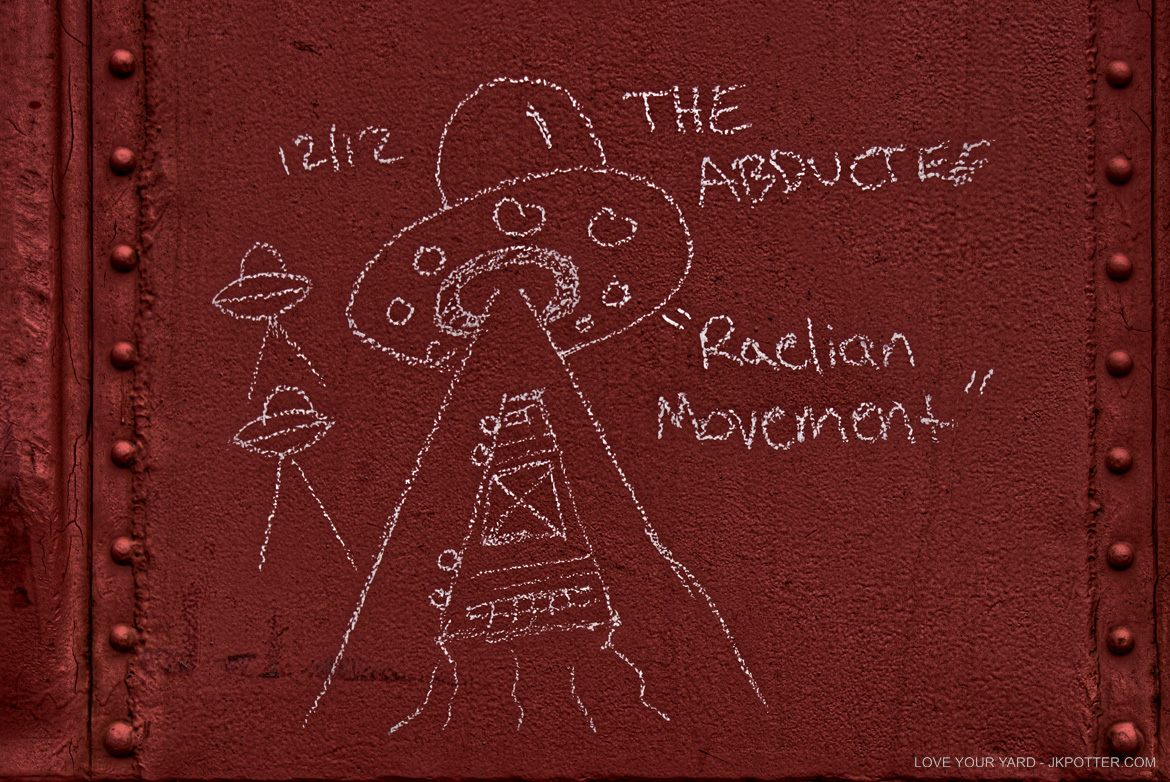
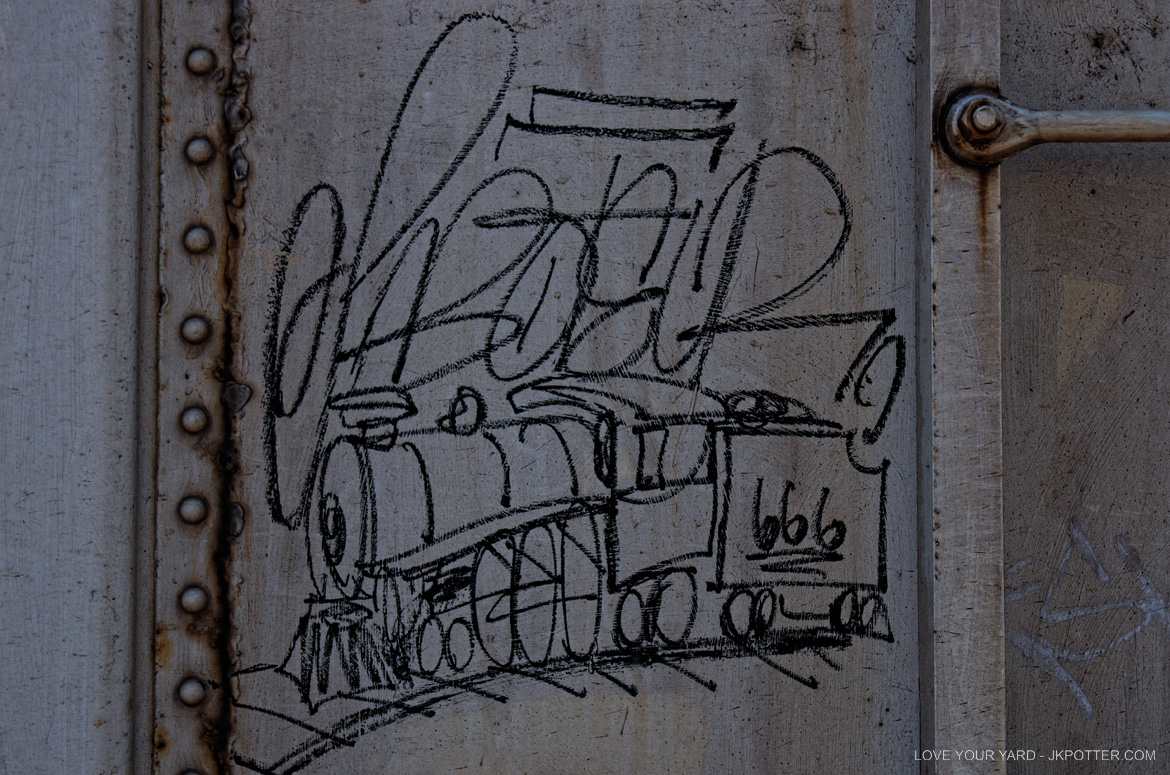
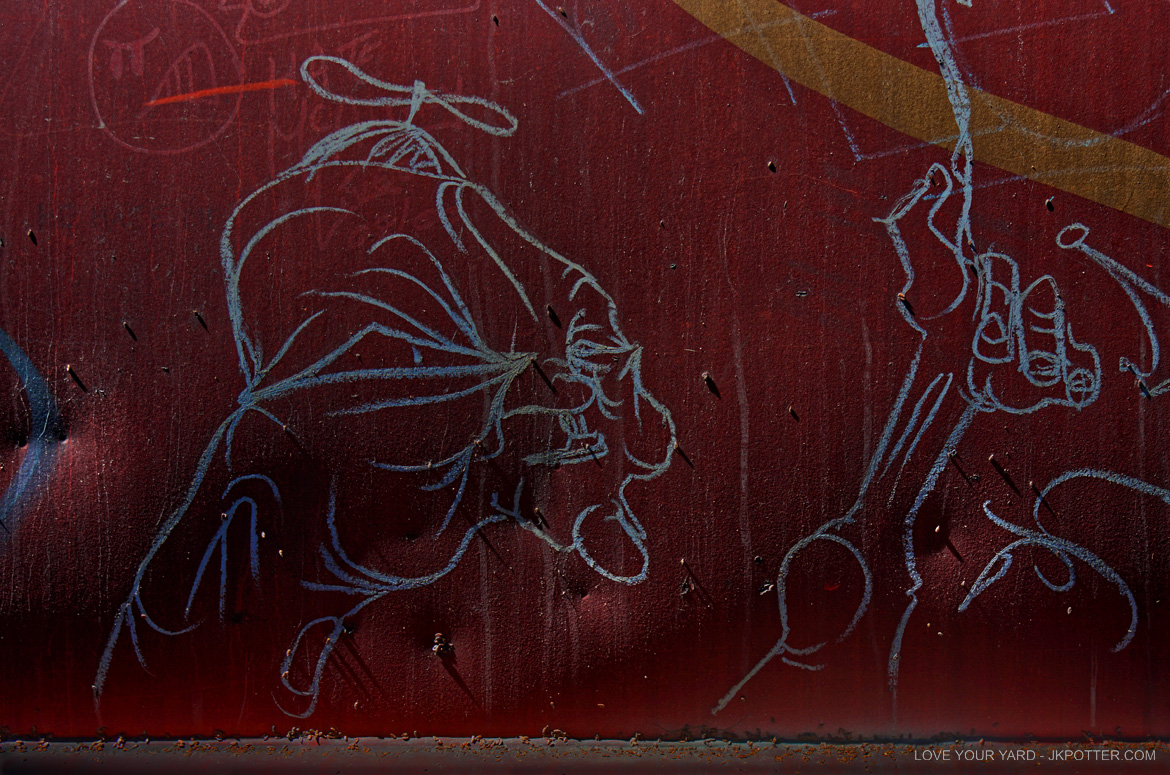
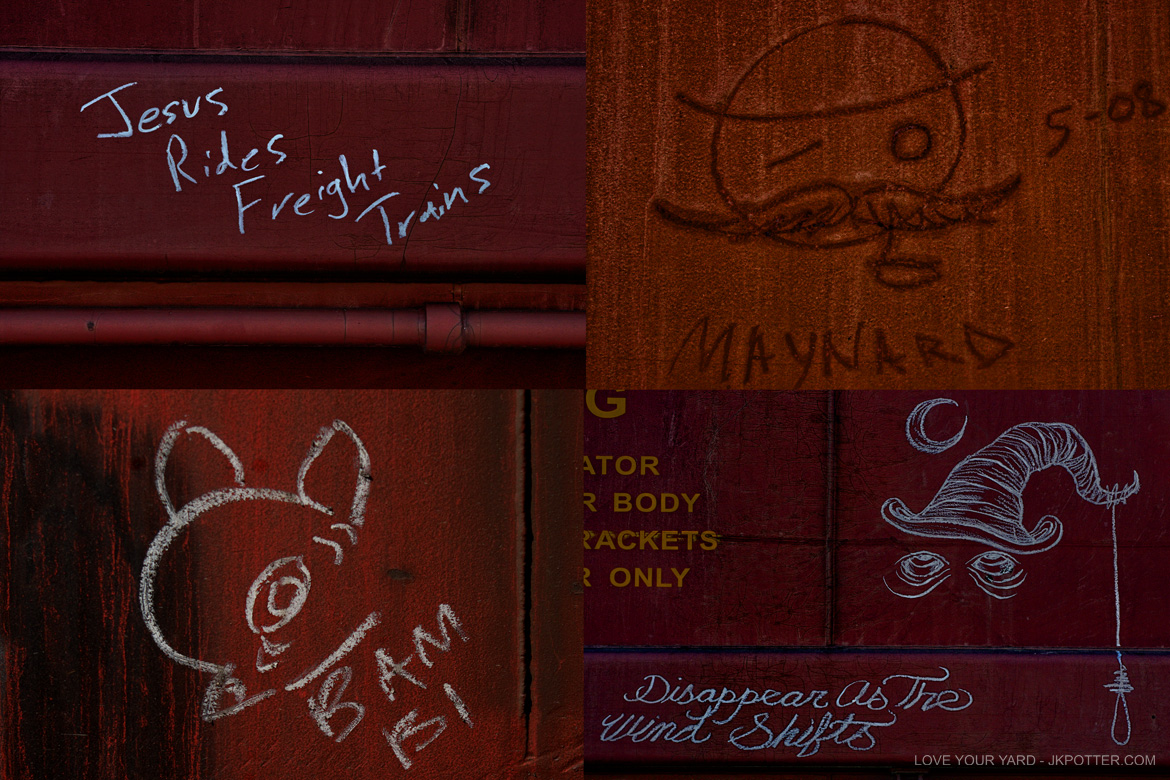
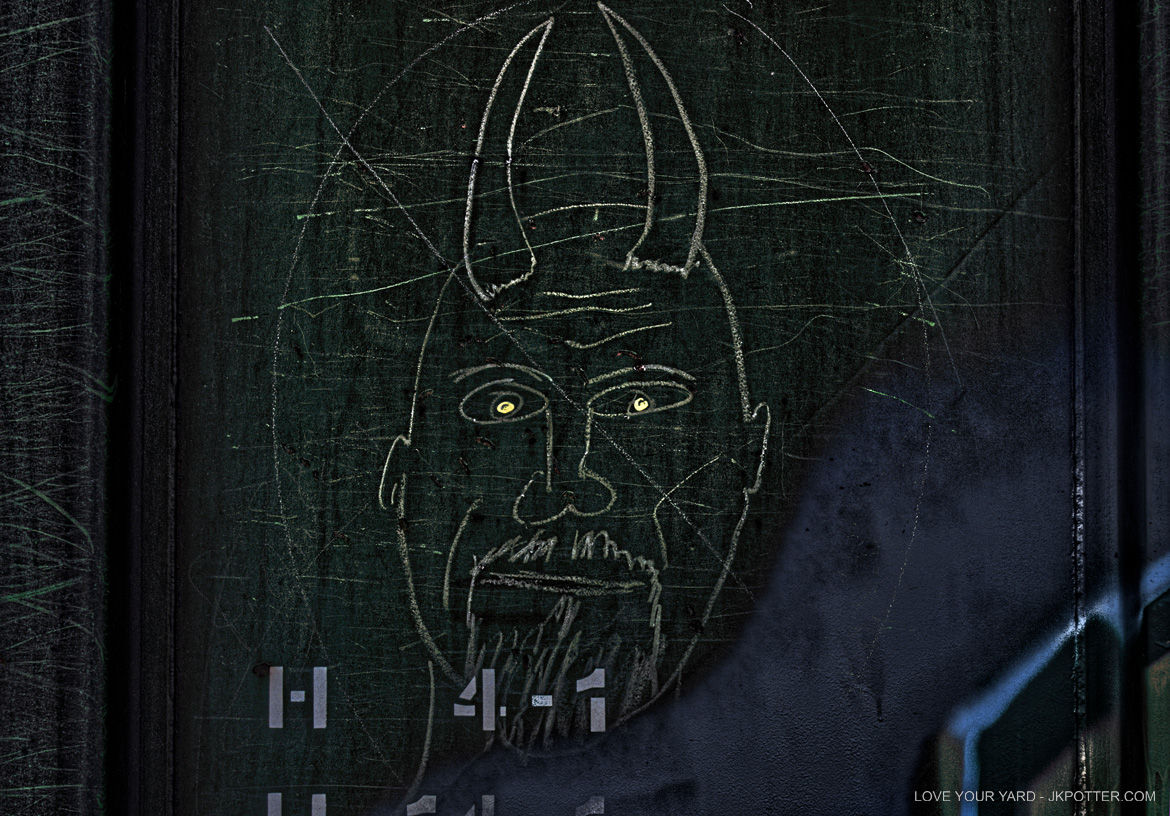
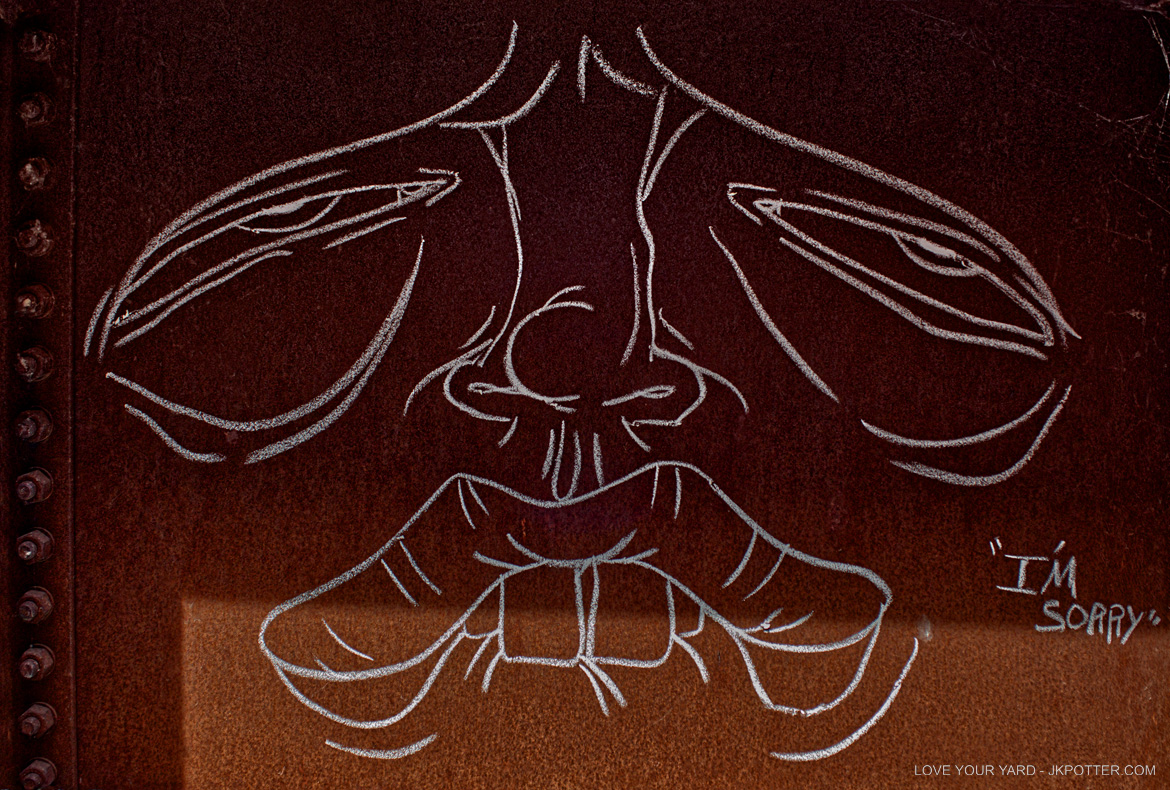

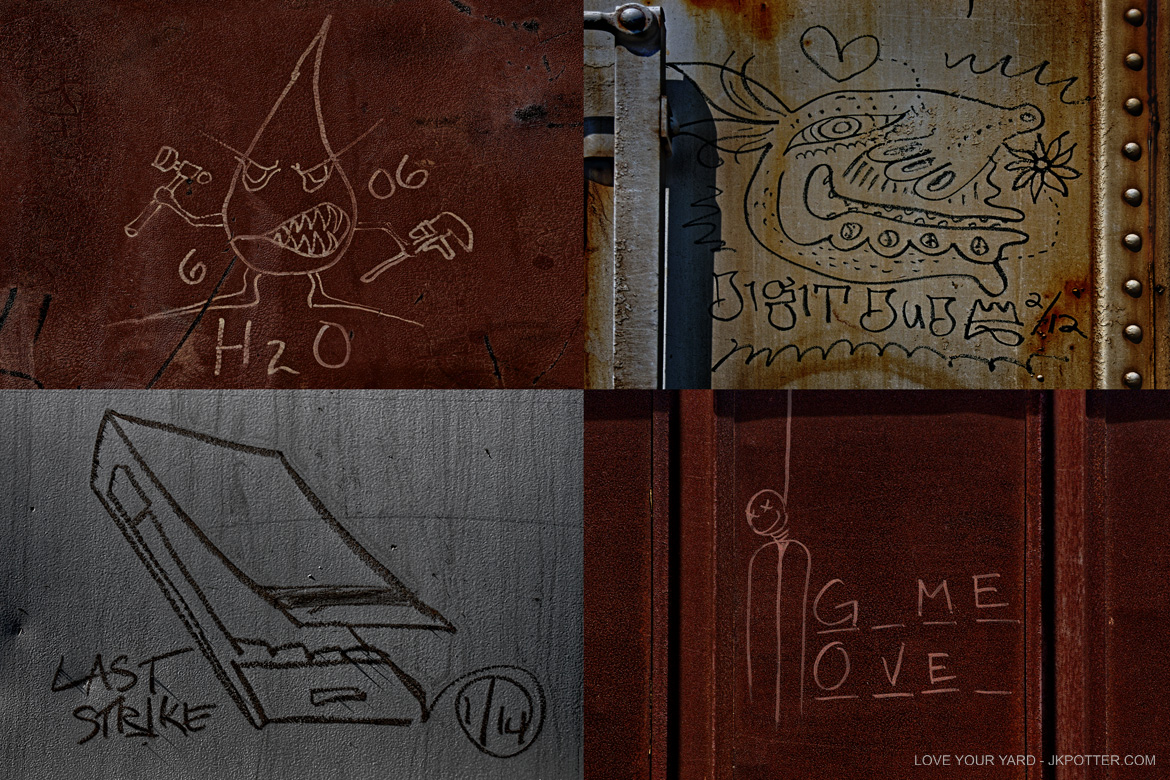
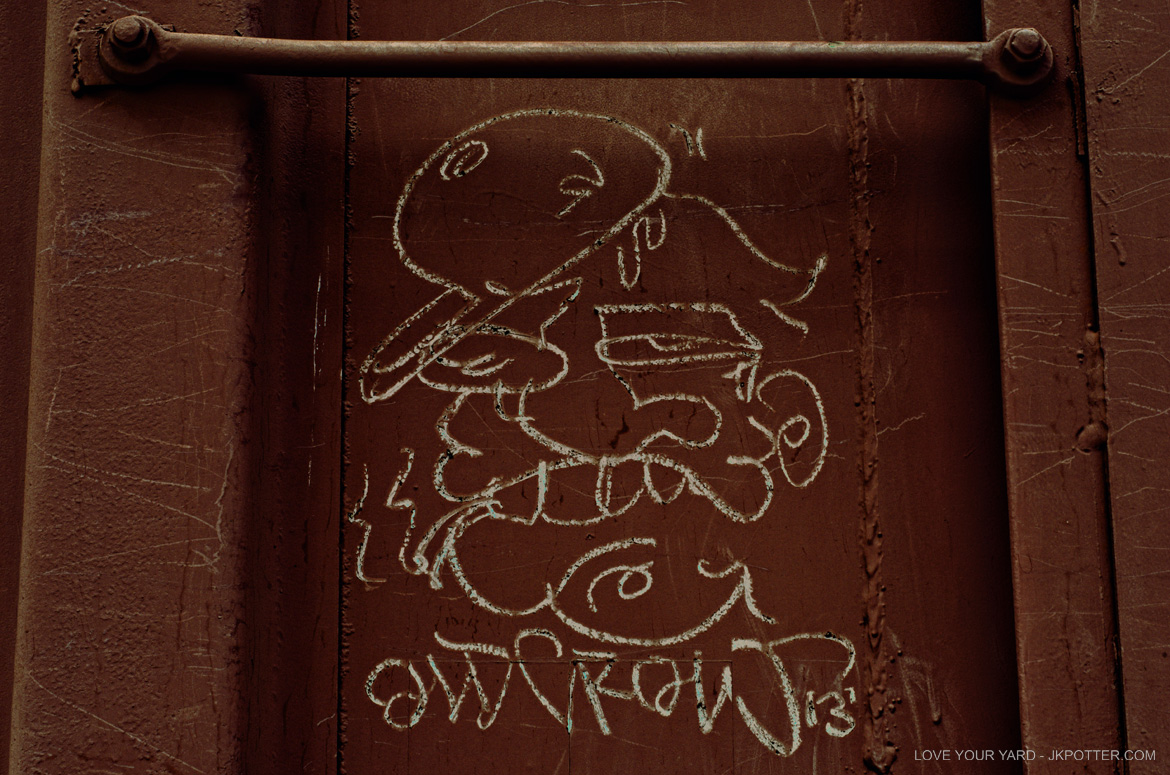
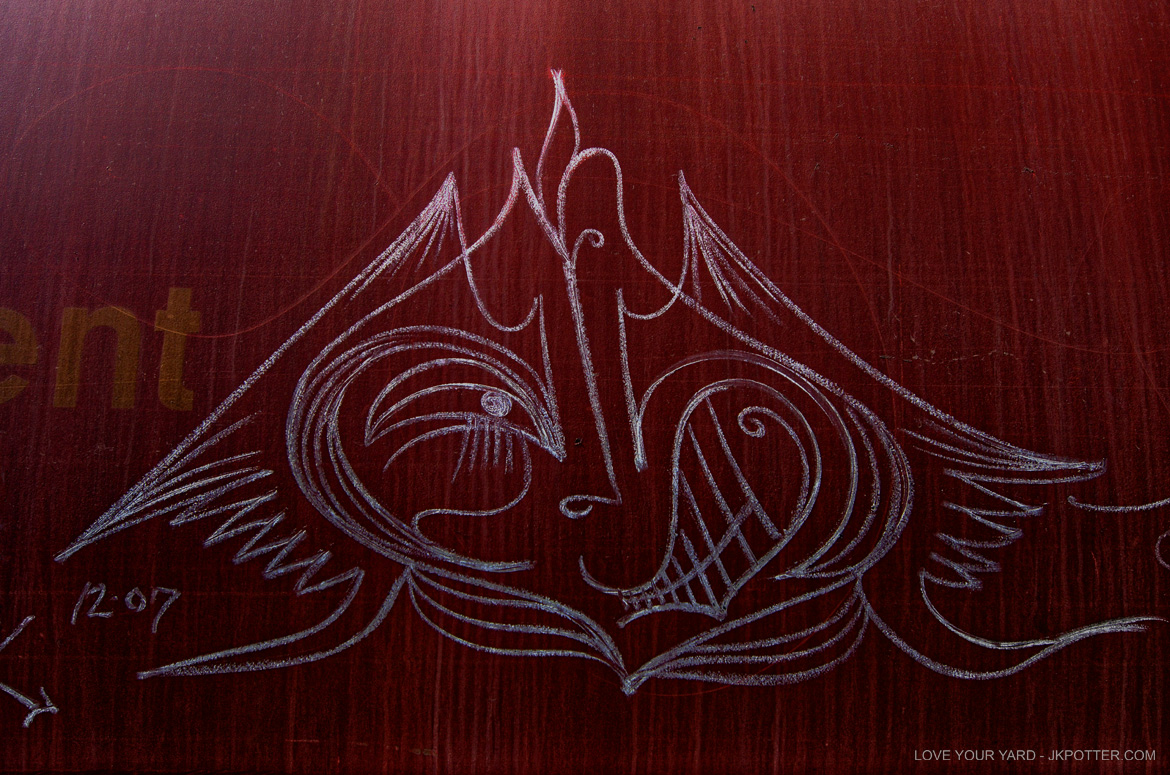
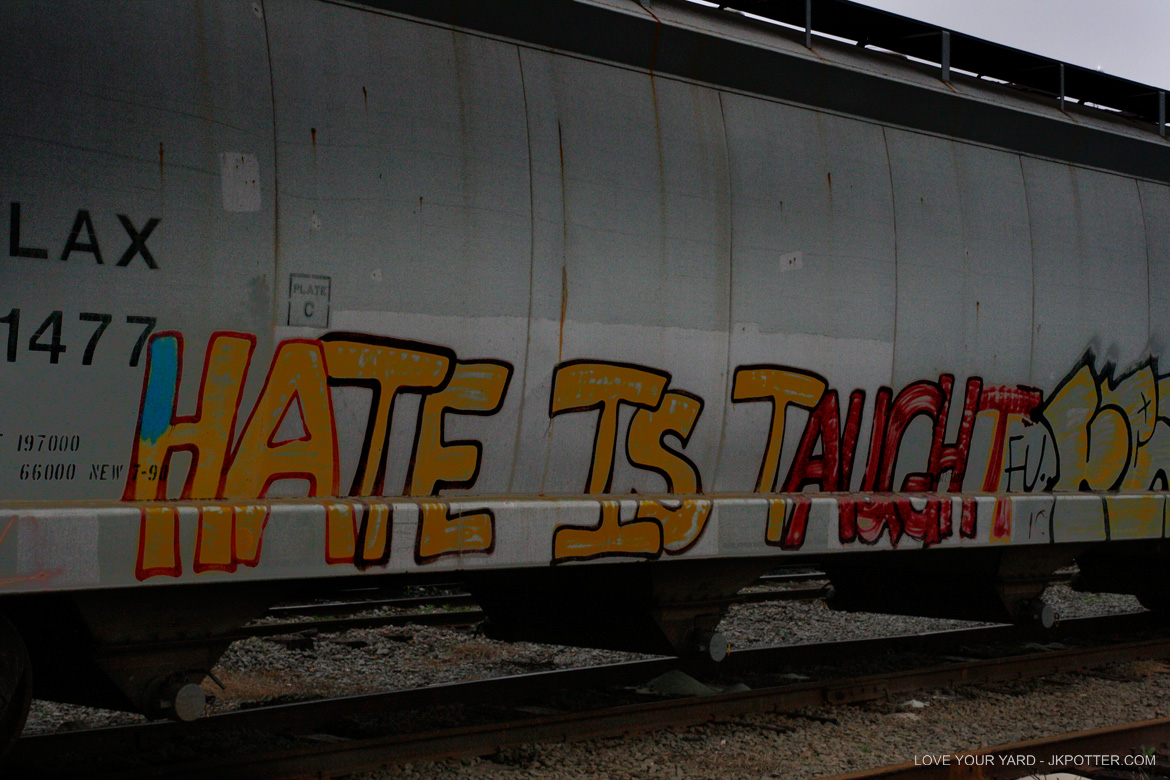

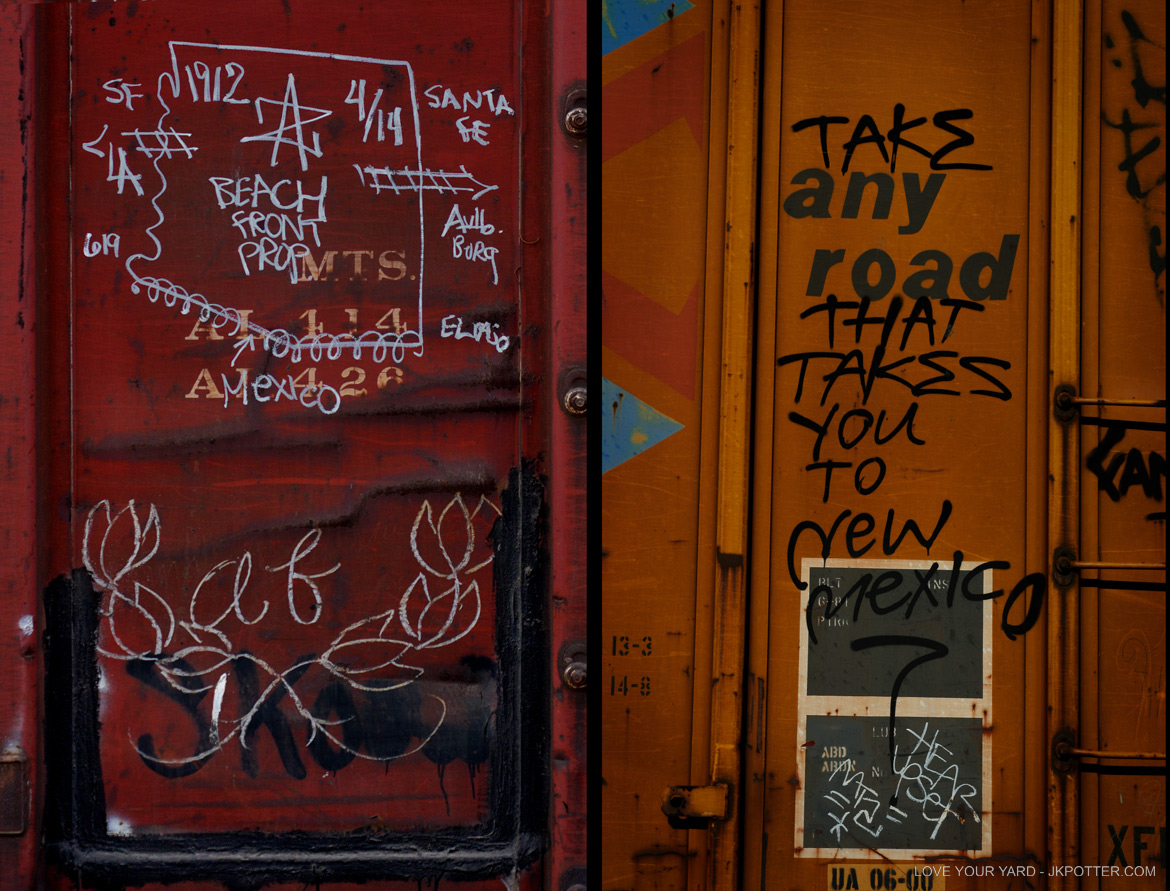
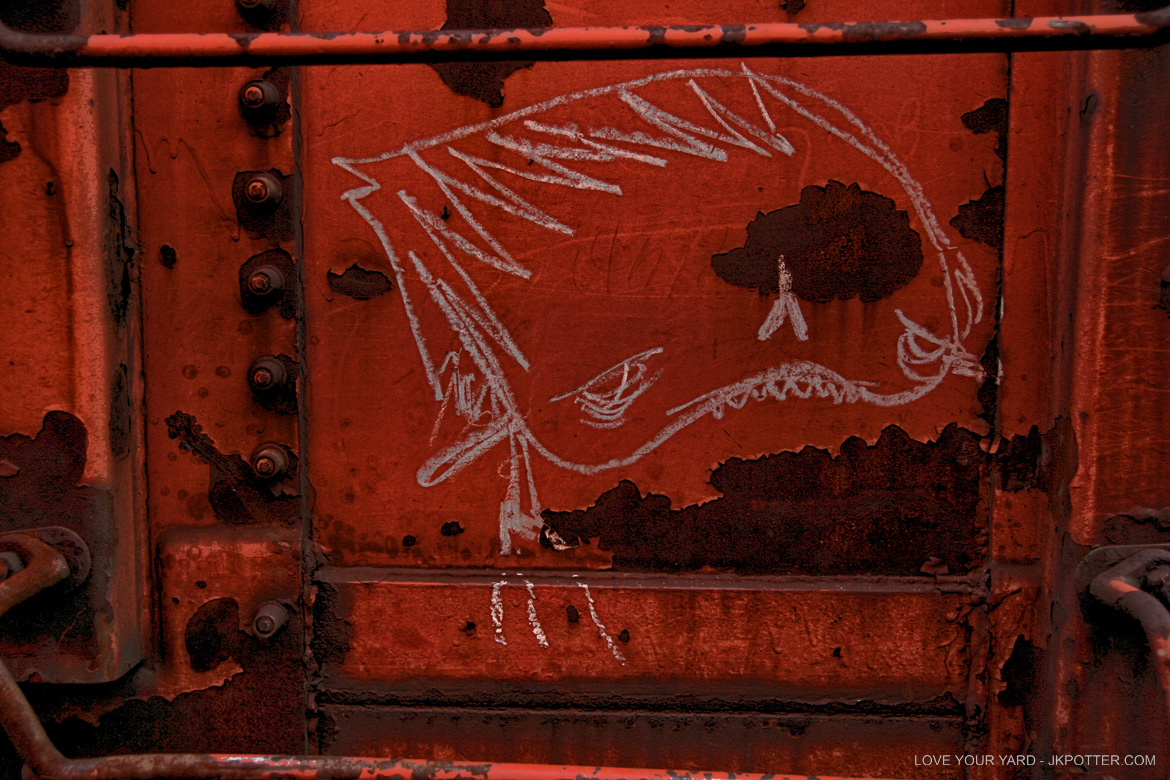
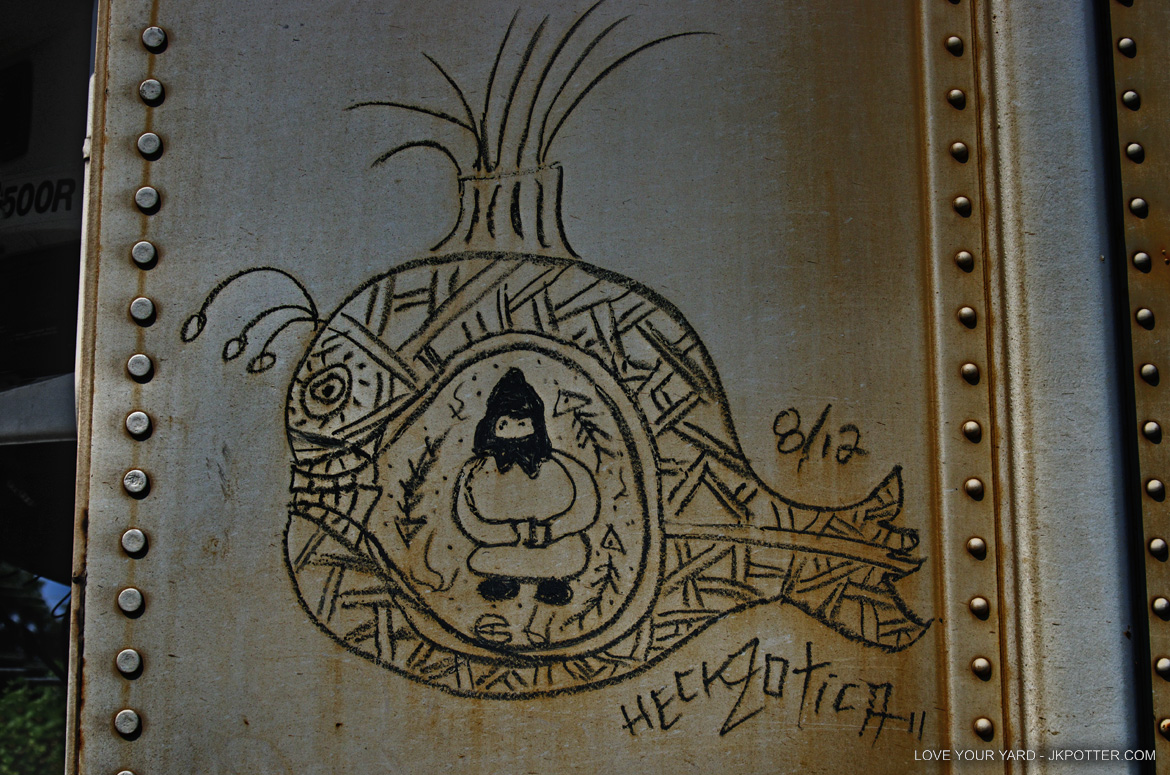
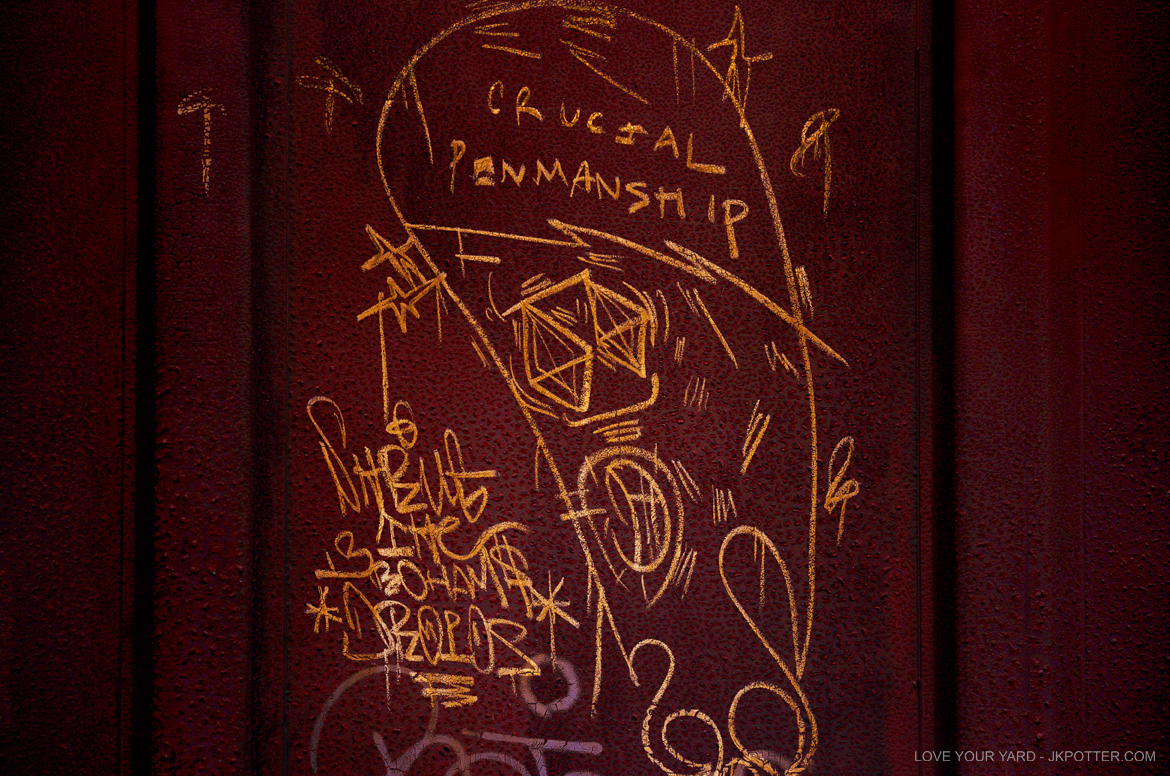
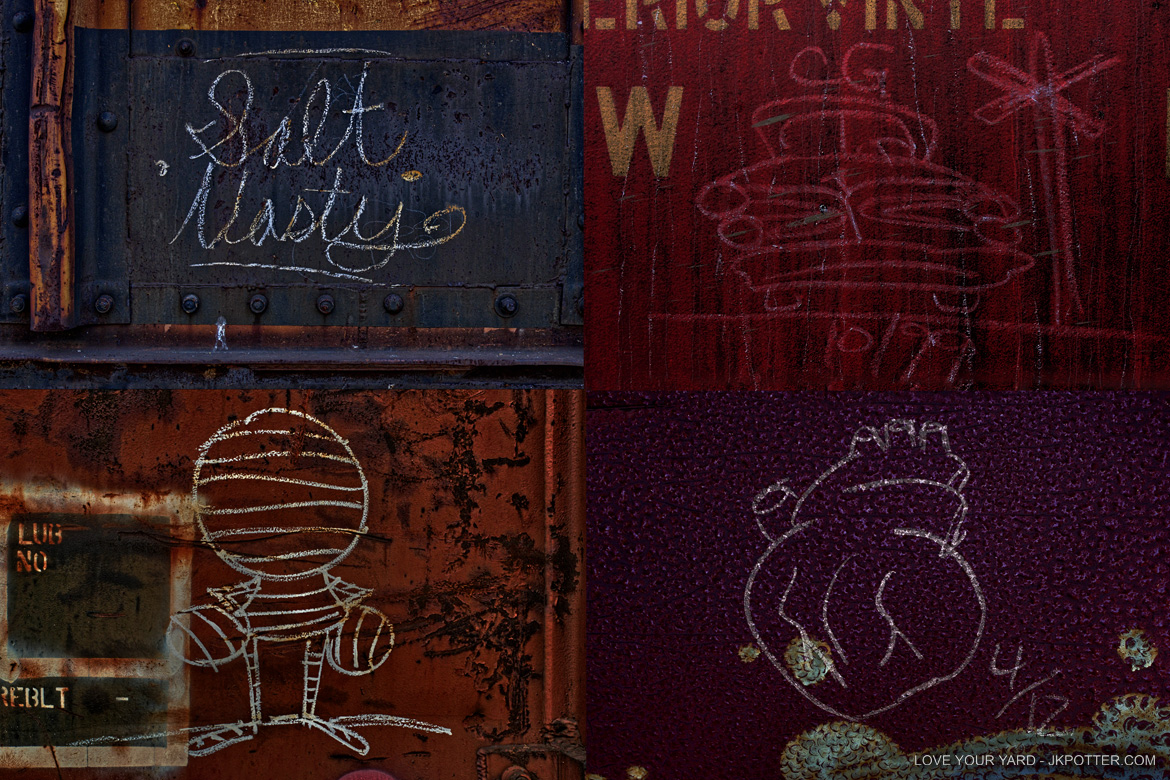
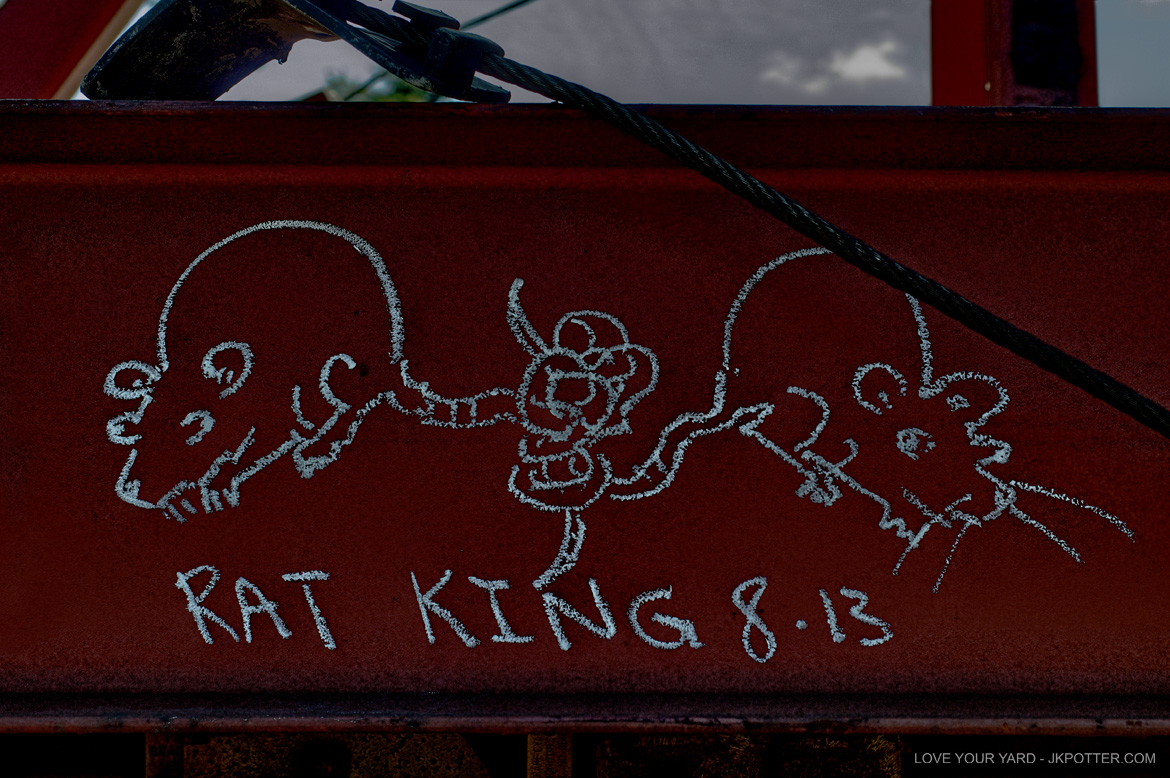
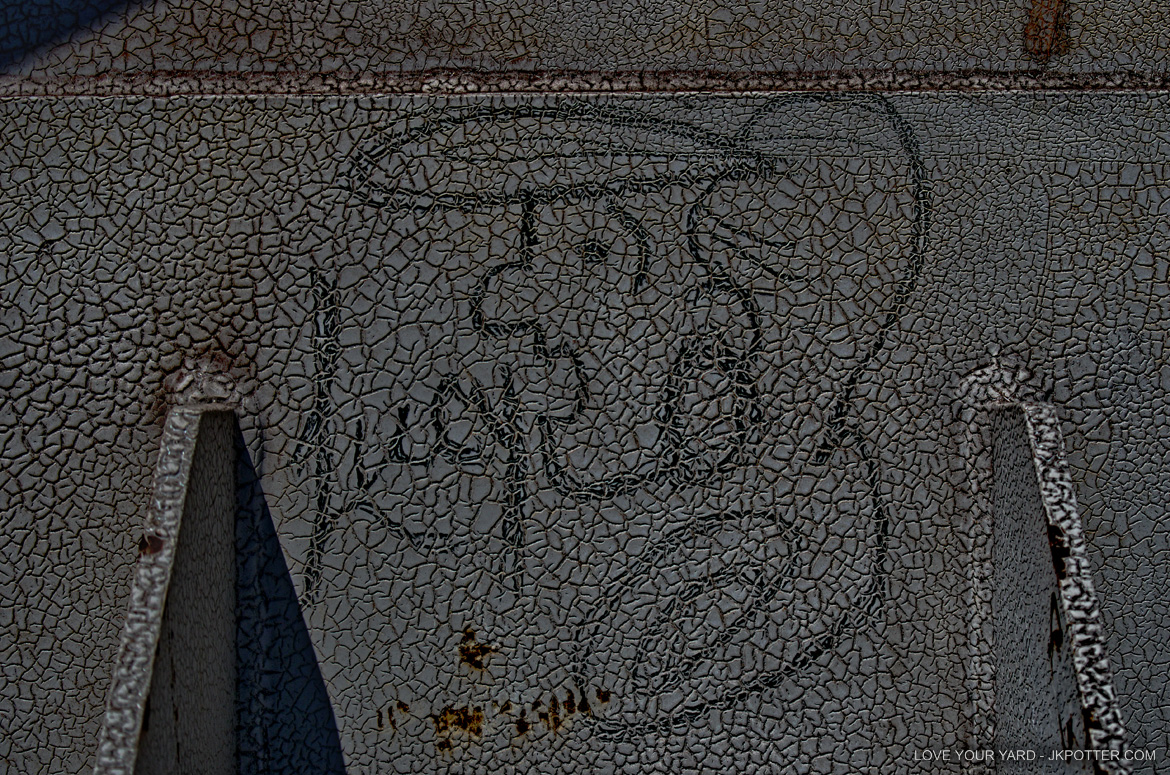
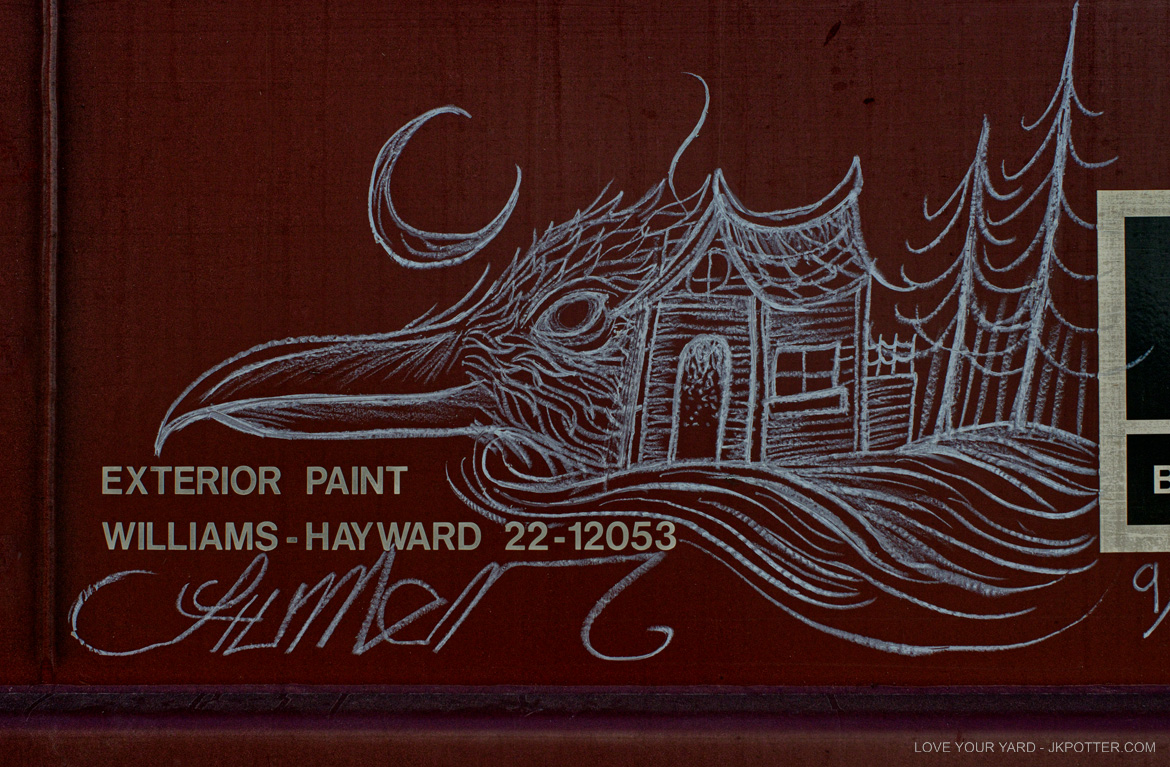
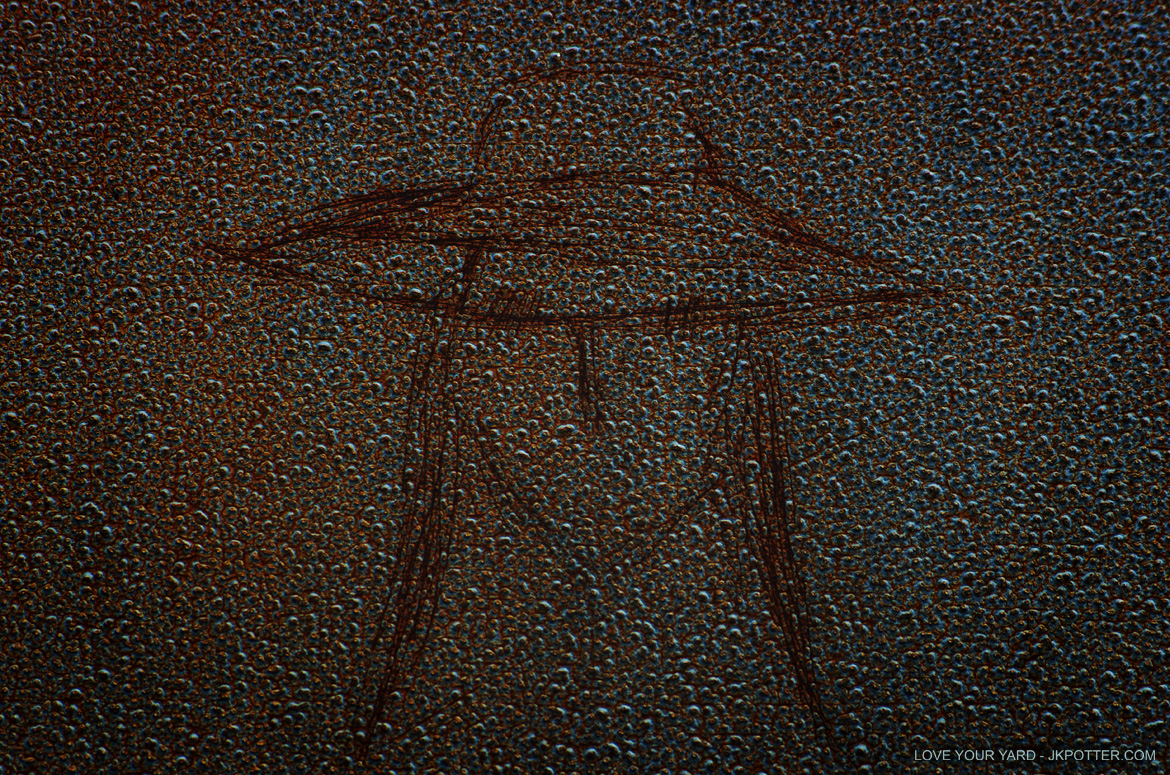
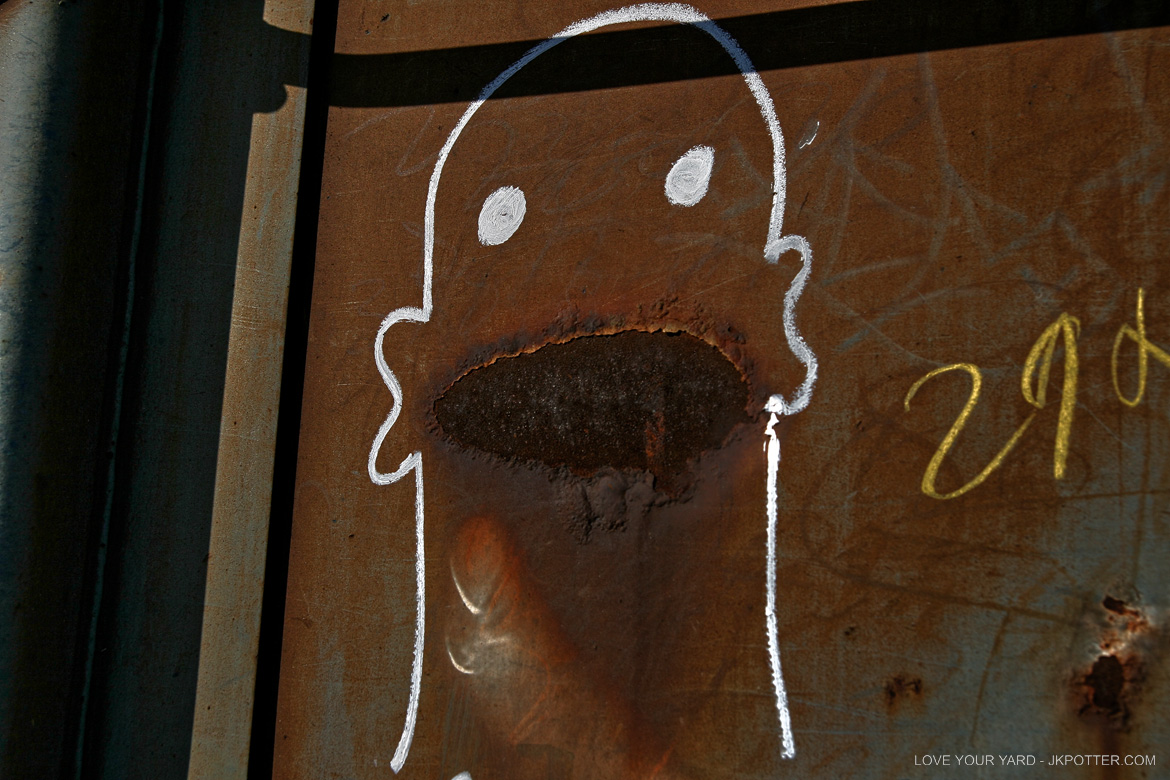
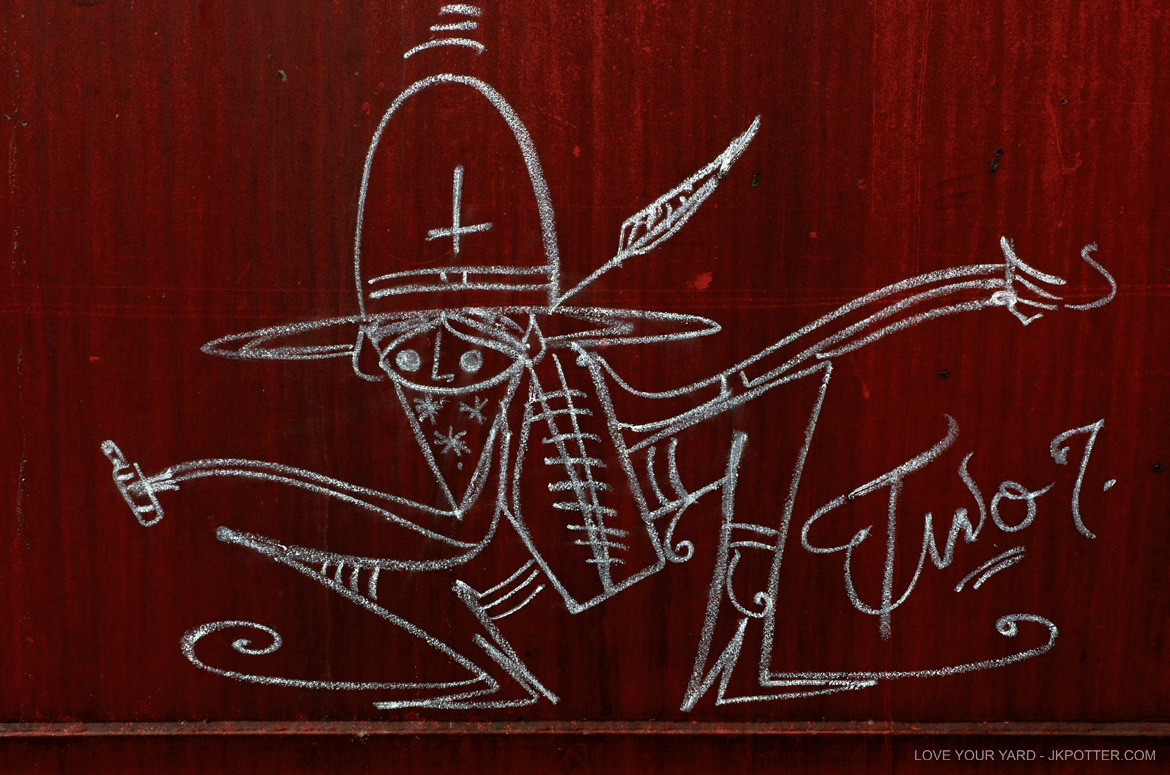
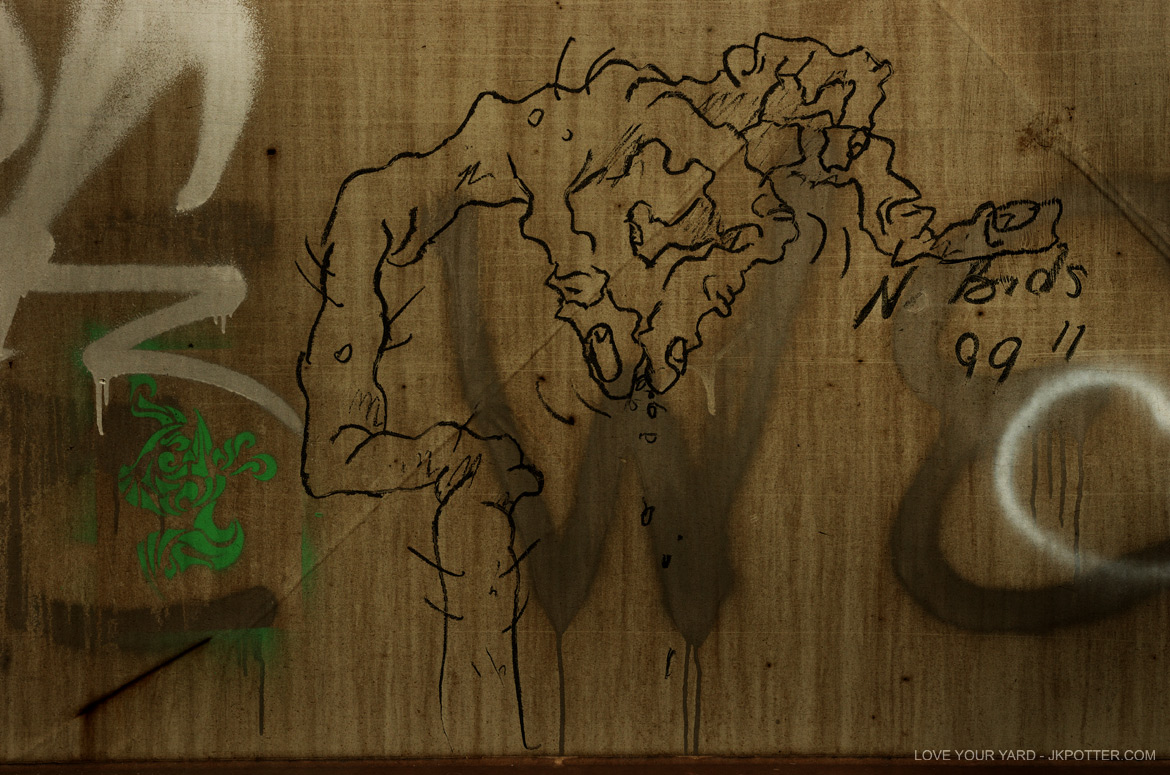
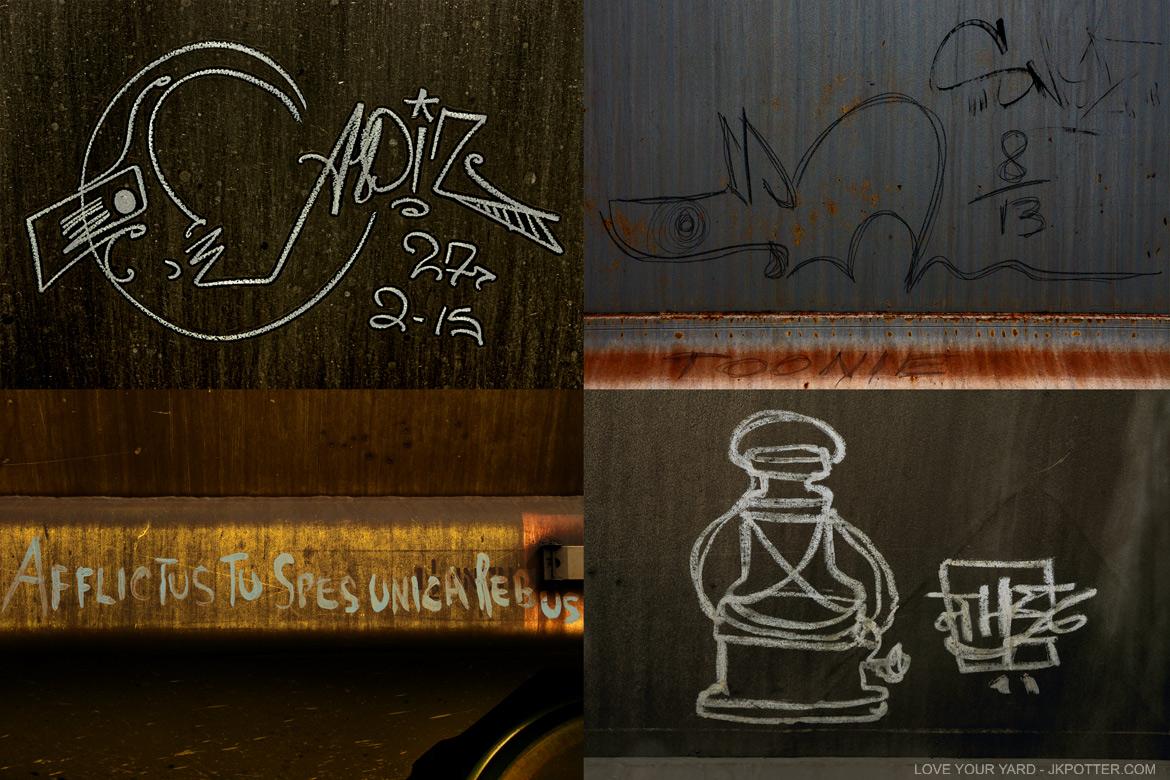
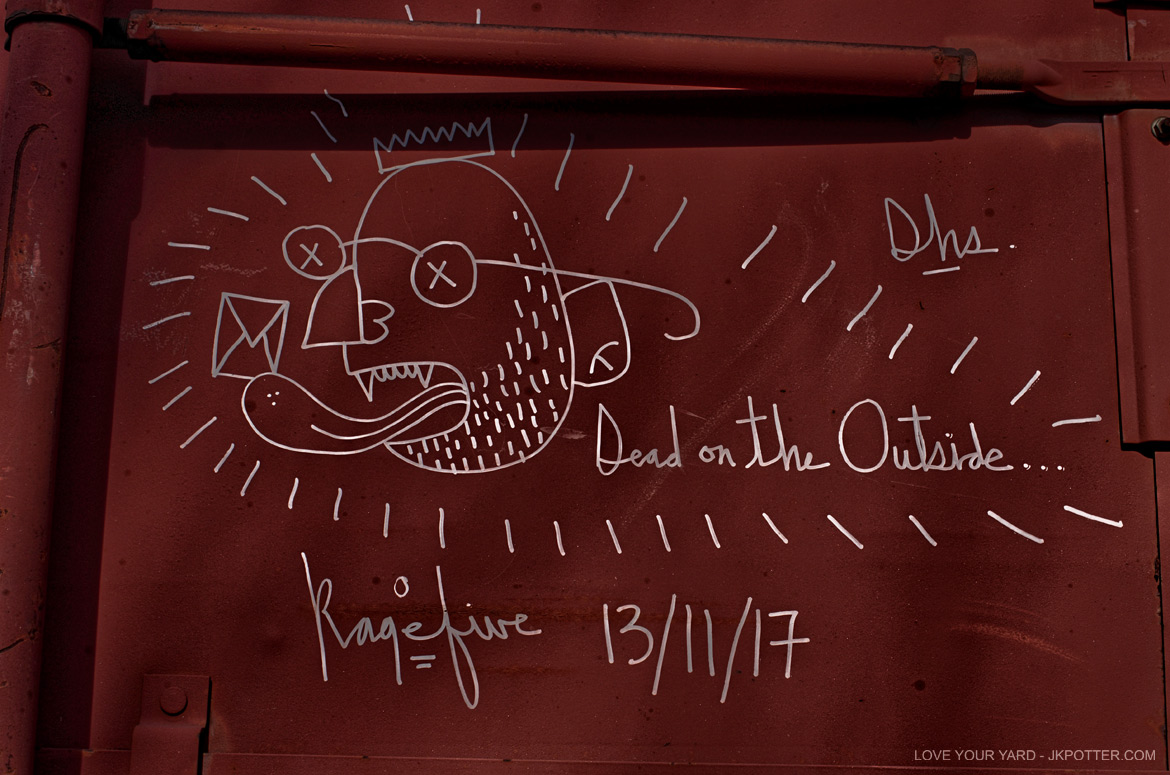


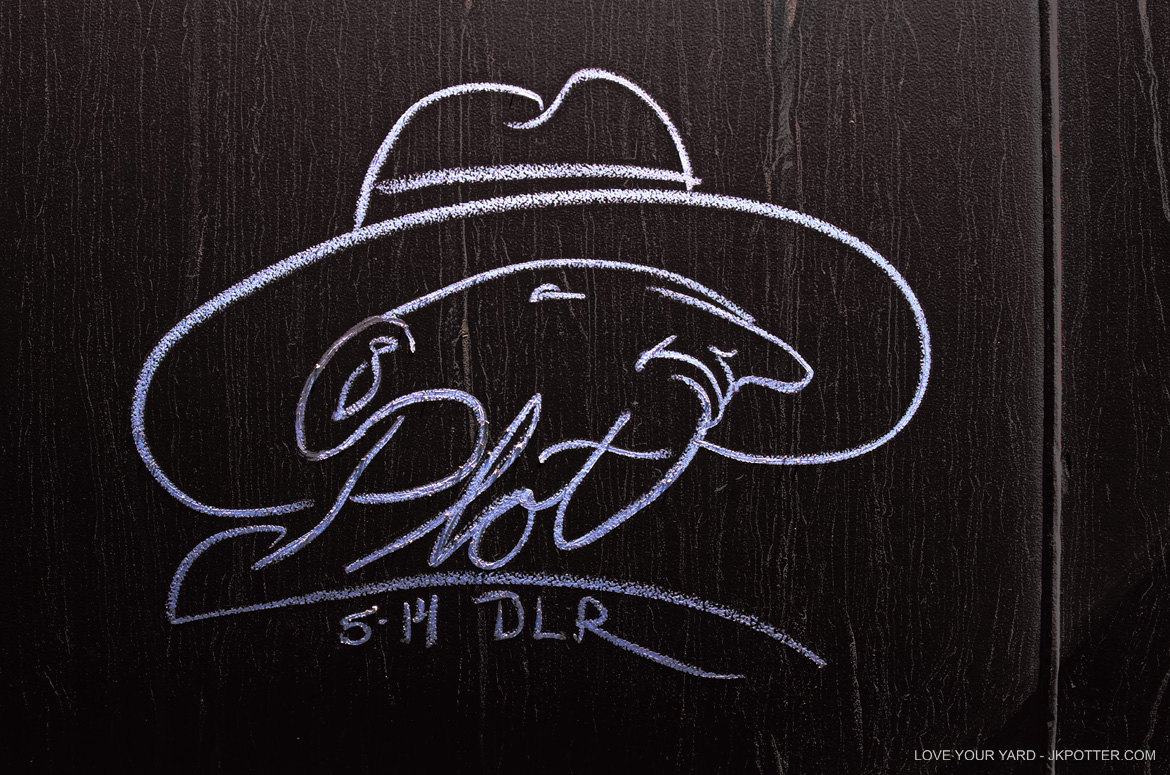
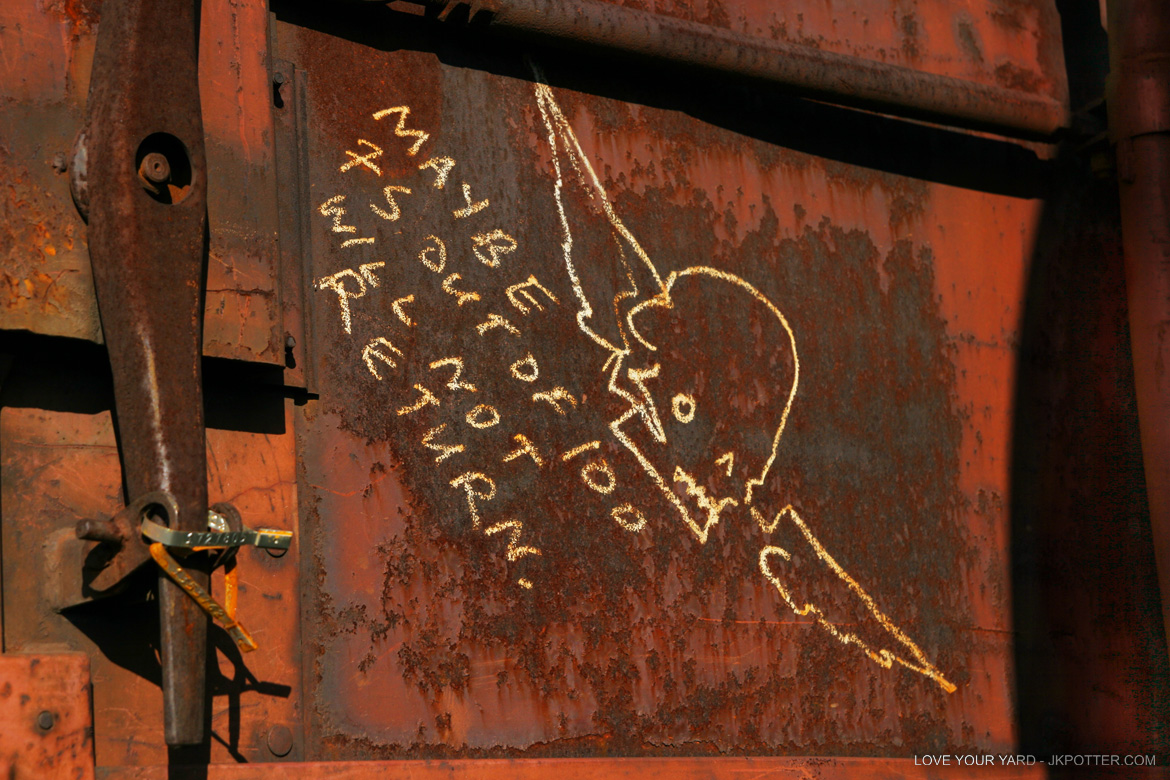
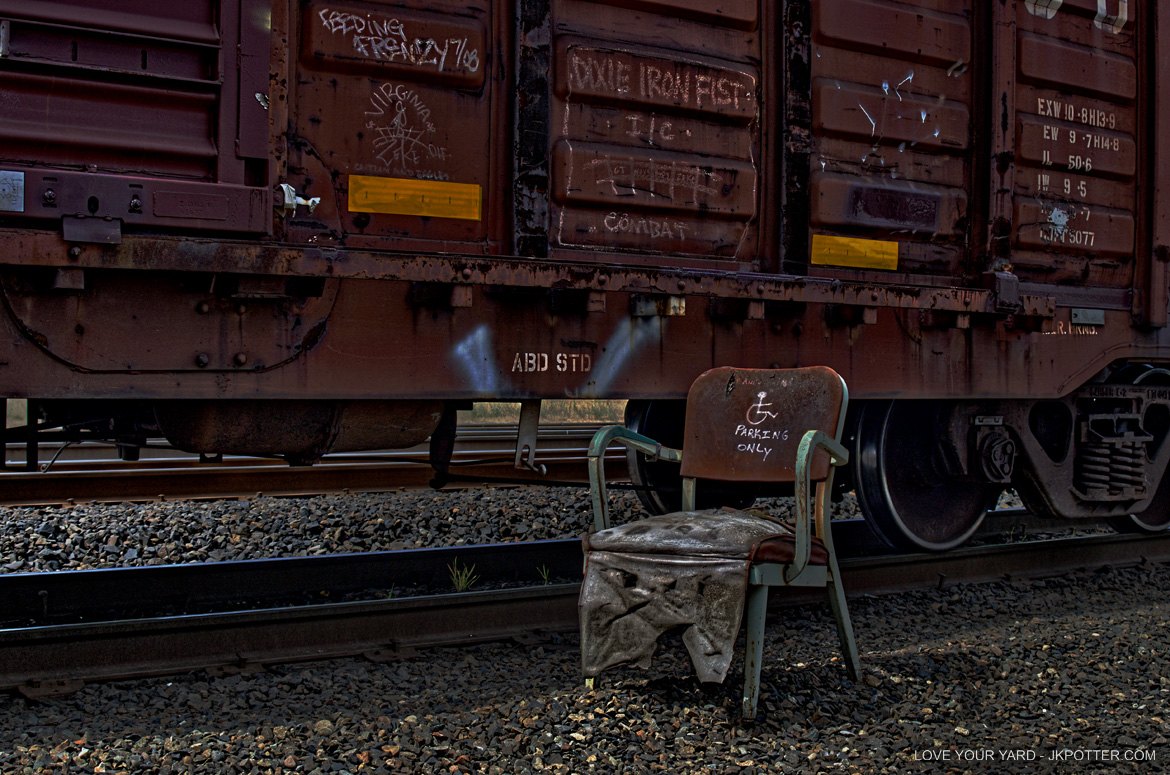


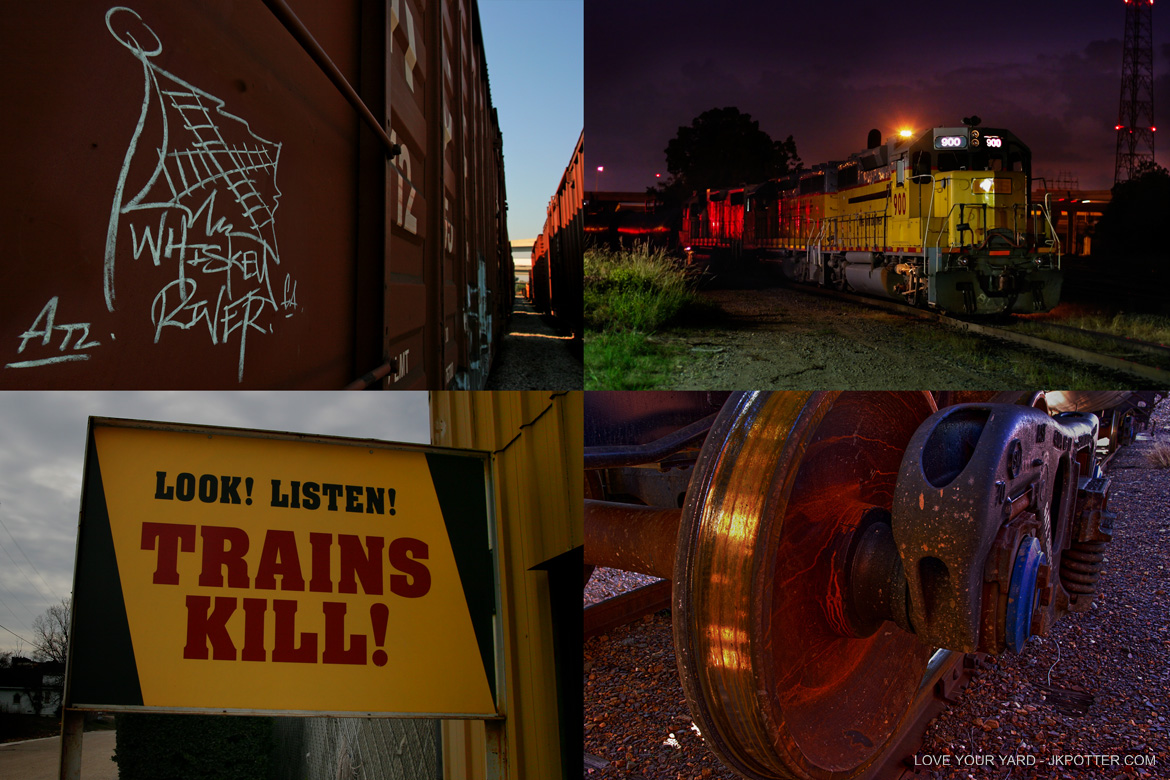
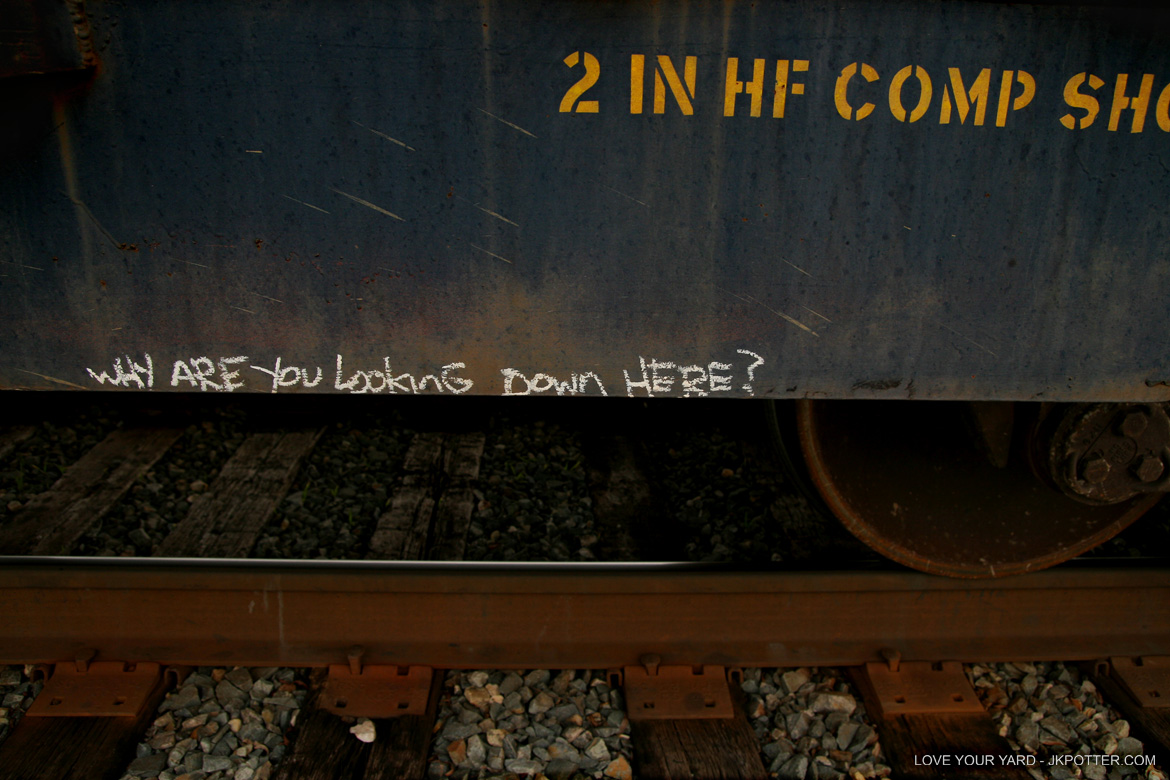

He rides a rail with smoke for his tail
Red diesel blood steel entrails…
Love Your Yard is part of my art collection. Even as a boy I was fascinated by rail graffiti and train tags, but it was in 2006 when I found myself stranded in North Louisiana that they became my salvation. Isolated, bored shitless, and art-starved to the point of famine I searched the rails for alternative art, philosophy, and humor. Trains brought all this to me, and more. Most importantly they changed frequently and the entertainment came at no charge. This was not a passive hobby. I had to walk countless miles of gravel and brush, usually in the summer heat, to find what I was looking for. The local art scene, in the mid-sized southern city I was stranded in, had it’s moments but was nowhere near a complete diet. Galleries showcasing yet another genius hold little appeal for me. Everybody seems to be a so-called genius these days. Some of the wisest words I’ve ever seen written on a freight train are, “I’m special because I know I’m not.” So I can’t help but compare neatly framed gallery art with the exposed dented steel that is the canvas of Railart. Does anybody who draws on a train or dumpster expect to be paid for it? Does the average yard-bomber secretly yearn for museum exposure? Not many do, I suspect. People who sign their names to trains do expect a measure of fame for their efforts, even if it’s only territorial pissings of a Kilroy-was-here variety, but with steel rails as the medium for national exposure it falls far short of what your average star-struck fame junkie dreams of.
Drawing on trains is illegal, and as you can imagine, the railroads dislike having their property messed with. There are many people who absolutely hate all graffiti. They consider it to be sort of a gateway drug that inevitably leads to lawlessness, anarchy, and the apocalypse. Since graffiti can sometimes be butt-ugly and badly placed, even I object to some of it, but I consider the good stuff to be more of a creative release valve than an apocalyptic gateway drug. Graffiti erupts from the deepest subcultures and is the crucible of new art styles. The spirit of the great underground comic artists of my youth lives on in today’s railart. The romantic image of outlaw cartoonists drawing on cold metal in the dead of night is hard to shake off. But one man’s art can be another man’s vandalism. I once had to scrub graffiti off the brick walls of a photolab I was employed at. I had to use a caustic solution with a wire brush. It was not a pleasant experience.
Like many Railfans I collect tags and I have photographed thousands of them. Love Your Yard is a selection of my favorites. These photographs merely document my observations and bear little resemblance to my other works. Some of my files have been tweaked to bring out texture and color, and yes, I have fudged a few small things, but there are none of my own drawings represented here. I have never tagged a train in my life. Over time I have developed a great respect for trains seeing first hand exactly how dangerous they can be. Despite the title of this series, most of my photos were taken on rural sidings because modern trainyards have remote control locomotives that can power up and start moving without any engineer present. But the truth is, any train can silently cut you in half without warning. Train accidents involving pedestrians are up 25% in 2014 and are usually caused by poor judgement. As a railroad employee once yelled at me, “I know you are just taking pictures but that’s a live train and if you get killed it’s all on you.”
My primary interest is in the tags and drawings made with lumber crayon rather than spray-paint, though sometimes the spray-painted designs are too impressive to ignore. The crayon images are usually drawn by hobos, freight riders, renegade artists, and even switchyard workers. The wax based crayons are a wonderful medium melting and caking in relief on metal surfaces. Rained-on dirt, corrosion, and stains from leaking chemical cars can form interesting patterns flowing around the crayon. Gradually the wax wears away leaving ghostly traces in the grime that can be hard to see. Background surfaces are as interesting as the drawings to me. I often pass by a familiar tag many times before finding one with the right background. Sometimes rust, peeling paint, and machine-forms combine to create readymade abstract art. Graffiti is optional. Cracked numbers and faded sun-baked letters bring out my inner Aaron Siskind. Familiar boxcar jargon like “load limit” and “lift, jack and pull here” become appropriate captions. Drawings made in the dirt or scratched in metal with a coin, key, or penknife are the best. The more primitive the better. Art Brut rules over more calculated and self-conscious styles, but in the end I like variety.
Railfans are quick to point out that my Bozo Texino’s and Herby’s are not originals. This is true, but what impresses me is that there are people who work to keep these iconic cultural symbols alive long after their originators are dead. A few of these copies look so close to the originals that they give me the jeebies. How can a Herby dated 4 years after his death be so perfect? Maybe, there really are ghosts riding through the heartland tagging trains with invisible fingers in the dead of night. Towards the end of this series I photographed a long train where every tag was dated 2007. Not one tag I saw was dated before or since. This baffled the hell out of me. Box cars get shuffled around like a deck of cards so it seemed impossible to encounter such a long string of perfect sevens. Was this train moth-balled somewhere and then just recently brought back into service? Every explanation I could think of seemed unlikely. My friends assure me that there has to be a simple rational reason for the 07 train, but I prefer to take the advice of the Colossus of Roads to “Practice Non-certainty.” There are many irrational mysteries to be thankful for.
This project was originally designed to be a published as a book with text by Lucius Shepard. Unfortunately Lucius passed away before the series was completed. I dedicate Love Your Yard to his memory. —Jeff Knight Potter
